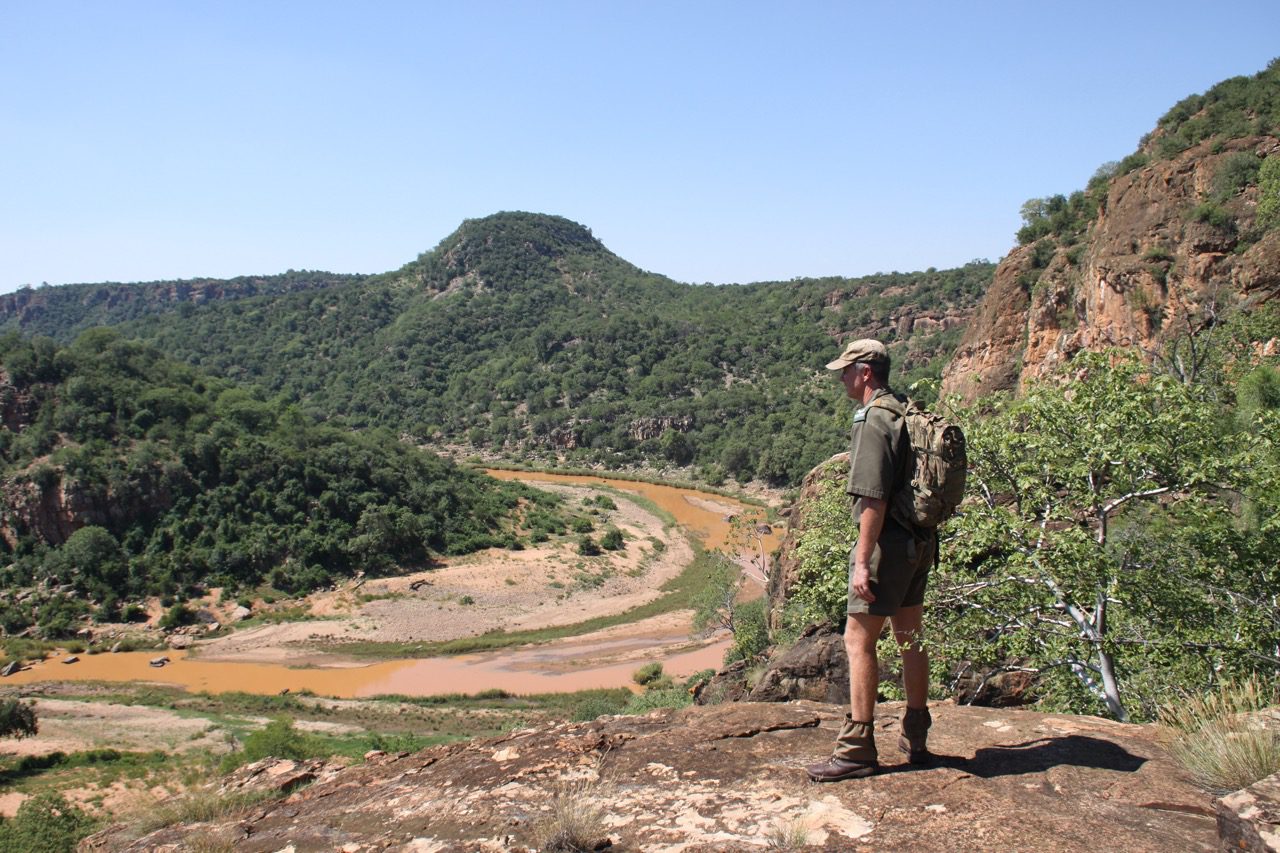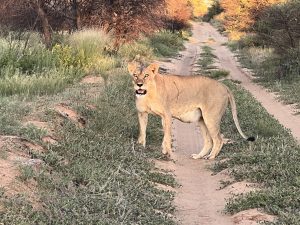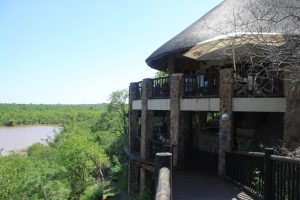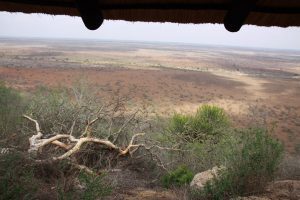🙂 Discovering the North! Fossilised dinosaur eggs!
🙁 Intense Heat!
This was one of the best trips we have ever undertaken. Largely this was due to the incredible guiding skills of the late Jaco Buys – A Bother From Another Mother – as he and Paul fondly joked. Vannessa added to the highly educational spect of the trip with her knowledge of the geology and cultural sites. We had all three our children as well as Yvonne and Al and Warren, making it perfect company for the perfect 8 days in our perfect place.
DAY 1: Thursday 31st March 2016: Phalaborwa Gate to Mopani
After an early night at our hotel at O. Tambo we were up at 7am and very excited to meet Trent and our friends Warren, Al and Yvonne. Unfortunately all their flights were delayed so we enjoyed breakfast at Spur while waiting for them. Trent arrived first and was very stressed as he had left his wallet in the front pocket of his seat but it had not been found…he cancelled his cards BUT luckily he was with his parents who could help him out with funds!! Warren arrived next and we made our way to the internal departures as Al and Yvonne were taking an earlier internal flight. We had not realised that there were direct flights to Phalaborwa!! DOH!
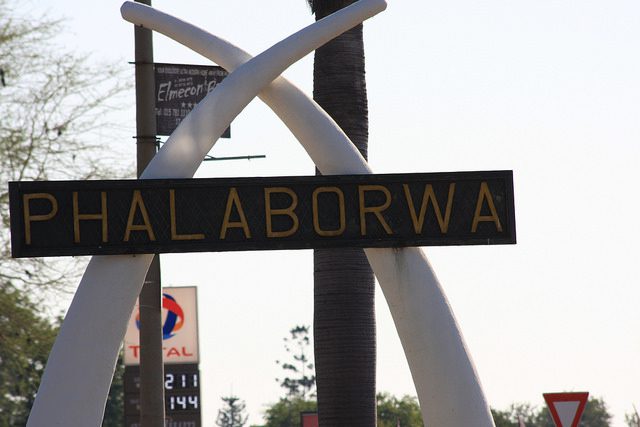
So we took a flight to Hoedspruit and were then transferred by mini bus to Phalaborwa where we were met by Jaco and Vanessa who were going to be our guides for the next 9 days. We met Jaco many years ago when he did a sunset drive and bush braai with us – he is such a knowledgeable and gifted guide – his passion for conservation and the bush exudes from every pore in his body and is highly contagious!! We have subsequently done many bush walks with him and this is where the seeds for this trip had been sown… In combination with our love for the bush and our interest in geology and archaeology we planned this special interest Kruger trip with the assistance of Vanessa who is the Interpretation Manager, Conservation Department and she is currently writing book on the diverse geological zones of the Park – a tiny petite little woman with the strength of an ox!! She was the first female ranger in the KNP and certainly knows how to handle herself and a weapon in the bush – we knew we would be in safe hands!! We were so excited that it had finally come together and that we were ready to set off! Yes!!! Back in beautiful Kruger – so looking forward to seeing the North of this stunning Park! We headed up the H14 towards Mopani.
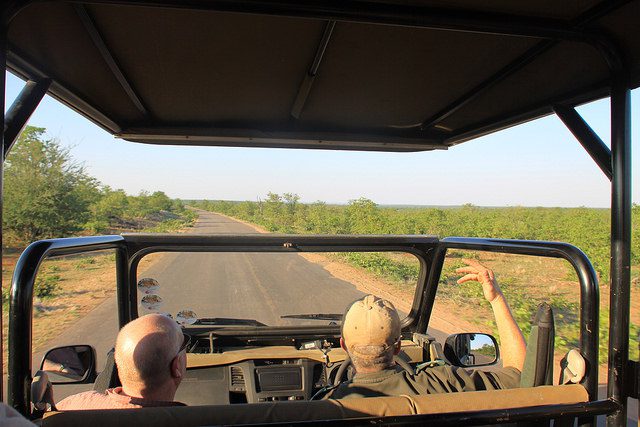
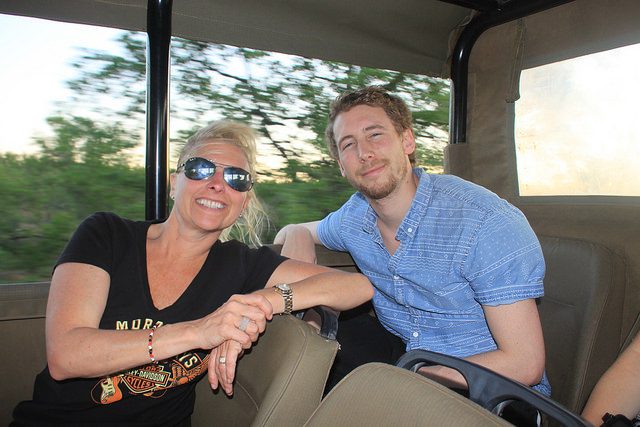
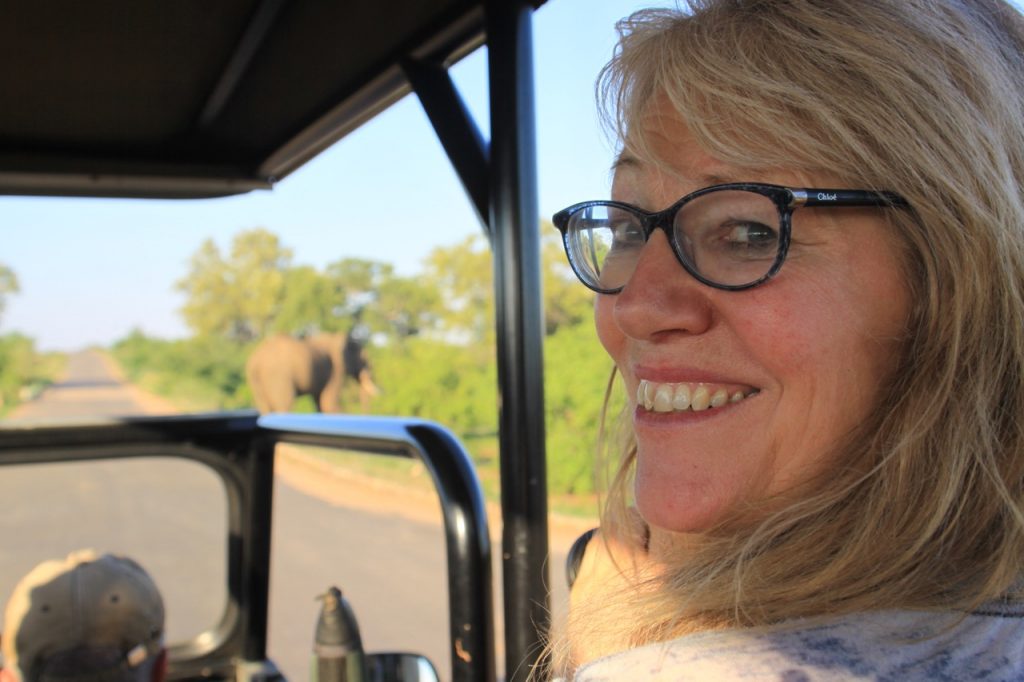
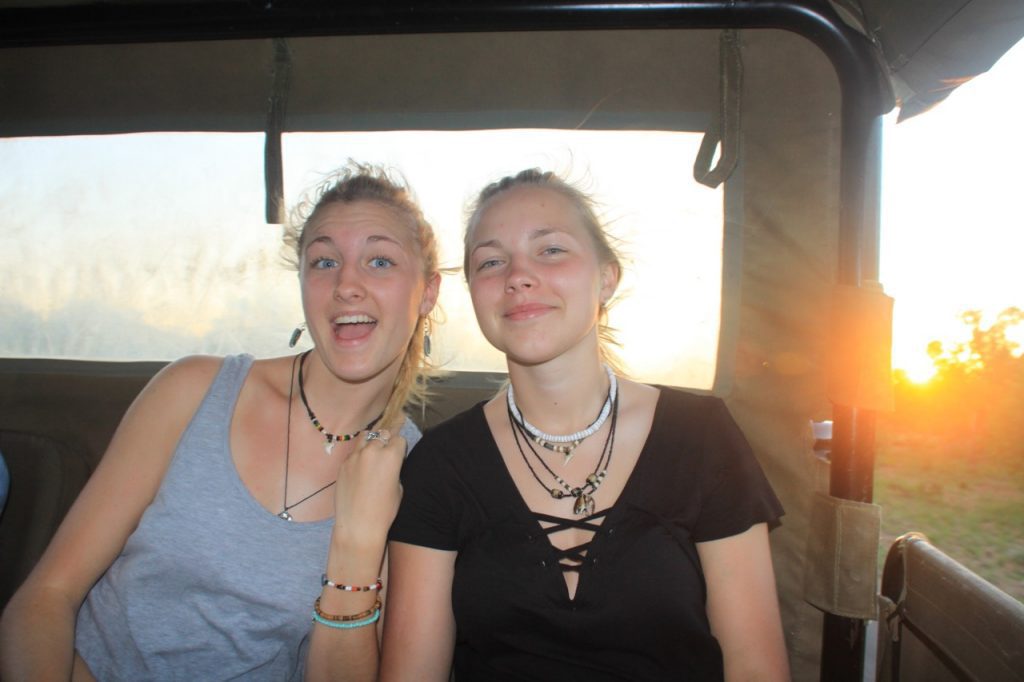
Of course the usual family bets for what would be our first sighting… Impala? Warthog? Zebra? we were all wrong! It was this feisty little fellow! Trumpeted at us before moving indignantly off the road! We saw several more elephants before spotting any other wildlife – what an excellent start!
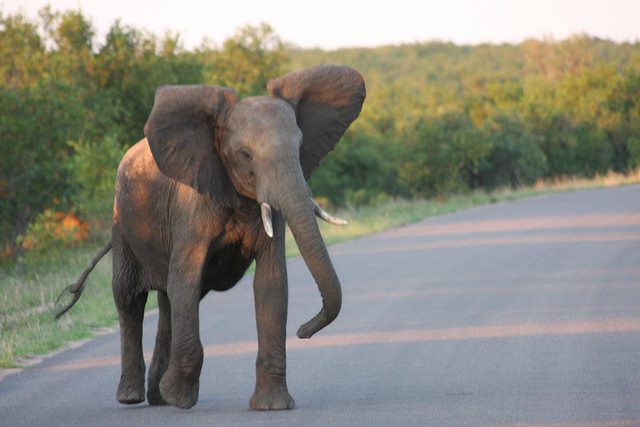
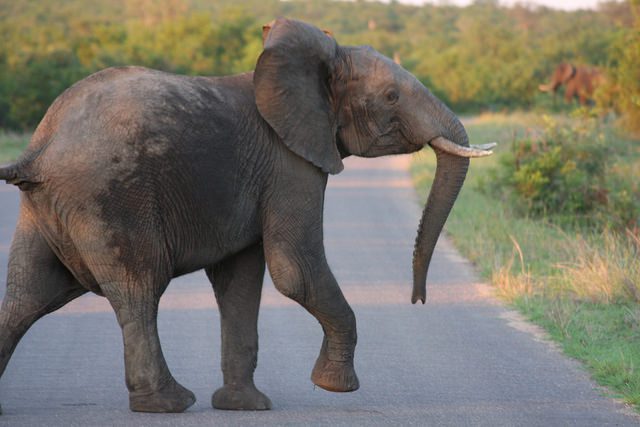
According to Jaco, farmers often fire warning shots at the elephants when they break out of the park to feed on their farms and they aim for the ears when they are flared to frighten them off…hence why you often see bulls with perfect holes in their ears!!
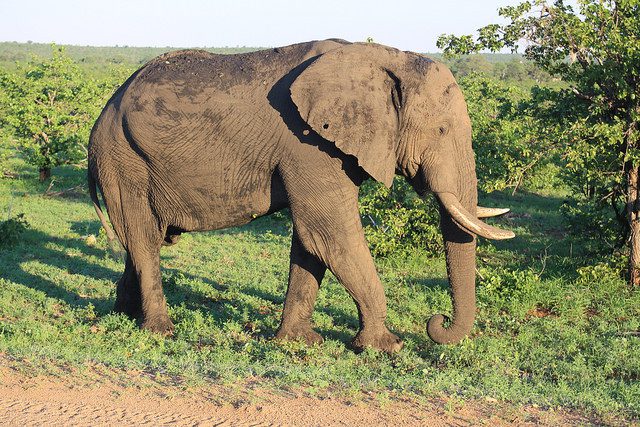
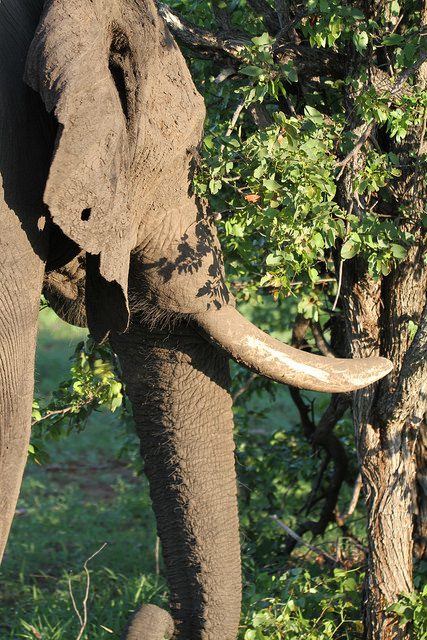
Elephants were definitely the order of the morning!
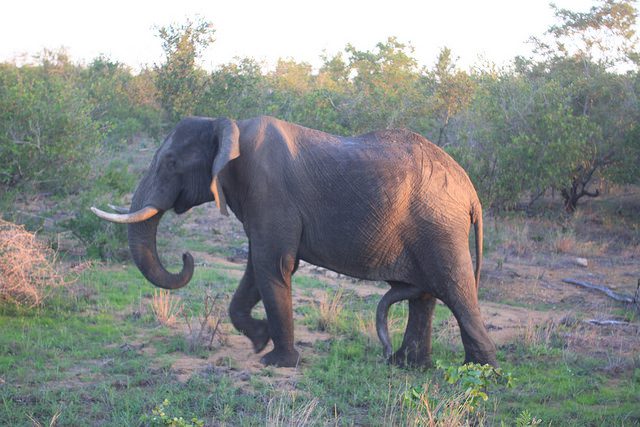
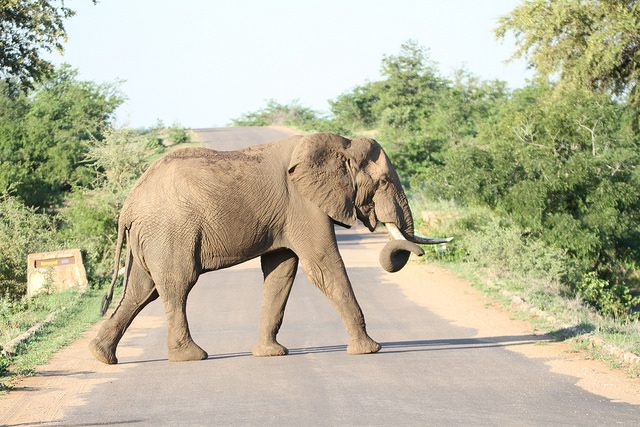
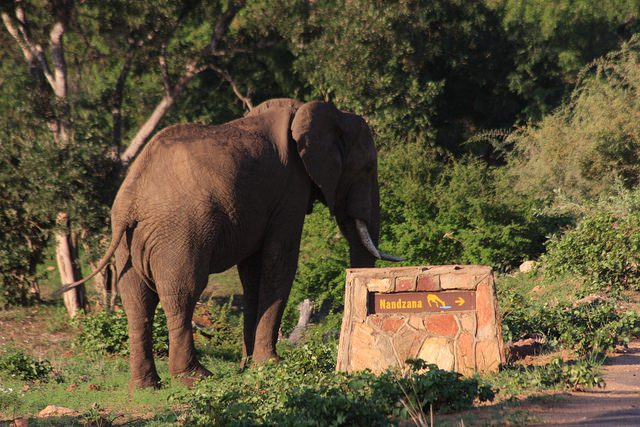
I bet these bad boys could tell a few tales of life in Kruger! Jaco showed us one of the reasons why these dagga boys are so grumpy… apparently as they age their scrotum thickens and hardens and bangs against their hind legs as they walk which causes great discomfort and pain. Poor creatures, I have a new sympathy for them!
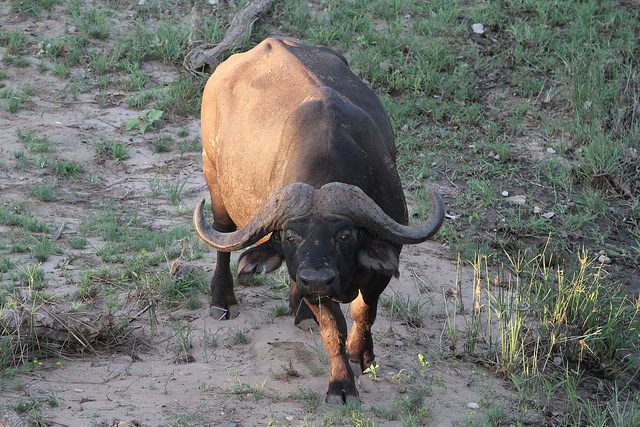
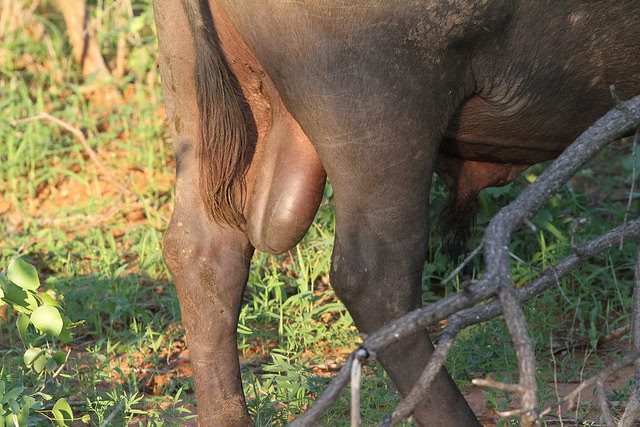
A beautiful bateleur posed nicely for us. The Letaba River looked just stunning.
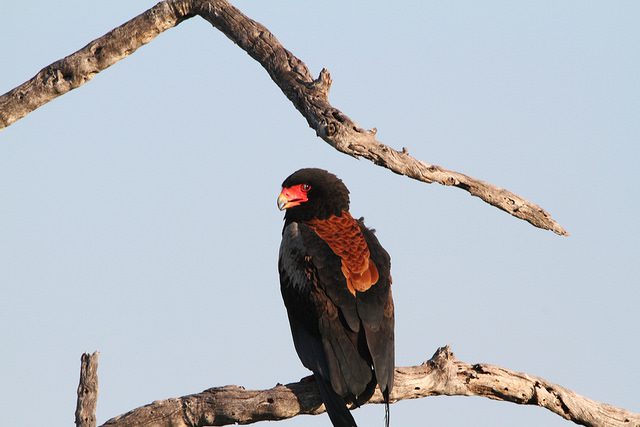
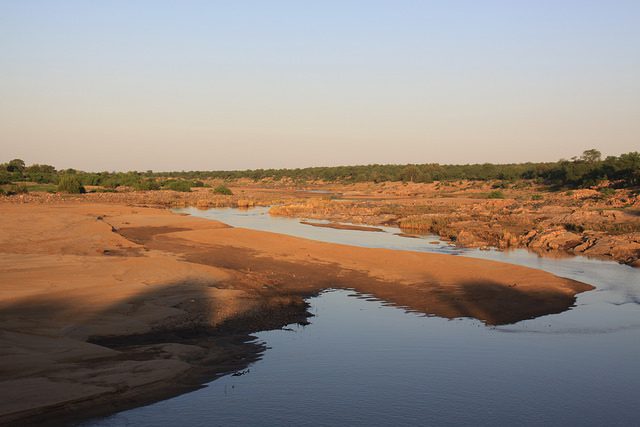
Finally – some zebra! It looked surprisingly green!
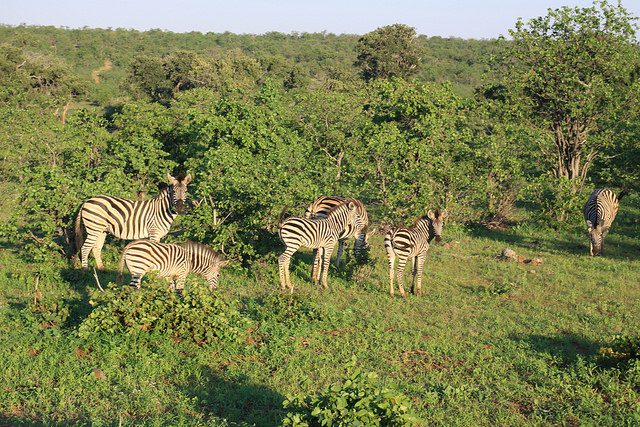
As we approached Mopani we were delighted to catch up with these mischievous hyena…
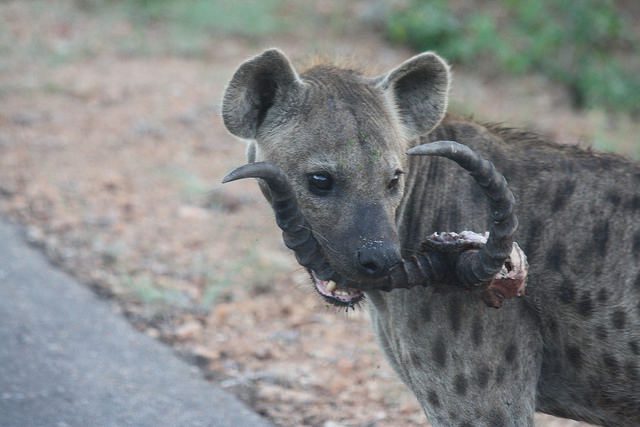
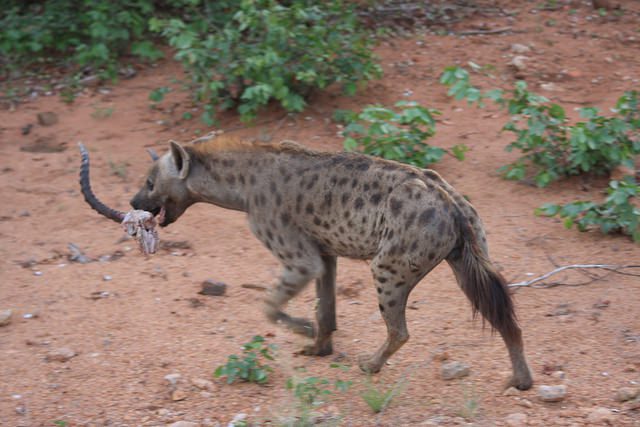
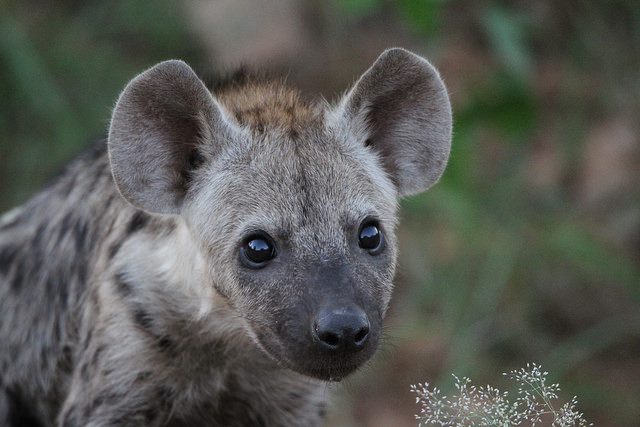
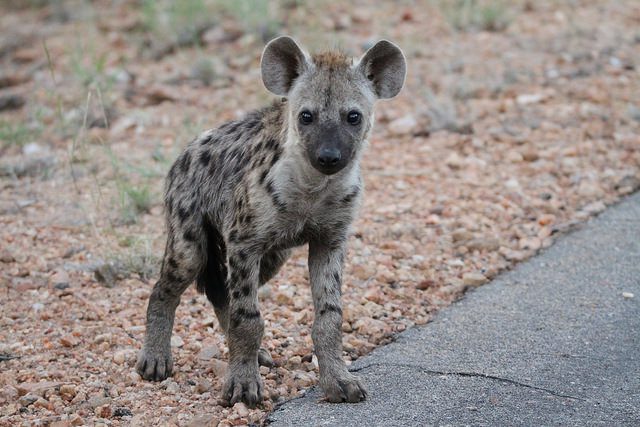
We arrived at our excellent accommodation at Mopani Camp – Nxanatseni Guest House . A large central kitchen and seating area, lovely outside table overlooking Pioneer Dam with stunning views and four separate en suite cottage type bedrooms. Highly recommended.
On the banks of the Pioneer Dam in the Kruger National Park, lies it’s best kept secret. Named after the mopane veld that surrounds the camp, Mopani Rest Camp nestles amongst the Mopani tree covered koppies. A signature feature is the huge gnarled old baobab tree in the heart of the camp. The vegetation inside the camp is left as found in the wild, adding to the unique atmosphere of the camp.
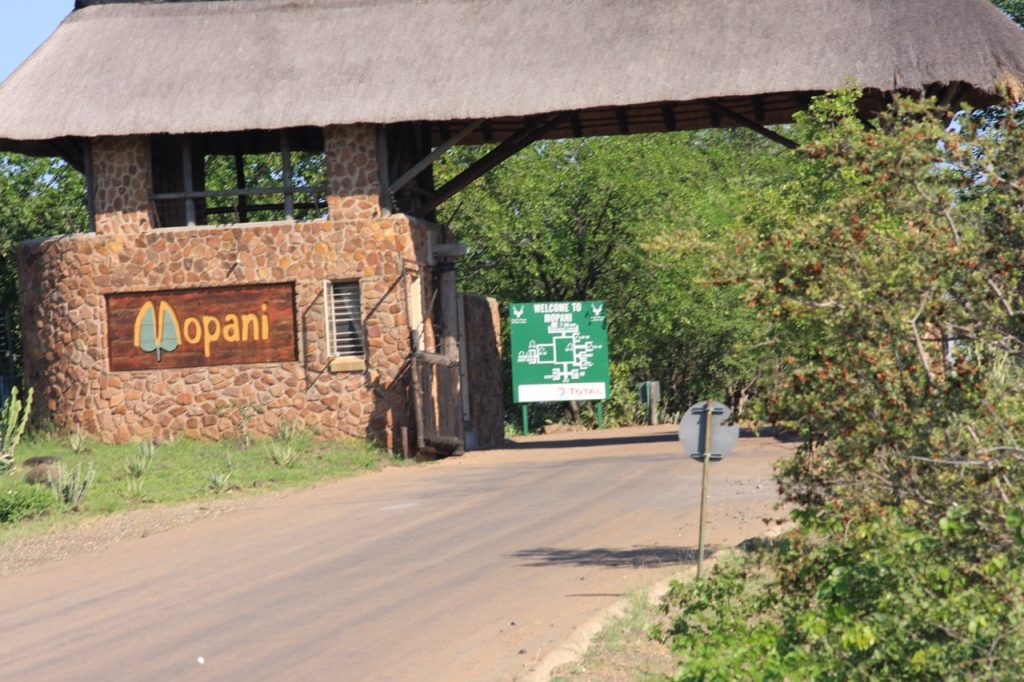
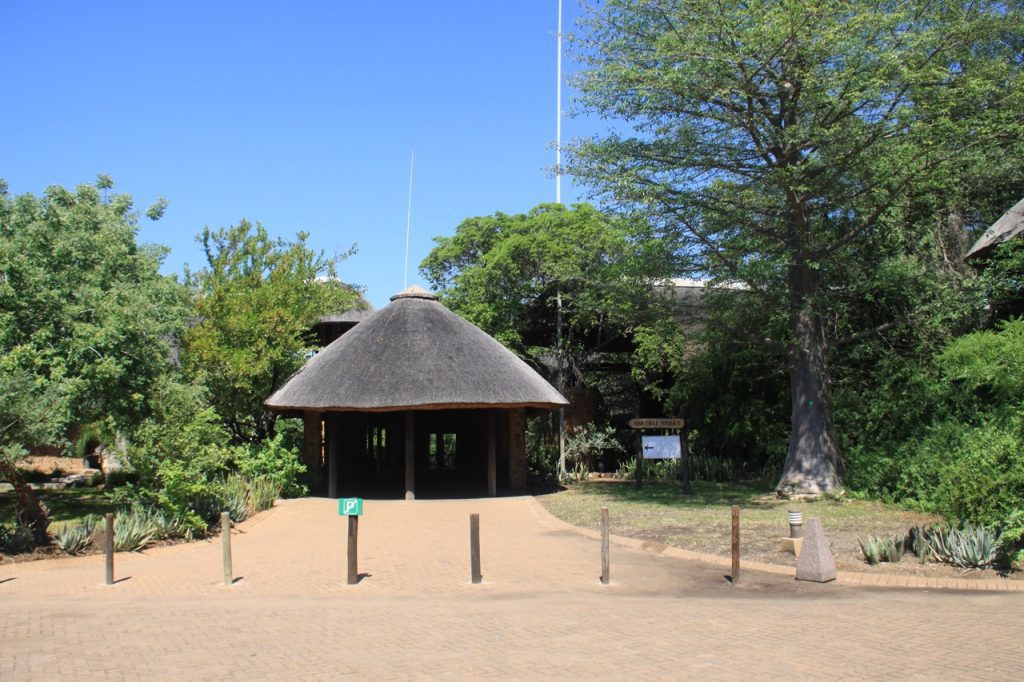
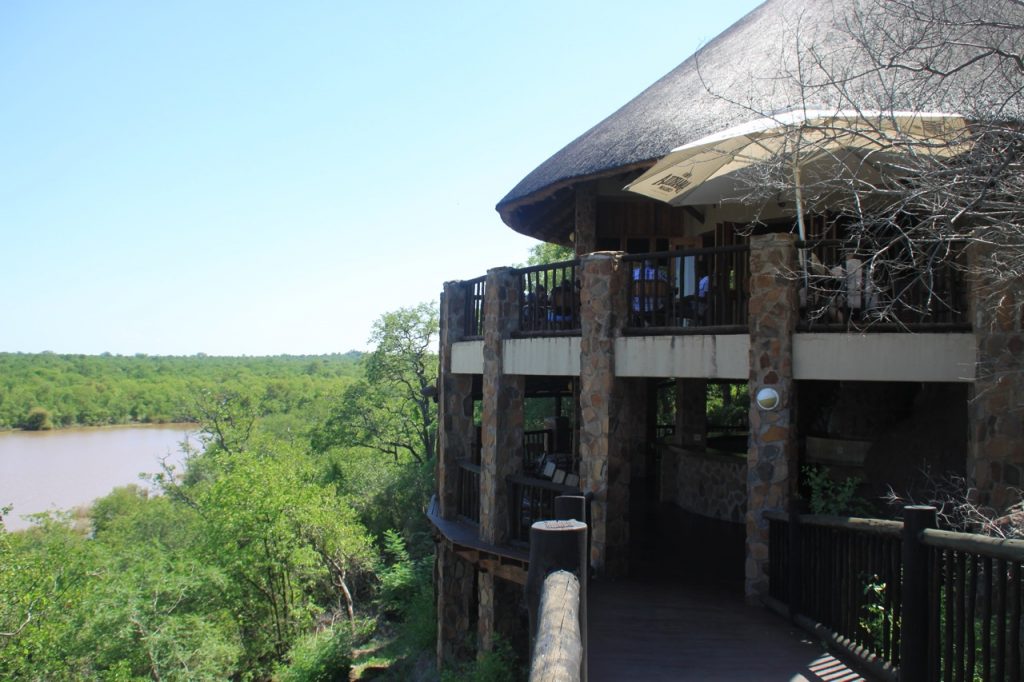
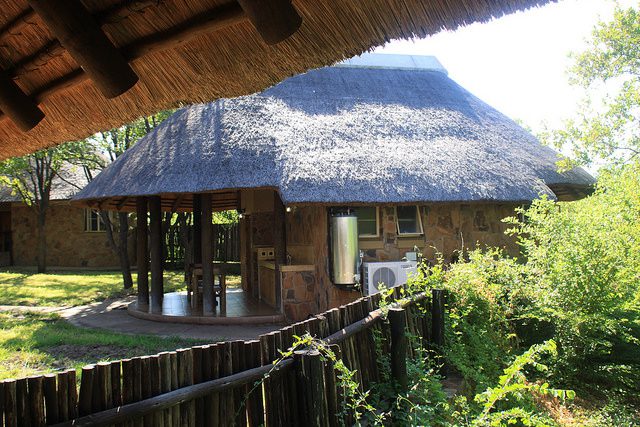
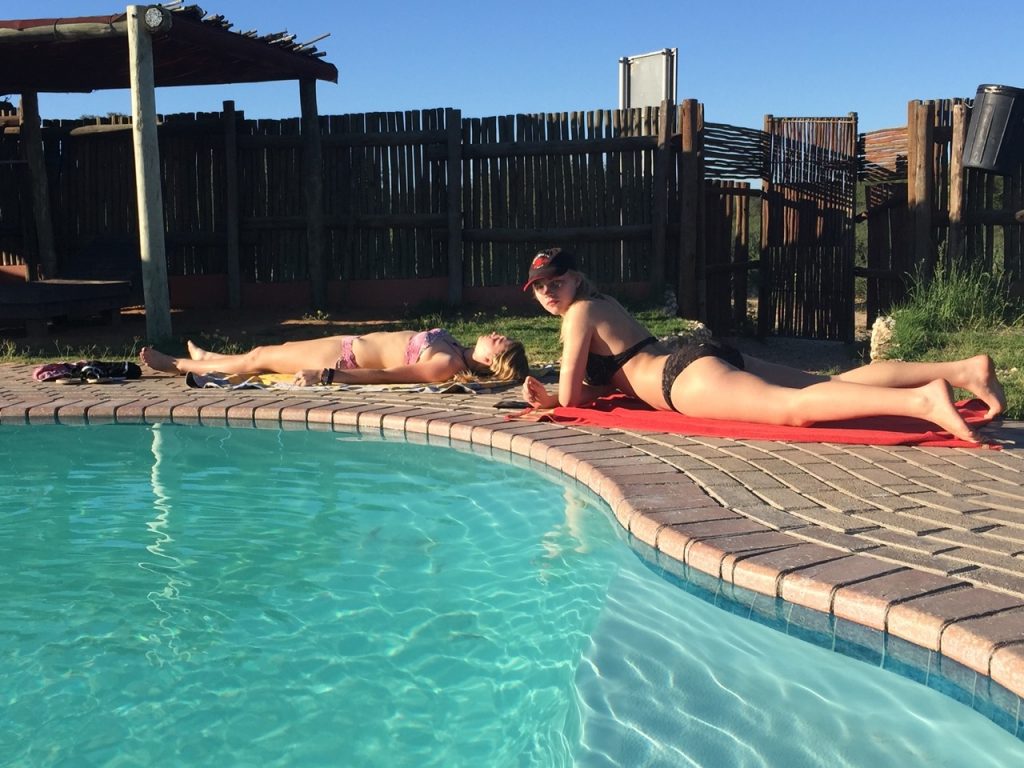
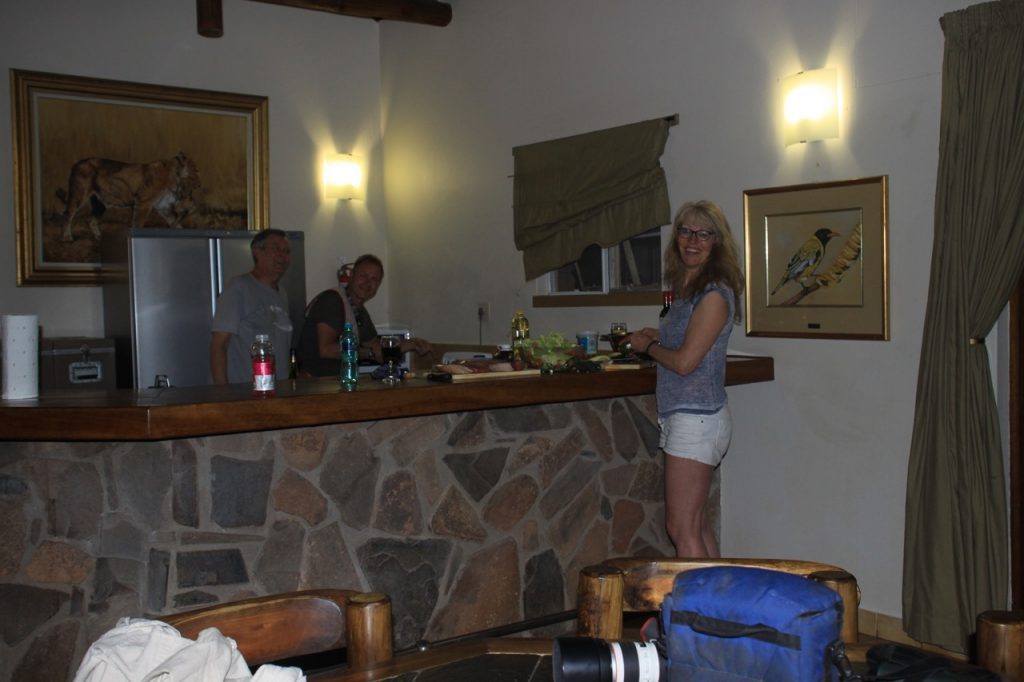
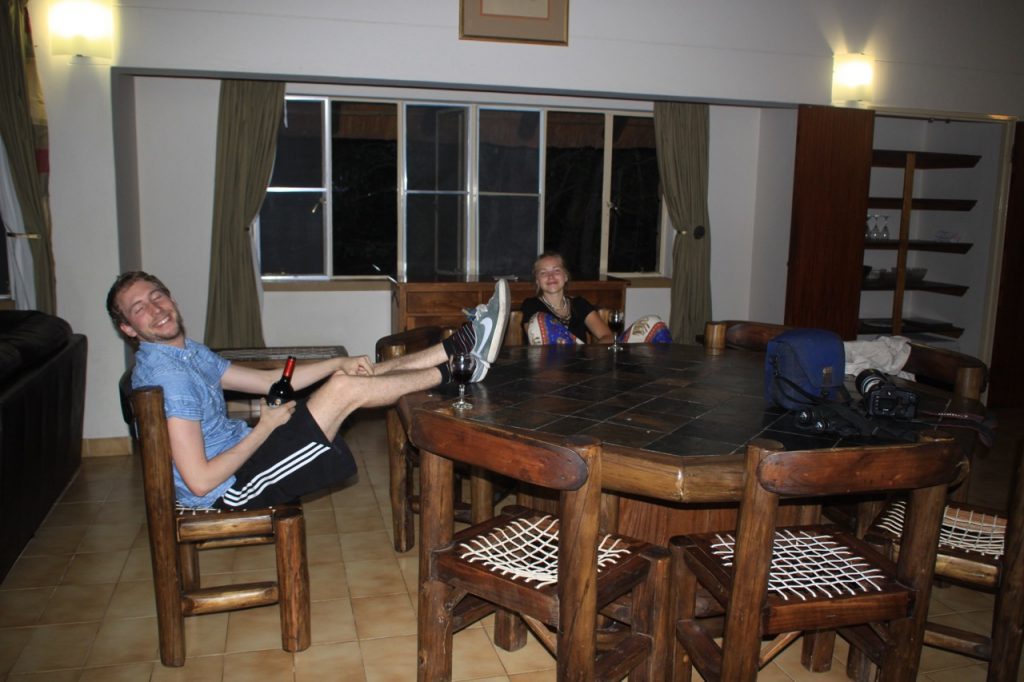
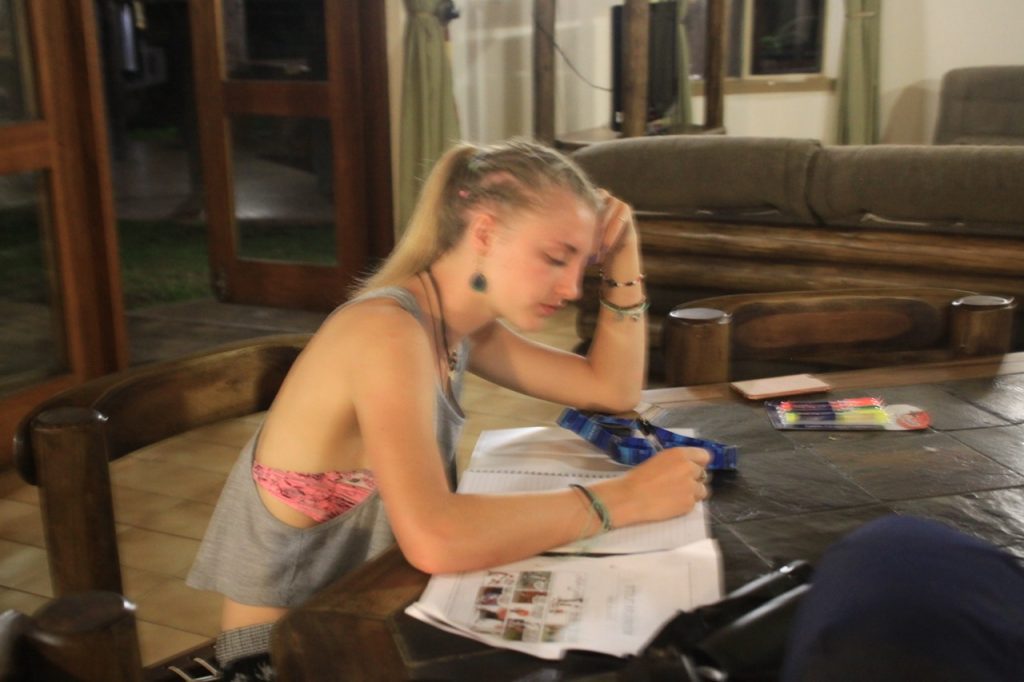
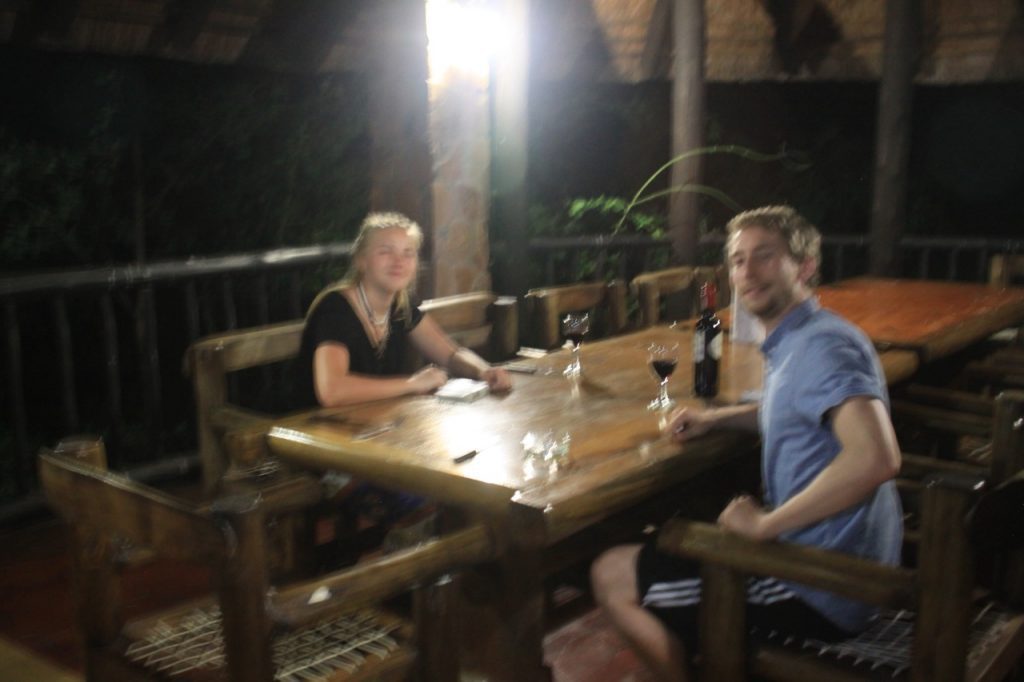
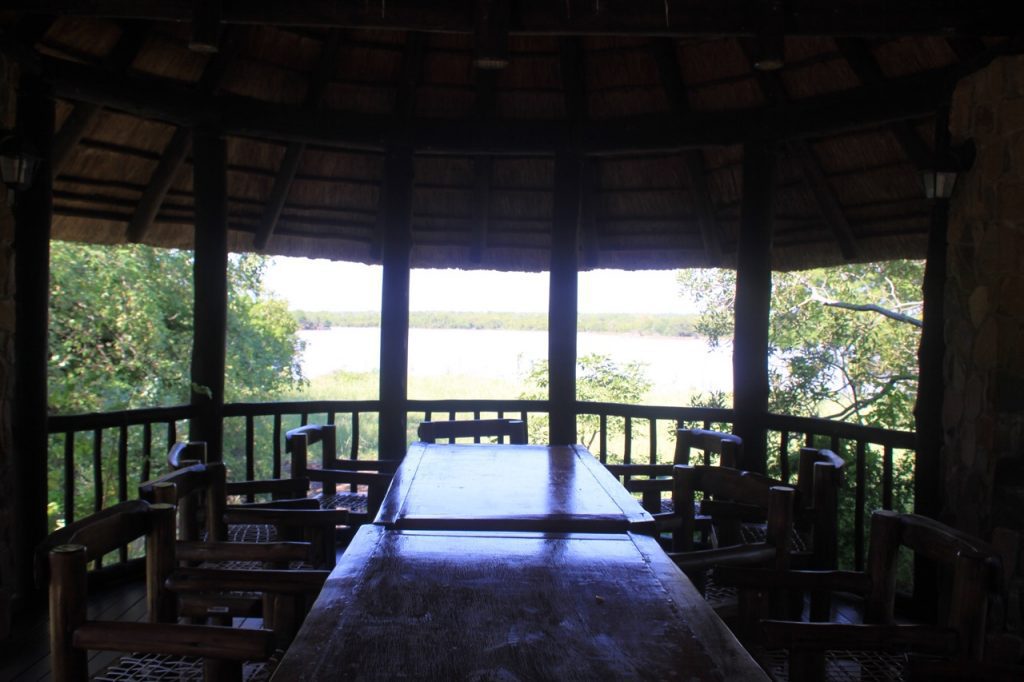
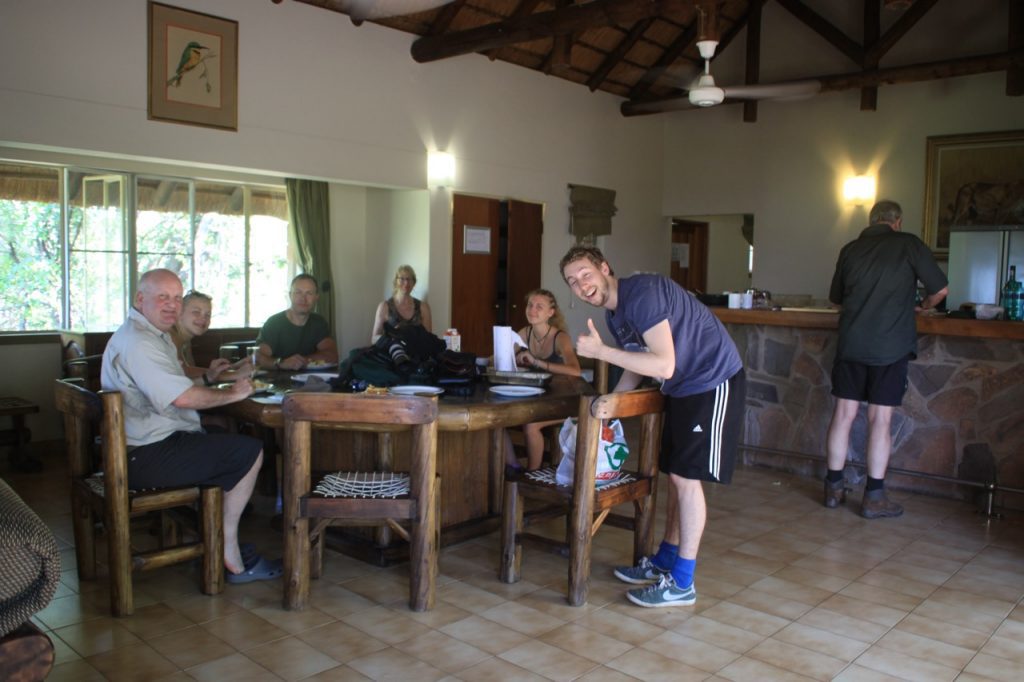
SO good to be back in Kruger. A stunning sunset, a delicious braai, fine red wine and wonderful company – what more could one ask for?! Sigh…
Day 2 KNP – Friday 1st April 2016: Mopani to Punda Maria
Up and showered at 5.30am and ready to leave Mopani at 6am with coffee in our flasks. We started our early morning walk into the contact between the Basalt and Clarence Sandstone north-east of Mopani to find the Mooiplaas petroglyph site. Jaco as First Rifle and Vanessa 2nd in command – single file and in silence, just absorbing the calls of the birds and the buzz of the bush and the refreshing wafts of wild sage tingling our senses….heaven. We just love this experience of walking in the wild – being up close and personal with nature and seeing / hearing / smelling / finding things that you would never see from your vehicle.
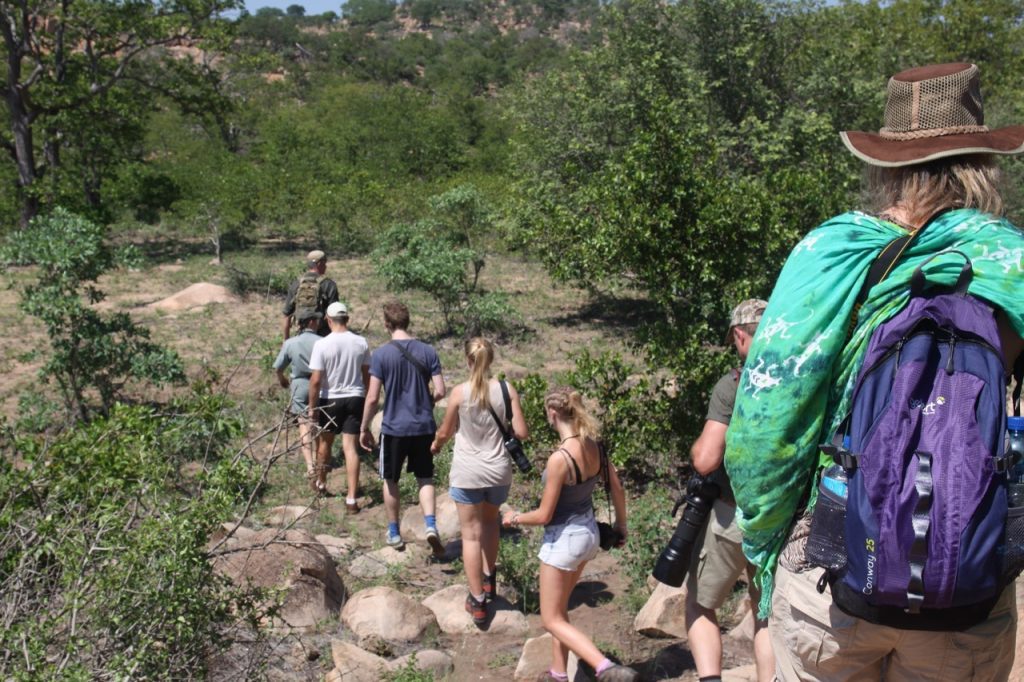
For example, these Golden Orb Spiders (so called as they spin orb webs of silk in the colour of gold and the intensity of the colour can be adjusted by the spider so that it is always perfectly camouflaged – their webs can last for years!): not sure whether you can even spot the tiny dowdy male who is dwarfed by the large more brightly coloured diurnal female to the right of him, and who avoids being eaten by her by waiting until she is feeding or presents her with a parcel of food before fertilising her? Her colouring indicates to birds (who obviously feed on insects during the day) that she is unpalatable. These webs are incredibly strong and can even trap birds – the main bridge line is retained for reuse while damaged orb lines are re-spun. Each female spider has her own specific signature thread in the guise of stabilimenta (like her thumbprint) which is comprised of two zig zag bands of silk radiating from the centre to the bottom corners of the web and which also stops birds flying into the web and damaging it by day and glows ultra violet by night to attract and trap flying insects. Once the prey is trapped in the web, the spider wraps it in silk to immobilise it and kills it with a venomous bite. As spiders cannot eat solids the internal organs need to be liquidised through enzymes which the spider pumps through its fangs to create a soup which it can then drink. Is nature not just simply amazing?!!
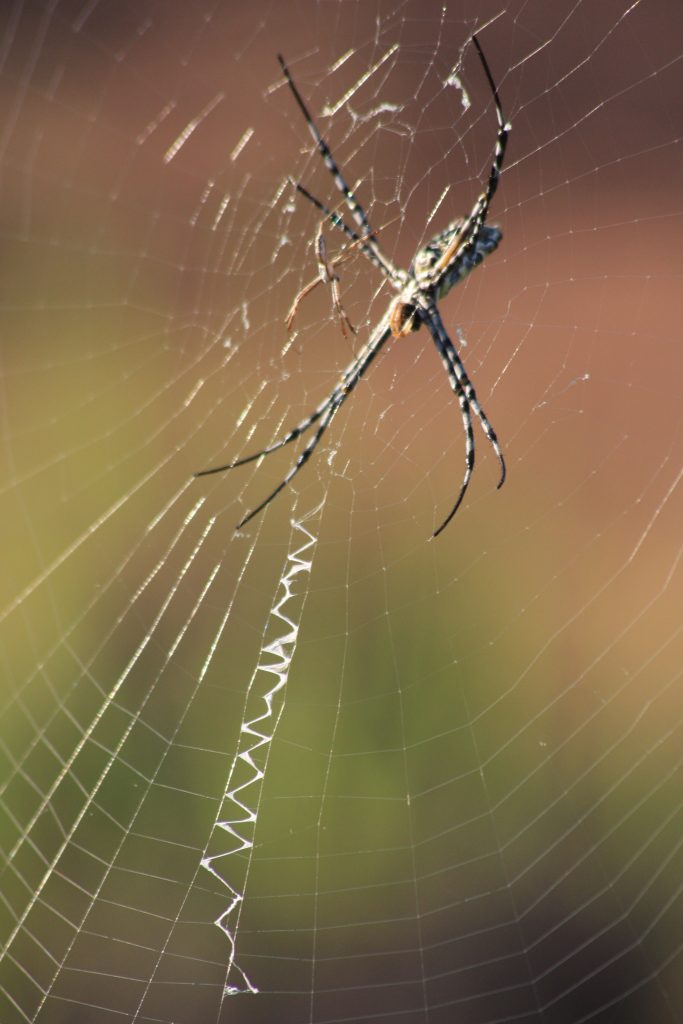
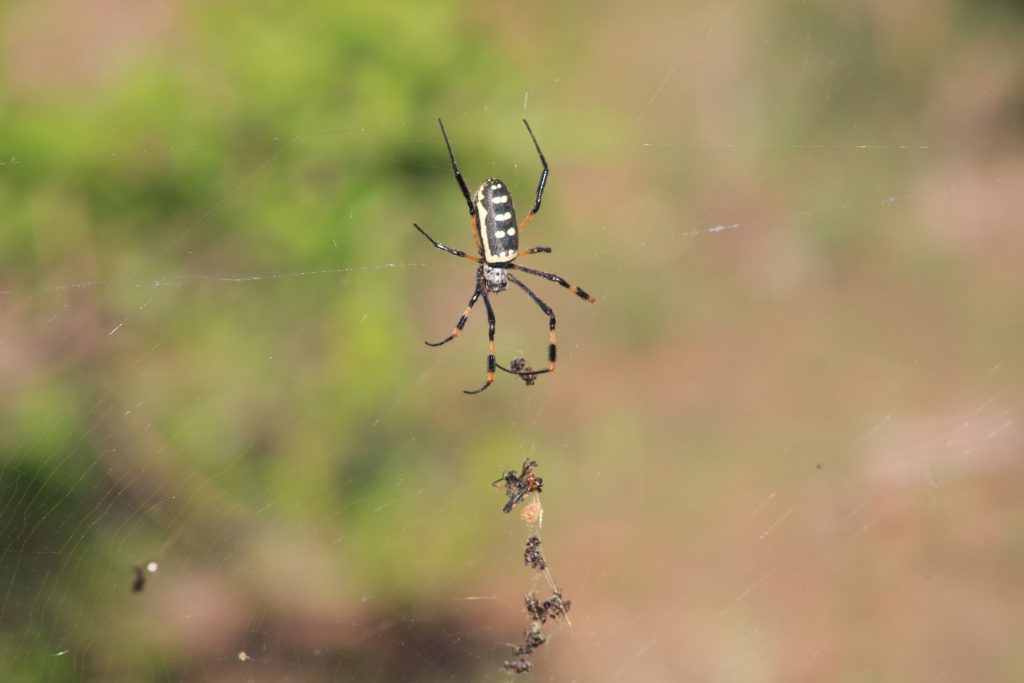
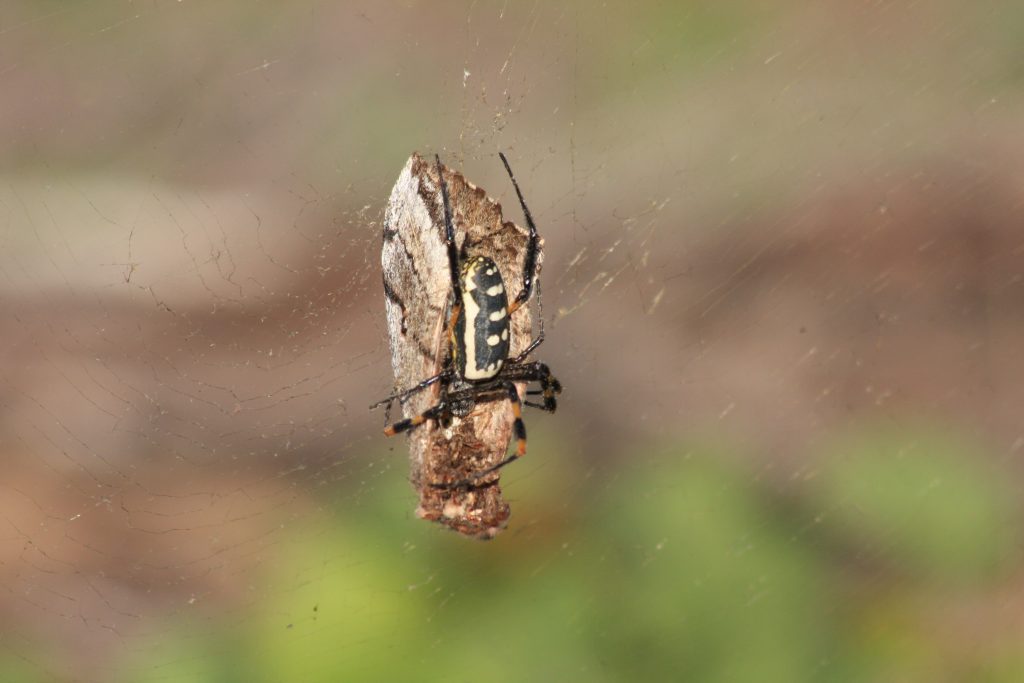
We came to a large outcrop of reddish Clarence Sandstone and were delighted to find the petroglyphs which were comprised of multiple circular designs which Vanessa explained may perhaps have been related to an initiation ceremony or the site may have been somewhere that people came together from various areas to meet and conduct fertility ceremonies. They engravings are between 20-30 000 years old! The rocks that are engraved on are between 200-300 million years old!! An interesting observation that Vanessa made was that both she and other rangers very familiar with the area had only ever witnessed the numerous Shakama Plum trees on site in fruit once in twenty years – they were fruit in March 2014 between veld fires and rain and the fruit looked like sweet potatoes and tasted delicious. The cheetah engraving shows that these animals have been around for very many years!
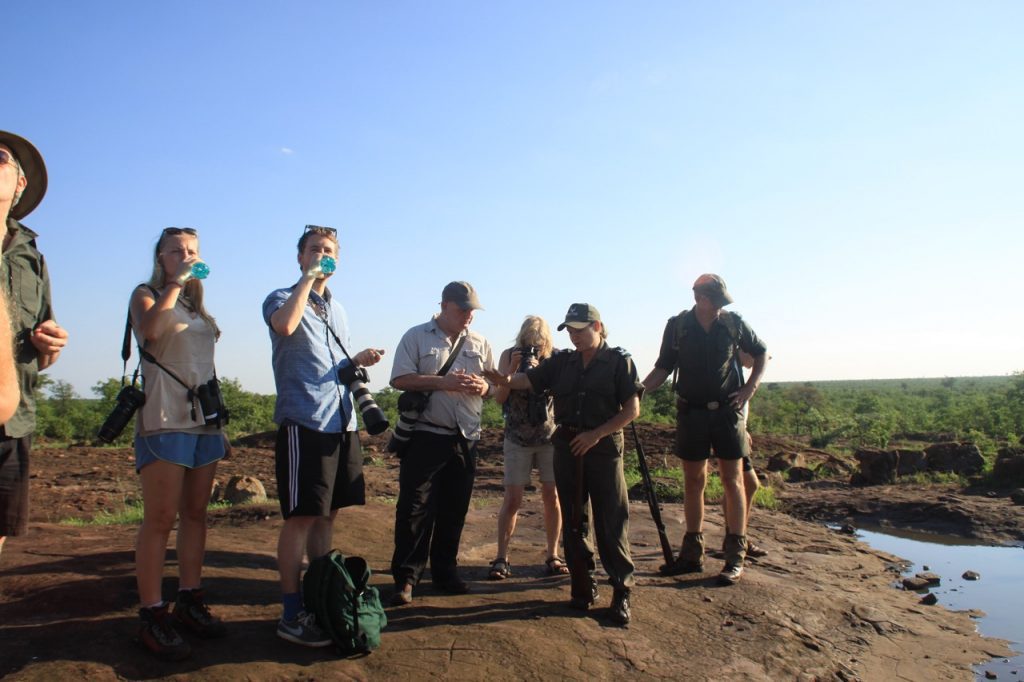
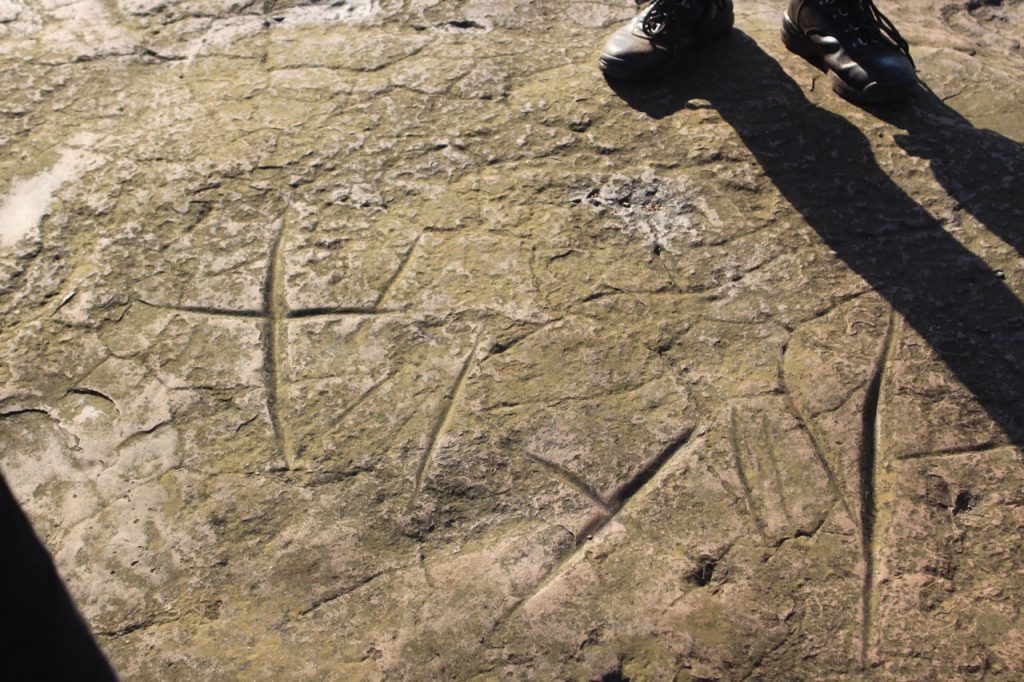
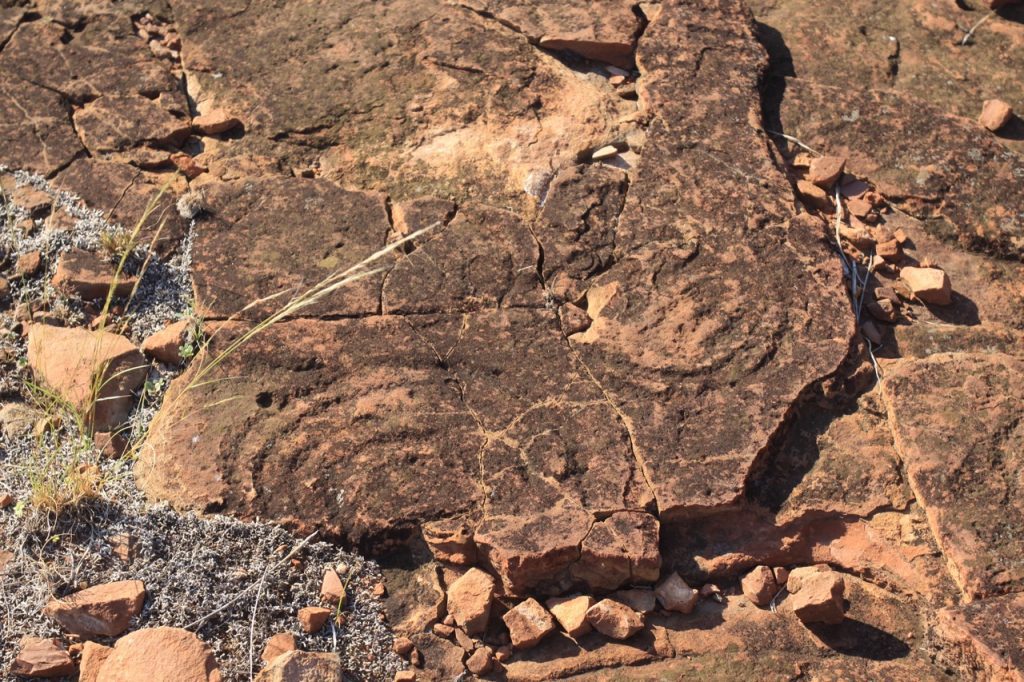
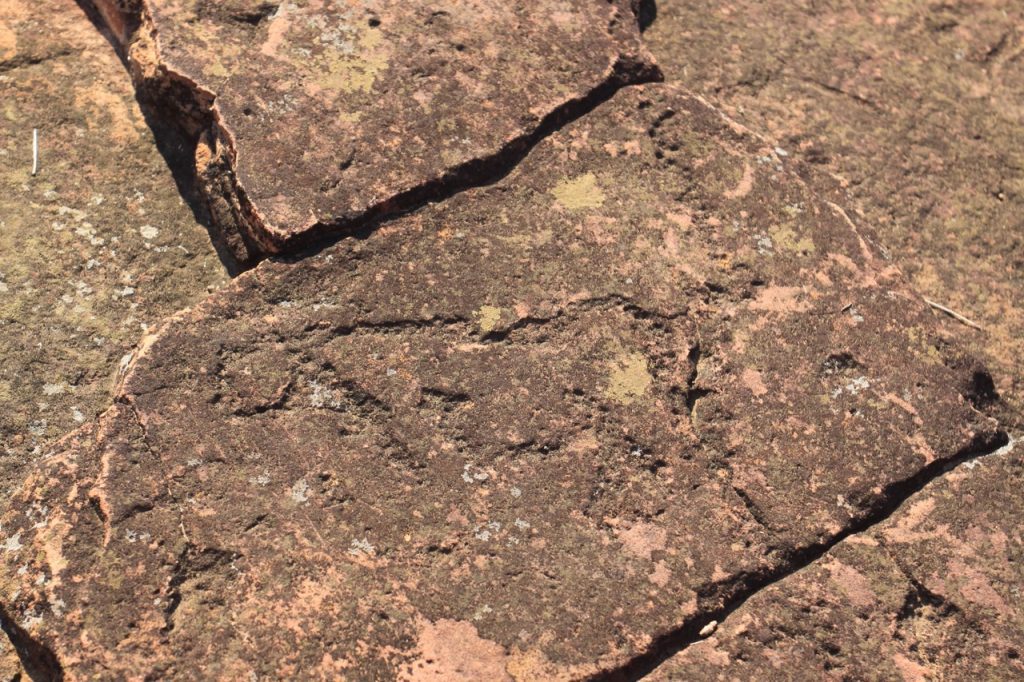
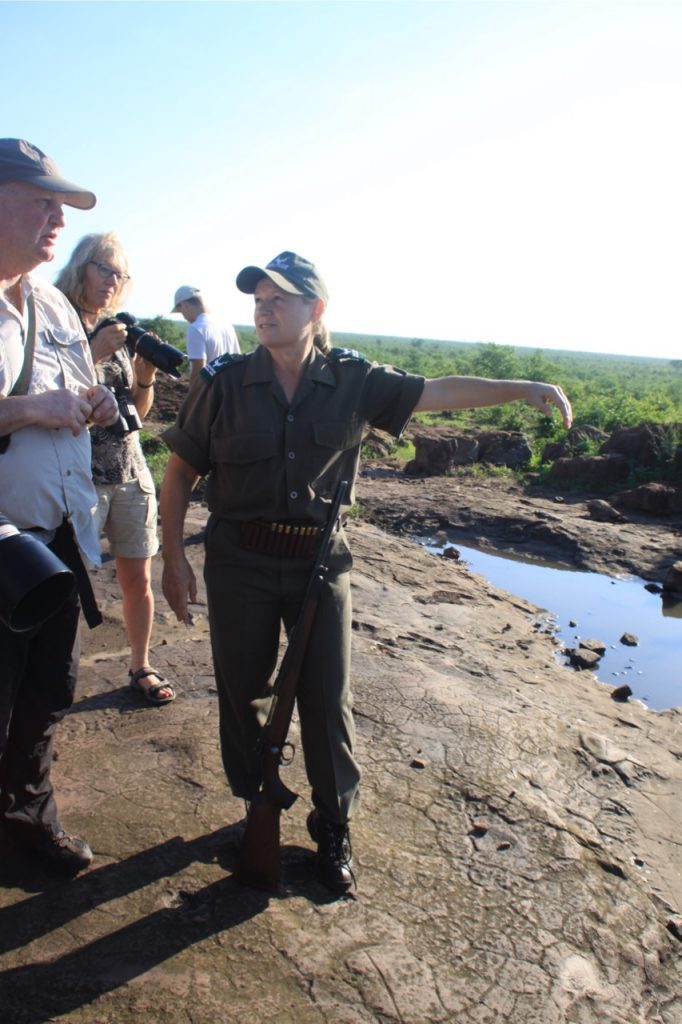
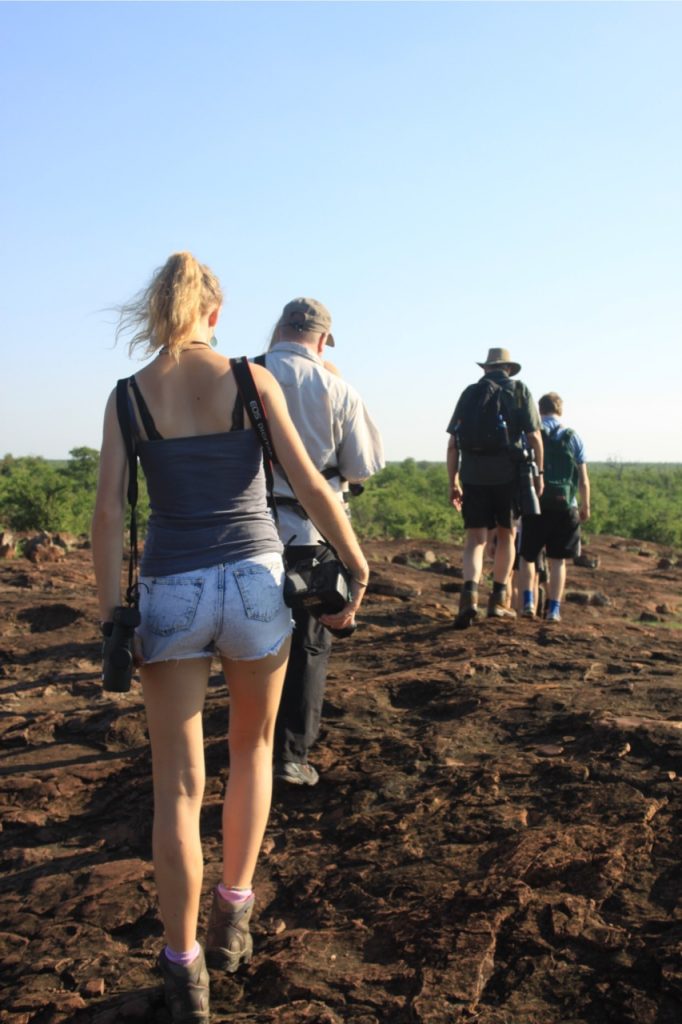
Jaco alerted us to the call of a broad billed roller and we saw it fly overhead. On our walk back to the vehicle we found a large hole which had recently been frequented by porcupines as was evidenced by their tracks and numerous quills.
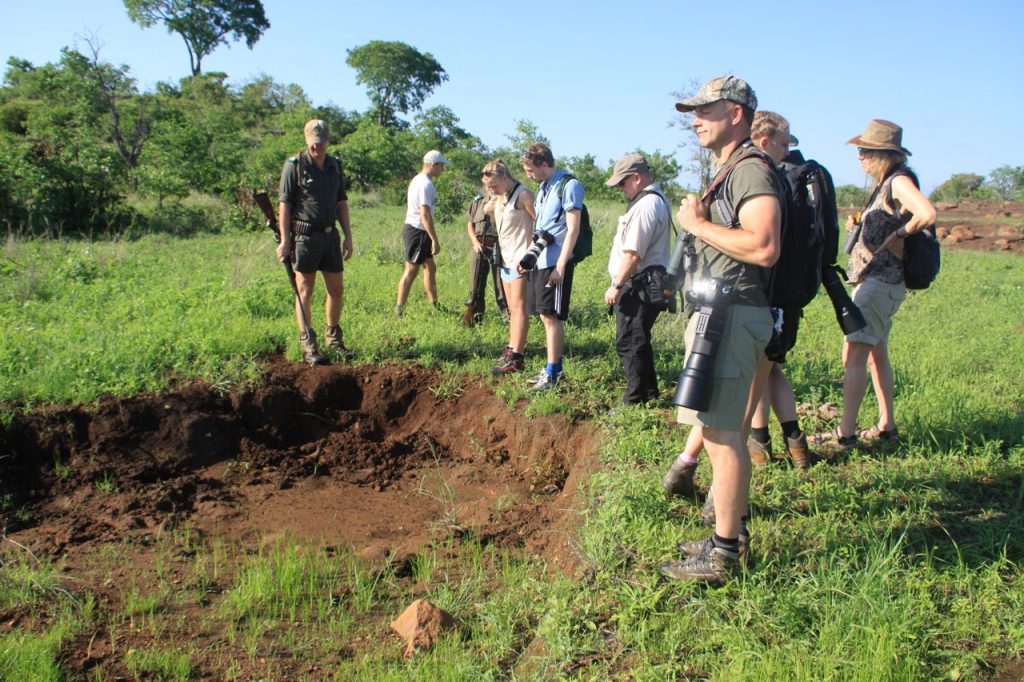
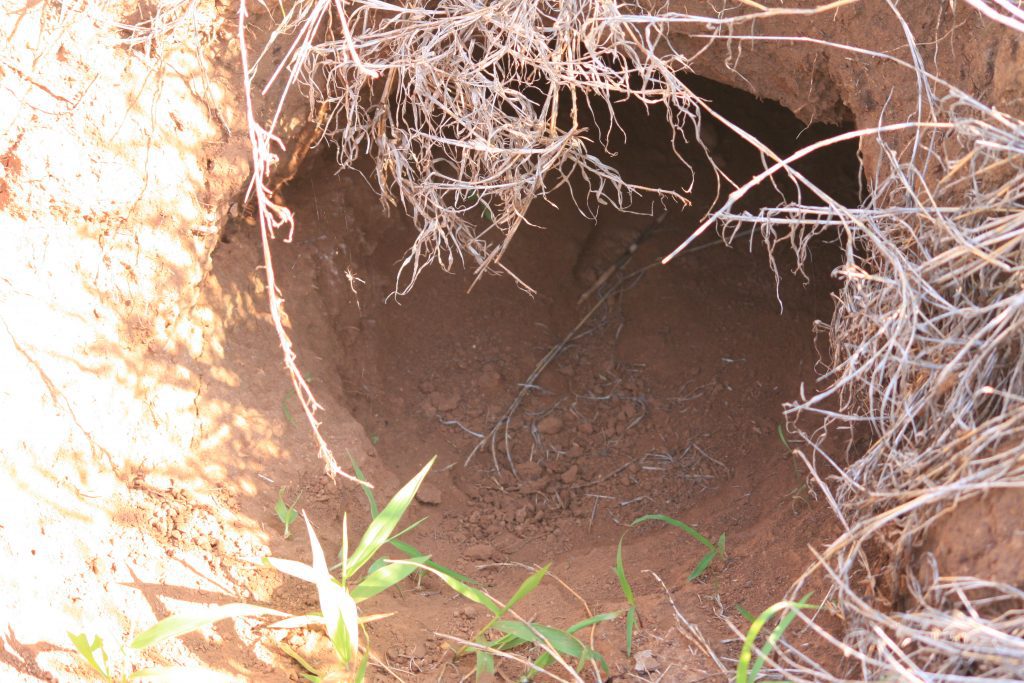
Travelling back we witnessed an interesting interaction between zebras. A bachelor herd tried to intercept a family herd and the family stallion got very agitated resulting in lots of galloping around and kicking – great spectator sport!
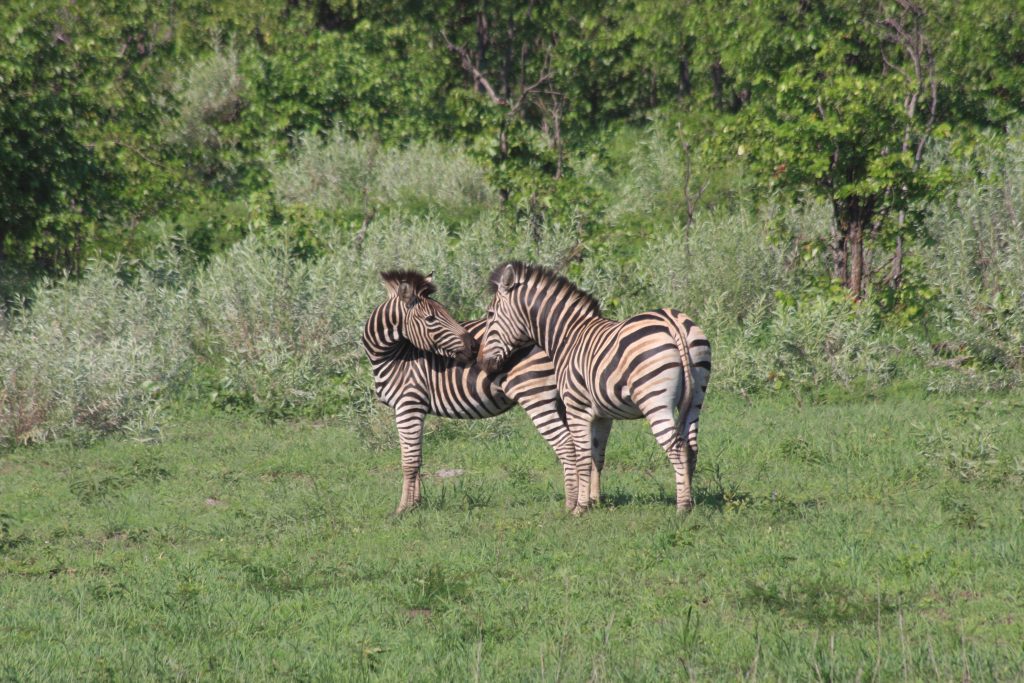
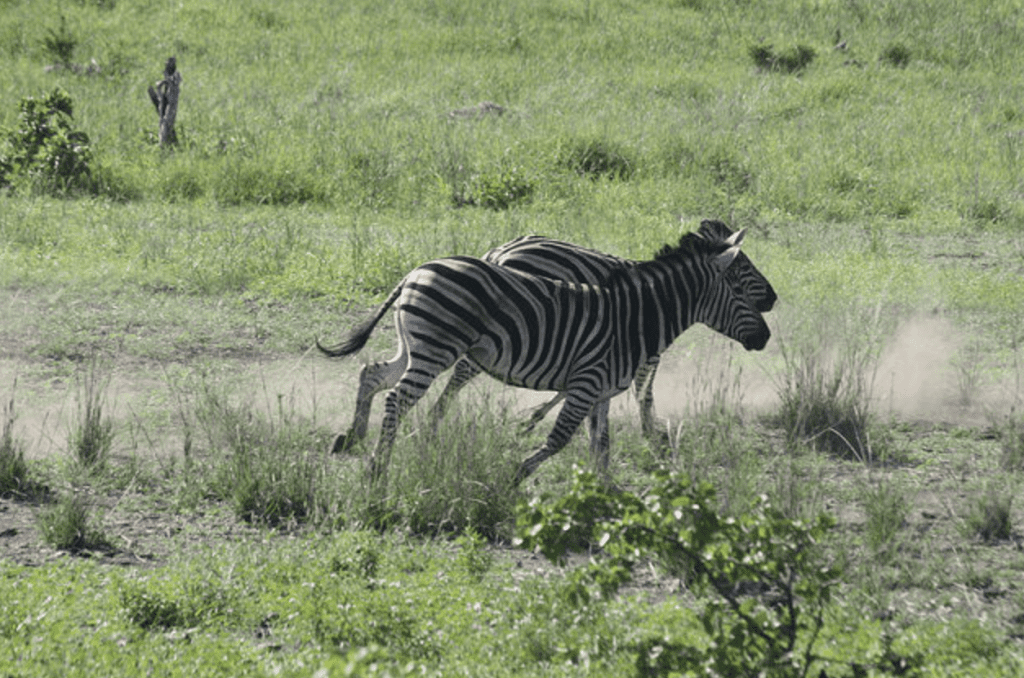
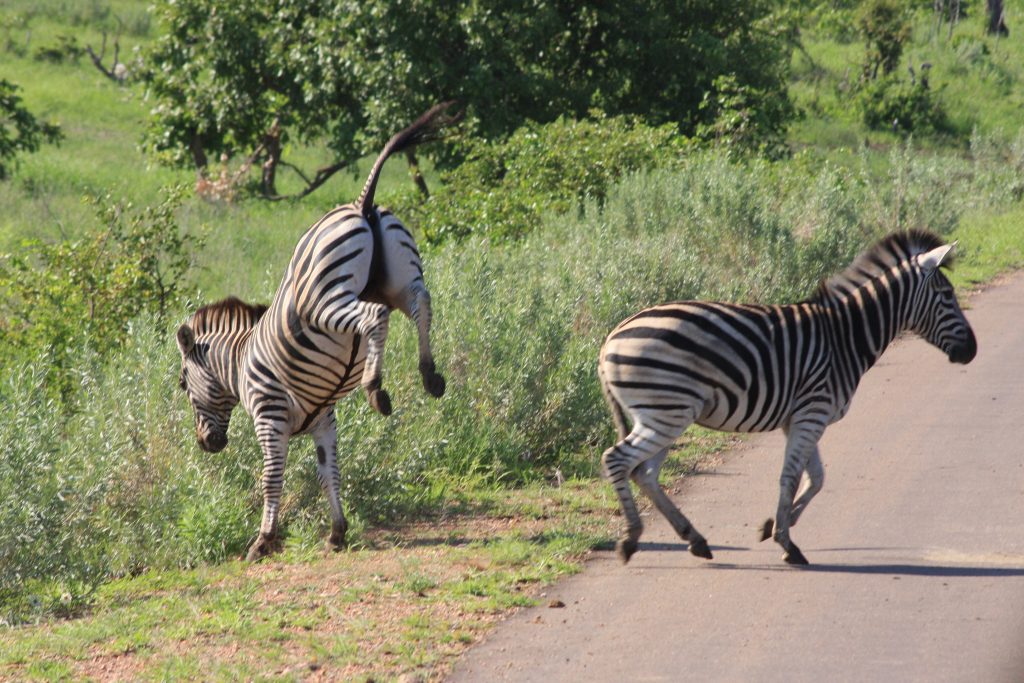
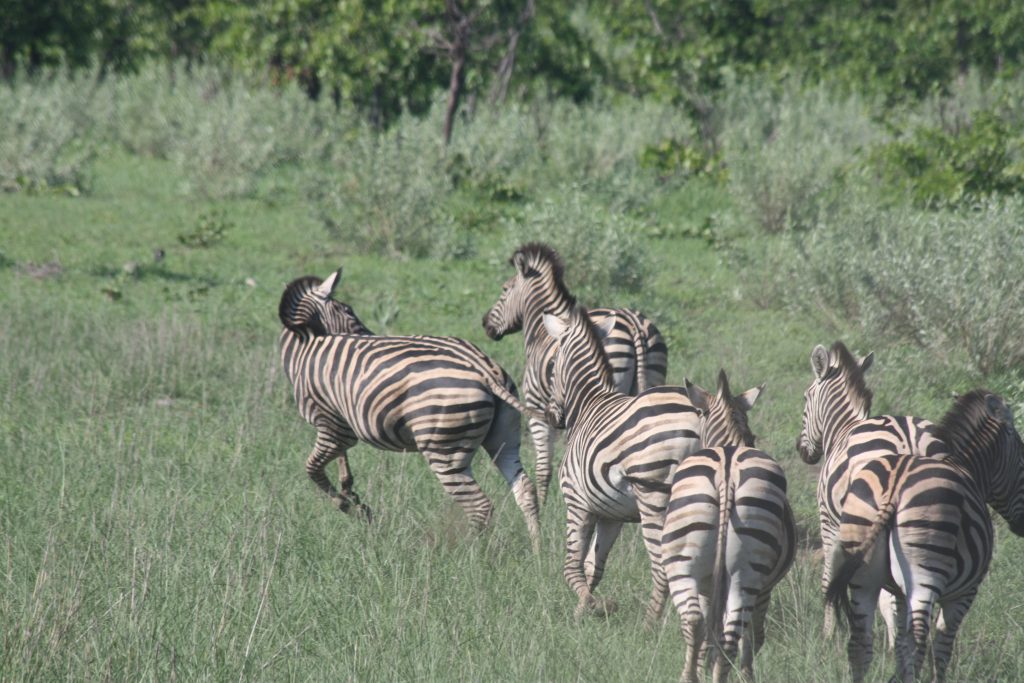
Headed back to guest house at Mopani and enjoyed a delicious fried breakfast, packed our bags, did a final shop and set off heading North at 11am towards Punda Maria. We bypassed an elephant with attitiude!
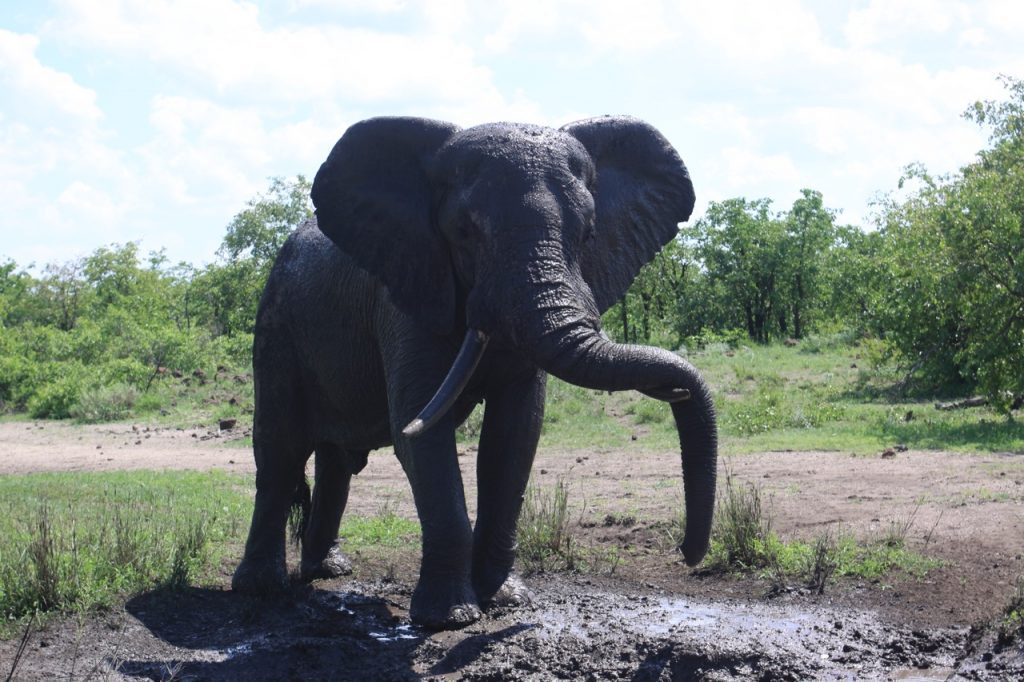
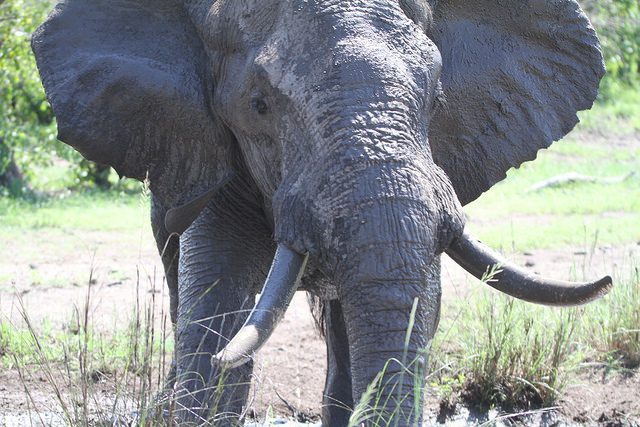
This is a large outcrop of reddish-weathering Clarens sandstone with examples of relatively thick exfoliation layers breaking up in places to form scattered boulders. We also found peckings from another period. The high, baobab covered koppie of Masorini is a cultural heritage site. During the 18th century, the Baphalaborwa, who are said to have come from the north, settled in present-day Phalaborwa, calling their settlement by that name, which means’ better than the south’. Their main trade item was iron, which they smelted themselves. Stopped at Shilowa Hill which had an awe inspiring vista across the park. Quick safety briefing and information about the area.
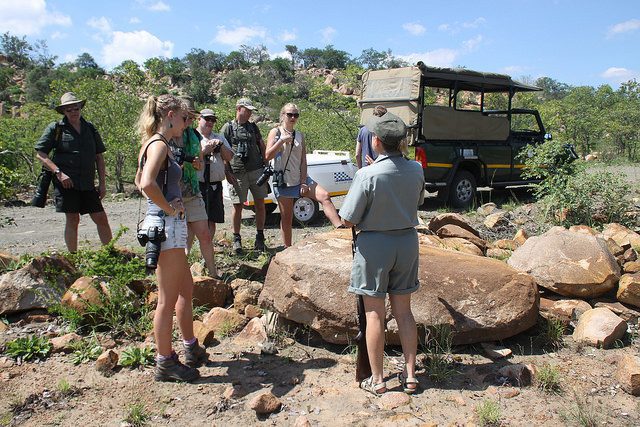
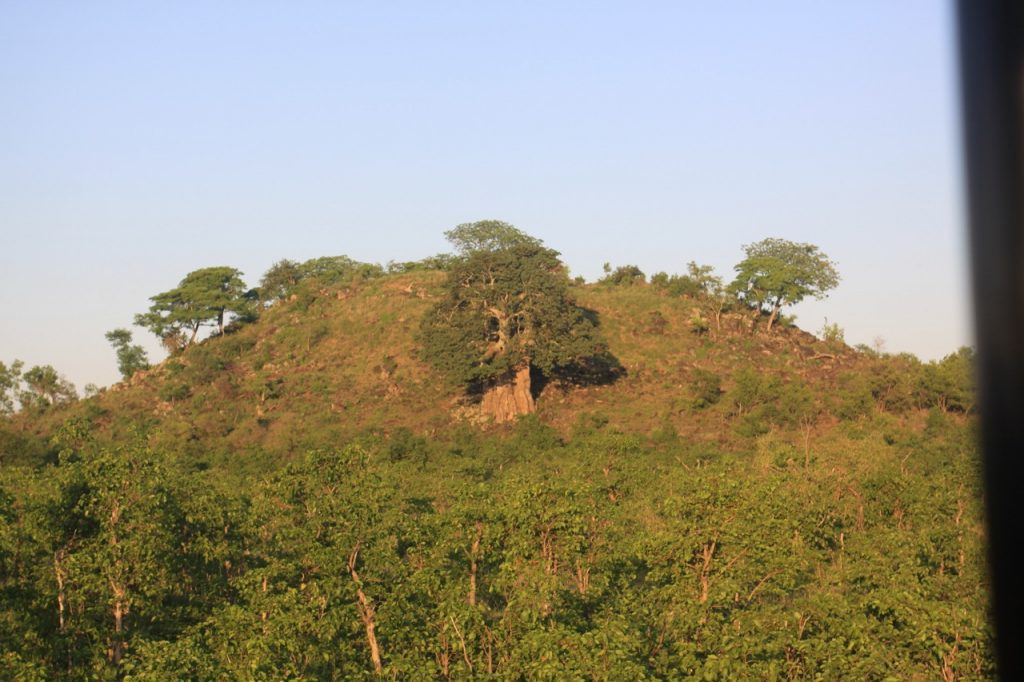
Jaco and Vanessa were concerned as there were very fresh buffalo tracks and poo so we had to be extra quiet and vigilent when walking.
We saw this grumpy chap as we left – thank goodness we hadn’t bumped into him!
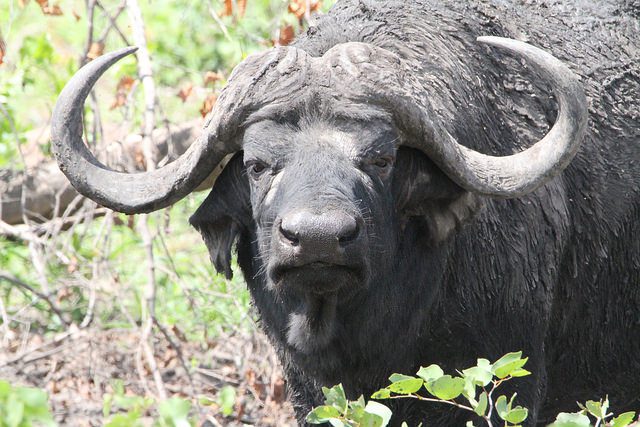
There is a pass here which is believed to be an ancient elephant highway which was disrupted when the eastern KNP border was fenced in the 60s. The fence has now been dropped as part of the Greater Limpopo Transfrontier Park initiative and elephants may one day resume their migrations to Mozambique. This pass has also been used by humans for hundreds of years and the remains of an Iron-Age trading settlement has been found at the foot of the hill and age old hunters and traders also used this route. We found many shards of pottery and an arrowhead scattered around the area bearing testimony to these times.
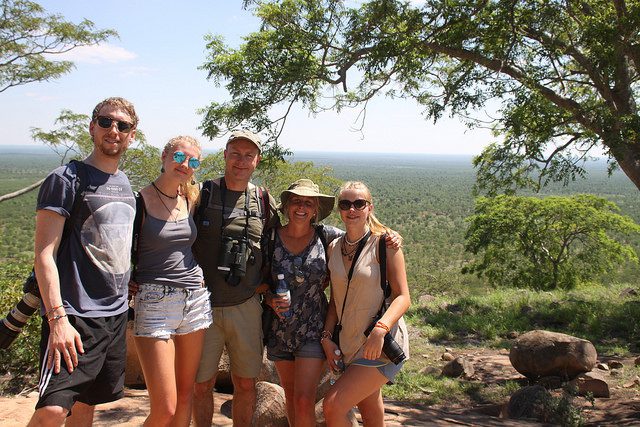
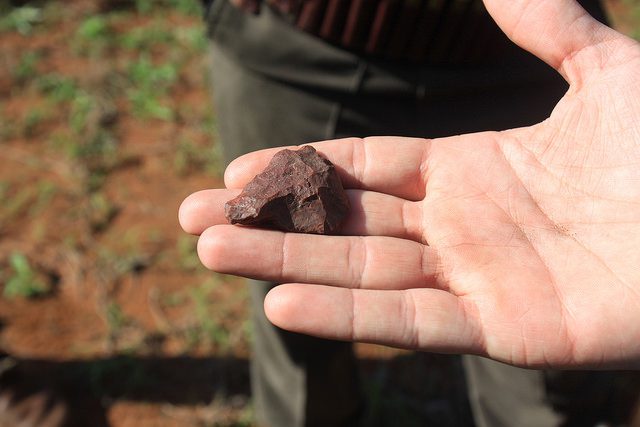
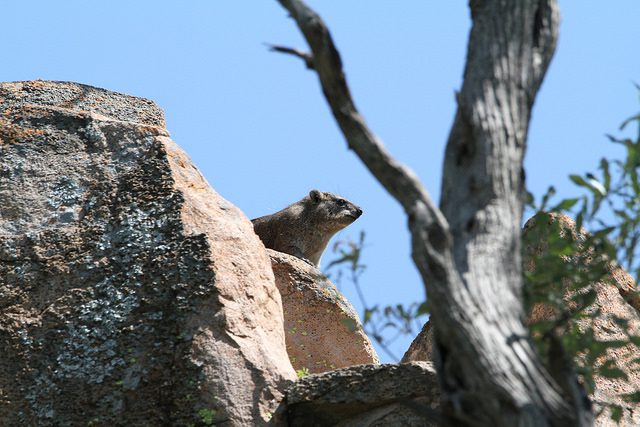
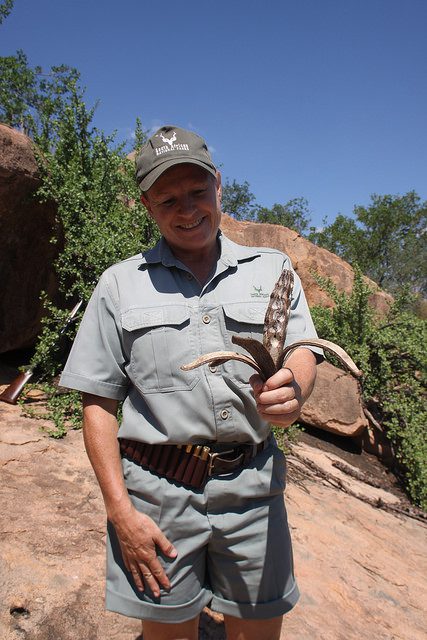
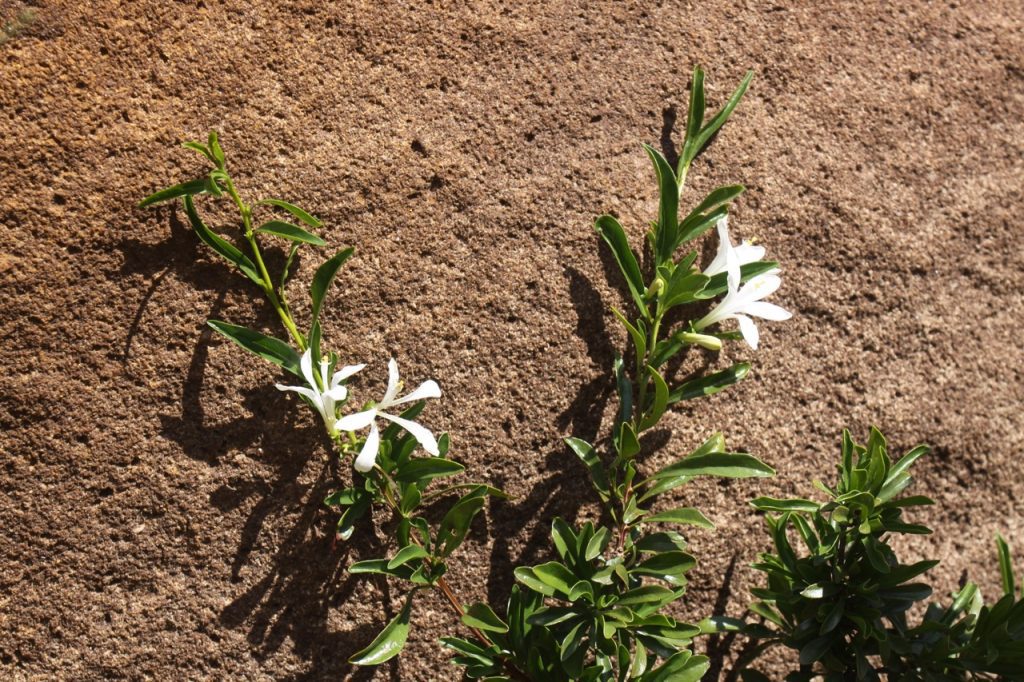
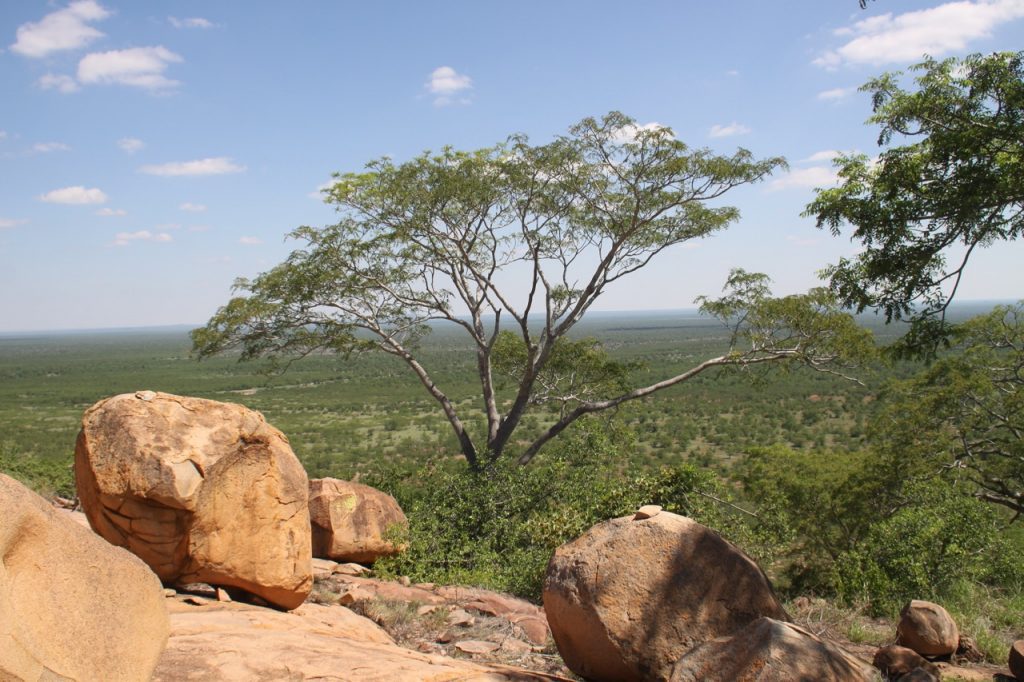
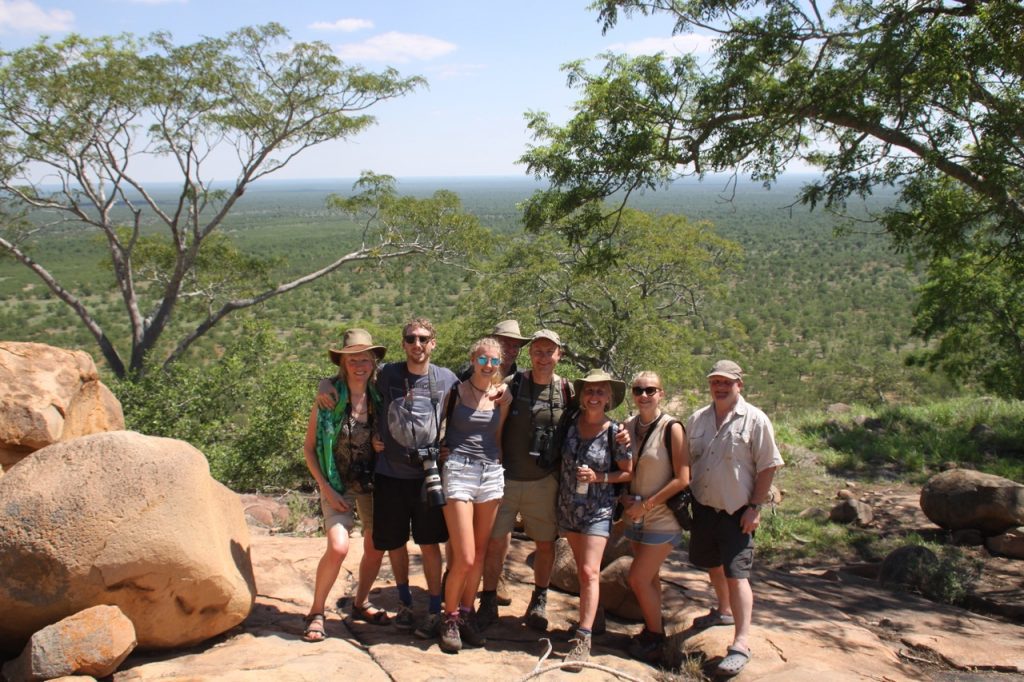
We continued North while Charlotte slept and caitlyn took elephant selfies.
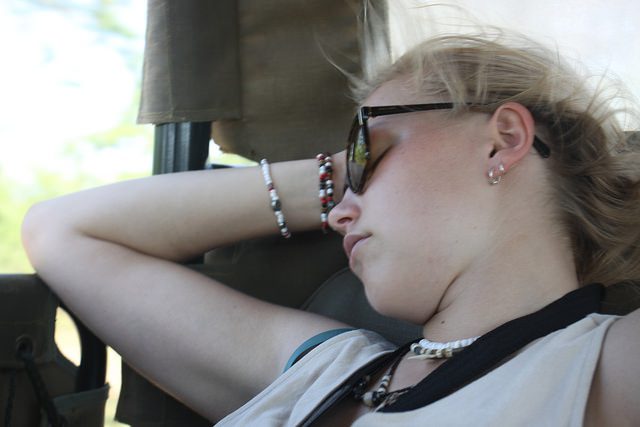
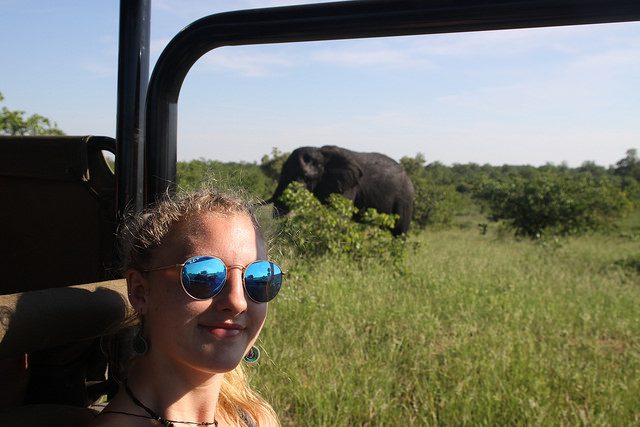
We saw some beautiful Nyala. There was a peaceful scene at the Punda Maria Waterhole. Looked like the elephant was having a nap!
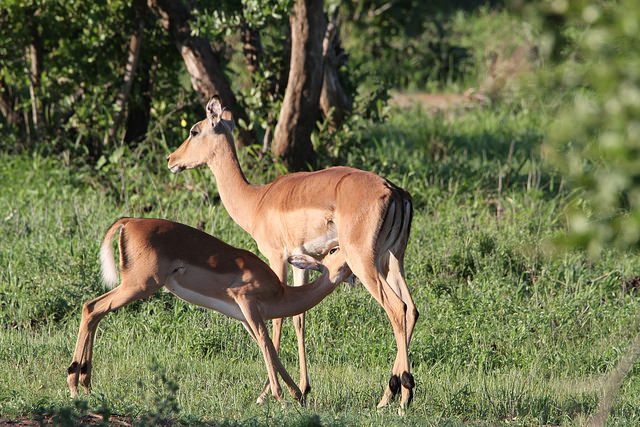
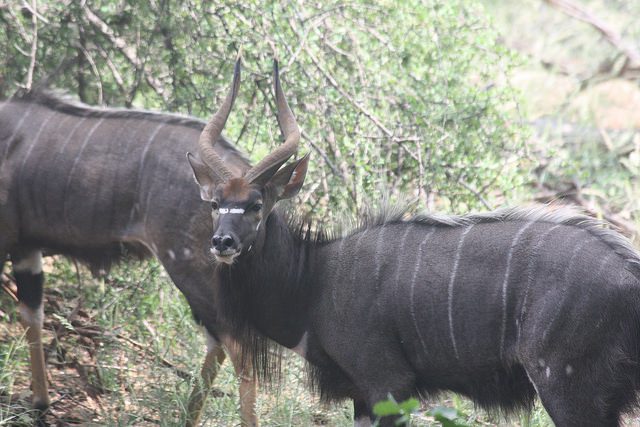
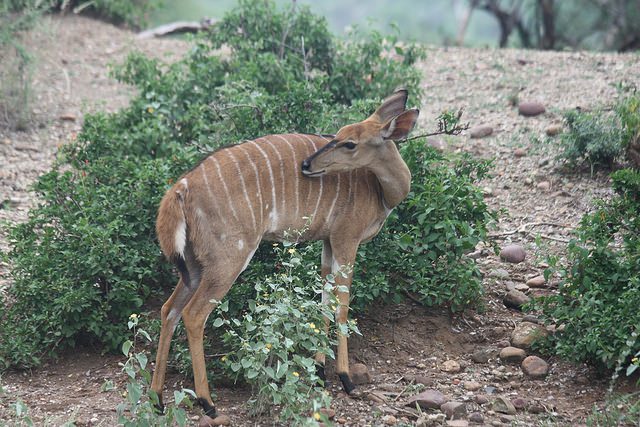
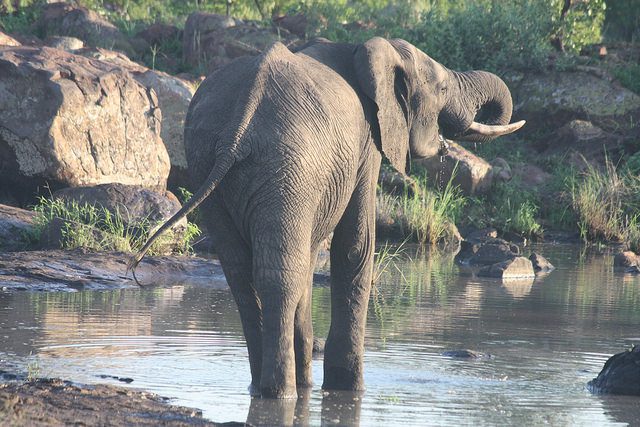
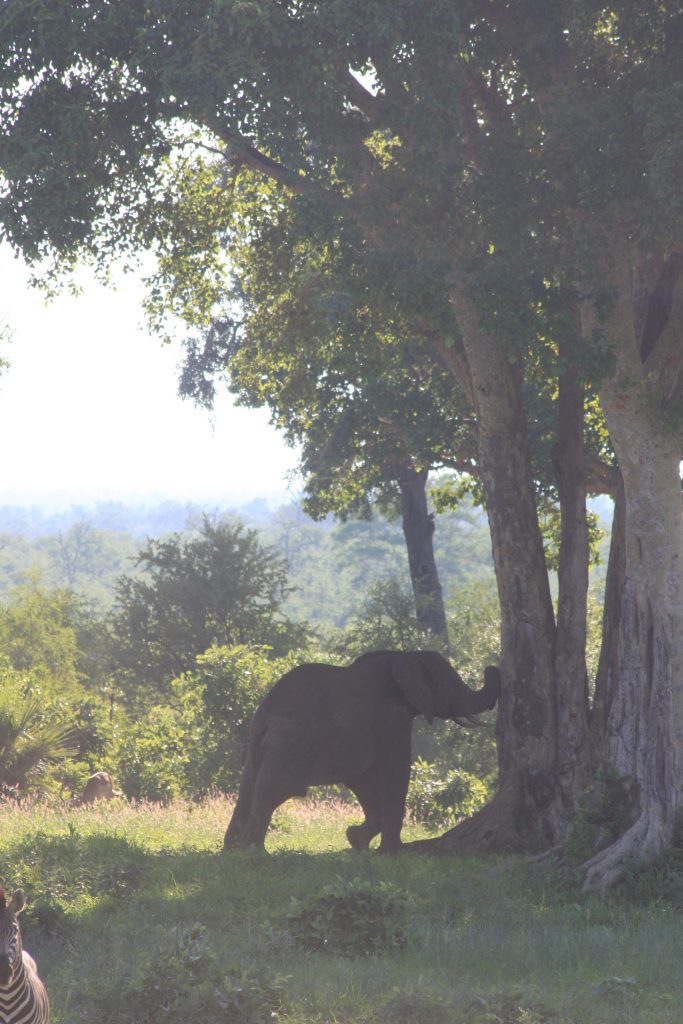
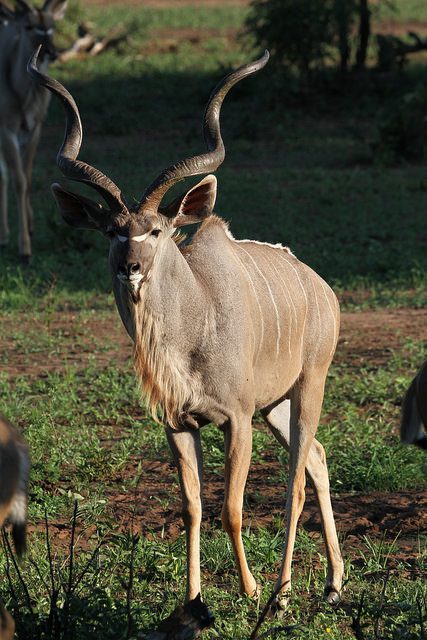
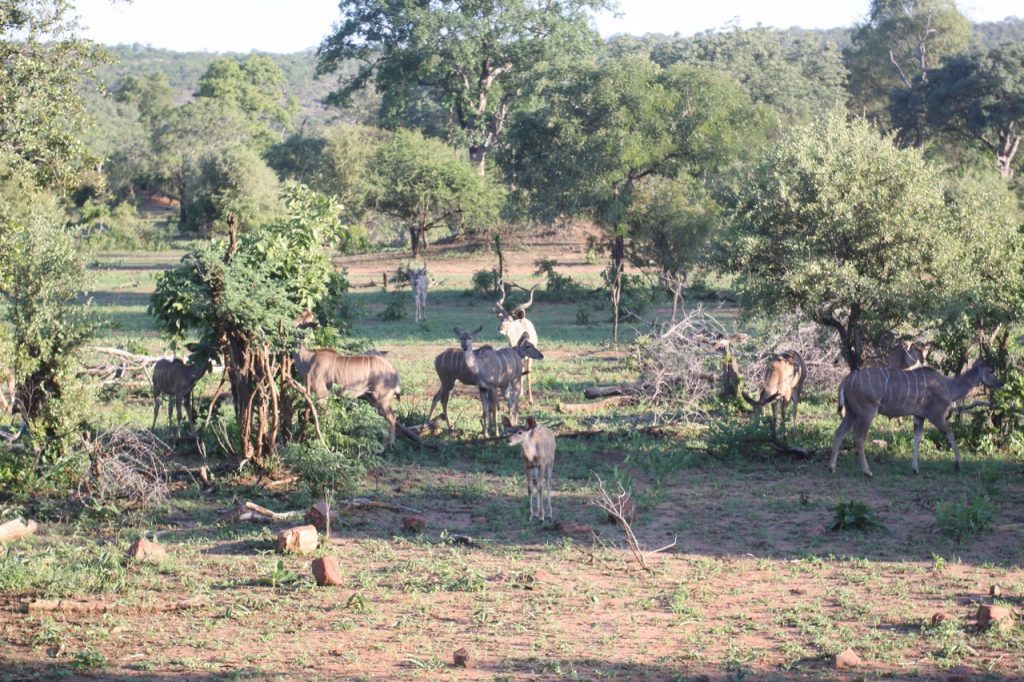
We had a quick pit stop at Shingwedzi (which is simply stunning)!! Pod of hippo, open billed storks catching mussels. Goliath Heron. Several www. Birds (white winged willows!). They were all too far to photograph effectively. But this pair of Wahlberg’s Eagles were closer (they migrate at this time of year to Southern Italy and Southern Spain and take their chicks with them!)
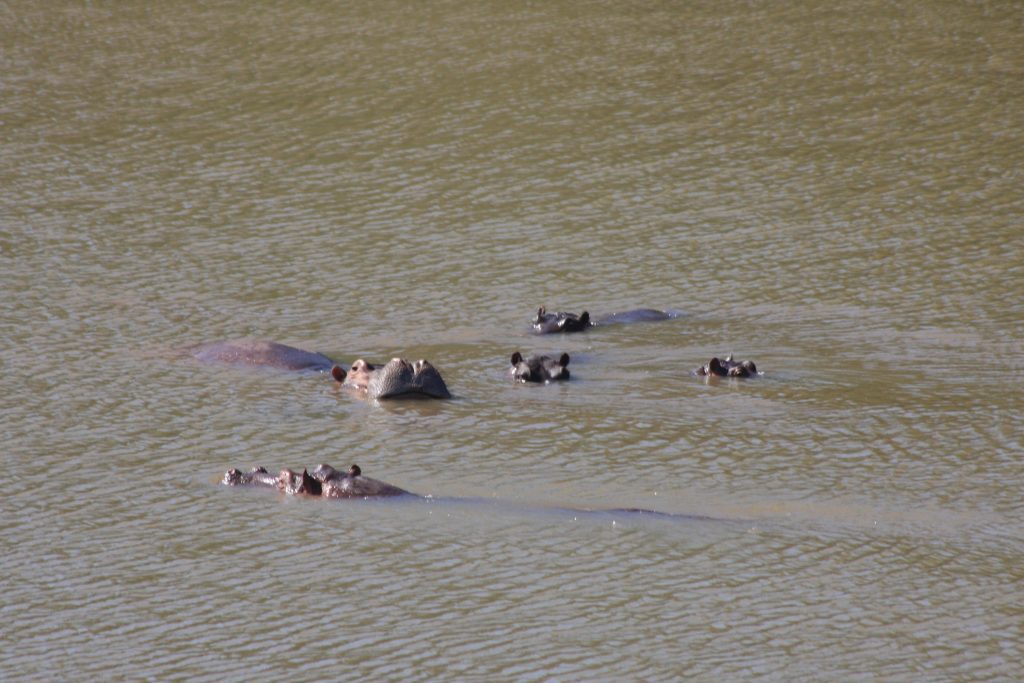
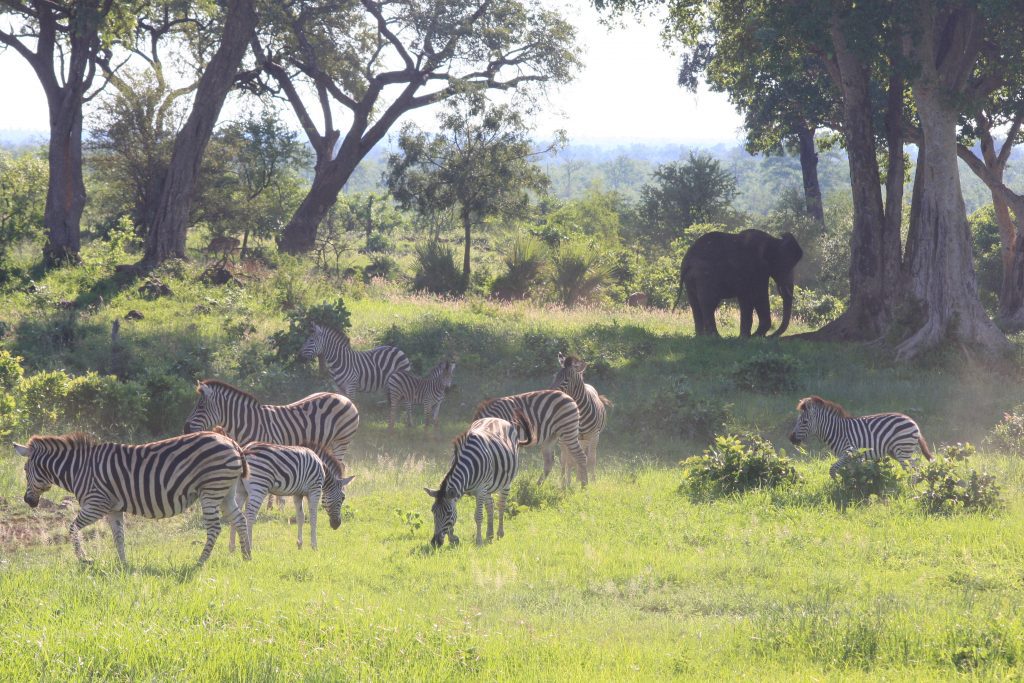
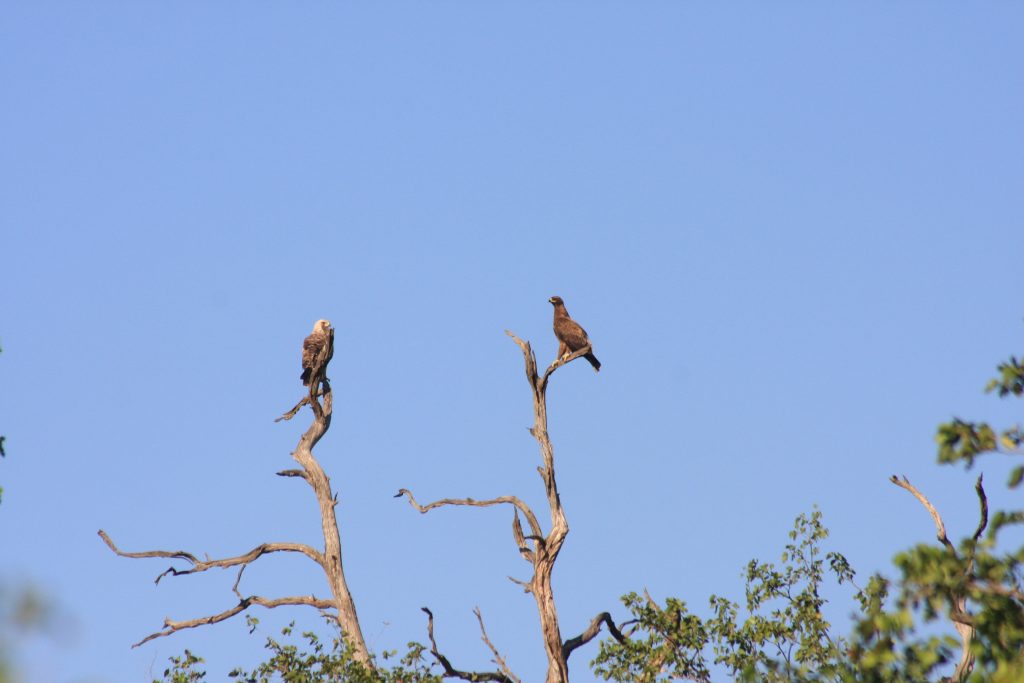
We stayed in the small old fashioned rooms at Punda. They have also built new tented accommodation which looked fab. We had a swim to cool down . We had great fun trying to photograph the highly active greater bush babies who were flitting from tree to tree above us. Unfortunately poor Jaco had felt dreadfully ill for the past two days and was suffering from a debilitating fever so he did the right thing and went to rest with an early night (Sadly we now know that this was his bowel cancer …) The rest of our group had a thoroughly enjoyable evening under the stars at the braai with Vanessa. We did giggle that Vanessa’s 16 year old son and our 17 year old Caitlyn really hit it off – they are both obsessed with nature and all living creatures so a match made in heaven! Teased ruthlessly by her 19 year old sister and 25 year old brother – shame!
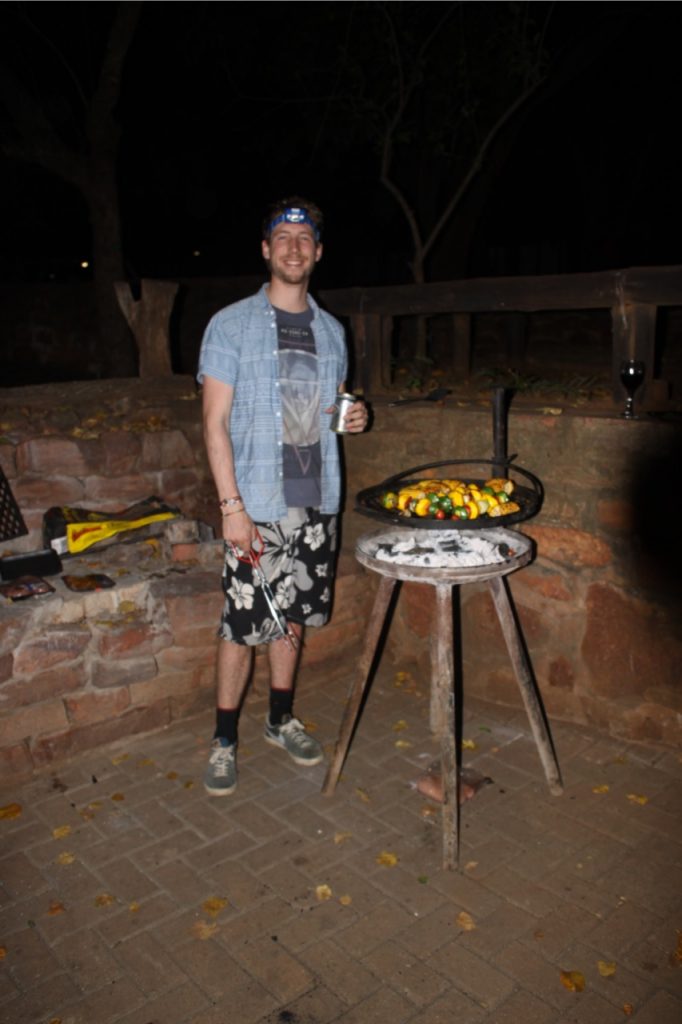
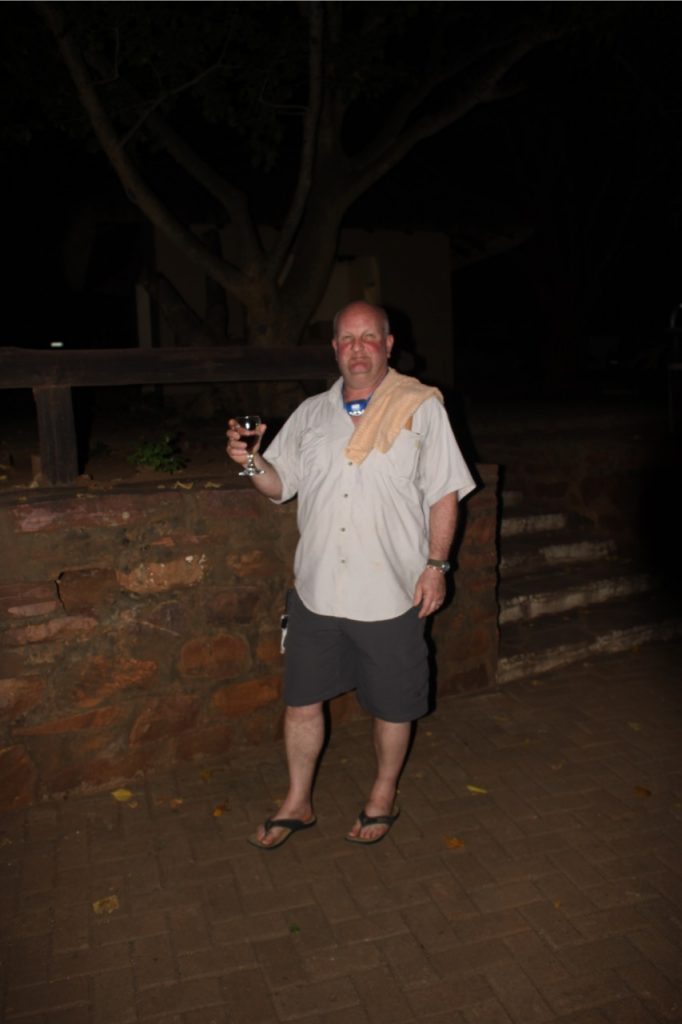

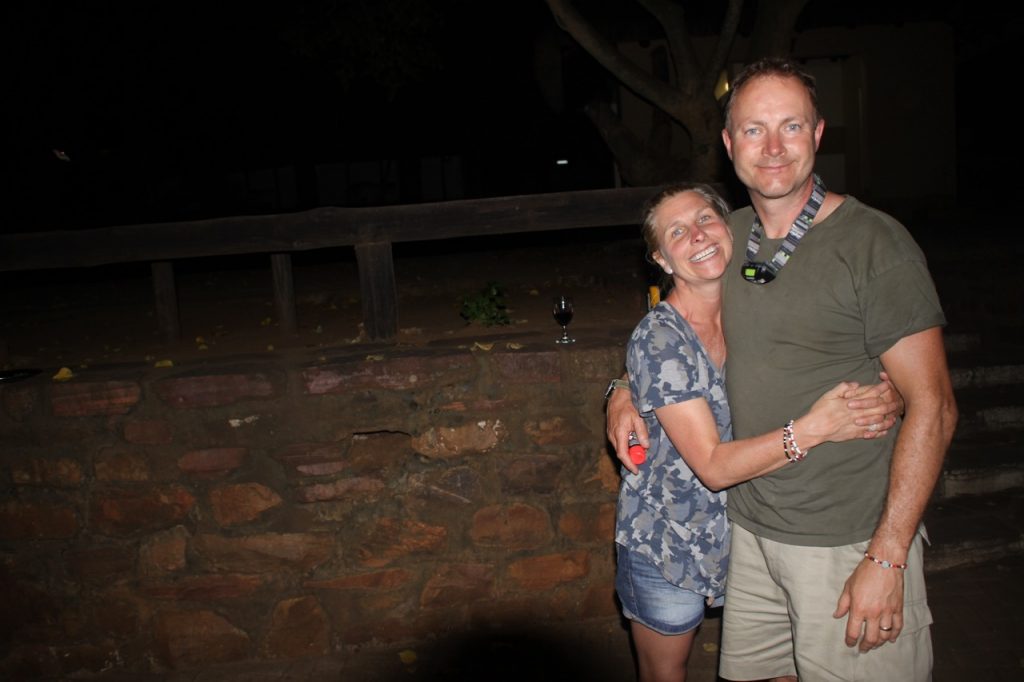
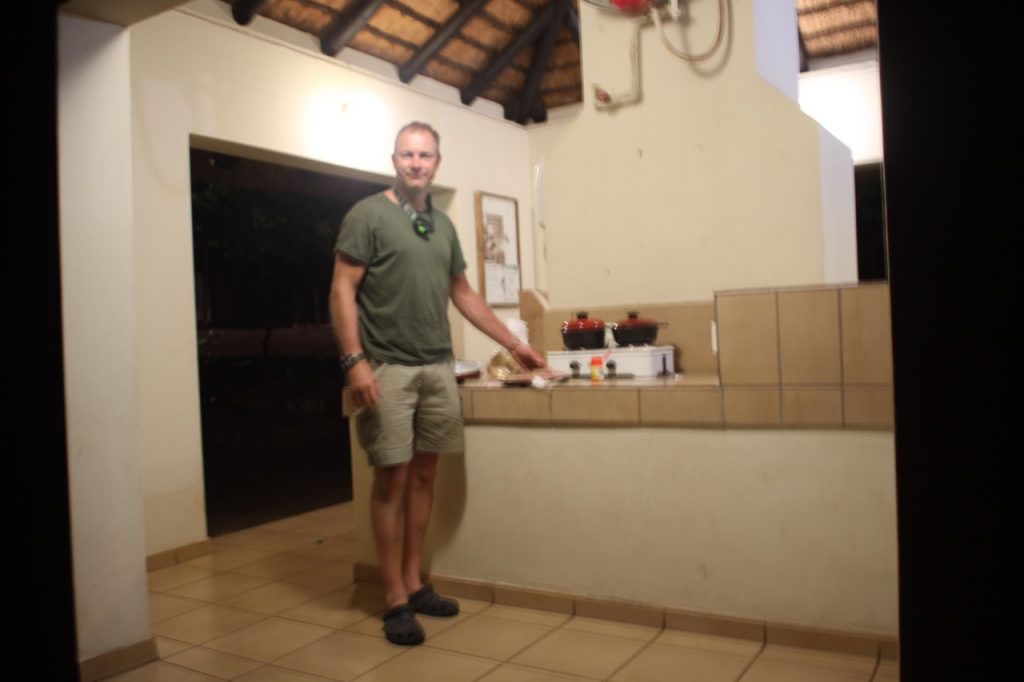
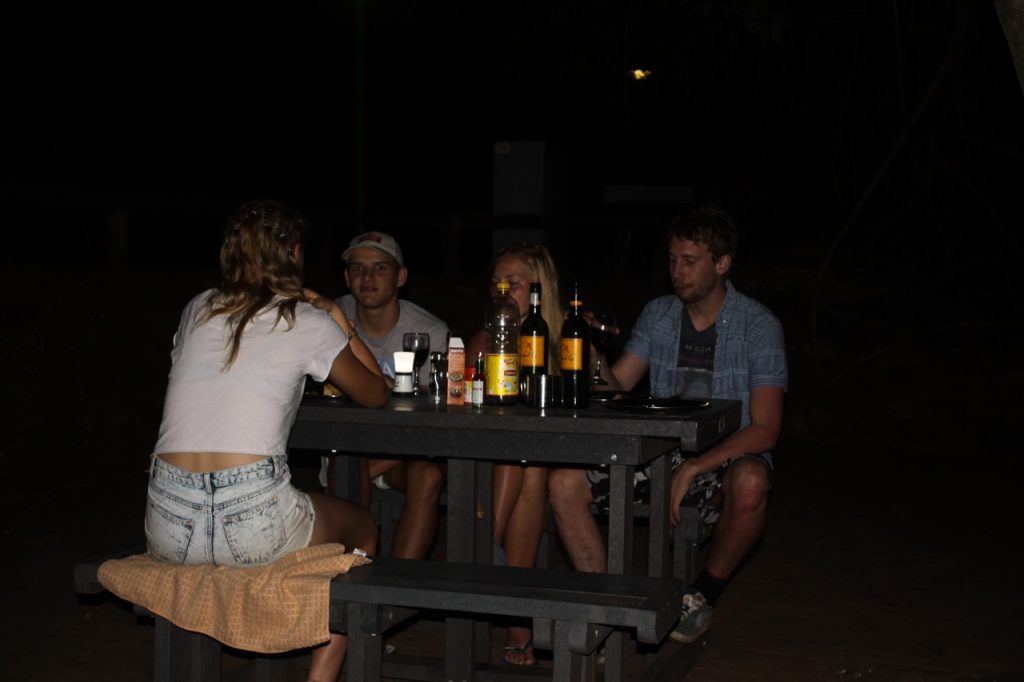
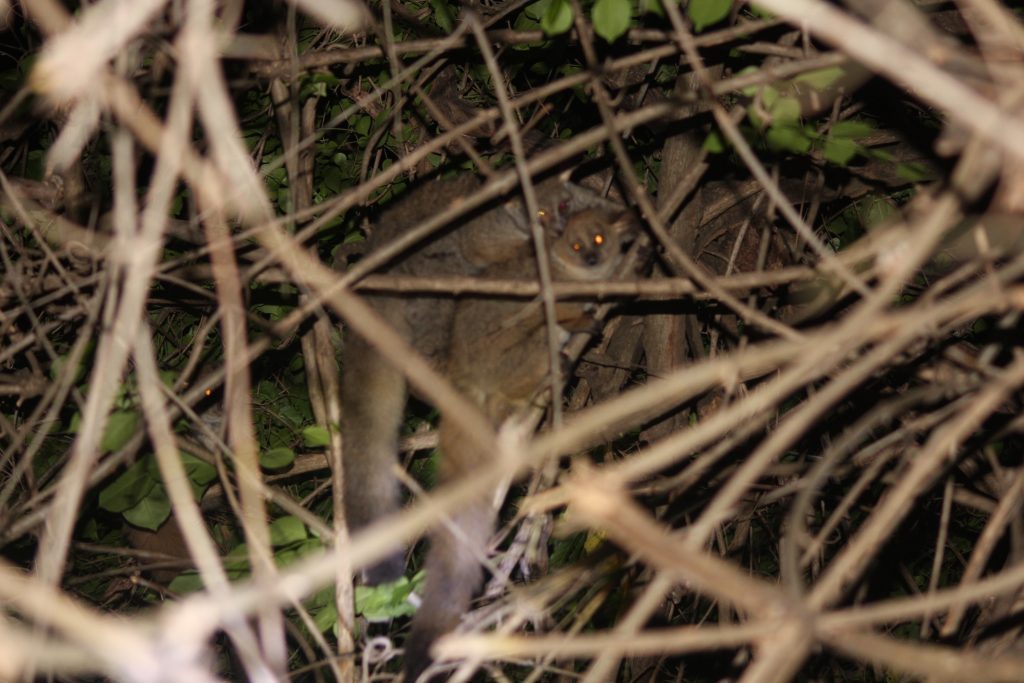
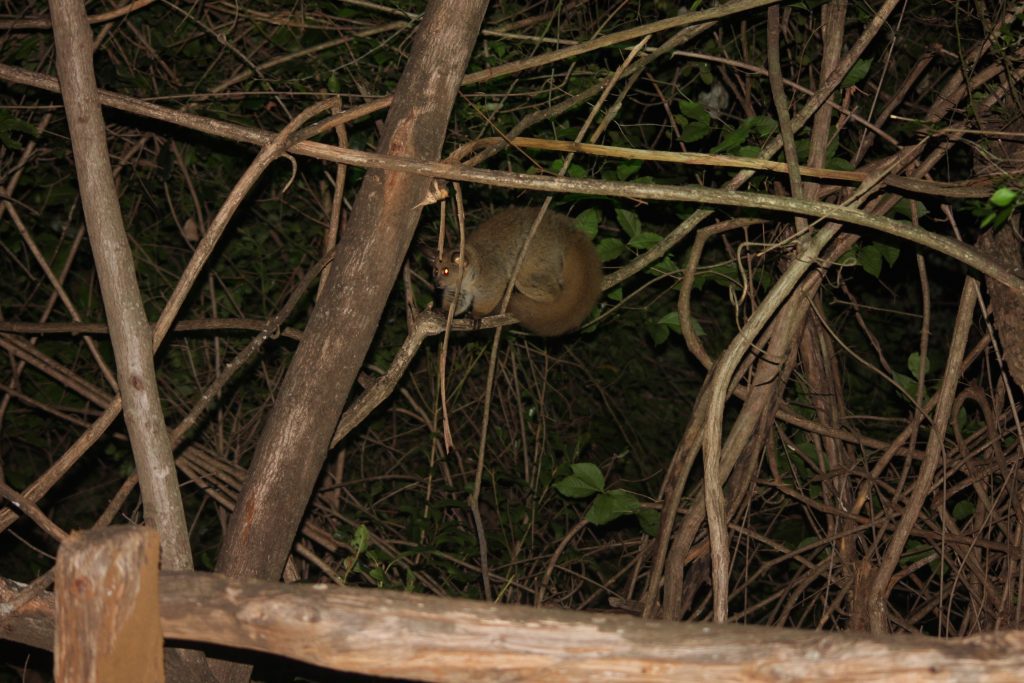
DAY 3 KNP: Saturday 2nd April 2016 – Nyalaland Wilderness Trail Area
As always, up bright and early and on the road at 6am. We had a very long and full day of walking ahead of us and wanted to avoid the heat of the afternoon as temperatures were expected to soar to the high thirties today. Jackson joined us as our tracker – a hugely experienced man who is a Shangaan and part of the extremely well trained and effective anti-poaching unit of SAN Parks. Almost immediately on the sand road Jackson picked up some unusual spoor: x5 tracks of illegal immigrants coming over the border from Mozambique who he said were here approximately 1 hour earlier – these guys walk through the night using the roads in extremely dangerous conditions having to avoid buffalo, lion and elephants on their perilous journey to escape poverty and to find a new life in South Africa. A call was made to the police to deal with the matter.
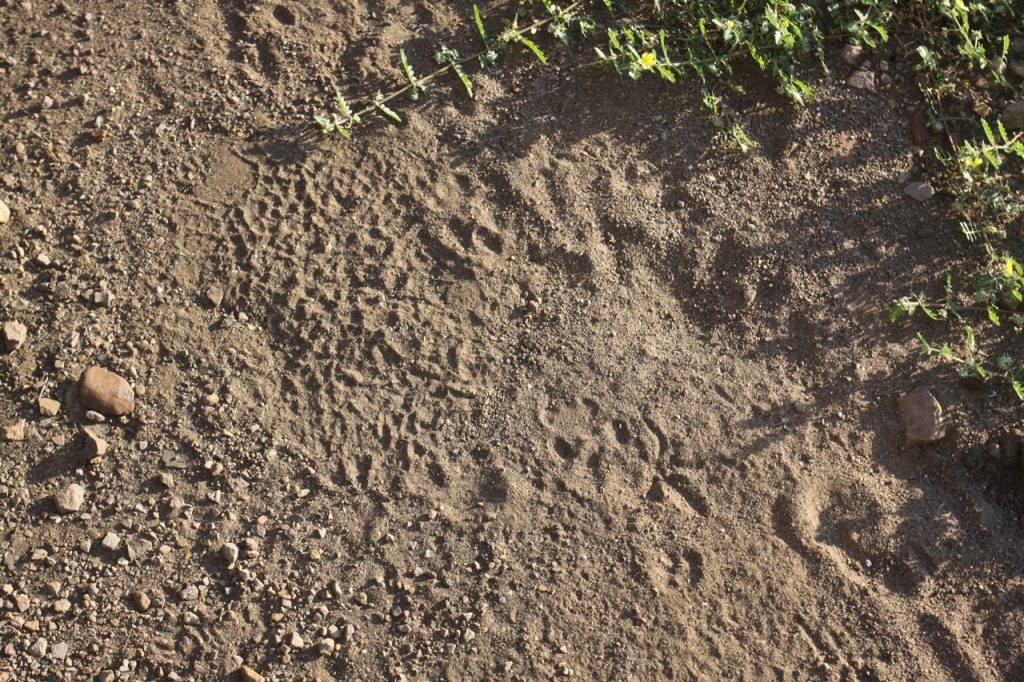
This extremely bad tempered dagga boy was on this road – they can be thankful that they did not meet him because it is evident from his broken horns and demeanour that he has serious anger management issues. Sorry – it is slightly blurry.
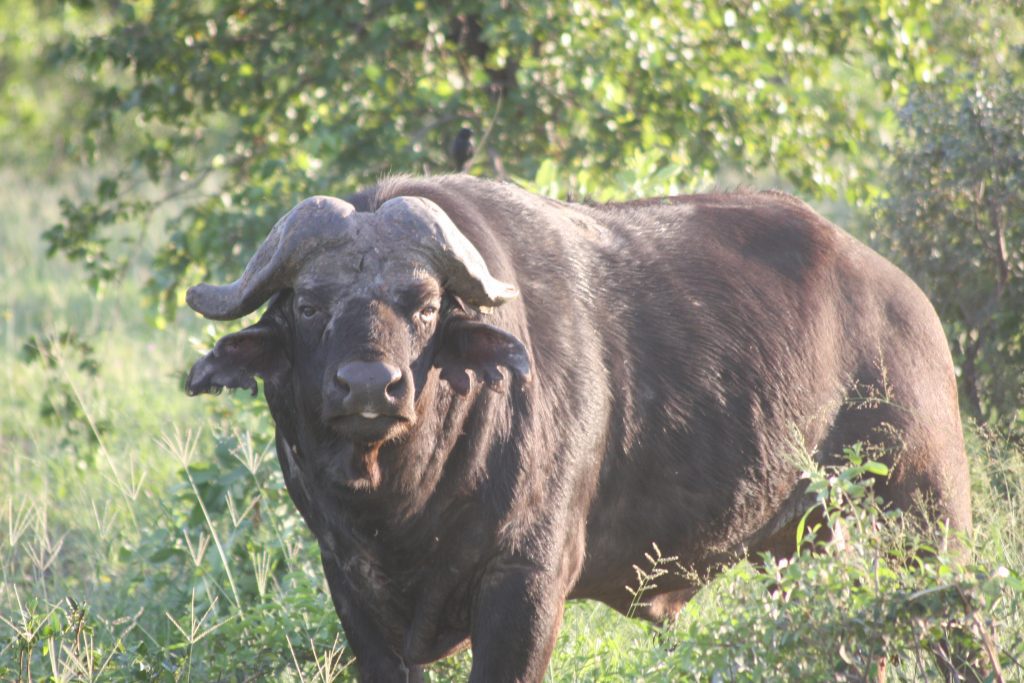
We continued on our journey, headed into the ‘no entry’ 4×4 track and headed to where the Madzaringwe stream flows into the Luvuvhu River, 48 Kms north east of Punda Maria – our destination being near the Nyalaland walking trail base camp to visit the Makahane Iron Age Site. We expected the journey to take us a maximum of two hours but as the base camp had been washed away during the floods of early 2013, the exact state of the ‘off road’ road was unknown and proved to be much worse than our guides had expected…
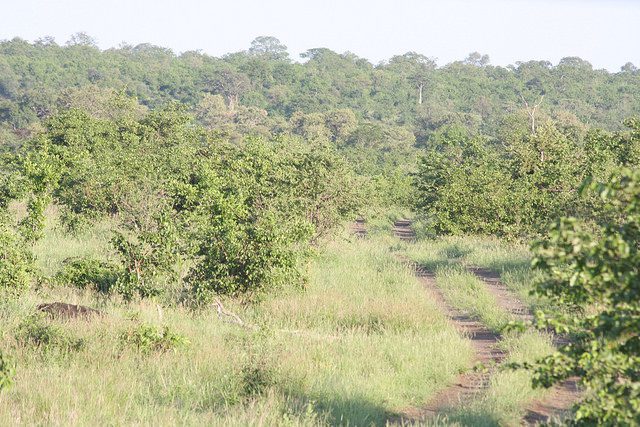
Today was not going to be smooth – we were met with a rather disastrous challenge – the road ahead had completely like vertebra fossil remains of a Massospondylus dinosaur. This early Jurassic dinosaur from 170to190million years ago was first described by Sir Richard Owen in 1854 from remains found in South Africa and was one of the first dinosaurs to be named. Massospondylus means ‘massive vertebra’ and refers to the bones of the animal’s neck. This most unusual plant-eating dinosaur had a tiny head at the end of a very long and extremely flexible neck. Like the practice of some modern birds, Massospondylus is believed to have swallowed stones (known as ‘gizzard stones’) to help grind up and digest plant matter. When the stones had worn smooth, the dinosaur would regurgitate them and swallow new ones. Evidence for this 7behaviour, namely piles of polished stones known as ‘gastroliths’, have been found in Massospondylus skeletons. The fossilised eggs of this dinosaur have also been found, six of them in South Africa in the 1970s. The eggs were opened many years later and found to contain near-hatchlings. As the young of Massospondylus were apparently born without teeth, scientists conjecture that adults probably cared for their young.washed away! But, as they say in Afrikaans “’n Boer Maak ‘n Plan”! – A Boer Makes a Plan! So we simply got out of our 10 seater safari vehicle and rebuilt the road! Trust me those boulders are seriously heavy! Vanessa impressed us all as she lifted them effortlessly without breaking a sweat – what a wonder woman! All in all this effort took us a good hour and finally it looked like we would have some traction for the two vehicles to cross (Vanessa was driving her SAN Parks vehicle behind us)…. We watched with baited breath as Jaco went first…. SUCCESS!! Then Vanessa went next… WOOHOO!

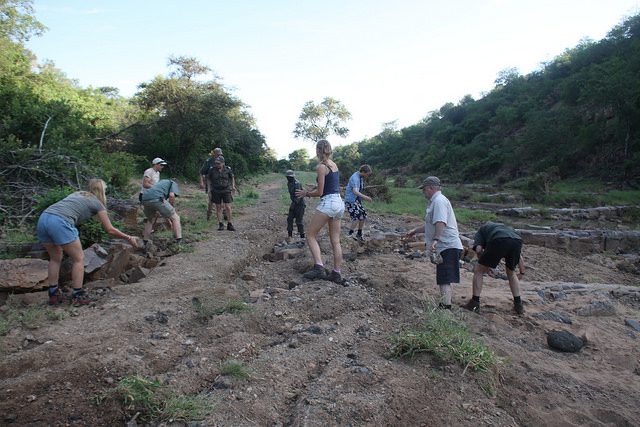
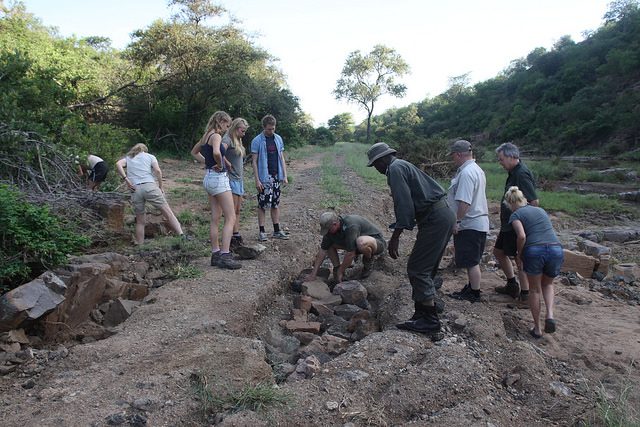
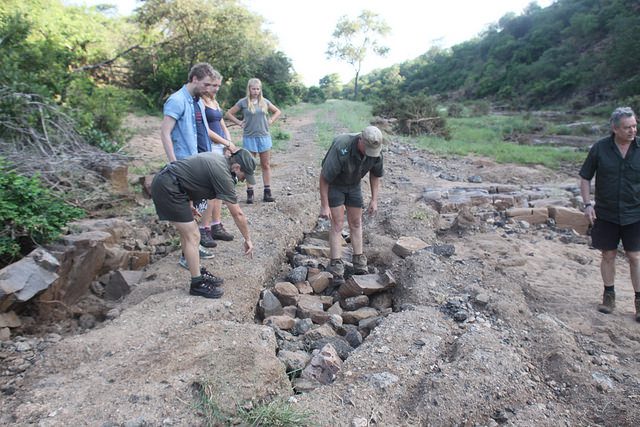
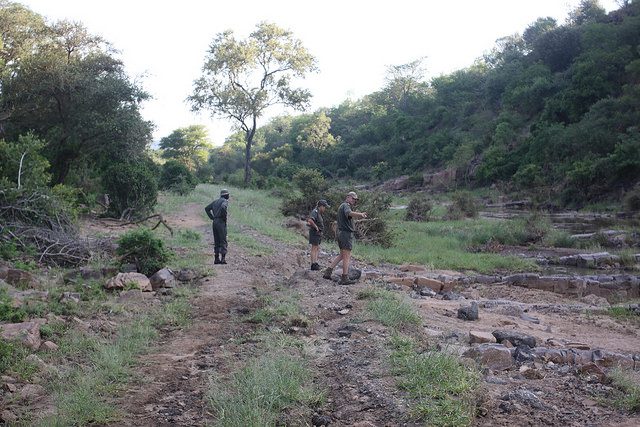
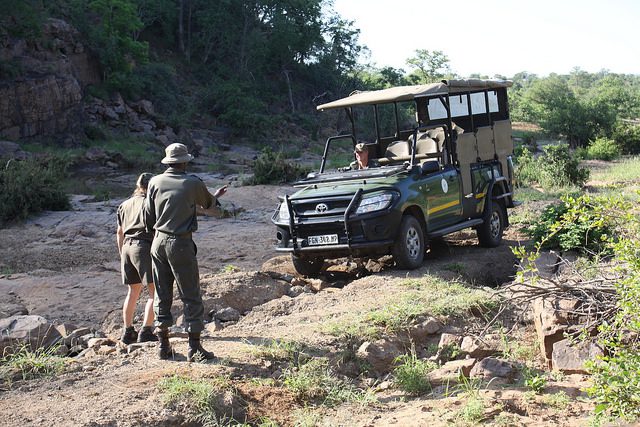
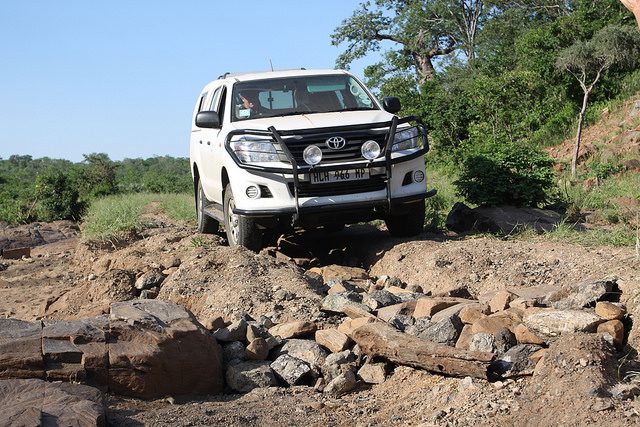
We were on our way again… Jackson once again almost immediately pointed out another surprising spoor on the road – this time it was that of a HUGE monster of a crocodile … and yes, you guessed it… the only body of water in the whole dry and arid area of this park was where we had been busily gathering boulders to rebuild the road…eeek! He must have been in that very body of water!! The tracks is so clear you can even see the imprint of its skin on the footprint next to Jaco’s hand. You can see where he dragged his tail back into water in the final photo …he must have been huge!
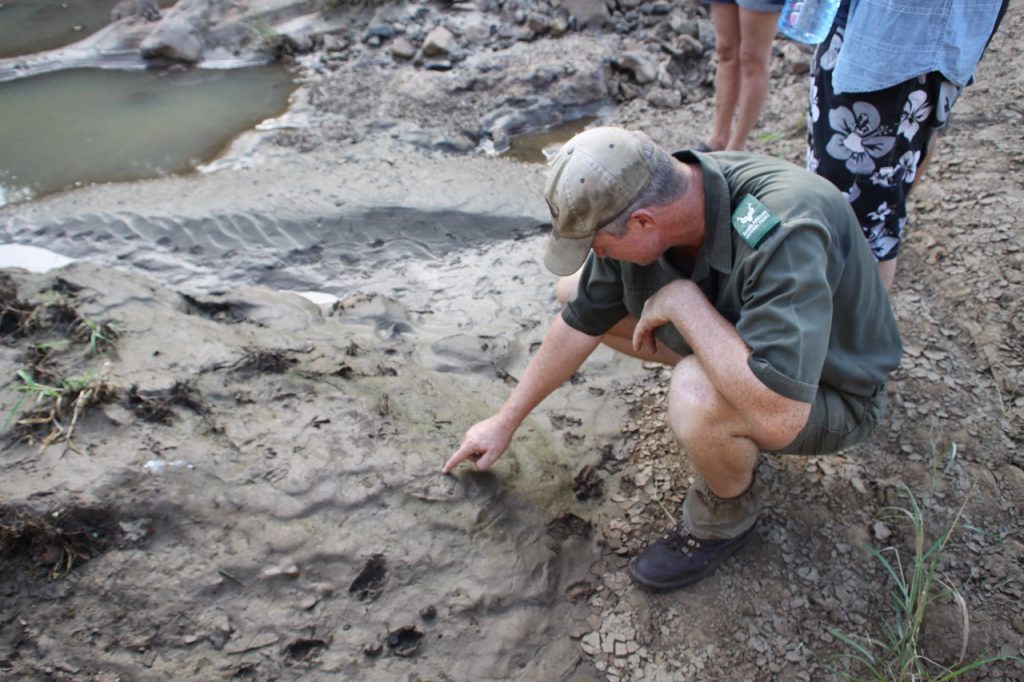
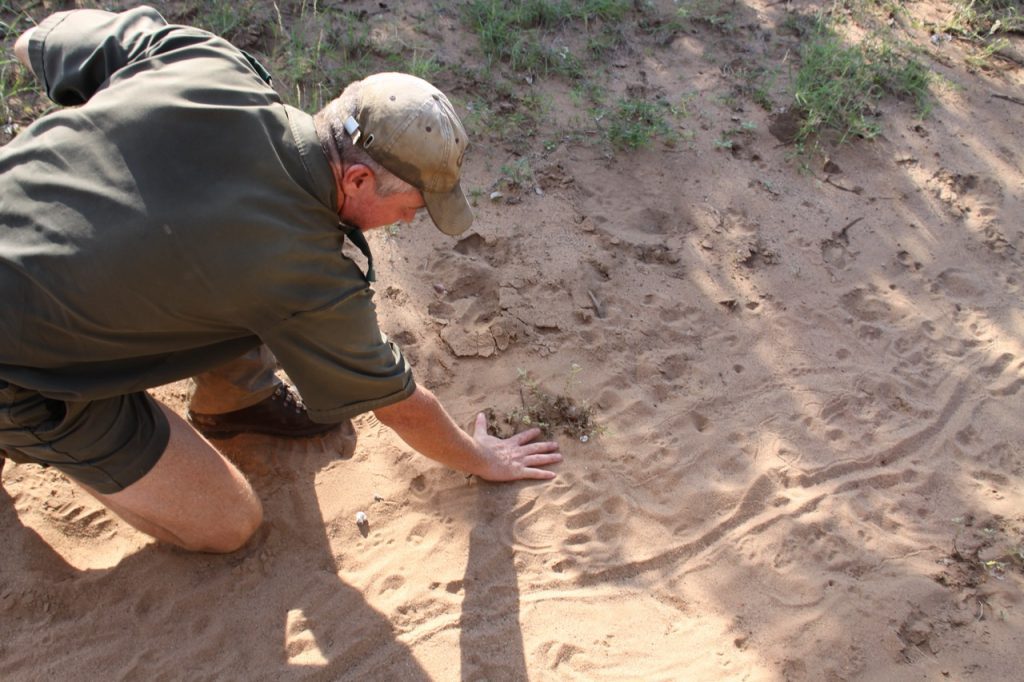
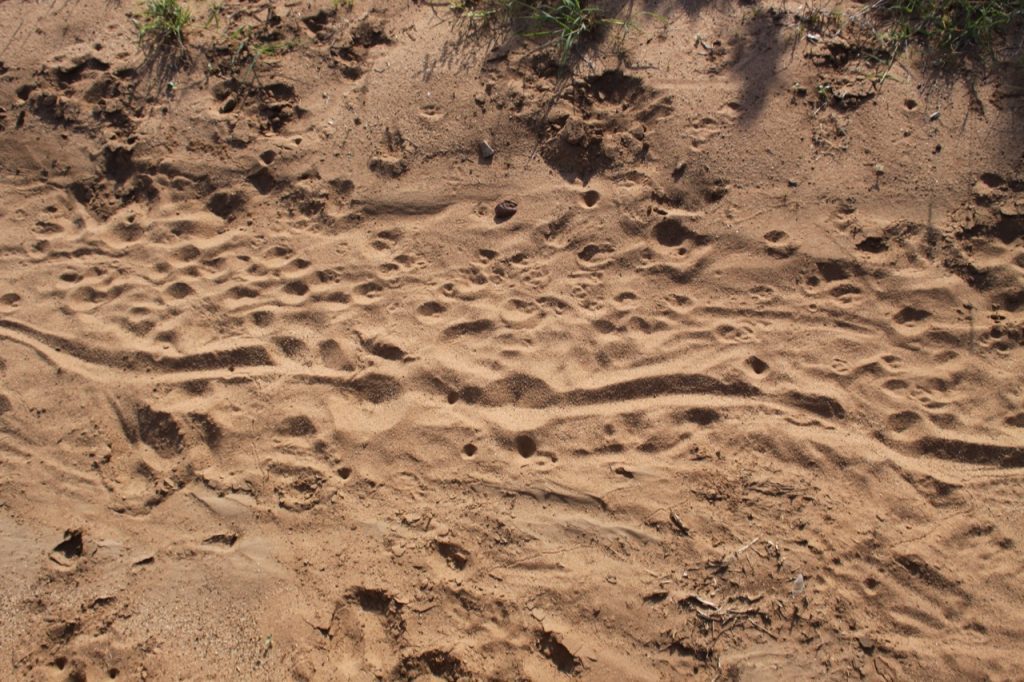
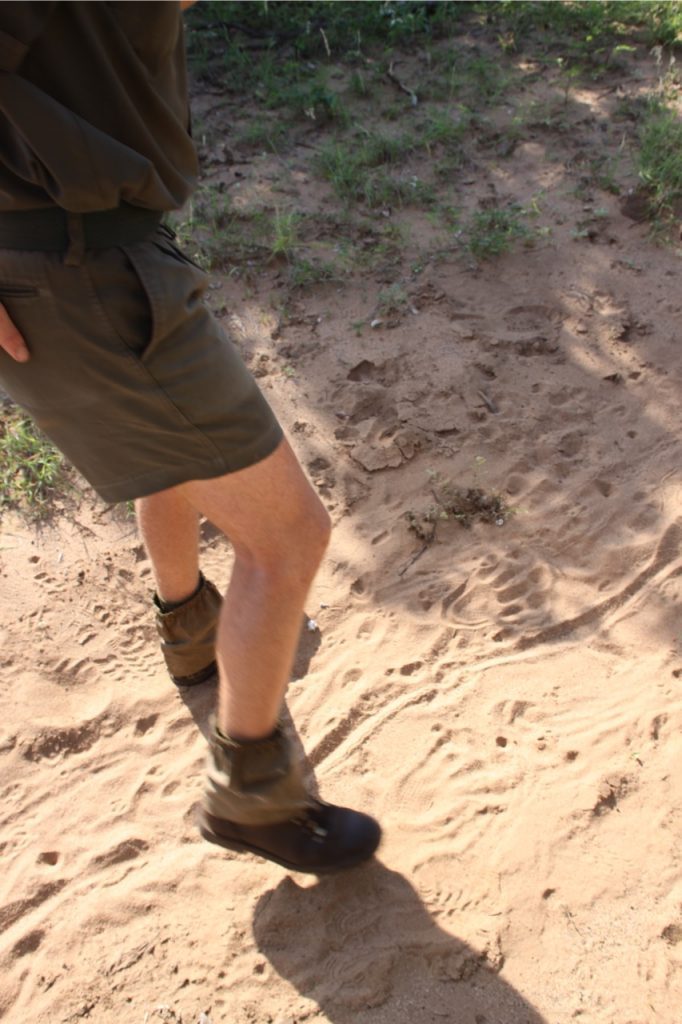
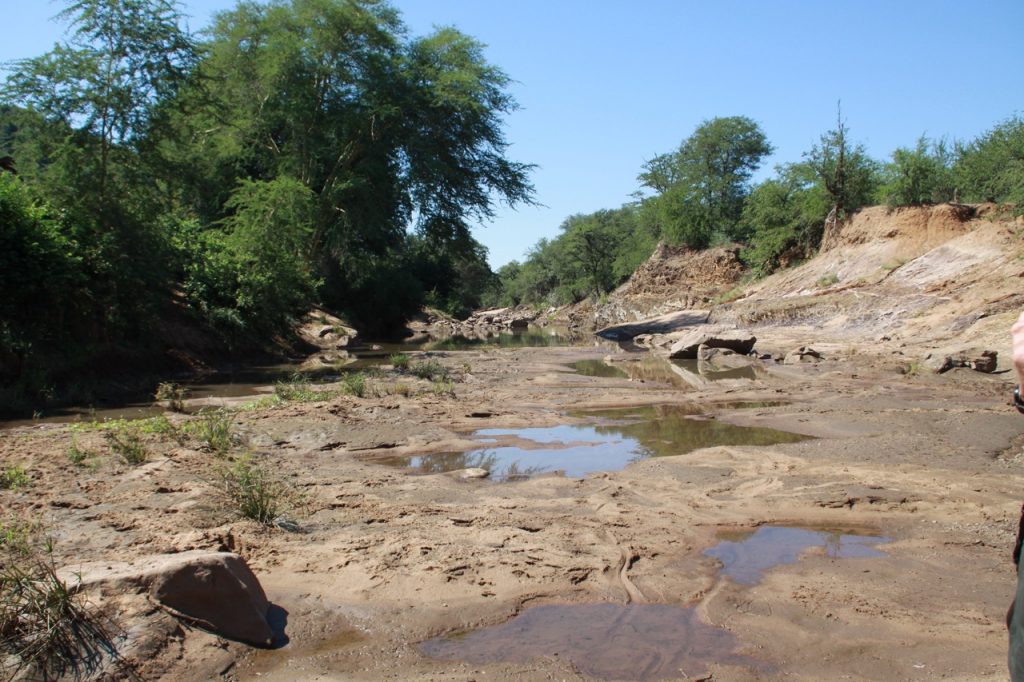
…500m later – yes, the road had washed away here too!! Fortunately this was only a small section in comparison with our previous road building and took only 10mins to repair. On we drove – it was interesting to notice how unaccustomed the animals are to vehicles in this very wild and remote part of the park – zebras galloping away from us, warthog fleeing with tails in the air! After a few more hairy dongas and skids in the dirt road we finally parked up and filled our backpacks with water and snacks, the heat of the morning already intensifying after our delay of unexpected road building. We set off on foot full of excited anticipation after a brief reminder of safety and walking in the bush.
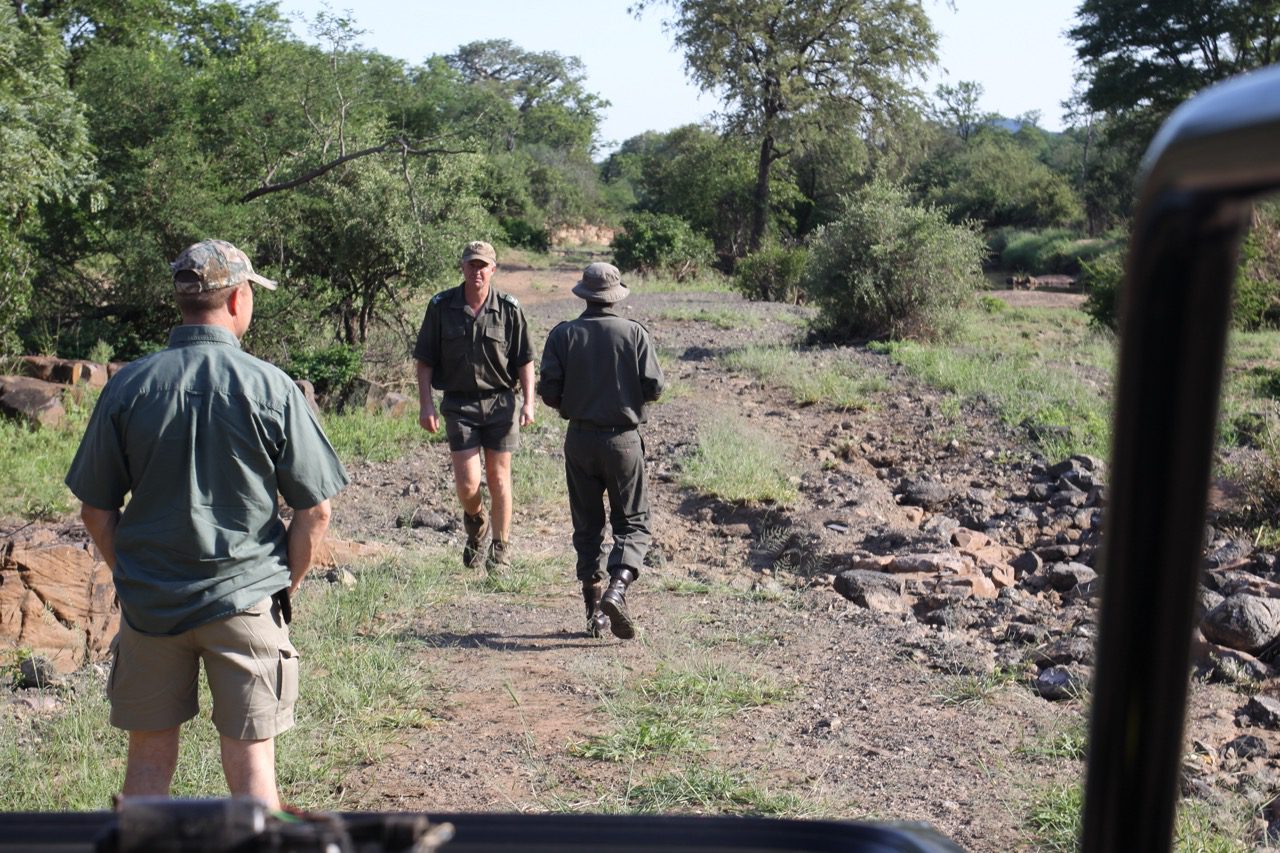
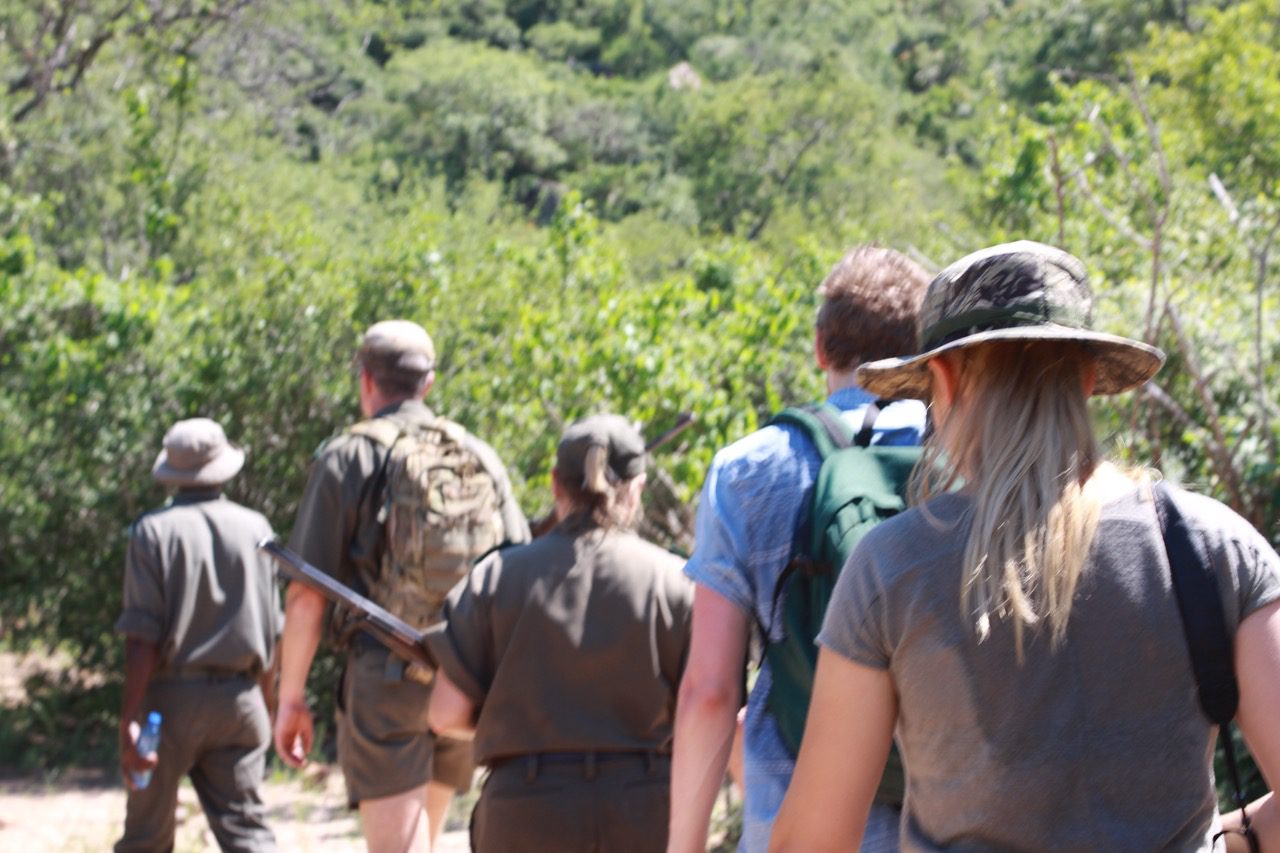
We were hoping to find 200 million year old dinosaur fossils!!! Almost immediately Jackson once again spotted an unusual spoor – what was it this time?!! His interpretation was this it was the tracks of x3 poachers – they all walk in a single track and on top of the leader’s footprints. He thought that they had come to collect water about an hour ago and that they were camping nearby as they had dropped some sticks etc. He told us not to be concerned as they were most likely bush meat poachers rather than the heavily armed *** or elephant poachers. Sadly there is no longer evidence of rhinos here – they have all been poached, but very disturbingly elephant poaching is on the rise and is posing a very real threat once again to the north of the park. The print is towards the bottom and in the middle.
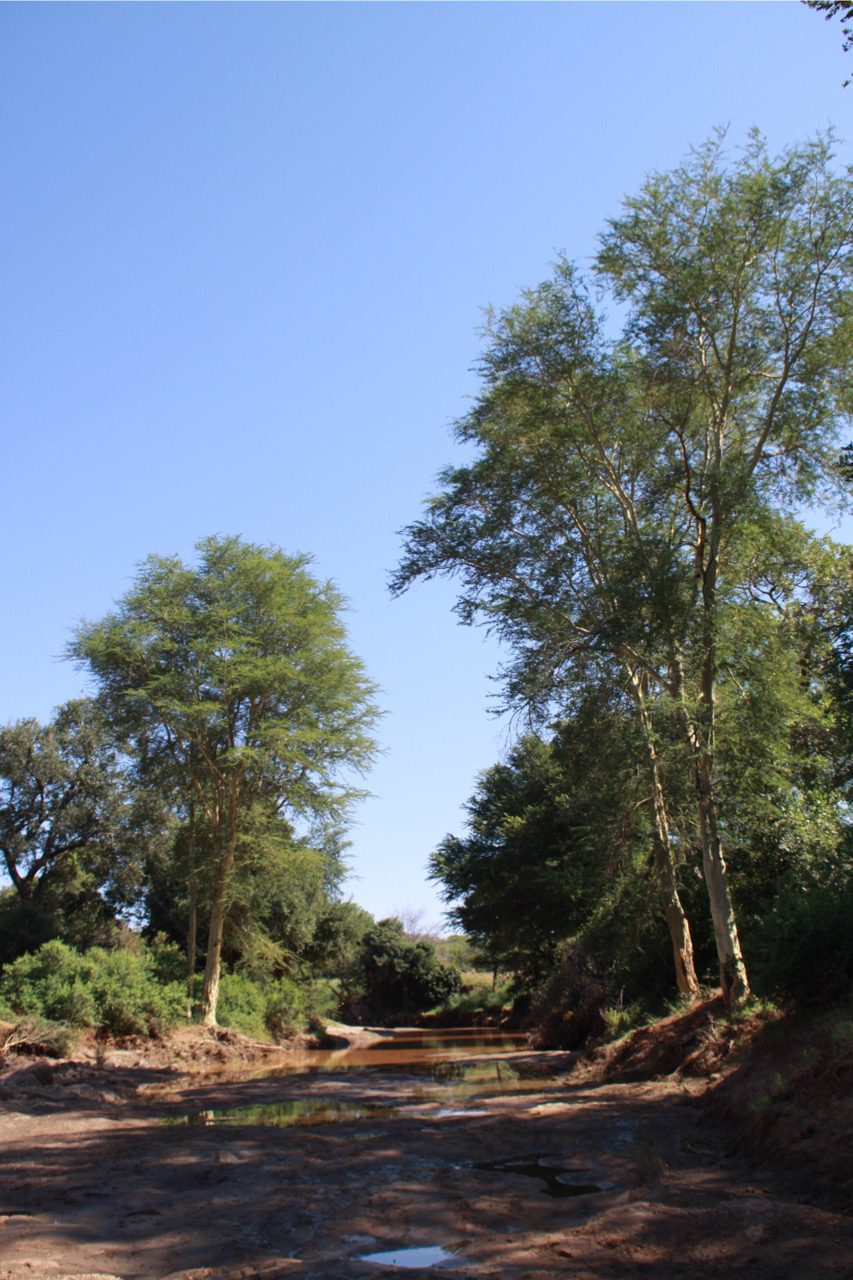
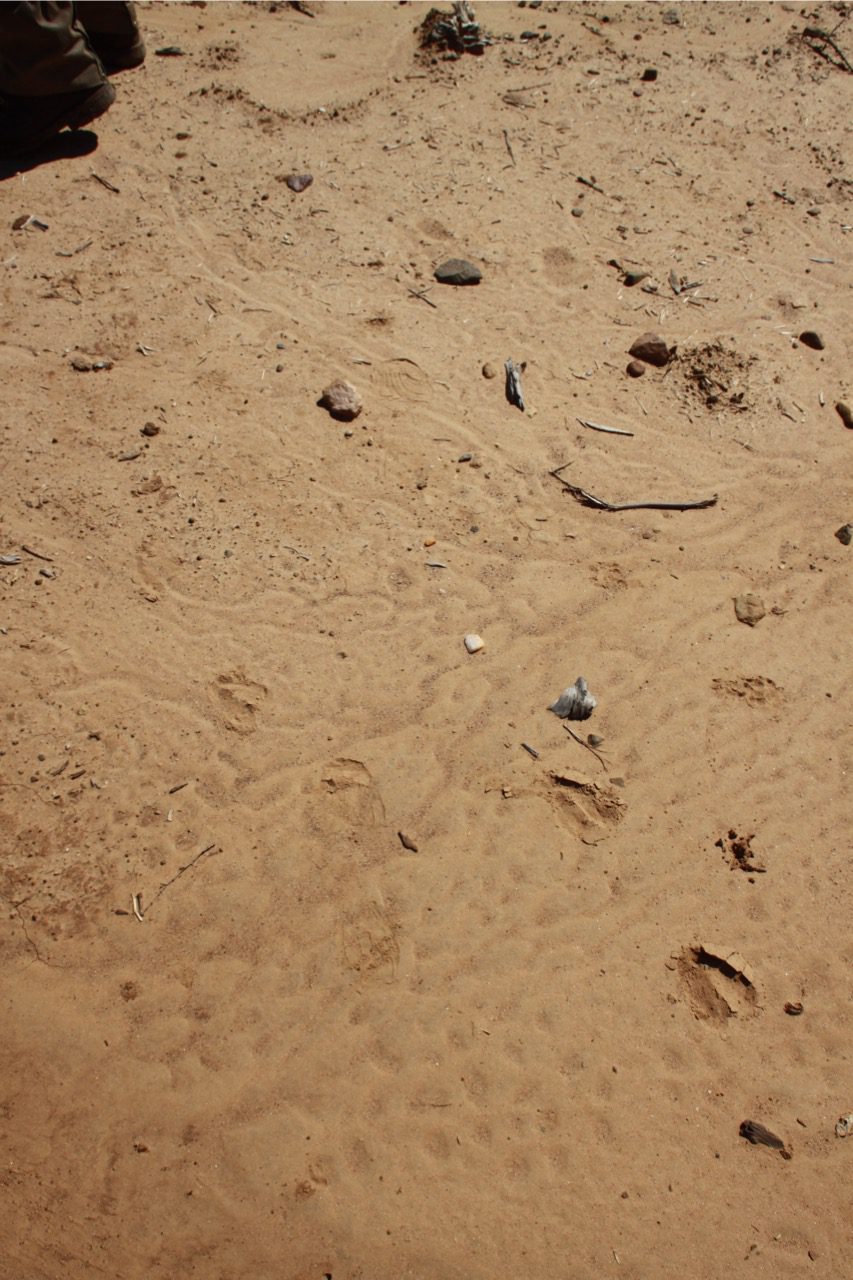
By now the heat was seriously intense at about 35C with the low slung mopane bushes offering very little shade and respite from the sun. A recent flash flood appeared to have relocated the fossils from their usual location and it felt as though we were walking in circles. Our earlier excitement and anticipation had dissipated somewhat with the concentrated sunshine. Just as we were seriously wilting and having a drink all trying to squeeze into a little bit of shade, Charlotte looked down and picked up what looked like an unusually shaped stone and asked what it was – EUREKA!! She had found what Vanessa said was a vertebra fossil remain of the Massopondylus dinosaur… which actually means ‘massive vertebra’ and refers to the bones of the animal’s neck. This plant eating dinosaur had a tiny head at the end of a very long and extremely flexible neck. They swallowed gizzard stones to help grind and digest plant matter and when worn smooth the dinosaur would regurgitate them and swallow new ones. These ‘gastroliths’ have been found in their skeletons. Now that we had found one fossil everyone’s interest was recaptured and we started scrutinising the floodplain and to our delight found extensive pieces of pottery and arrow heads.
This early Jurassic dinosaur from 170 to190million years ago was first described by Sir Richard Owen in 1854 from remains found in South Africa and was one of the first dinosaurs to be named. The fossilised eggs of this dinosaur have also been found, six of them in South Africa in the 1970s. The eggs were opened many years later and found to contain near-hatchlings. As the young of Massospondylus were apparently born without teeth, scientists conjecture that adults probably cared for their young. Fascinating and quite surreaal to think that they had wandered these same plains which we were now traversing….
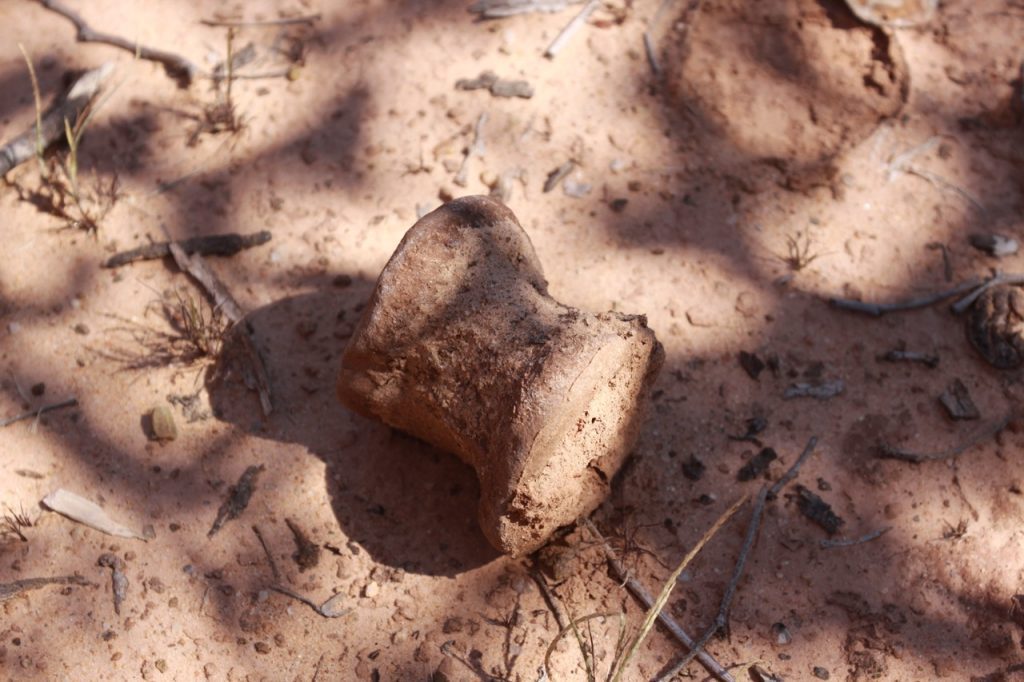
Jaco and Vanessa gently urged us to continue with the walk as we still had a lot of ground to cover to reach Makahane. We trudged wearily on in the overwhelming heat following an elephant trail and looking warily out for dagga boys. By the time we reached the base ridge of the Clarence Sandstone where the Iron Site is situated it was approaching 40C! A fairly steep climb rewarded us with an amazing view of the Levuvhu River and the flood plain below. It was incredible: Stunning, wild, remote – what a privilege to be here.
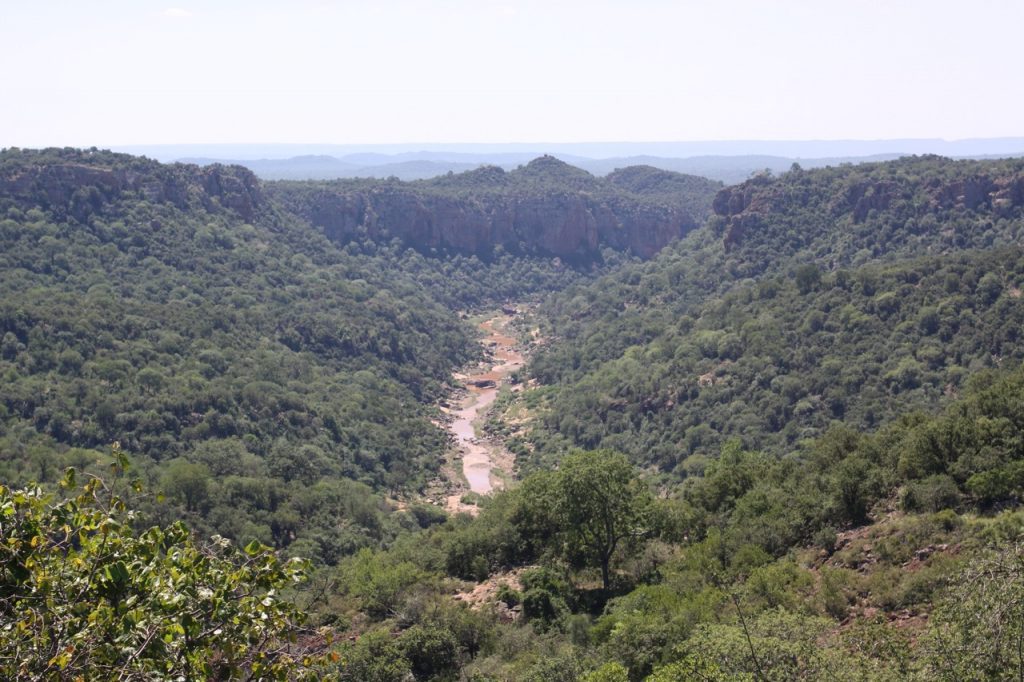
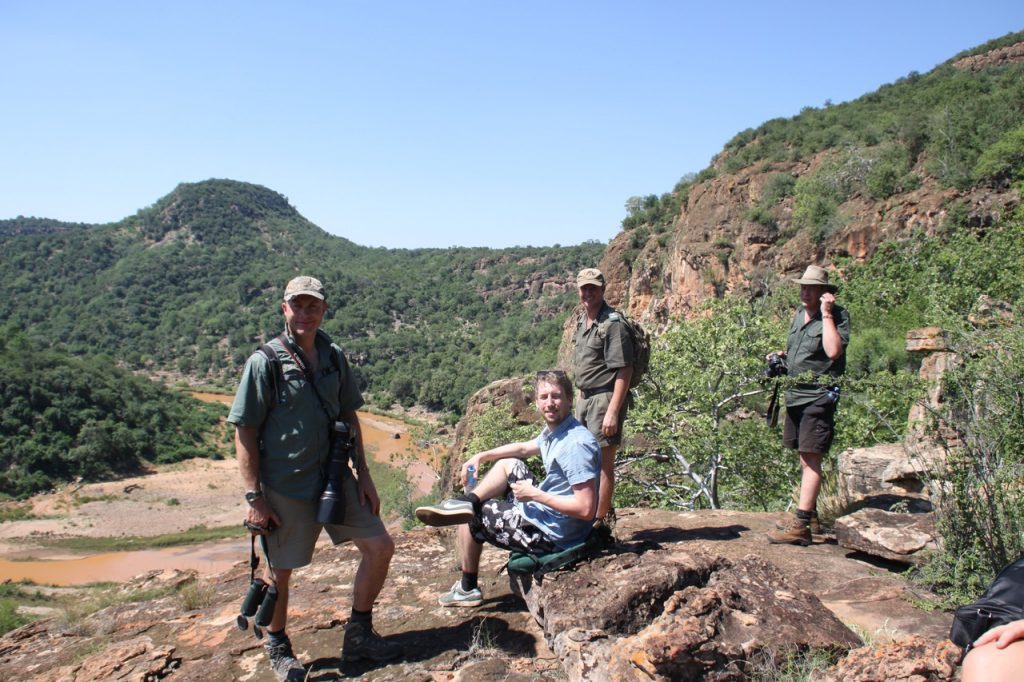
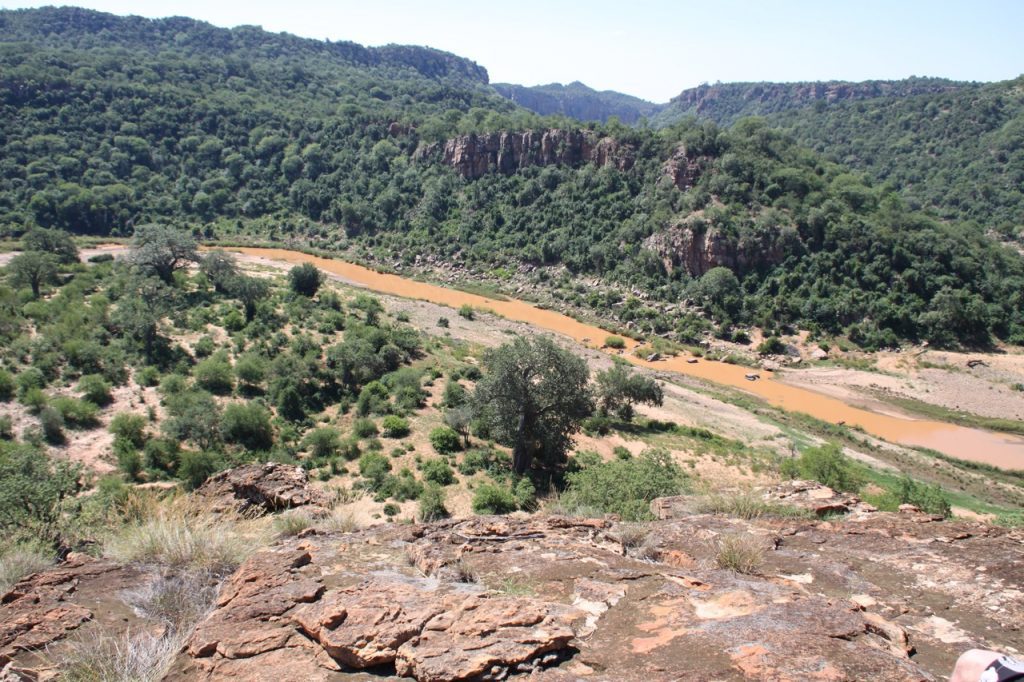
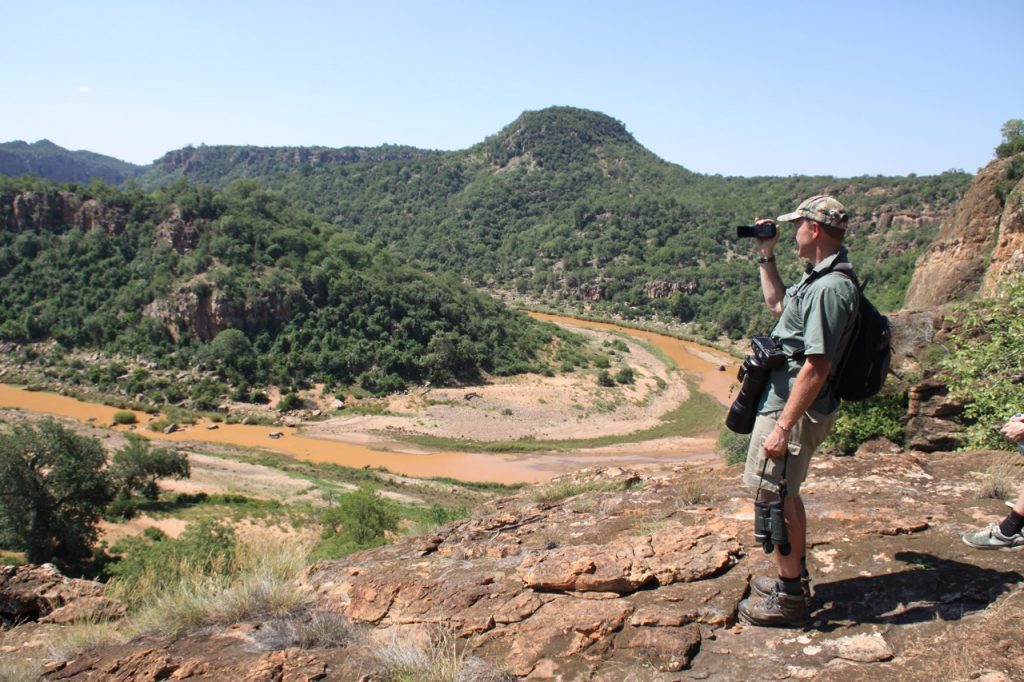
The chief’s kraal was situated on the hill top overlooking the Levuvhu and the commoner area on the eastern and western slopes. Unlike, Thulamela, this site has not been rebuilt. Apparently, despite the fact that Makahane was reportedly extremely cruel, his descendants visited the site up to the middle of the 20th century to offer sacrifices and pray. From ethnohistorical investigations it seems the site was occupied from the 17th to 18th or early 19th century.
We thirstily downed some water and ate our snacks before going on to take a look at the stone walling where the chief’s kraal had been situated overlooking the river and the commoners land on the eastern and western slopes. These ruins date back to the 1400s!! Makahane was a very cruel and unpopular chief. For petty offences and for his pleasure Makahane would have his subjects thrown off a cliff on the northern side of the hill with a sheer drop of about 60m. He was eventually killed by his brother Nelome who was pretending to do a war dance and stabbed him on the orders of their father who had heard of his inhumanity and cruelty. His people rejoiced at his demise.
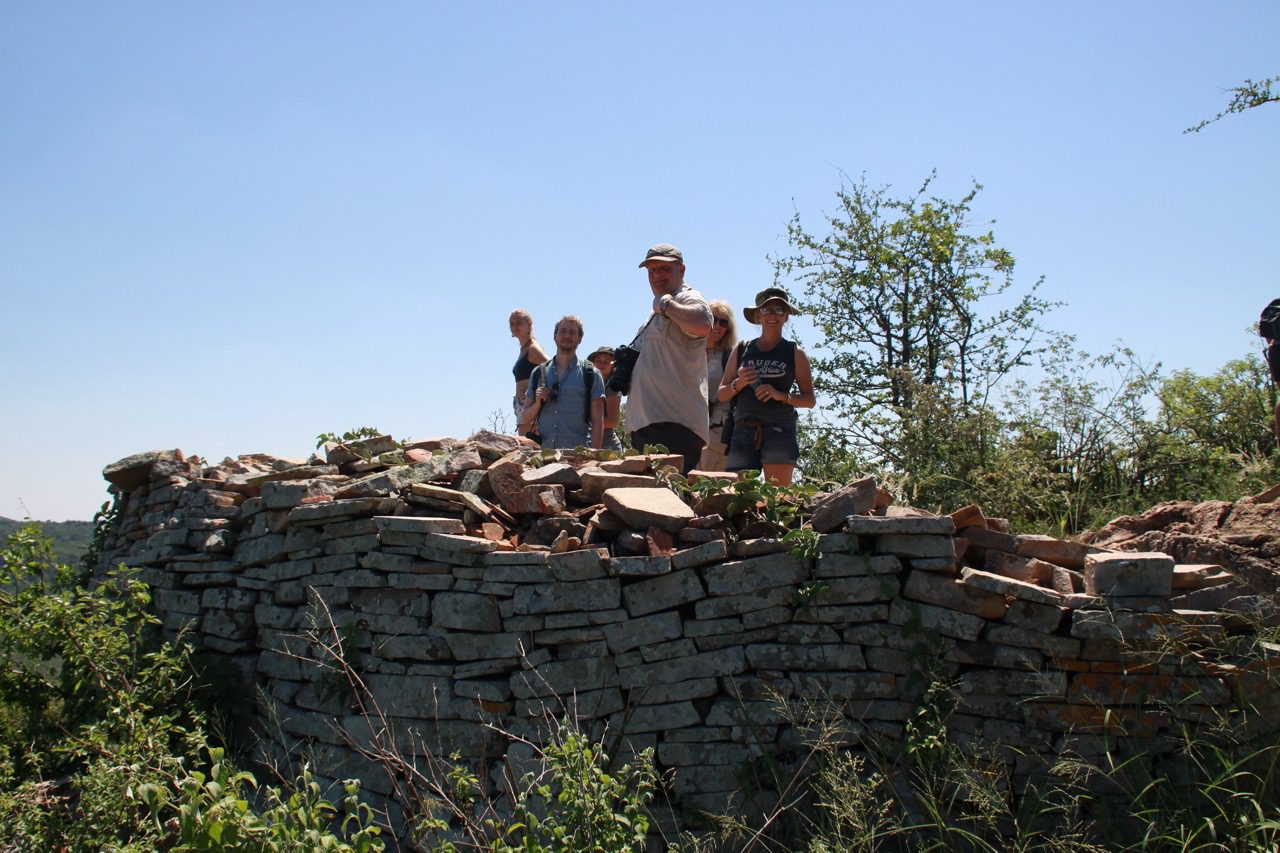
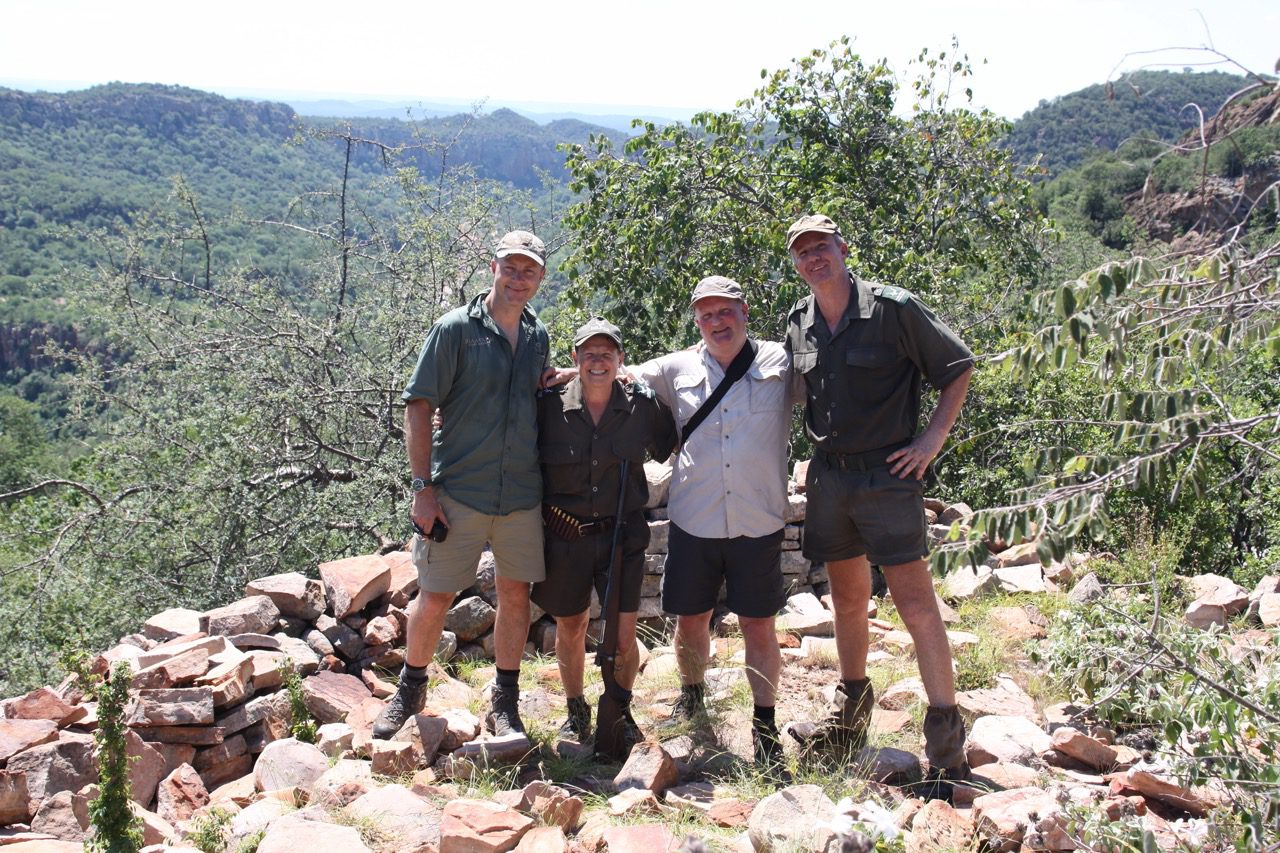
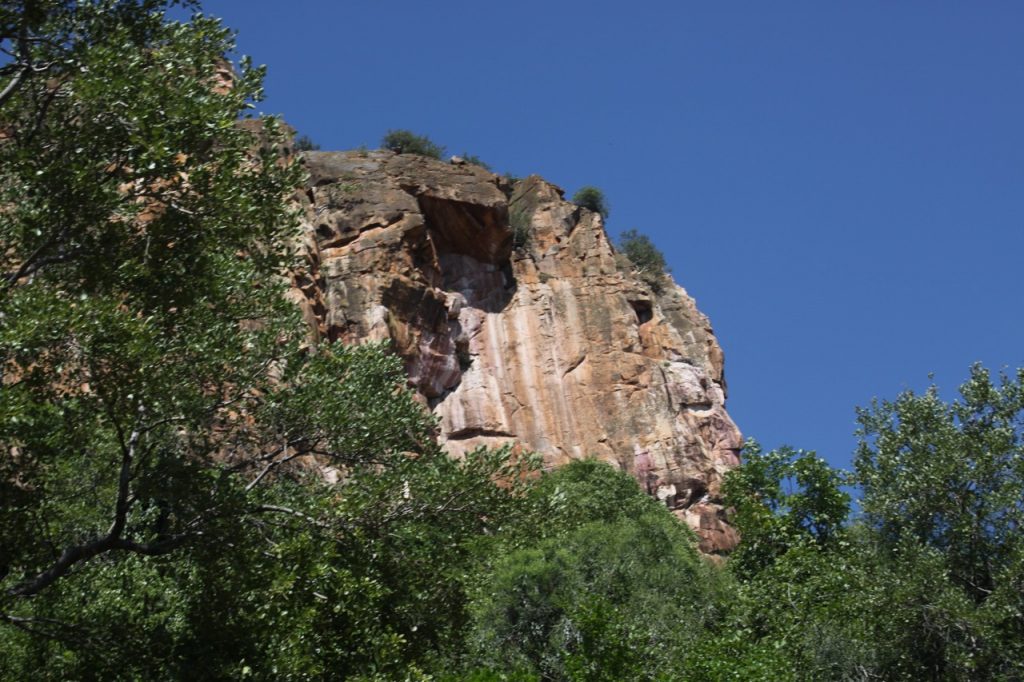
We now had the long walk back to the car following a steep path back down the hill and returning on the Luvuvhu River bank – it was unbearably hot – it had reached 40C! My husband had to relieve Al of his camera bag as we thought he was going to collapse! My binoculars and camera had also become unbearably heavy! Al asked whether we had far to go and Paul replied as honestly as always, saying Yes – a large distance so we should get a move on! I nudged him sharply – that is not how you encourage exhausted people!!
The boababs are incredible.
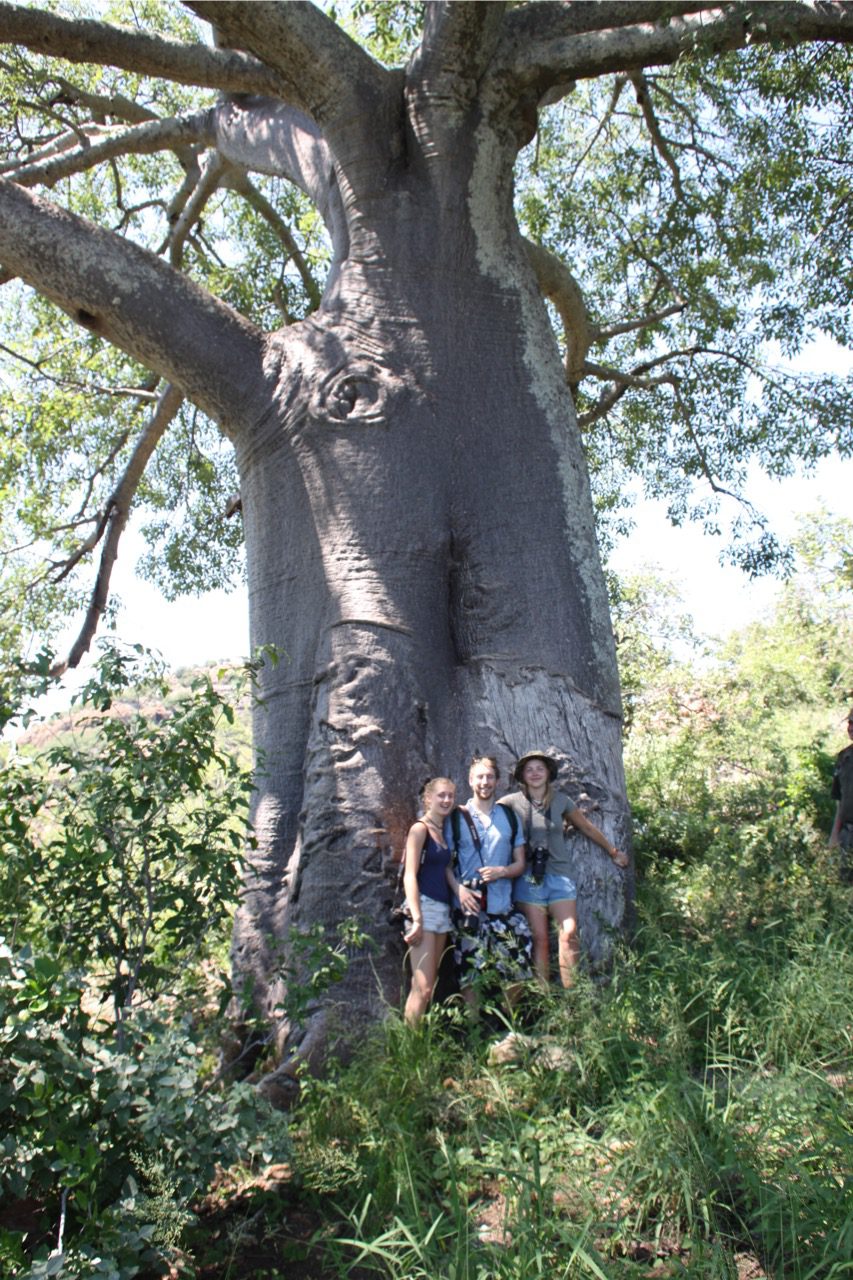
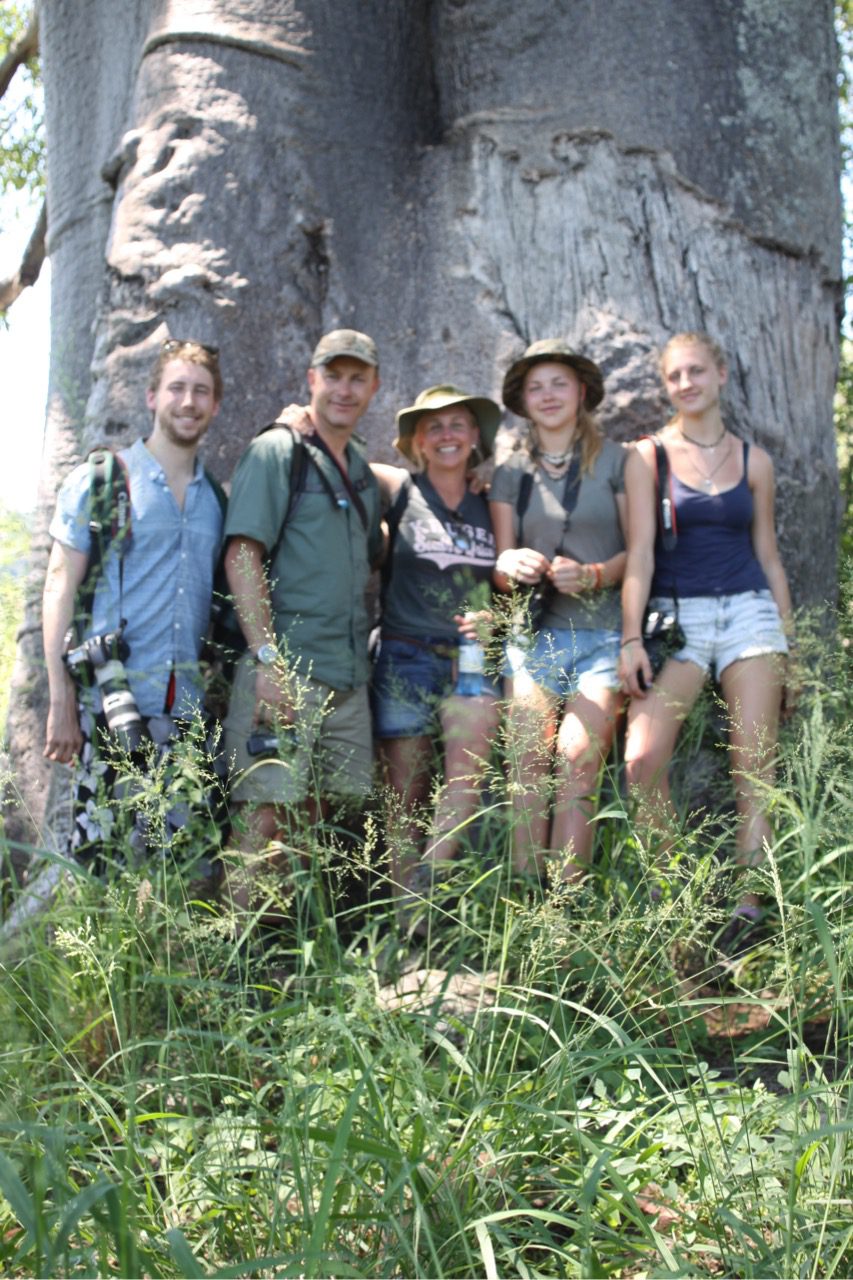
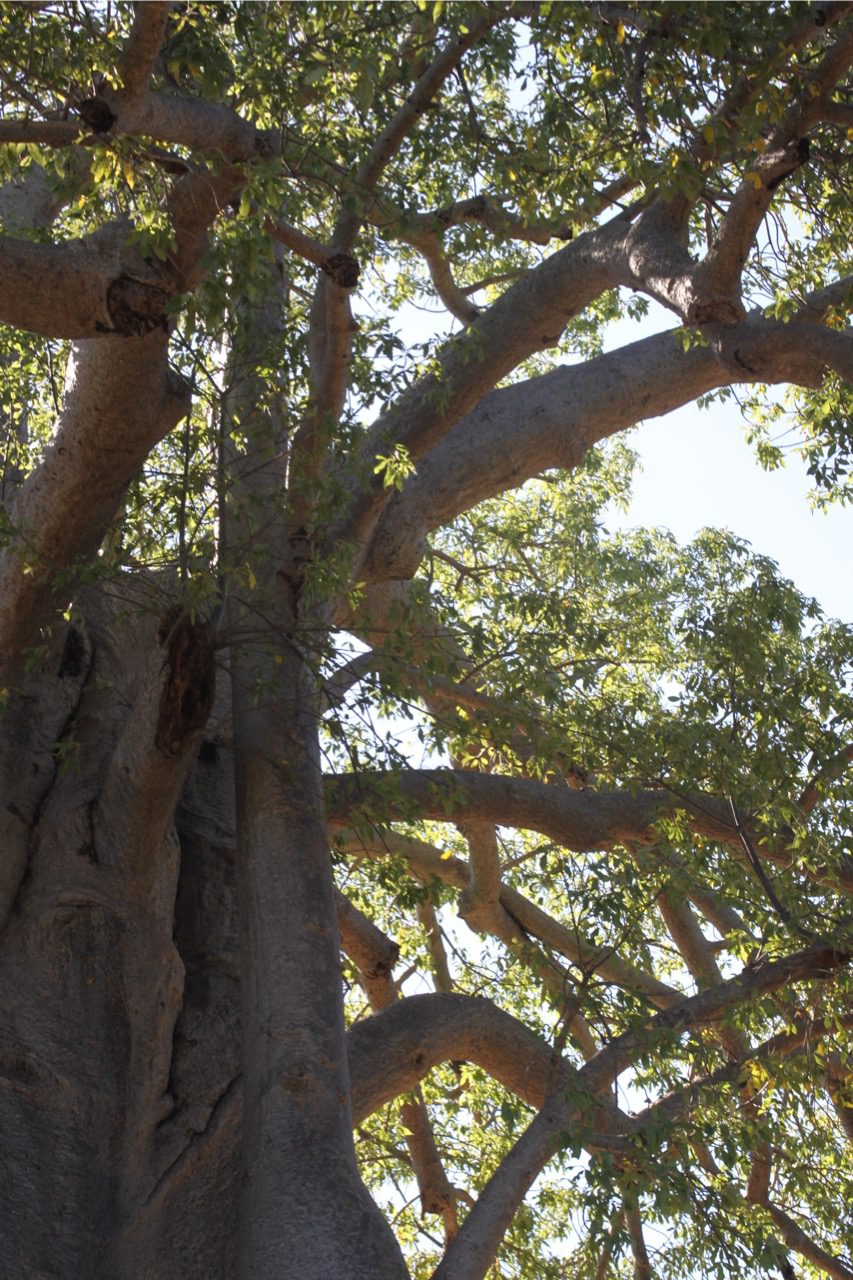
We continued our walk and Jaco showed us aardwolf scat – now that would have been a great sighting!! They are part of the hyena family. You could clearly see the soil in the poo as well as millions of little exoskeletons – they use their long sticky tongues to capture termites in the ground. They may have up to 10 dens and numerous middens in their territory and when they deposit their faeces they dig a small hole and cover it with sand. They live in monogamous pairs and mark termite mounds in their territory every 20mins or so during the night when they are active.
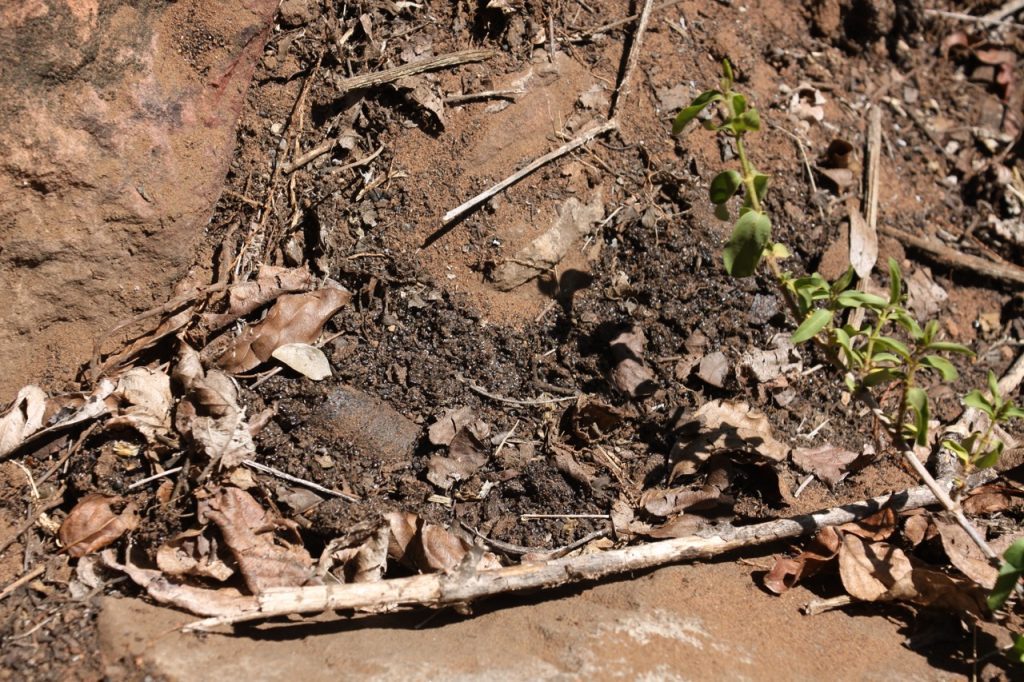
Jackson spotted another interesting item – an elephant tusk that had broken off in the bush – it was very solid and heavy! We took this with us and handed it to the Section Ranger at Punda Maria for transport to the safes at Skukuza where all the other ivory is impounded.
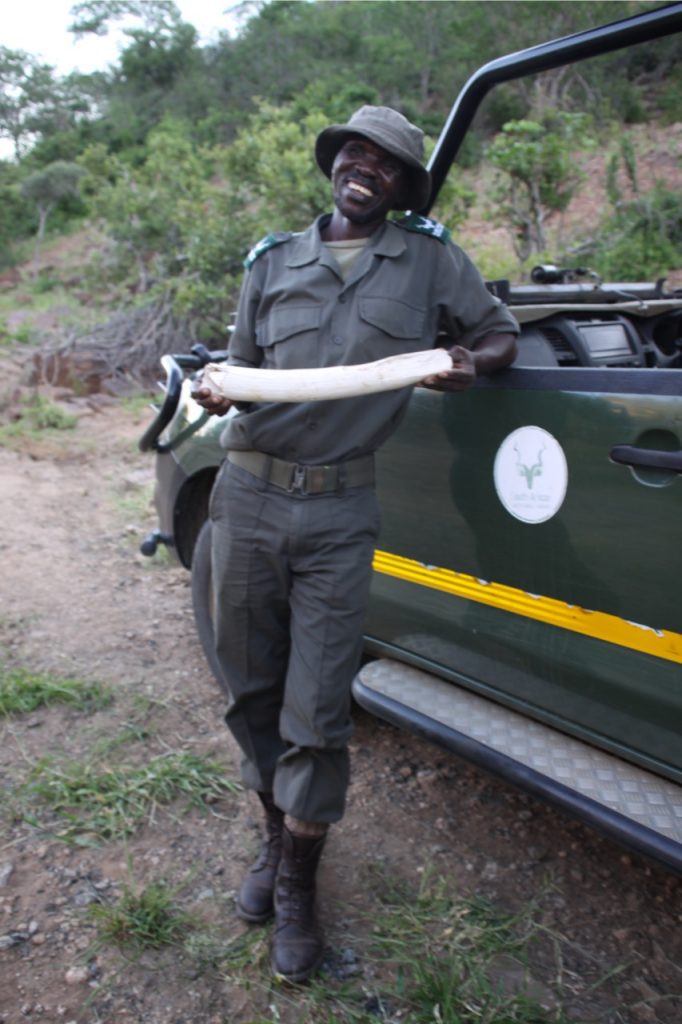
Finally, we made it back. We all collapsed in the shade while Jaco repaired our flat tyre which we had not even noticed until after the walk.
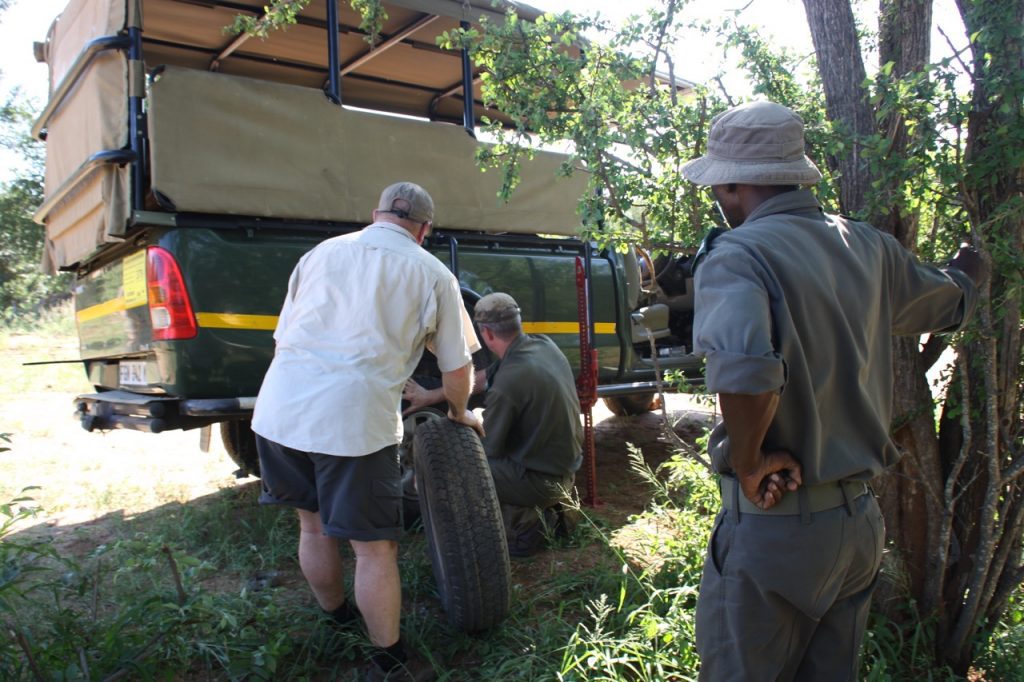
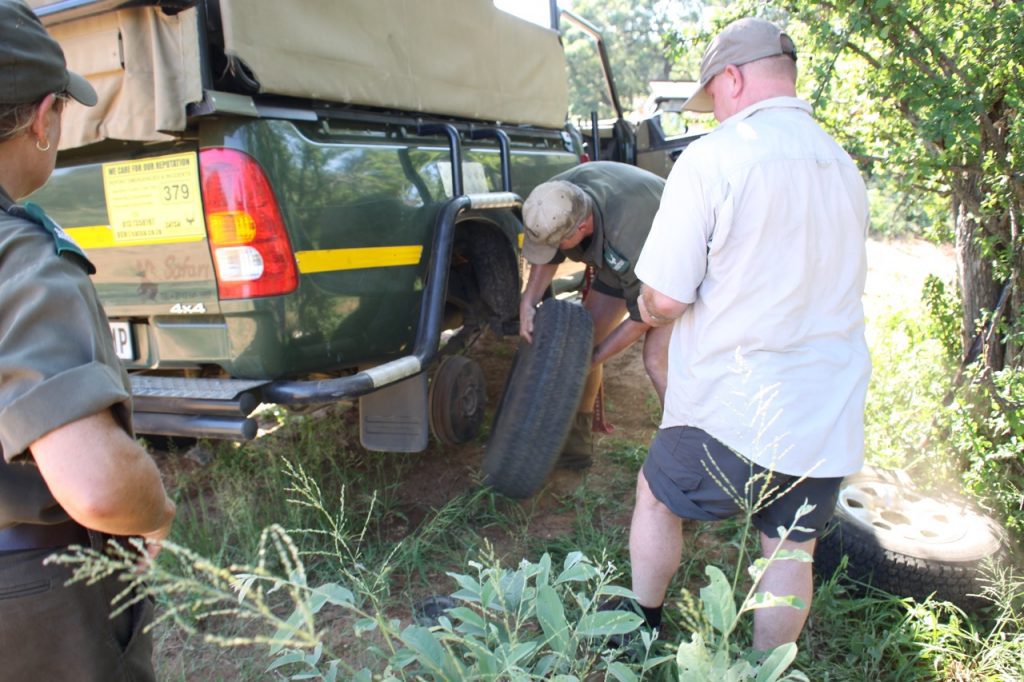
We drove on to a site of a freshwater spring and enjoyed a belated picnic lunch of delicious salad and cheese sandwiches under the shade of a large Natal Mahogany Tree. Wonder if the buffalo was a victim of the drought?
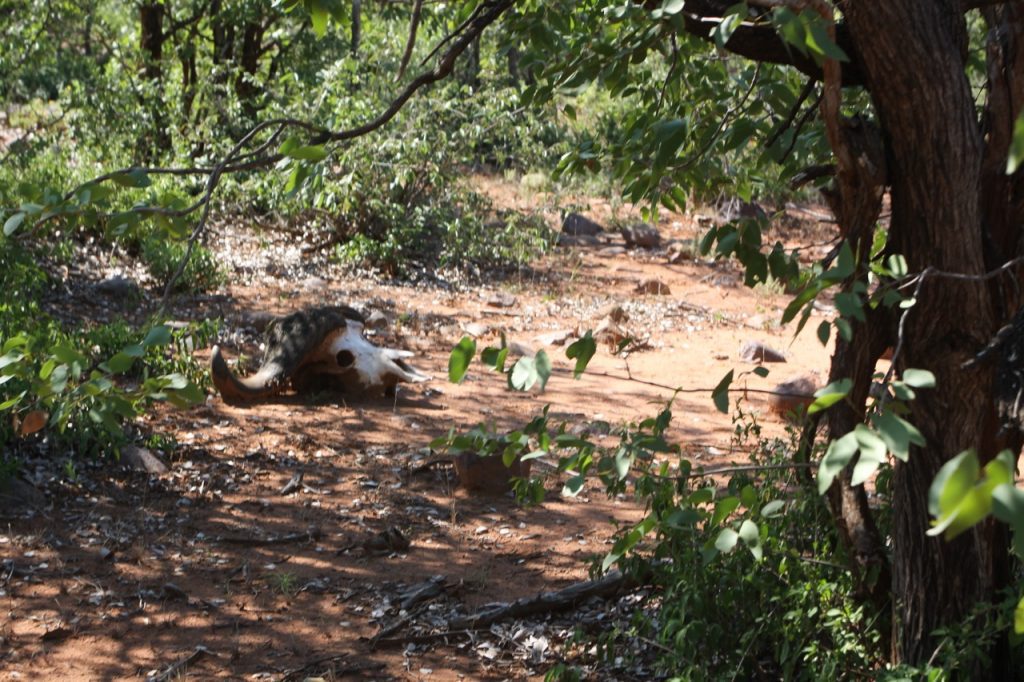
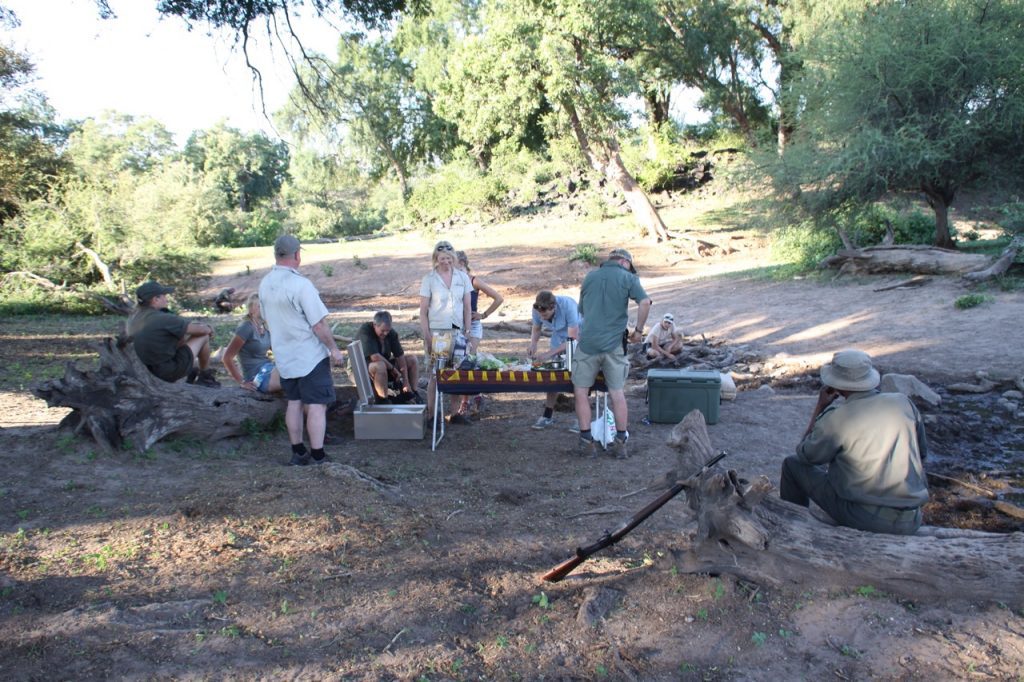
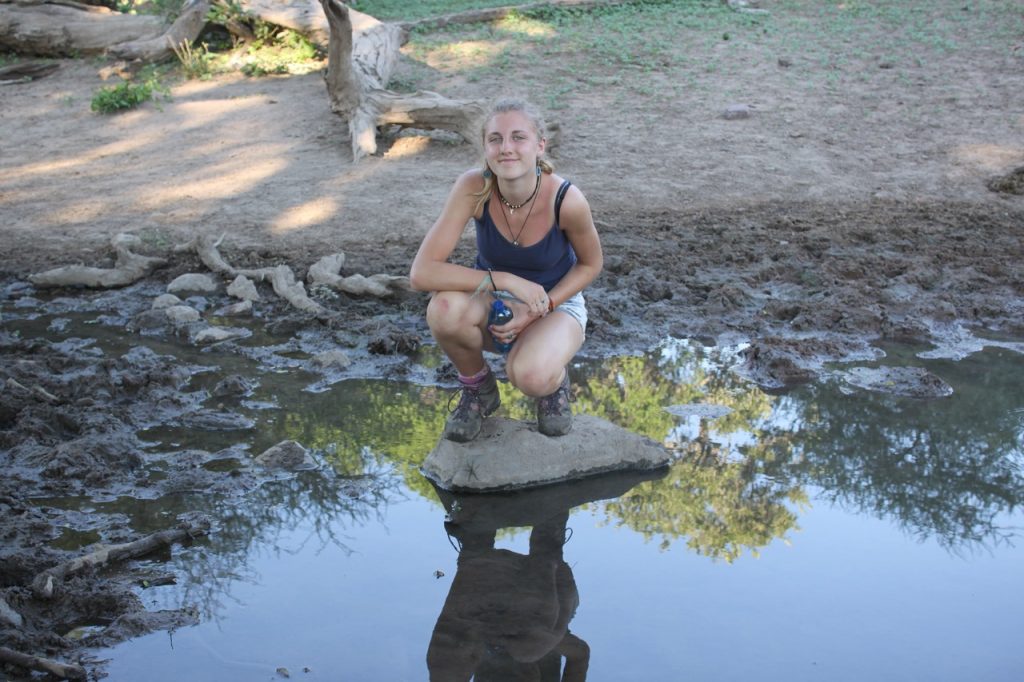
The road back had a few more hectic moments for us
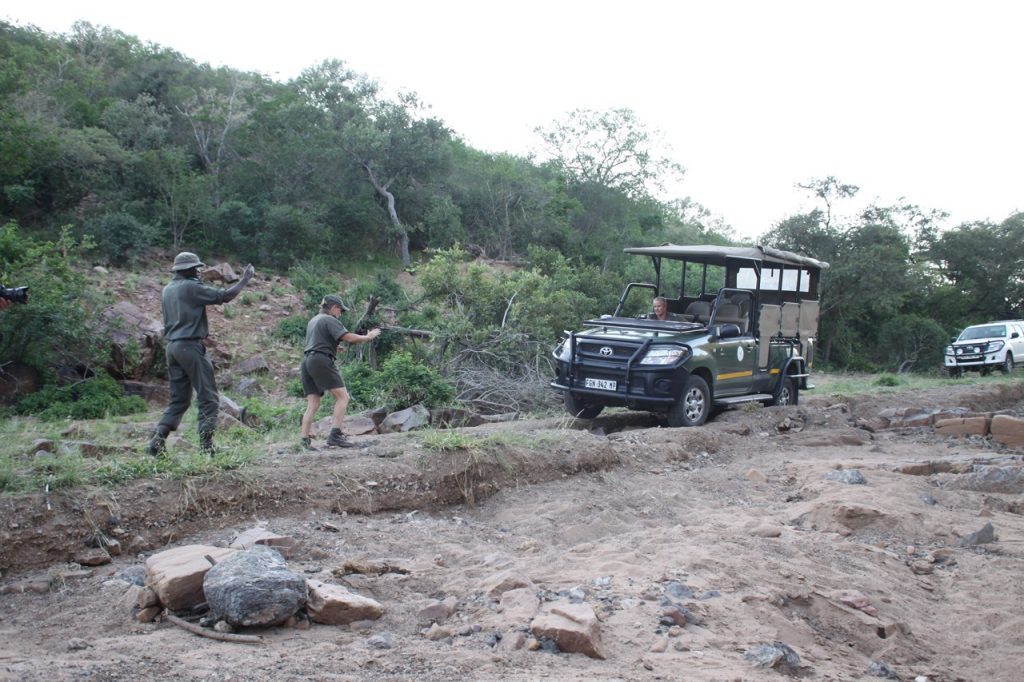
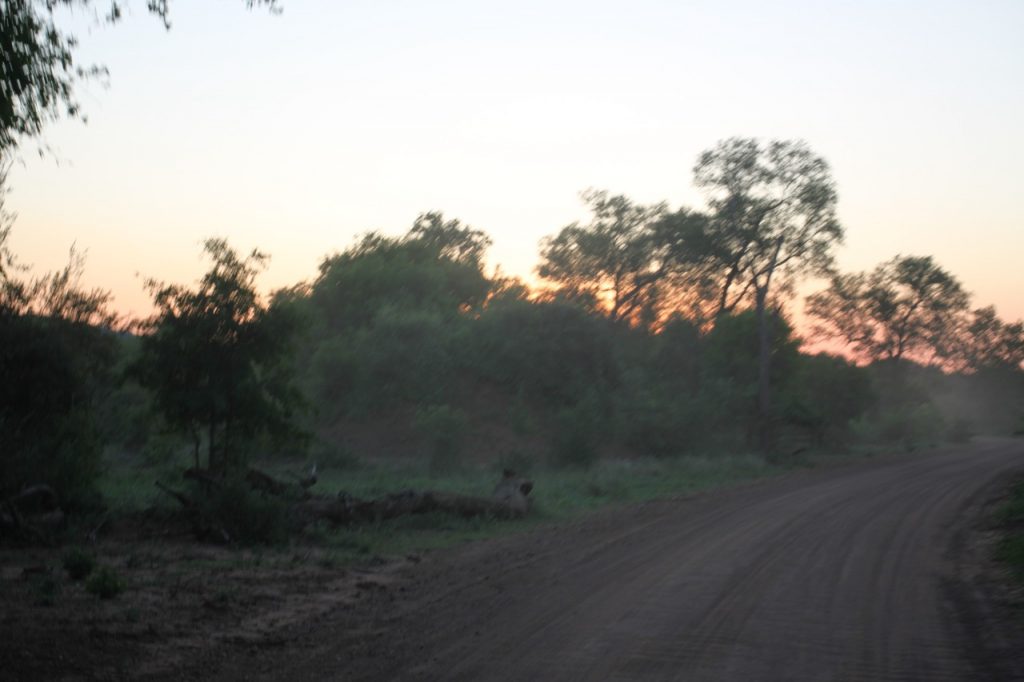
Our visitors at camp this evening were ververt monkeys and a male bushbuck. After such a long day we decided against a braai and instead enjoyed very tasty meals from the restaurant which we pre-ordered on arrival for 7pm (top tip, as service can be a bit slow!). I had delicious steak, the others enjoyed lovely pizzas accompanied by a delicious red and finished off with cool and scrumptious Dom Pedros – YUM! We headed to bed for a GREAT night’s sleep at Punda Maria following that tough 12Km walk in the 40C heat!
DAY 4 KNP: Sunday 3rd April 2016 – Shantangalang, Thulamela and Crook’s Corner
Everyone was up bright and early at 5am with vehicle packed for lunch at a picnic spot. We picked Jackson up from the Field Ranger’s house so that he could track for us at Shantangalang and we headed out filled with anticipation for a full day of archaeological sight-seeing and hopefully some great animals sightings too!
Within minutes of each other we had several separate sightings of elephant bulls in musth!
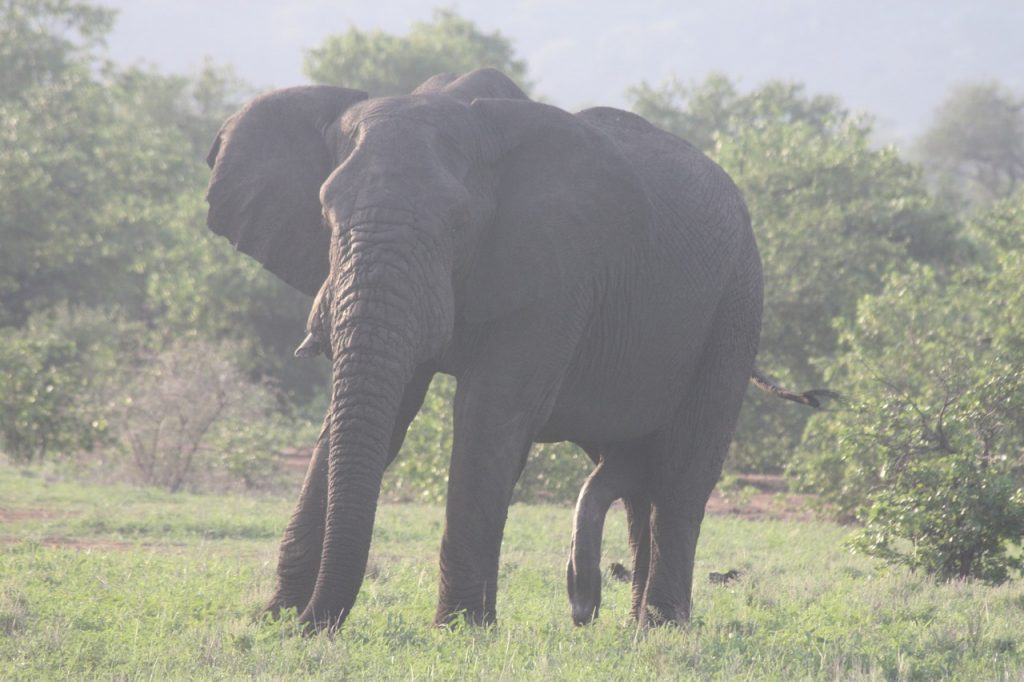
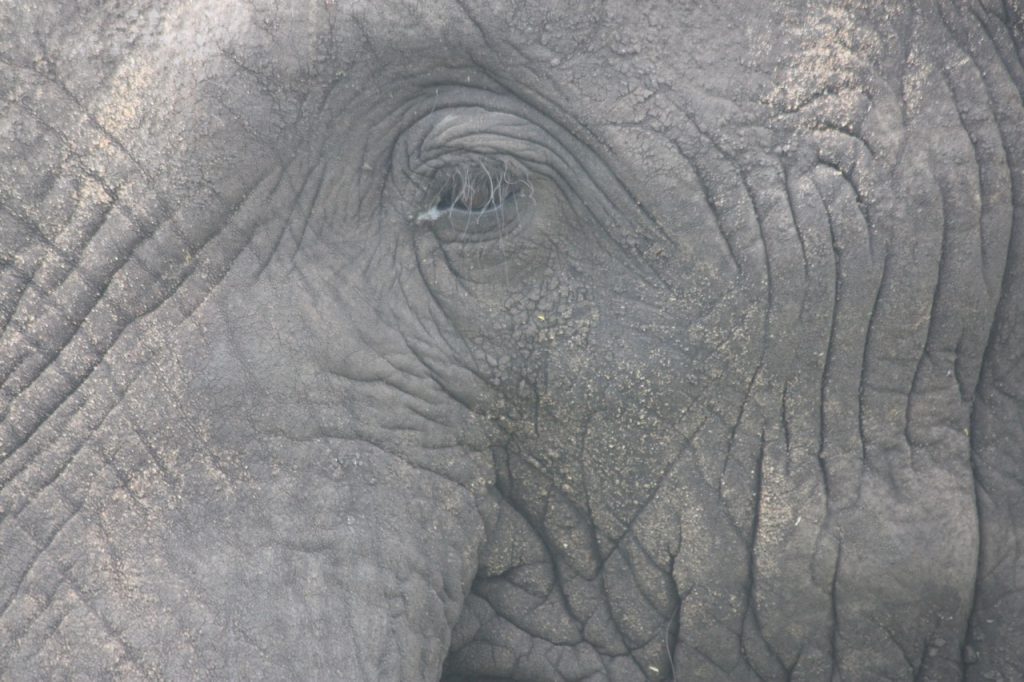
We had a quick coffee and toilet stop at Jaco’s favourite childhood picnic spot called Babalala with the Sycamore fig growing through the roof.
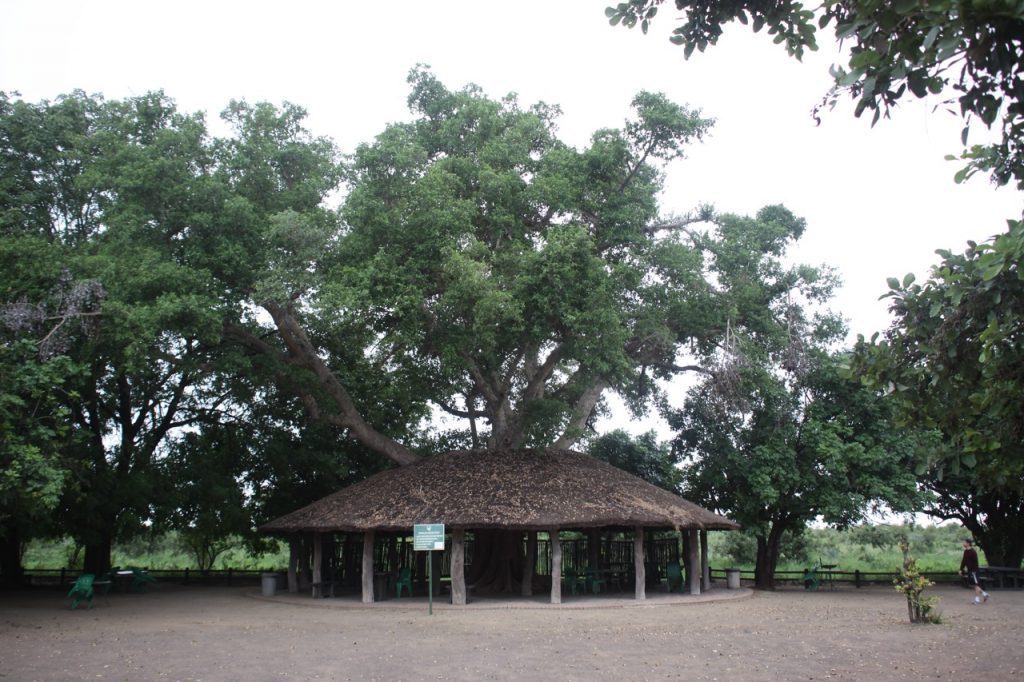
We felt adventurous taking the ’no-entry’ gravel road heading to an area of rounded Clarens sandstone hills. The area is filled with thick bush. The sky was grey with clouds and the wind swirled around us, creating a somber mood after being given guidance on the difficult conditions that we would be walking in.
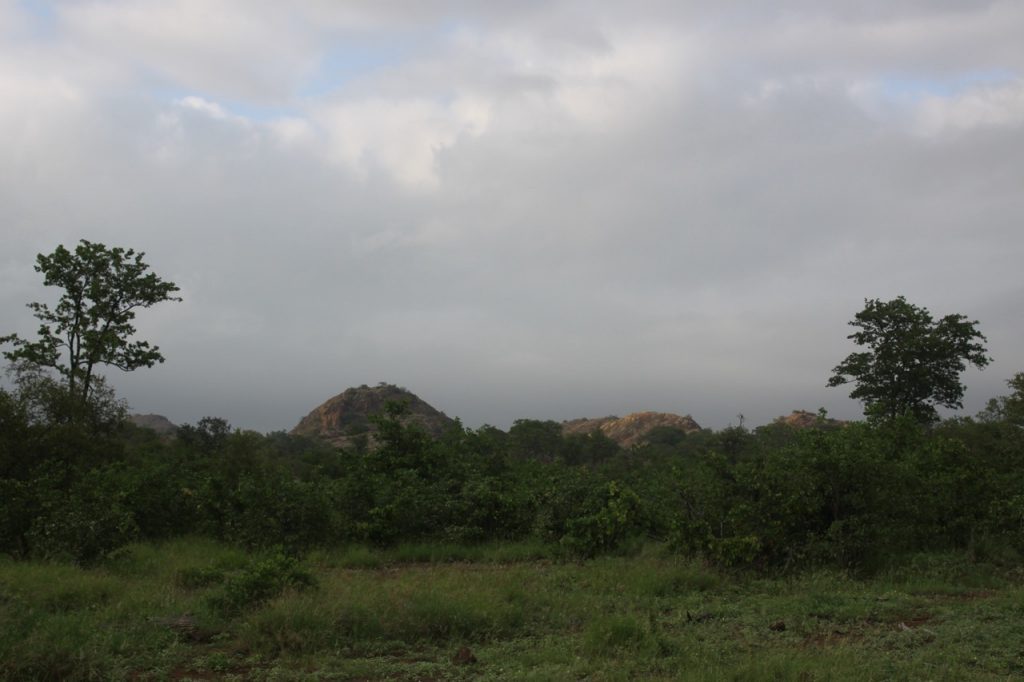
We would be vulnerable with the wind constantly changing direction and this area was a favourite with old dagga boys as it offered them protection amongst the boulders. We had just alighted from the vehicle when Jackson put his hand up and pointed to a dagga boy in a cave in the distance – he was casting a weary eye over us from his vantage point in the very cave that we were heading towards to see the bushman’s paintings!! Typical!
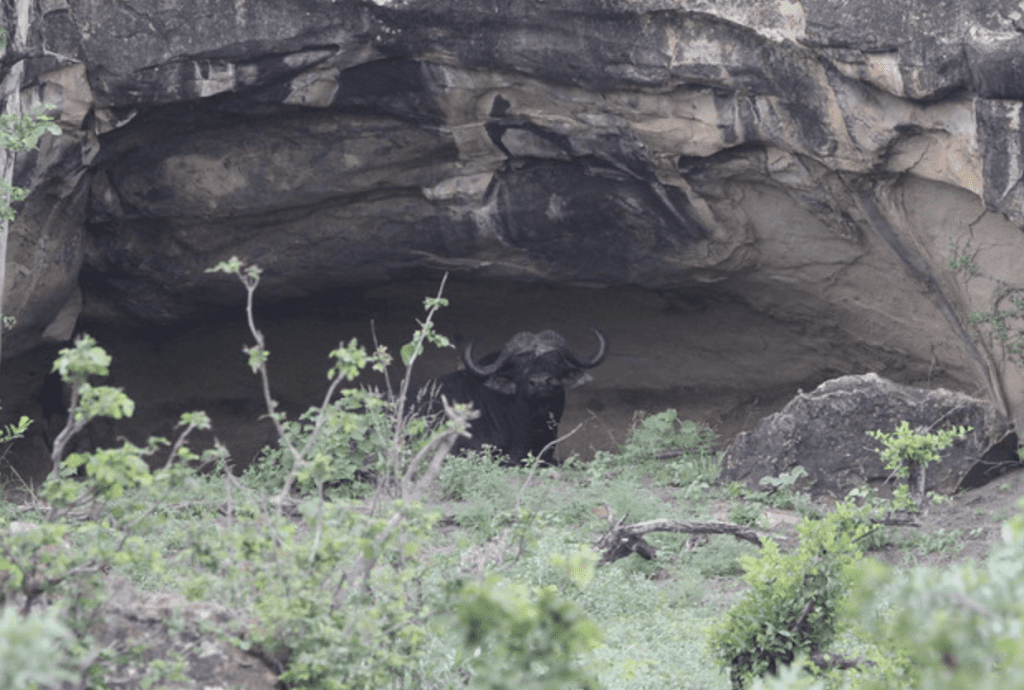
Before we could give further consideration to this conundrum, Jaco signalled to us to show us that he had already read the bushveld news and wanted to share a newsflash – he pointed out the clear imprint of where an elephant had been asleep just minutes before. The imprints from his skin could still be clearly seen!
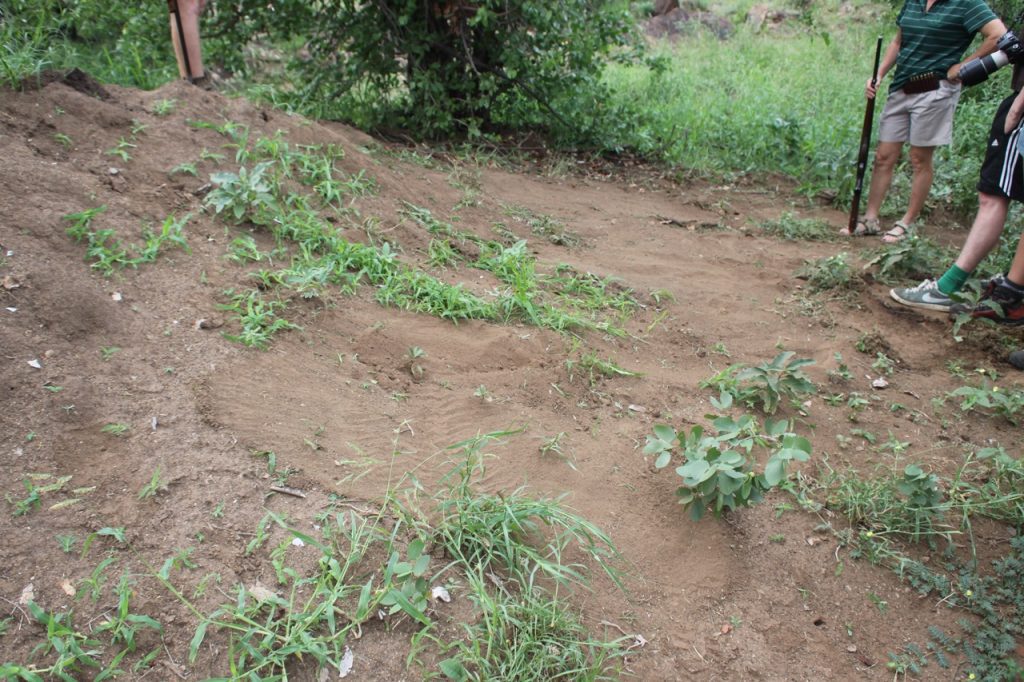
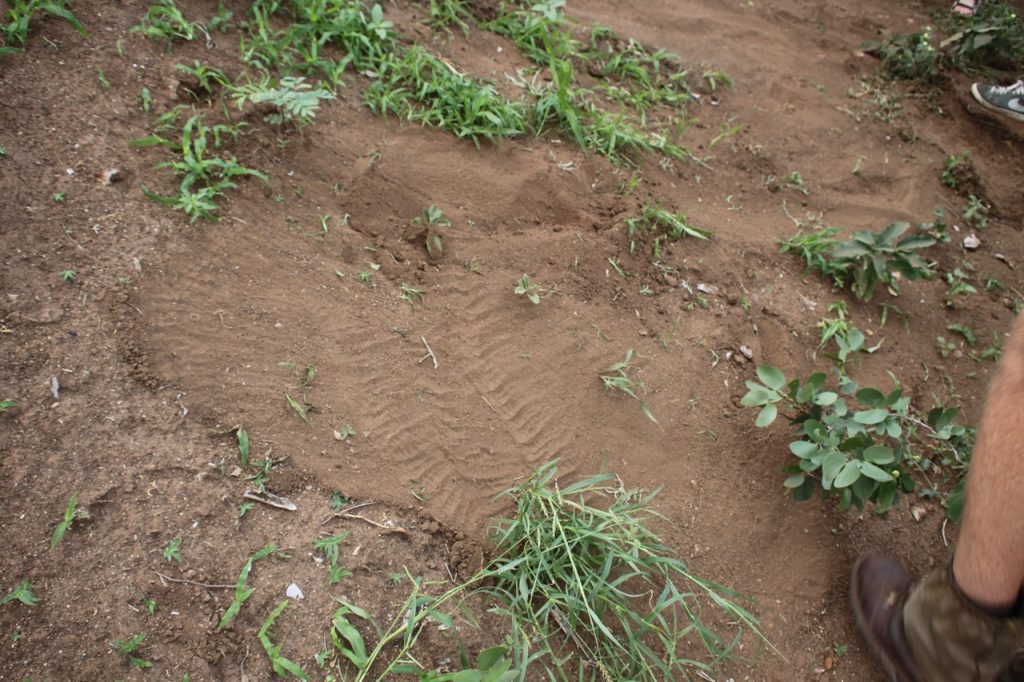
These marking were right next to a termite mound. Jackson enticed some soldier termites out of their warm mound with a stick – he told us that they were very tasty – I don’t know about that, but they certainly were very feisty!
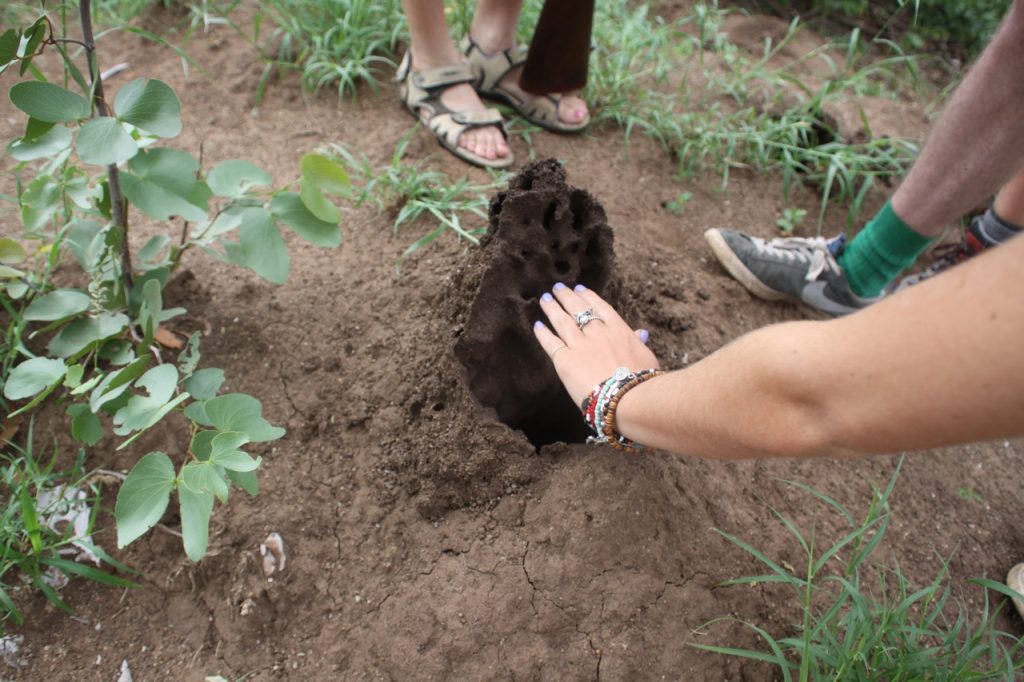
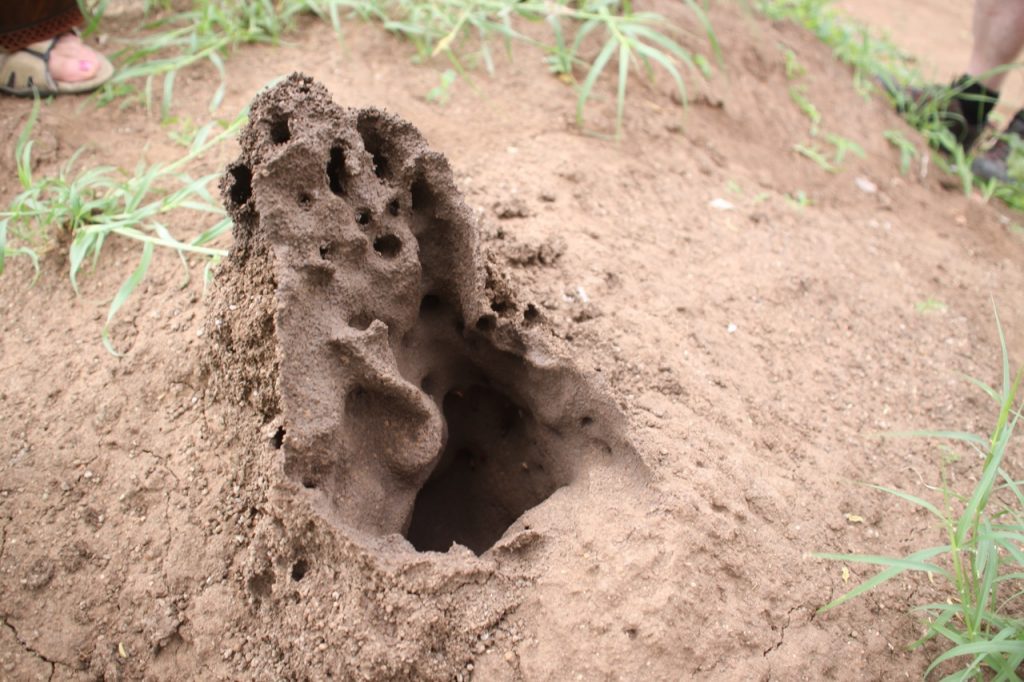
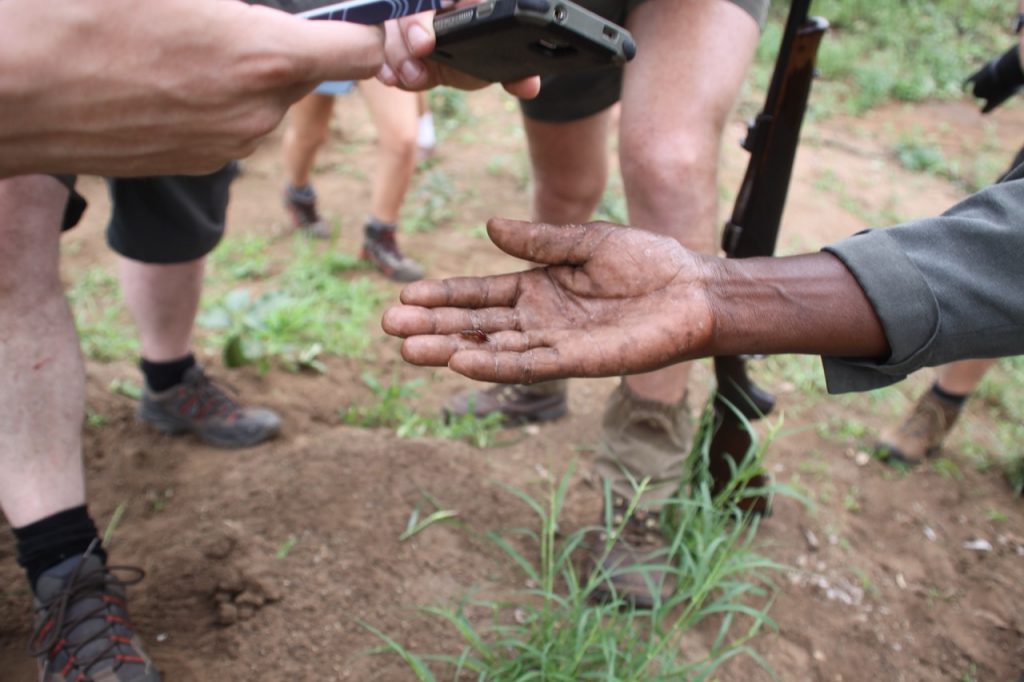
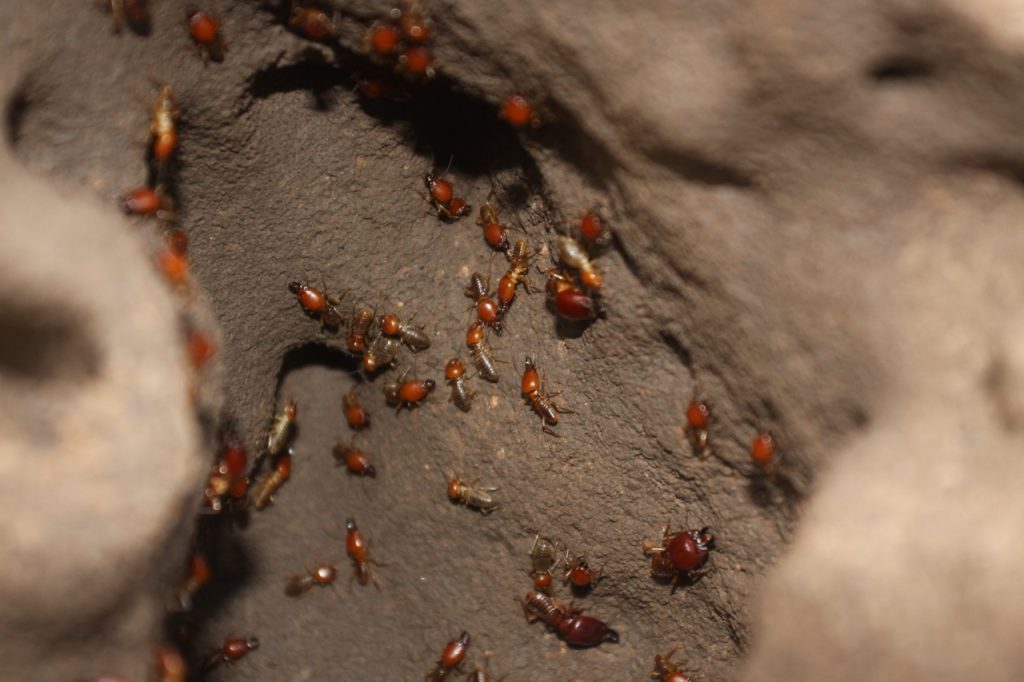
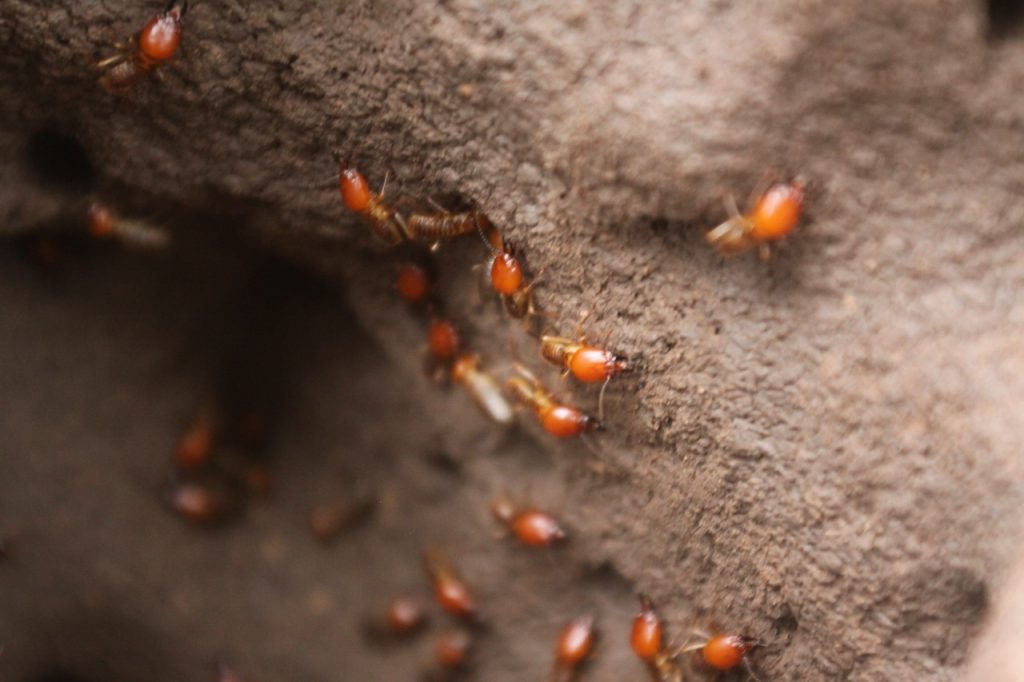
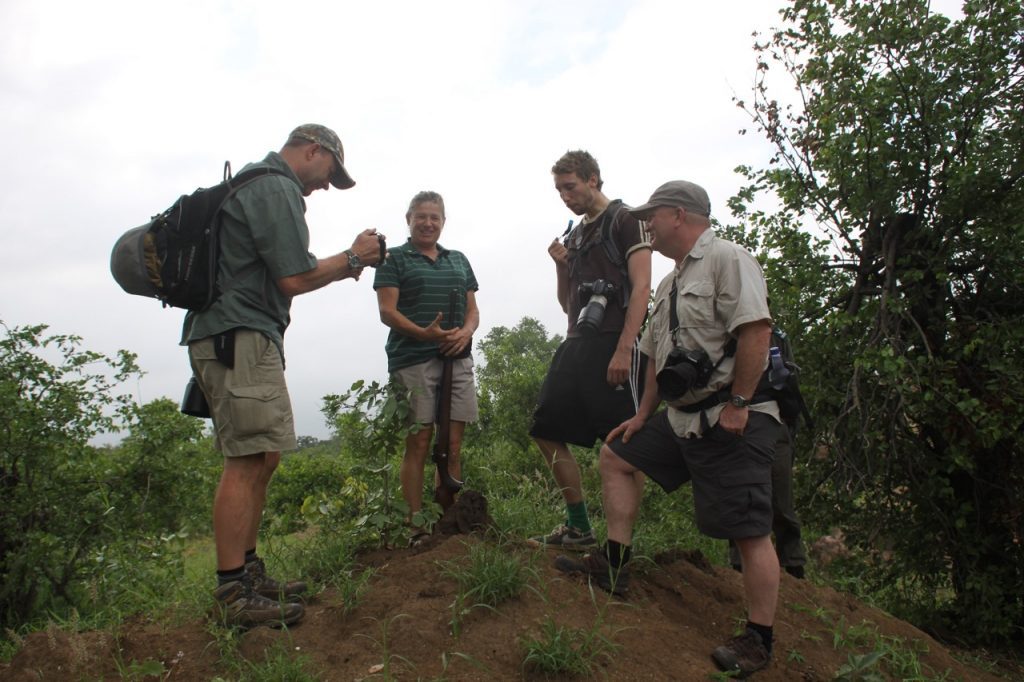
We cautiously continued our walk – fortunately the dagga boy in the cave had caught sight of us and stood up and ambled off. Jaco silently pointed out some more very fresh buffalo spoor and dung – the strong scent of a buffalo was hanging thickly in the air – he indicated with his hands that we should stick very closely together. We instantly obeyed and tightened our proximity in single file tensely scanning the dense bush for any sign of life. (Whilst photographing th epretty flowers!0
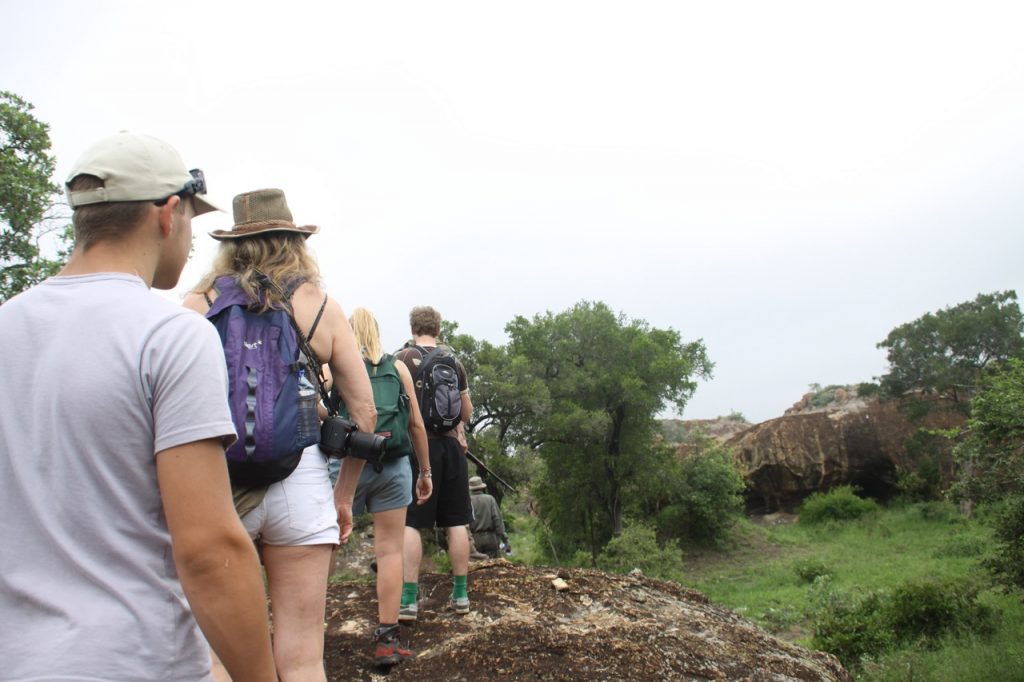
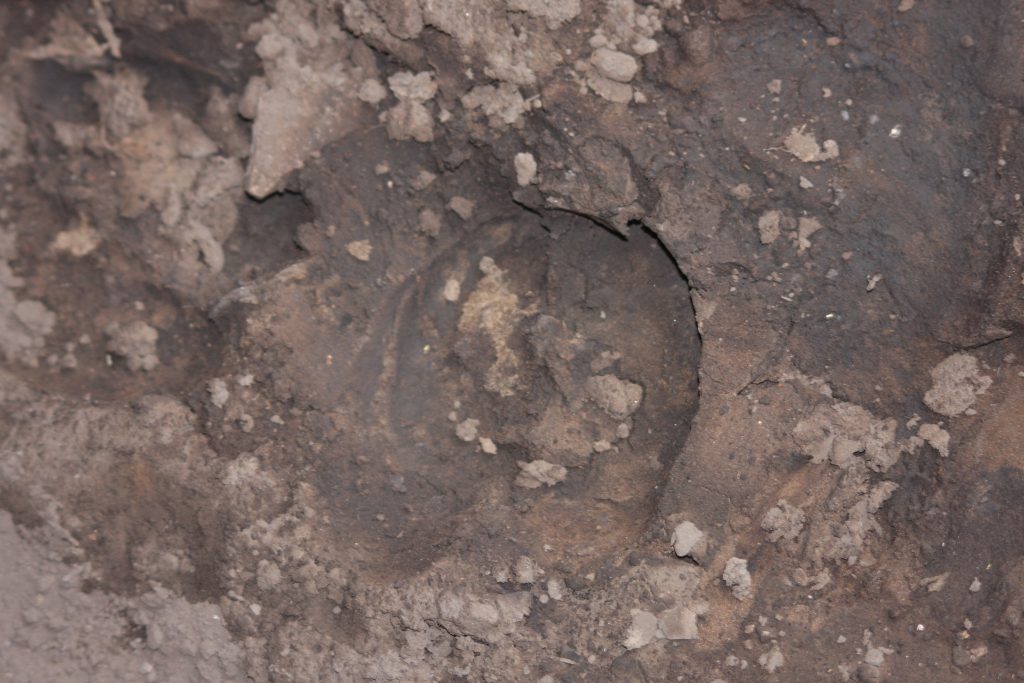
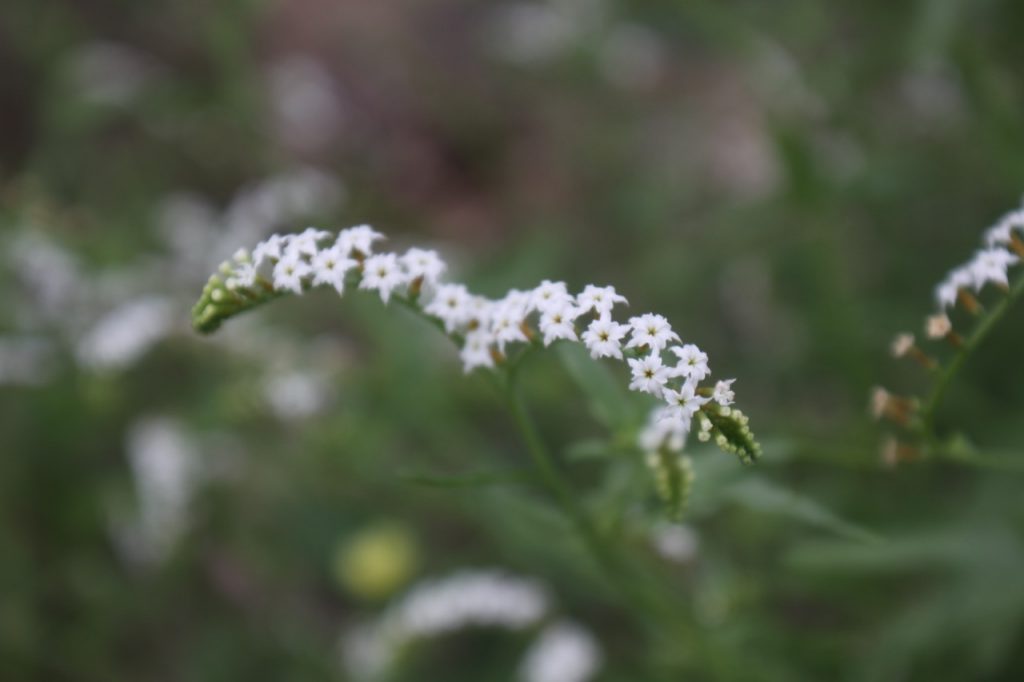
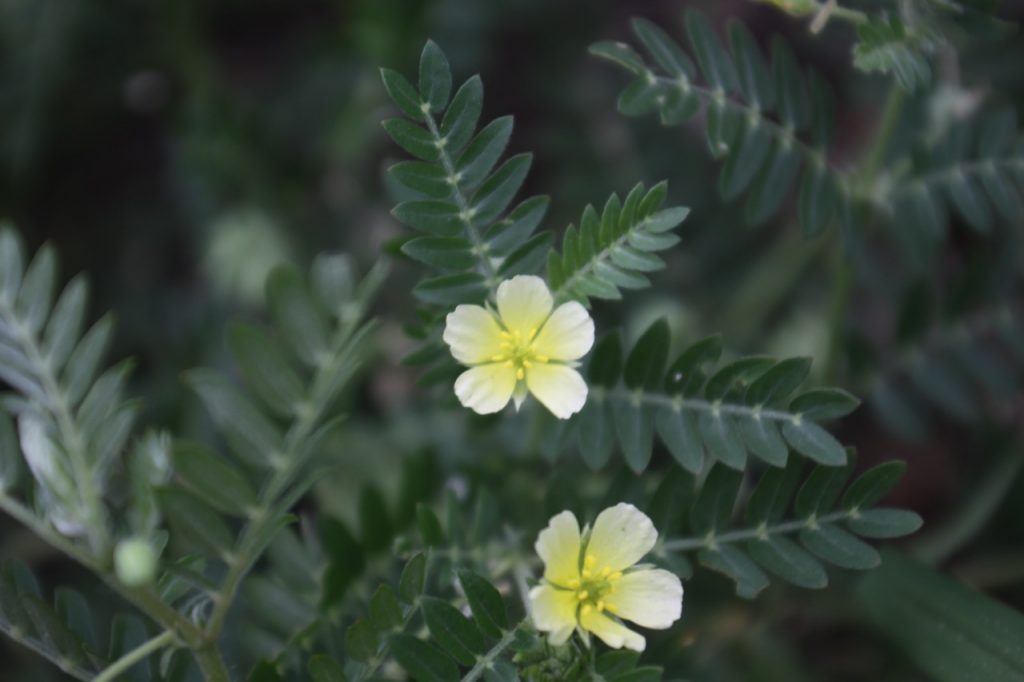
All of a sudden there was a loud shout and then another – I knew we were in trouble because I saw both Vanessa and Jaco cock their rifles simultaneously whilst yelling for us to get behind a small bush to the left of us – at almost the same time an enormous old dagga boy exploded from under a tree no more than 20m in front of us, spun on his heels snorting and deciding in which direction his safest exit point was – fortunately he blasted furiously into the opposite direction leaving us all pumping with adrenaline and jelly legs! Phew – what a close encounter!! Sorry – No photos!! We were just happy to be safe!
Whilst we regained our composures Jaco and Jackson went on ahead to clear the area while Vanessa led us up onto a rounded mound of Clarence sandstone. From our elevated position we watched Jaco checking the area carefully – then another blast and an ear shattering trumpet! This time an irate young bull elephant voiced his annoyance that his peace had been disturbed and trotted off leaving us in the dust of his wake. Again it all happened too fast for photos! The buffalo skull was that of an animal which had charged a group and had to be shot!
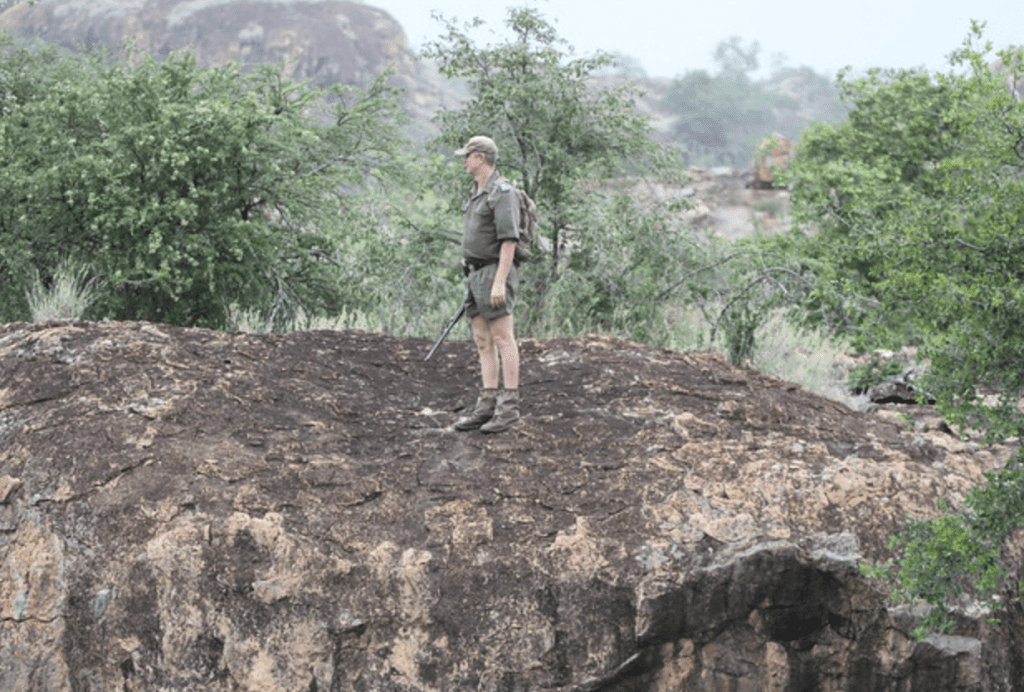
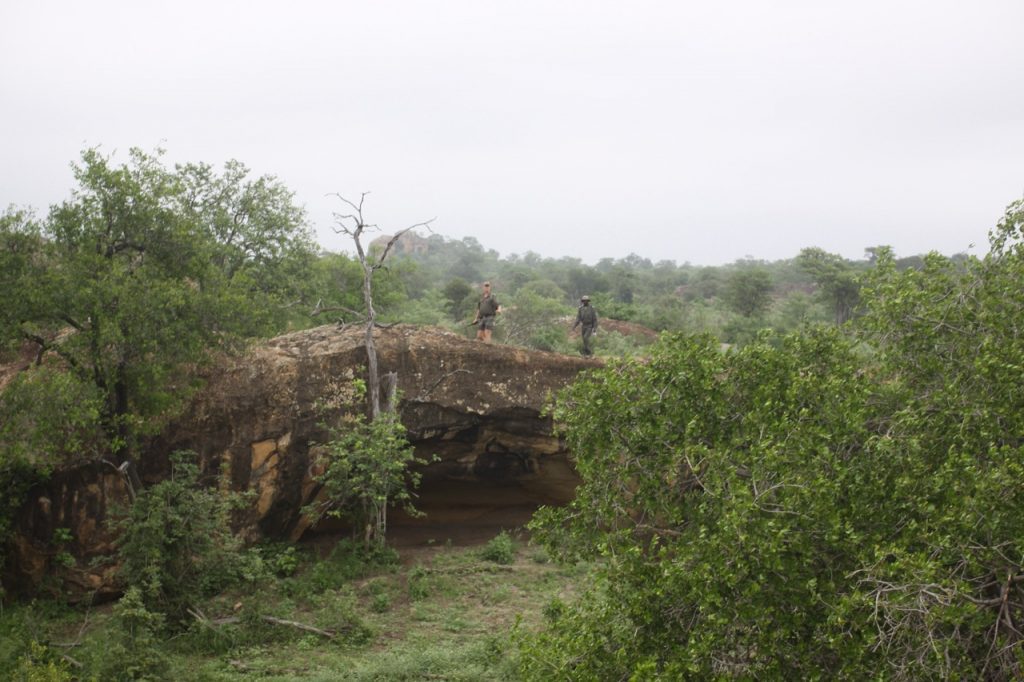
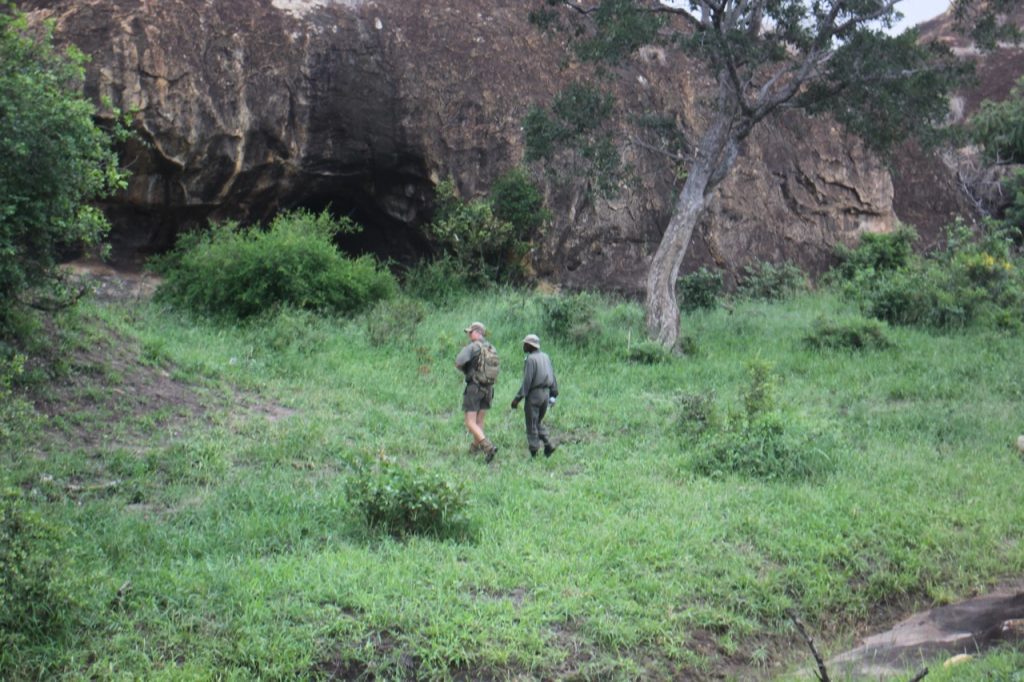
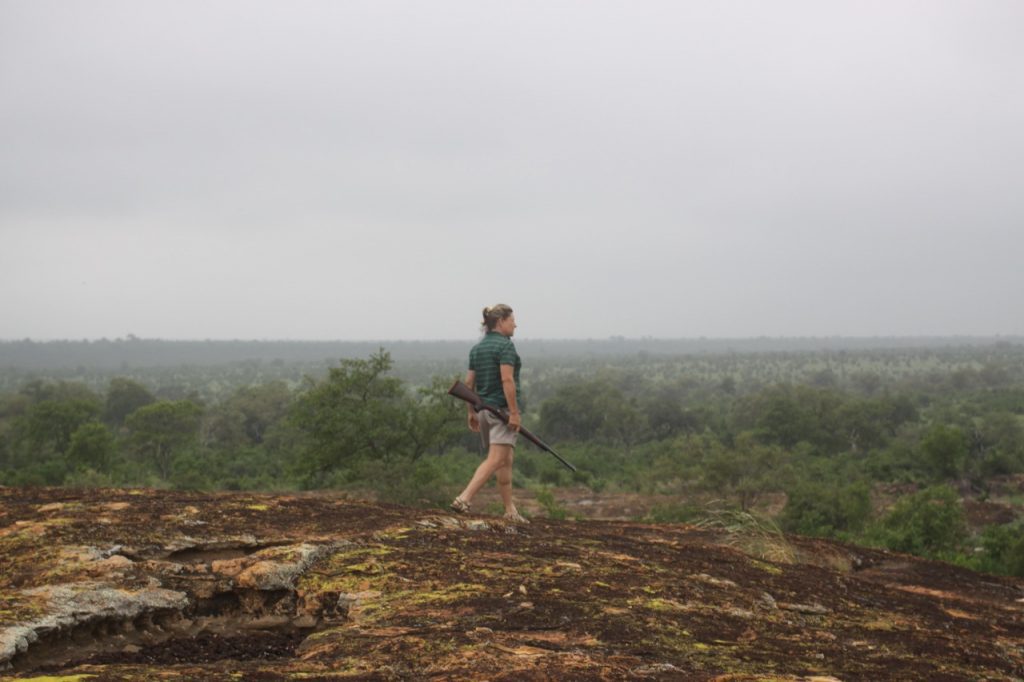
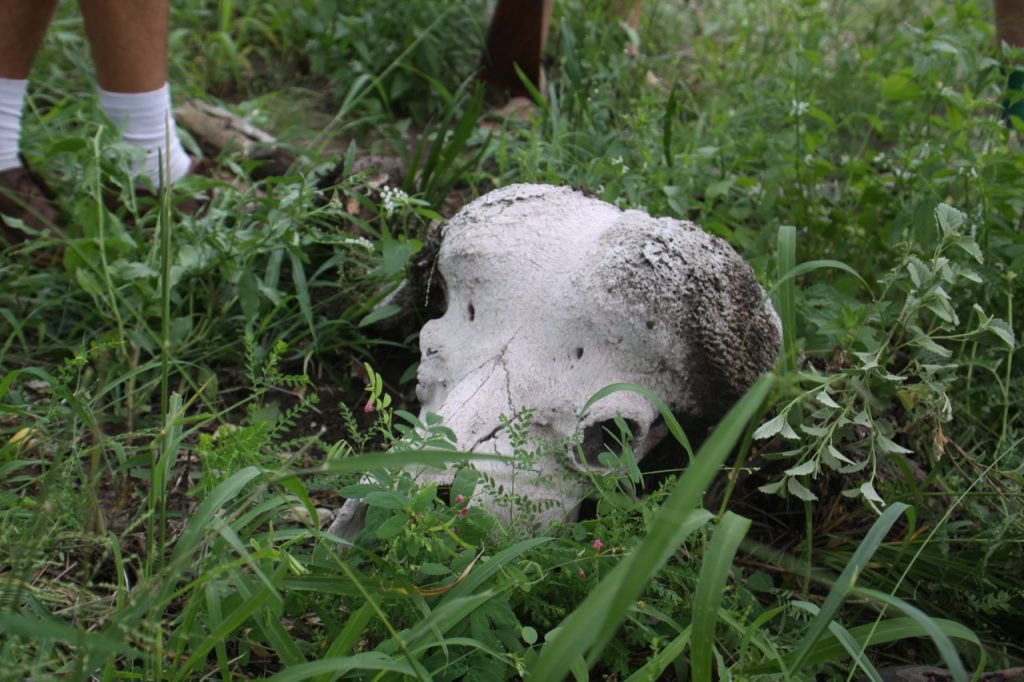
We could not spot the dagga boy who had been in the cave anywhere – it might have been him that we frightened …soon Jaco indicated that it was safe for us to head over to the overhangs where we found the bushman paintings. There were many signs of various cave dwellers in the sand…one large slither mark showed that a large rock python had entered seeking the cool inviting darkness in the depth of the cave; fresh buffalo tracks reminded us that we had disturbed his snooze. The strong smell of bat odour hung in the air as we observed the faint giraffe painting.
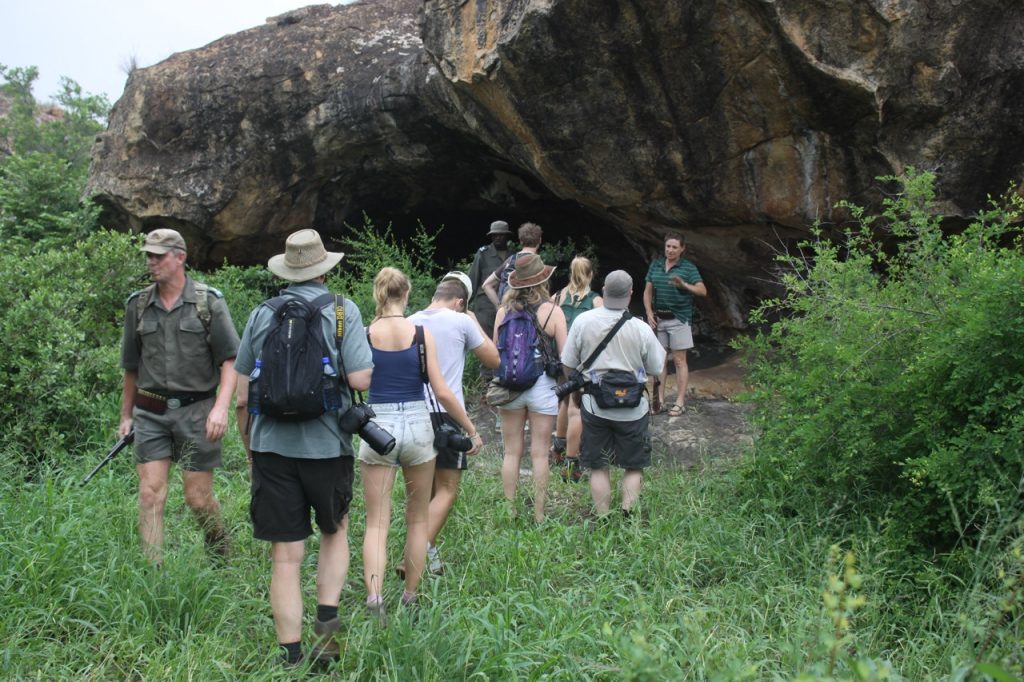
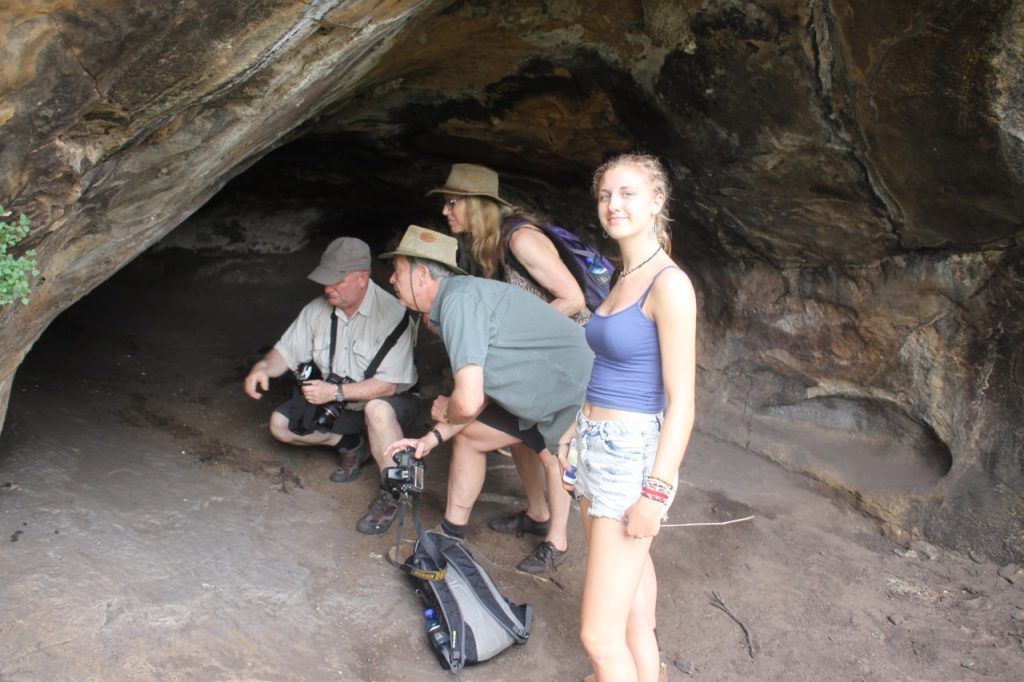
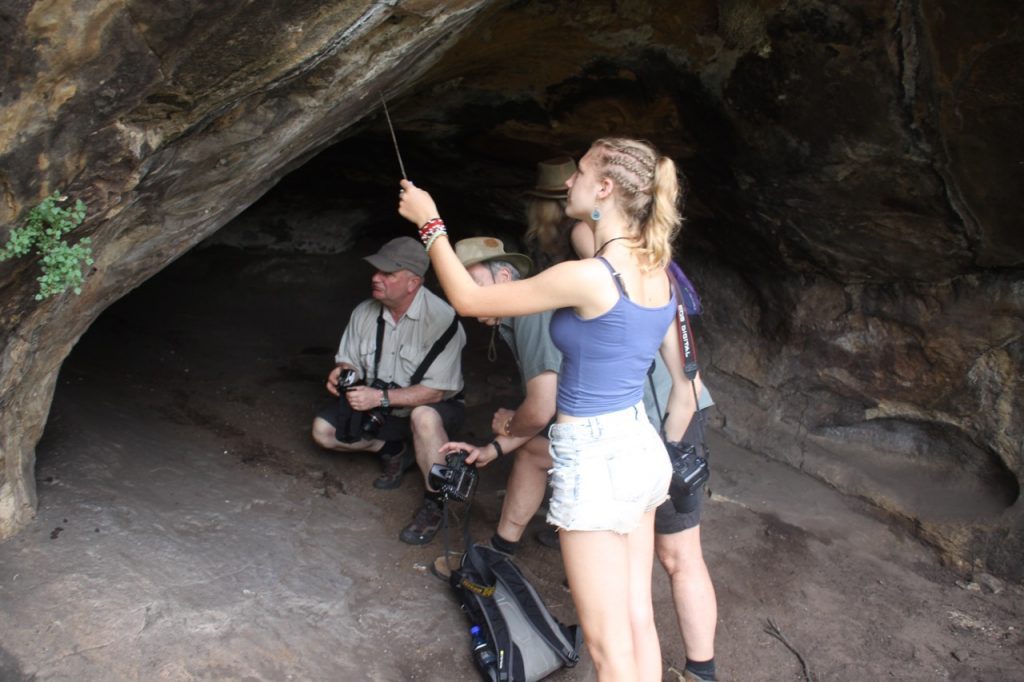
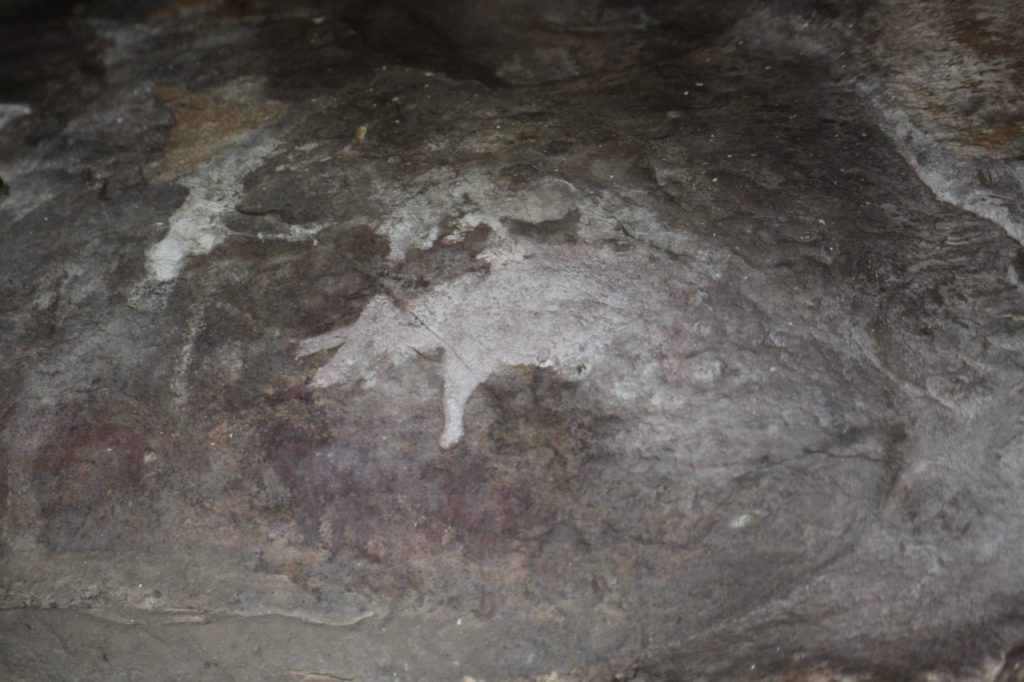
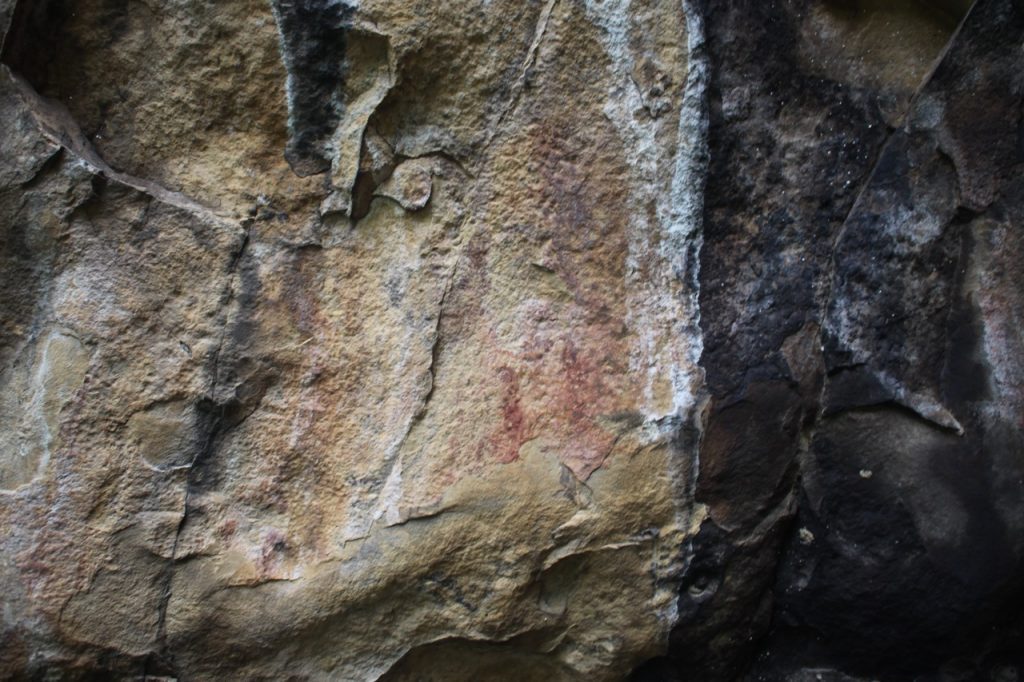
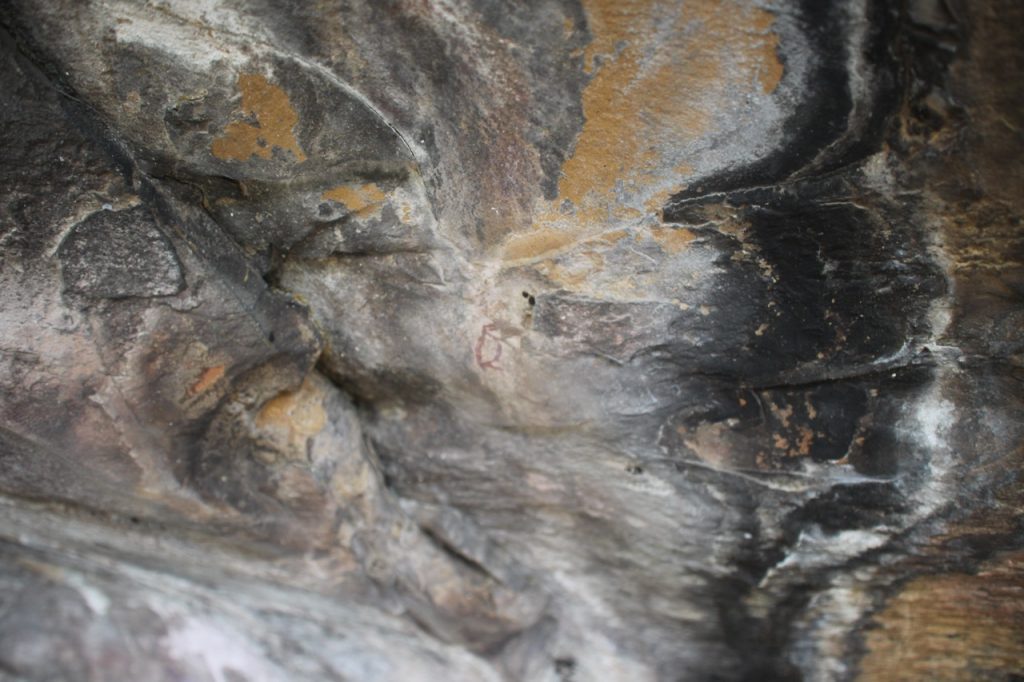
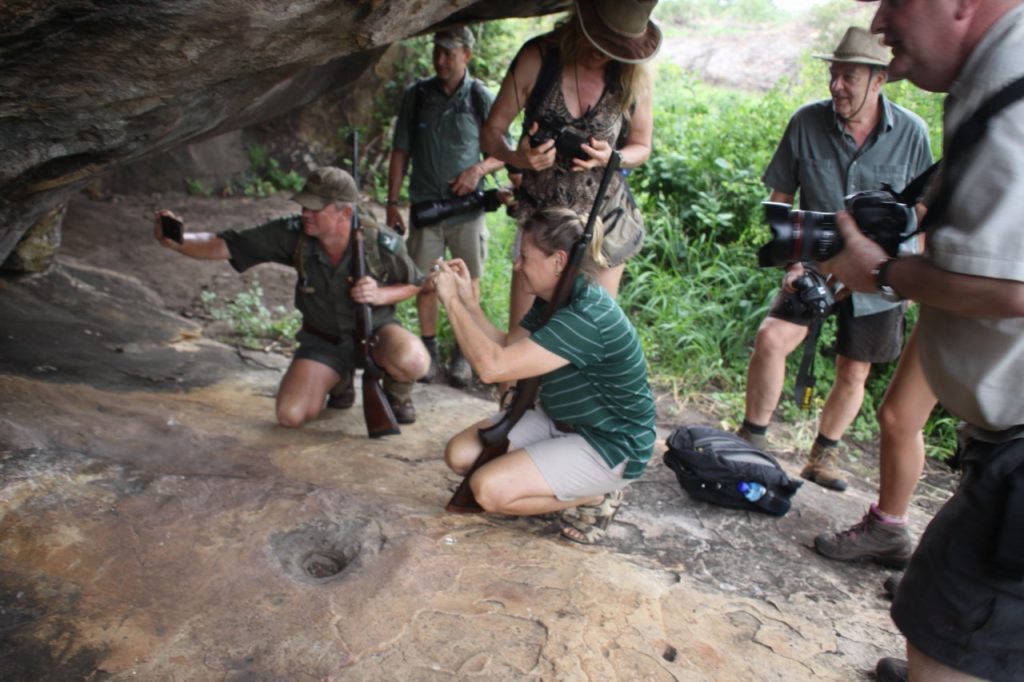
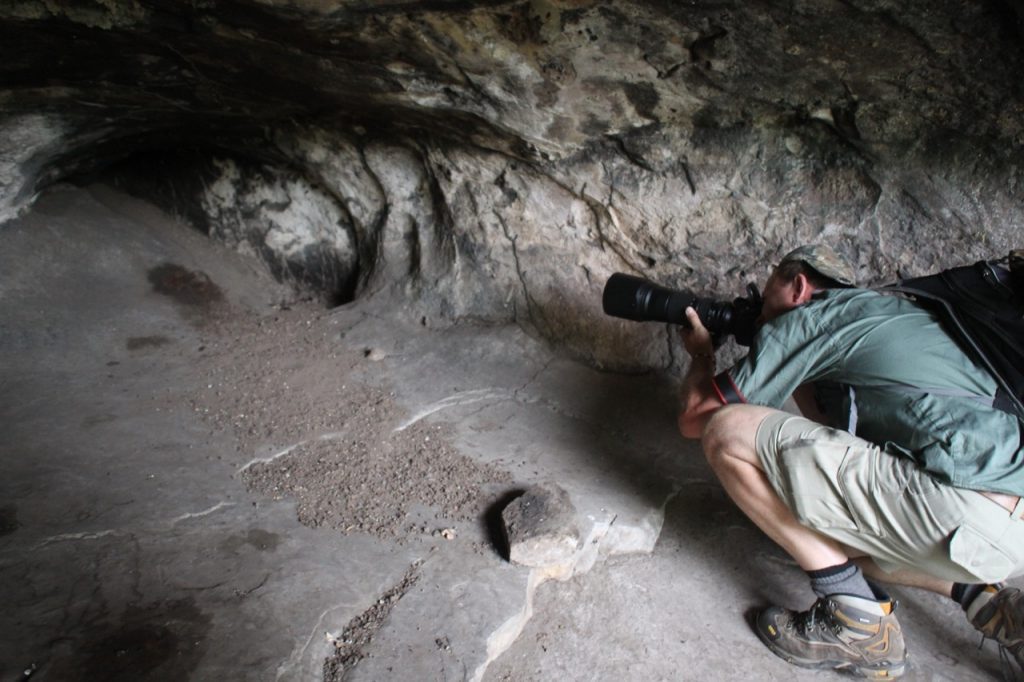
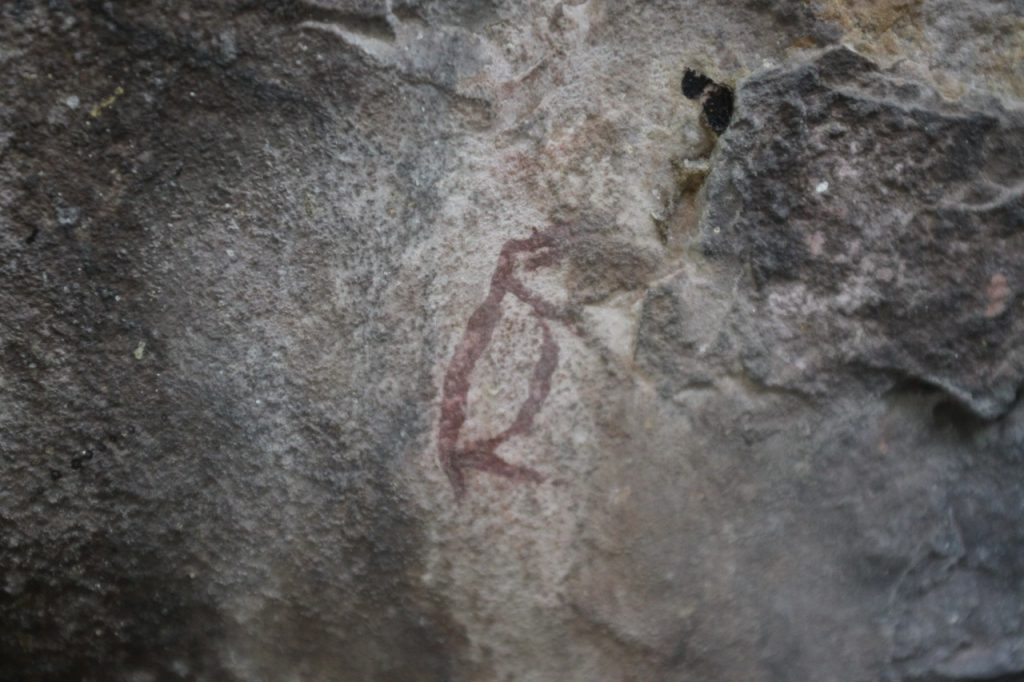
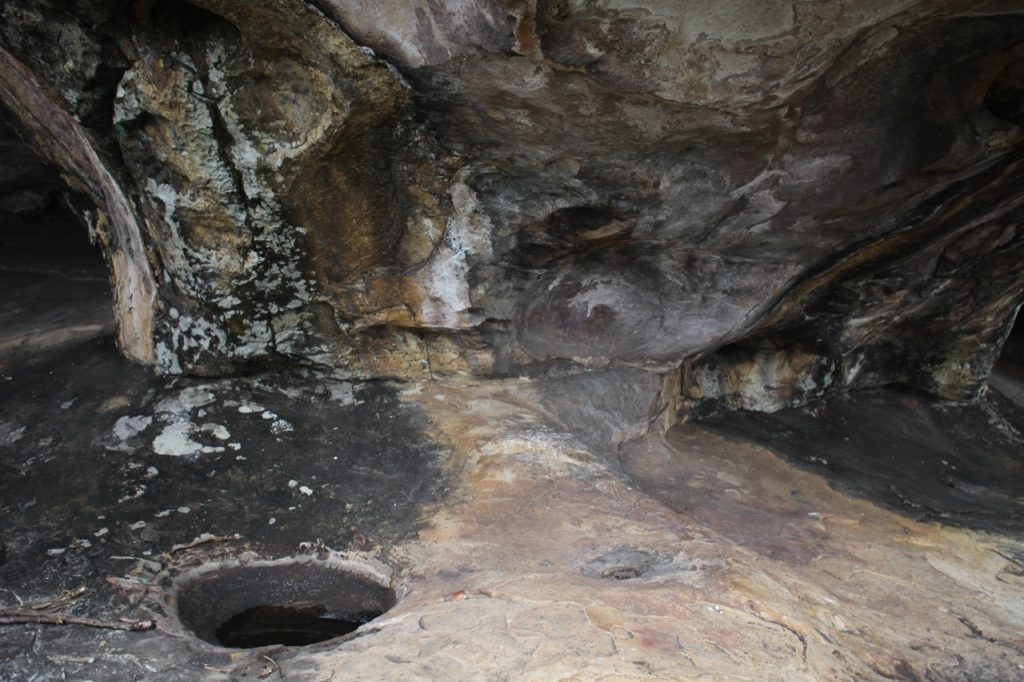
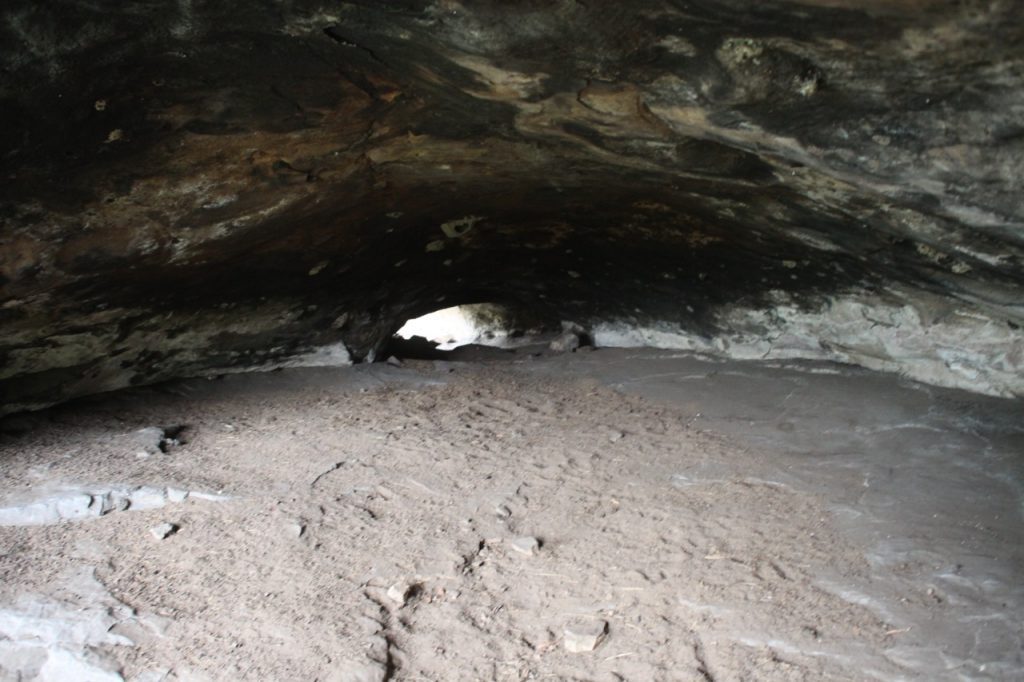
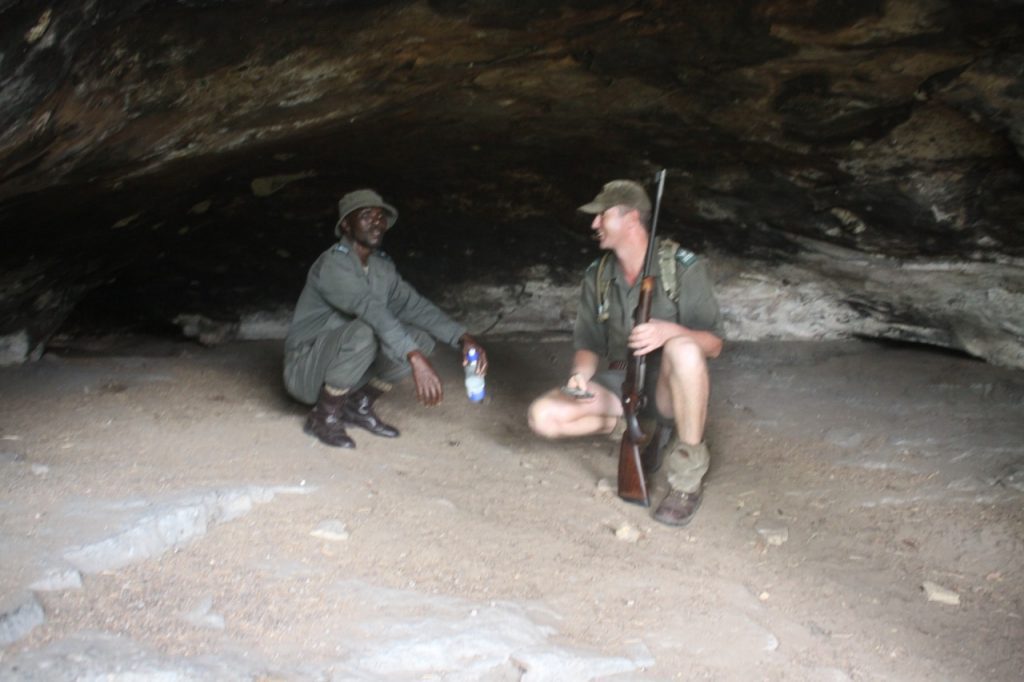
Heading back we came across a porcupine kill – lots of quills still attached to pieces of skin. Once again Jaco read the signs of the wild and showed us where the male leopard (yes, you can see the sex of the leopard from the tracks) had ambushed the porcupine and killed it and where he had dragged it into the shade to finish eating it. It was interesting to see all the different lengths, shapes and sizes of the quills depending where on the body they are found. Tempting as it was to take some as momentos, we left them there where they belonged as Jaco says that porcupine quills now sell for R1,000 each which is endangering the species! We continued our walk and Jaco showed us very fresh aardwolf scat – never seen before in all our years and now twice in two days – wish we saw the aardwolf himself though!!
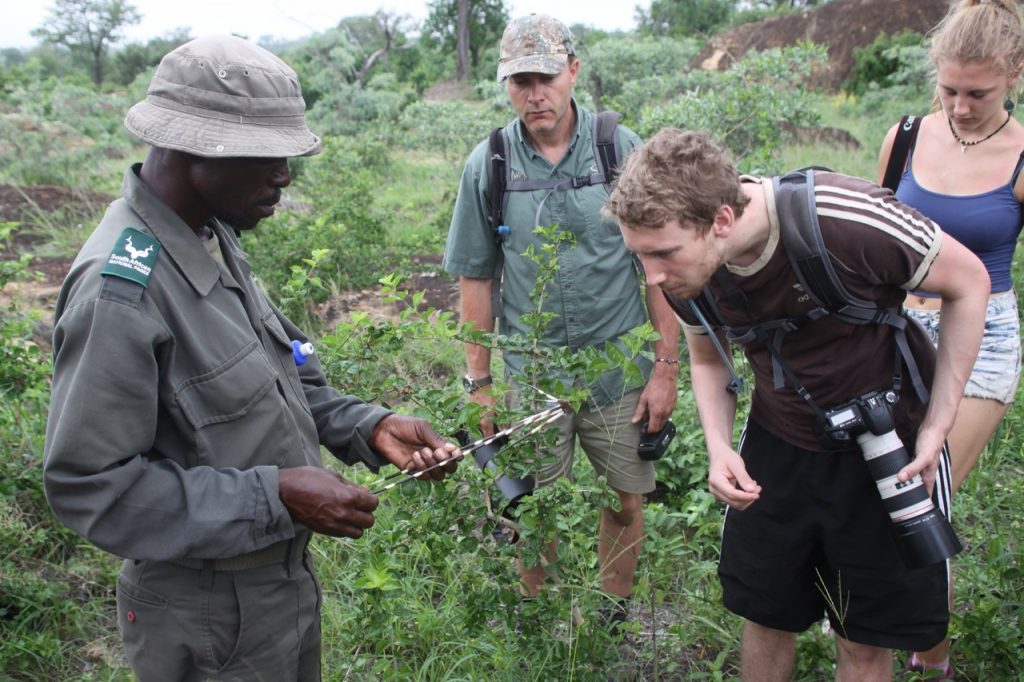
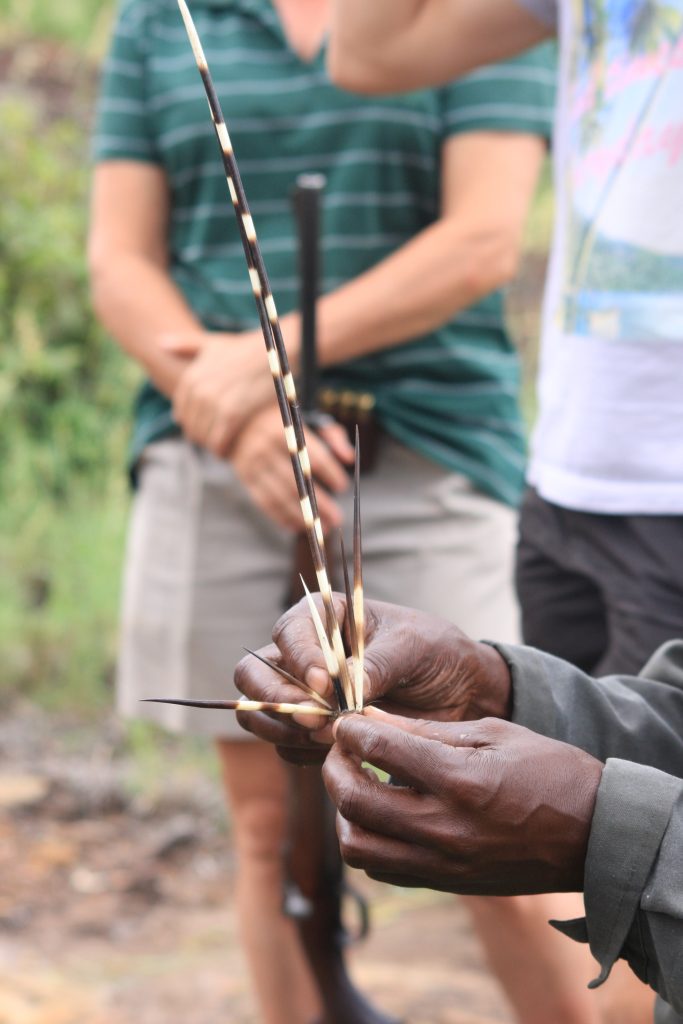
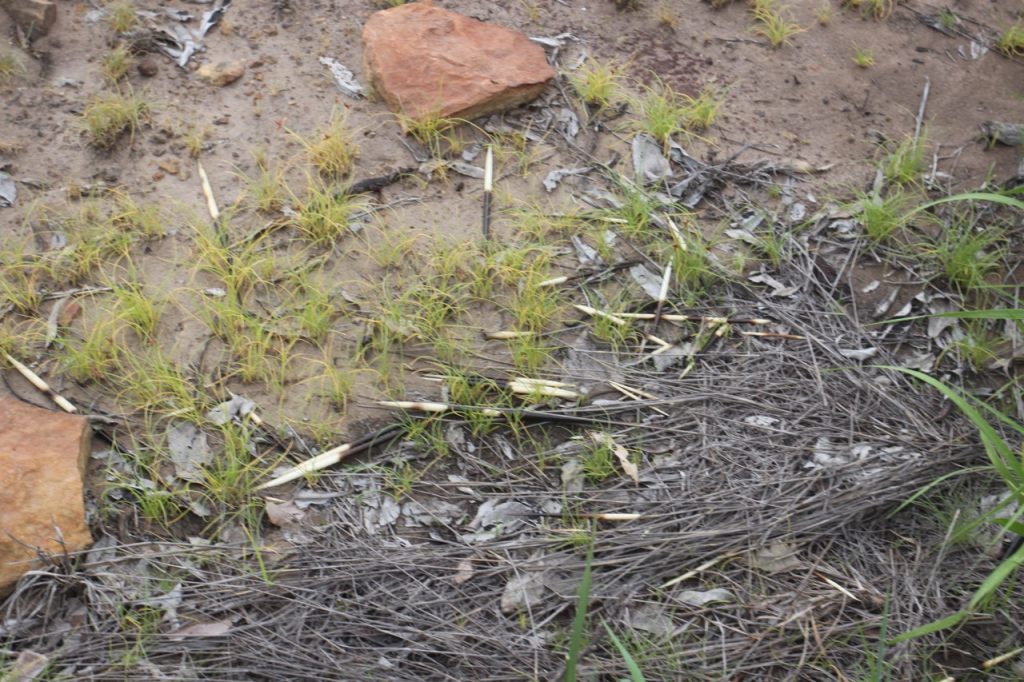
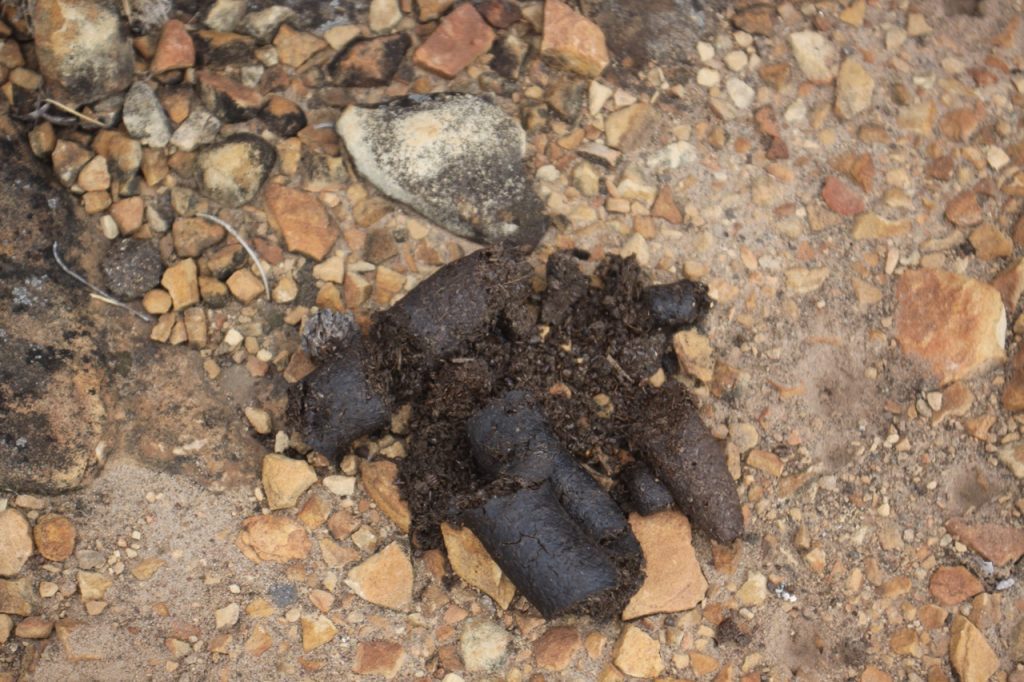
What an exciting morning walk! We got back into the car and after being so quiet for so long the car was buzzing with excited conversation reliving the dagga boy incident – this is what memories are made of!
This confused elephant in musth whose hormones had him in such a state that he didn’t know whether he was eating or drinking and in fact ended up doing neither even though he had both water and grass in his mouth!
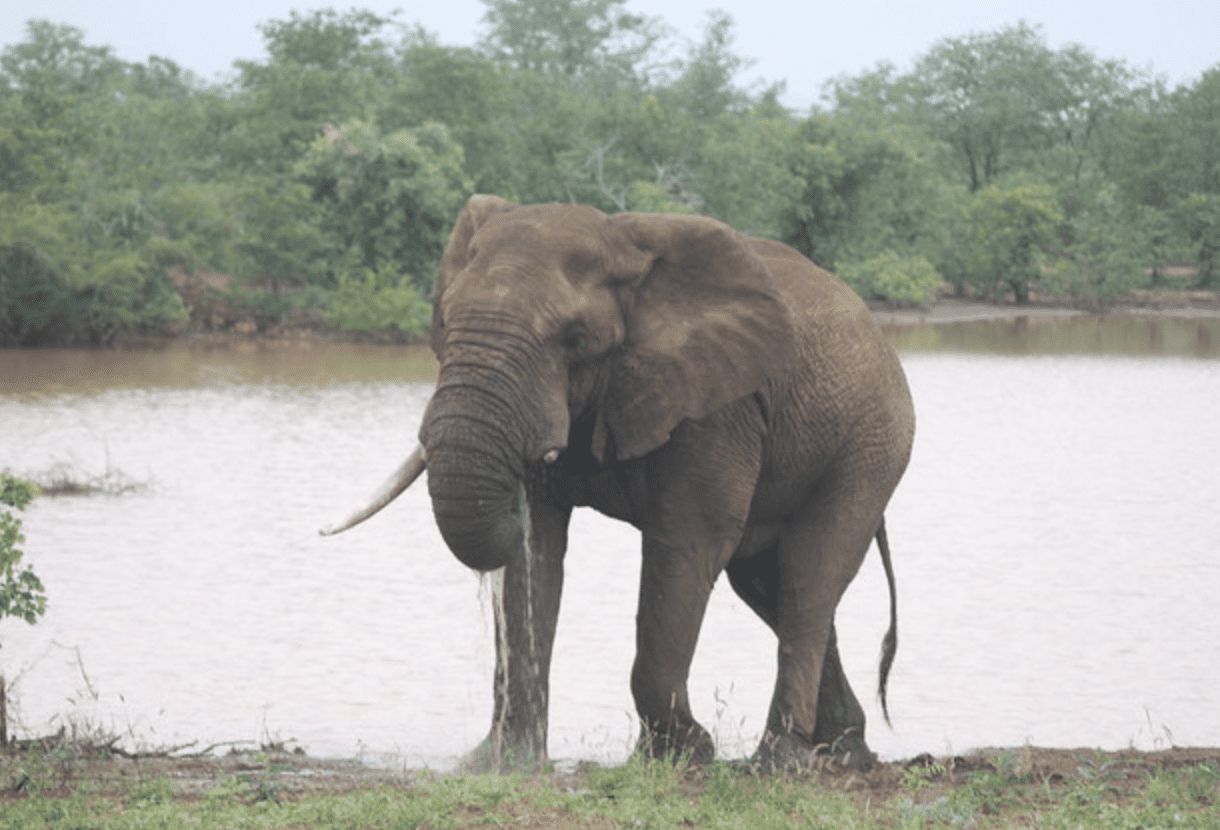
Impala ‘stotting’ –this is the term used for impala when they are spronking like springboks! Apparently a change in the weather induces this behaviour (it had turned from the really hot day of yesterday to a fairly cool day today). (Not a great photo- sorry!)
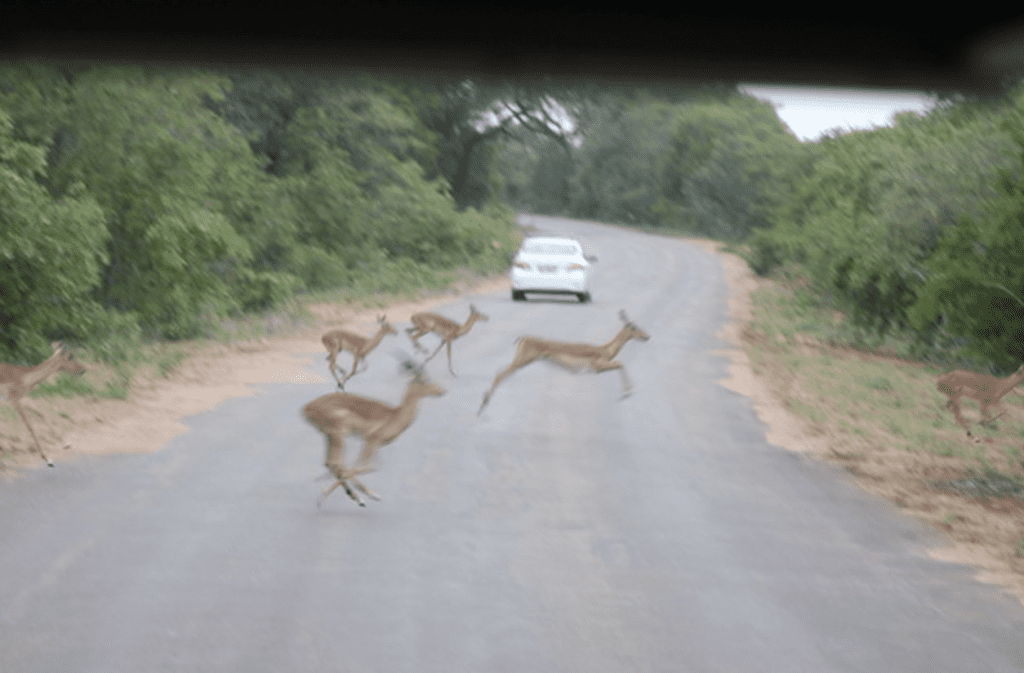
Back at camp we were very excited to see crested guinea fowl – first time we have seen them! There was also a thirsty tortoise on the road.
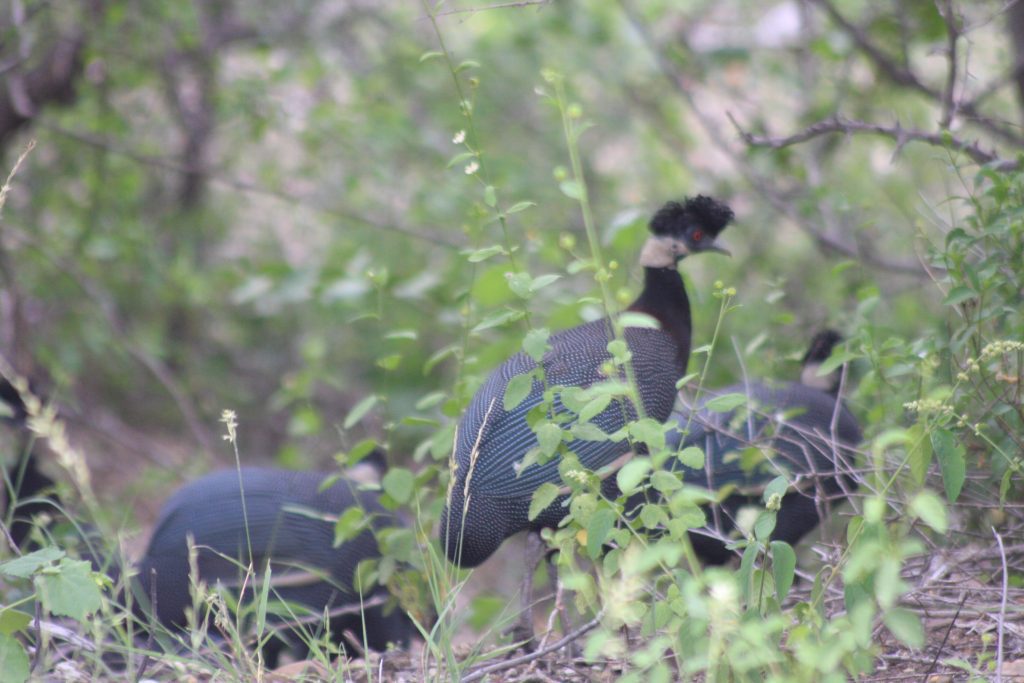
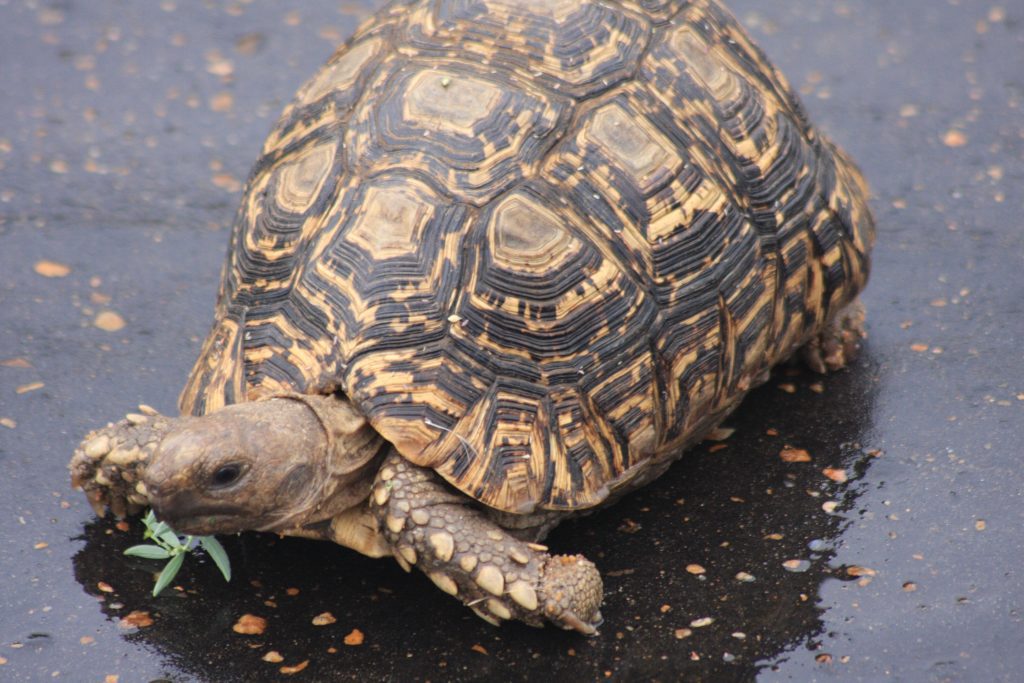
We drove on to Thulamela which is a hilltop citadel and an important Iron Age Site that was occupied from the 15th – 17th century. We were met by the extremely entertaining and highly theatrical Daniel from SAN Parks who told us to ignore the information boards describing the area around us for the moment and to instead focus on him as all the information that we required was upstairs in his brain and he would impart this through his own means. He proceeded to provide quite a show enacting the passage of events passionately for our benefit, lying on the floor to demonstrate the position in which skeletons were discovered and generally inducing hilarity all round.
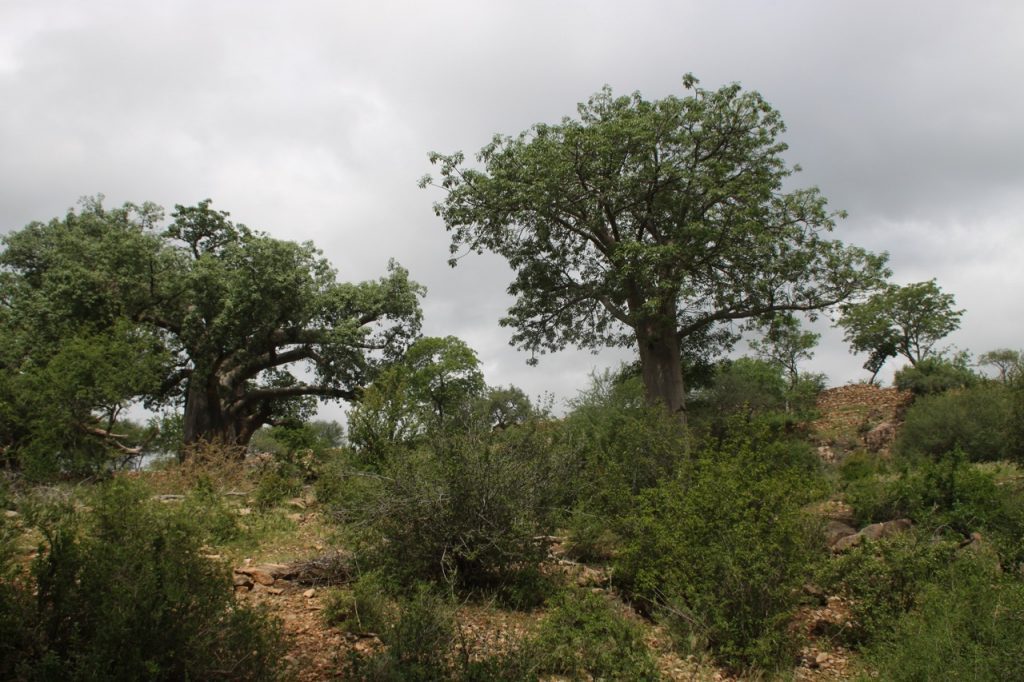
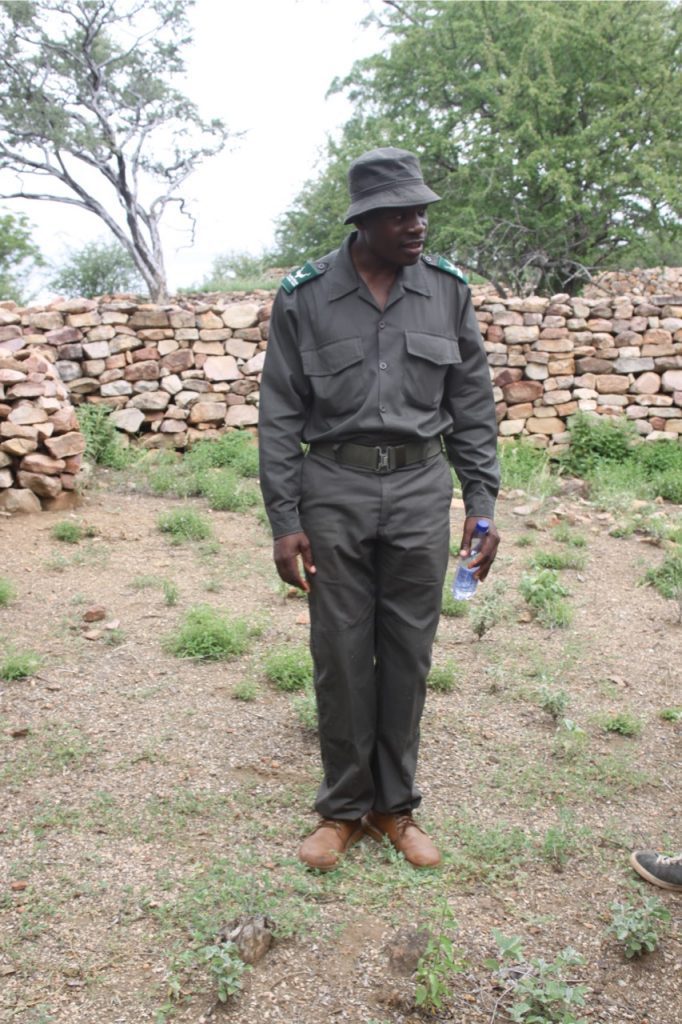
As a rather sad aside, Jaco had told us that the last time they had all been gathered in this exact spot where we were standing, another great SAN Parks guide called Erik had been co-hosting their group when he complained of discomfort in his head. He collapsed almost immediately and Jaco had put him in his vehicle to drive him to hospital but he sadly passed away en-route due to his diabetes – a shocking ordeal for all concerned and very sad. Daniel showed us a small acacia tree growing on the exact spot where Erik had collapsed and said that was his tree devoted to Erik’s memory.
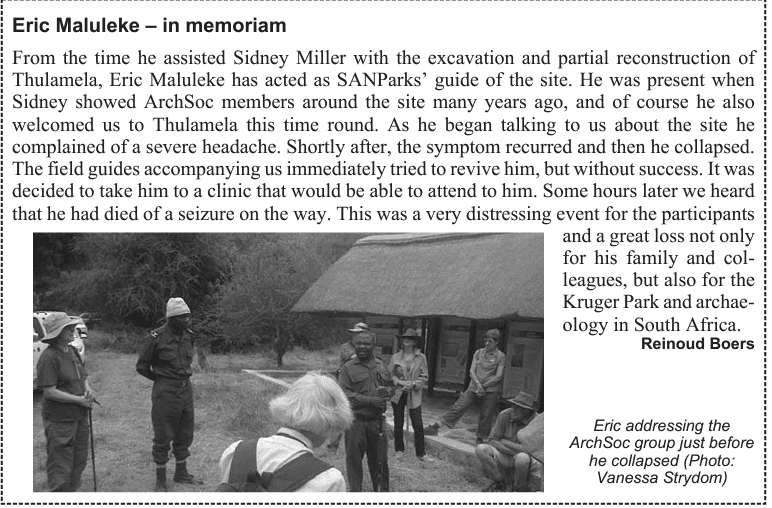
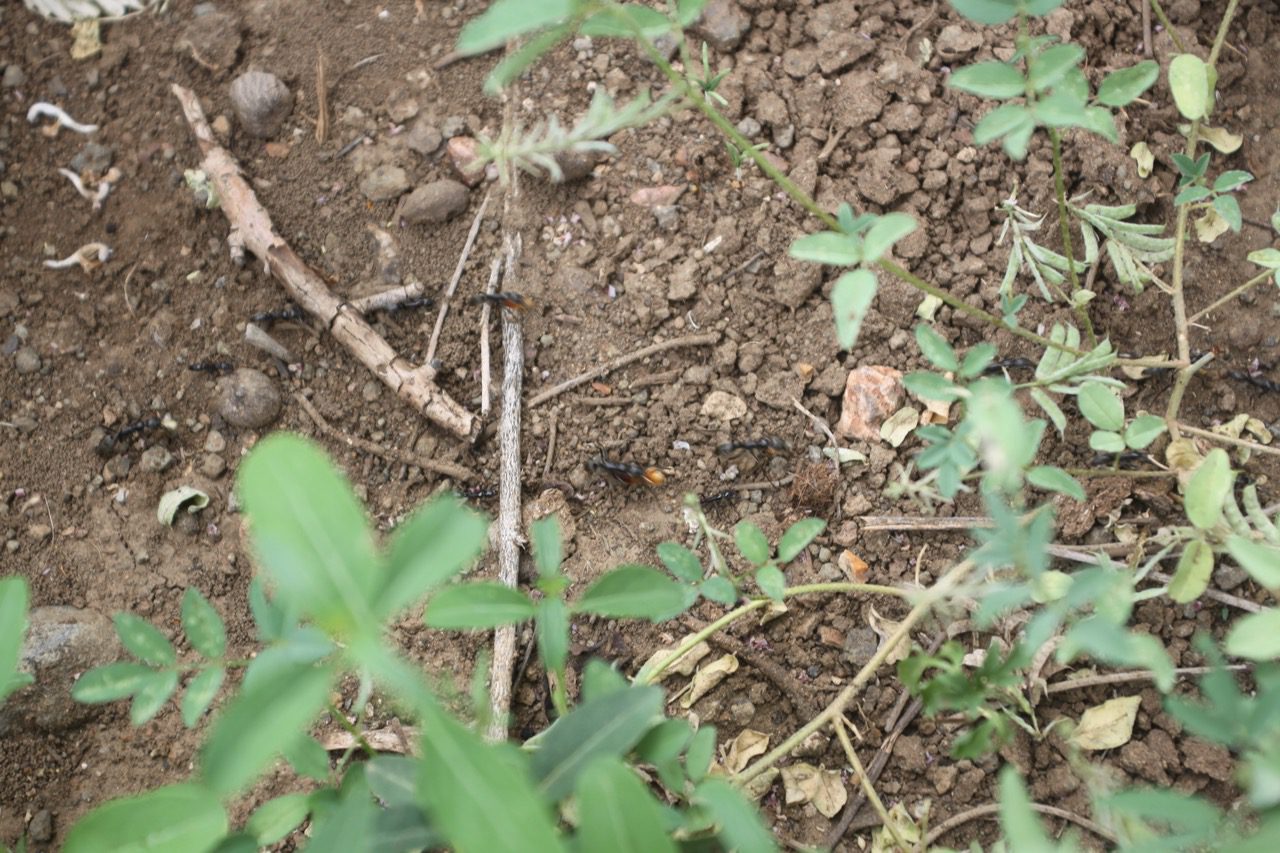
We then followed Daniel up the hill to where the royal enclosure accommodating 1,000 people had been based.
The hillsides are dotted with collapsed walls and signs of dwellings where a further 2,000 commoners lived and traded. We stopped and had a family photograph next to an enormous and very old baobab tree. Jaco showed us leopard tracks on the tree where the leopard had recently dragged prey up into the enormous bows.
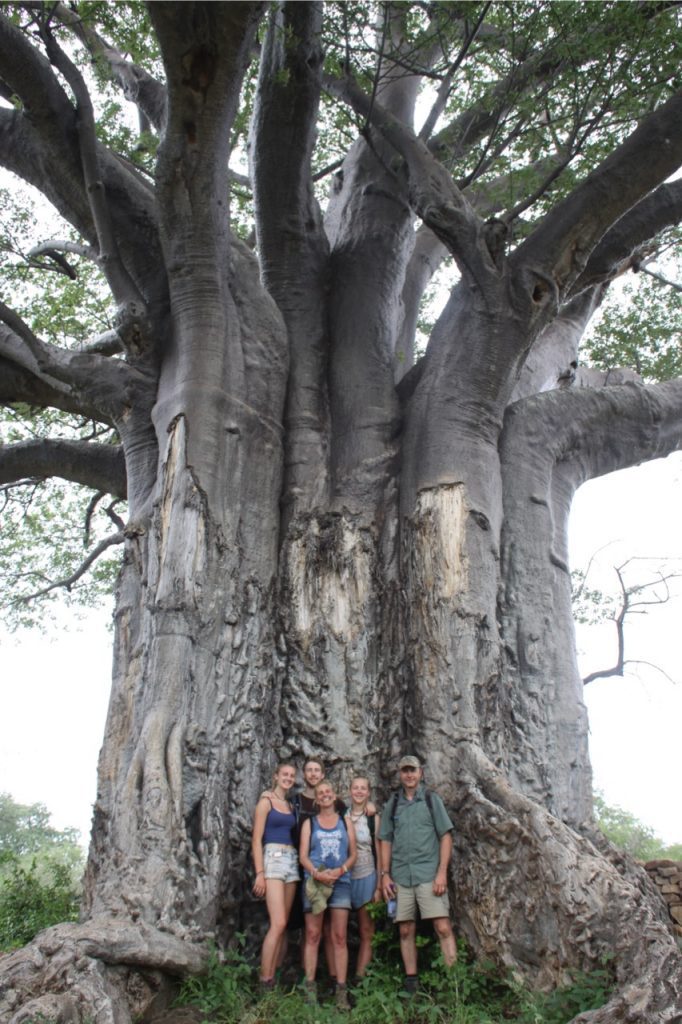
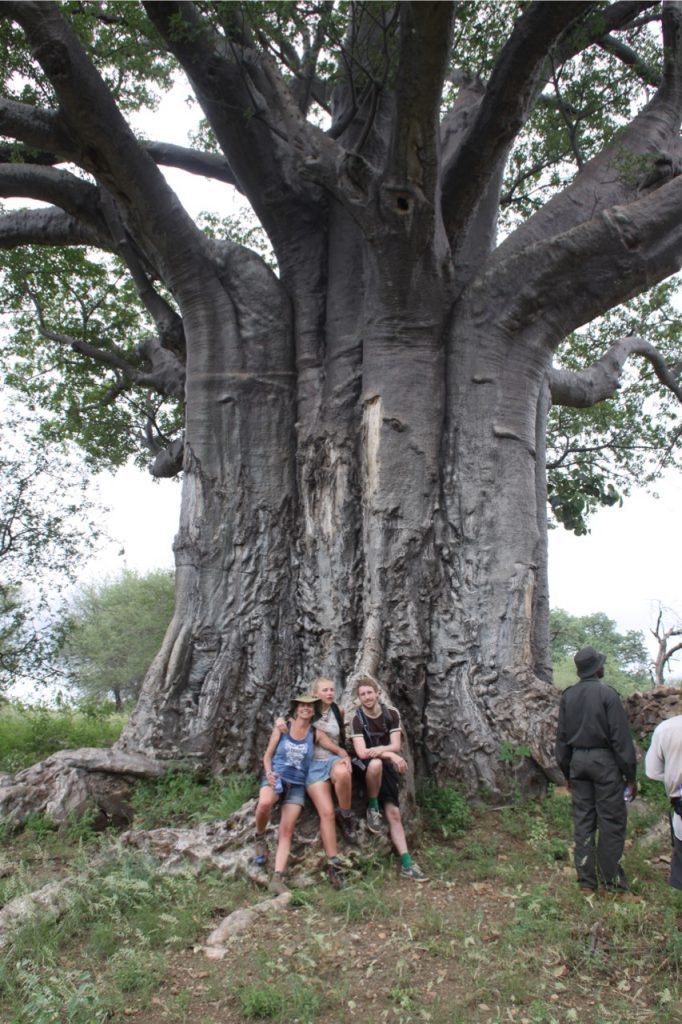
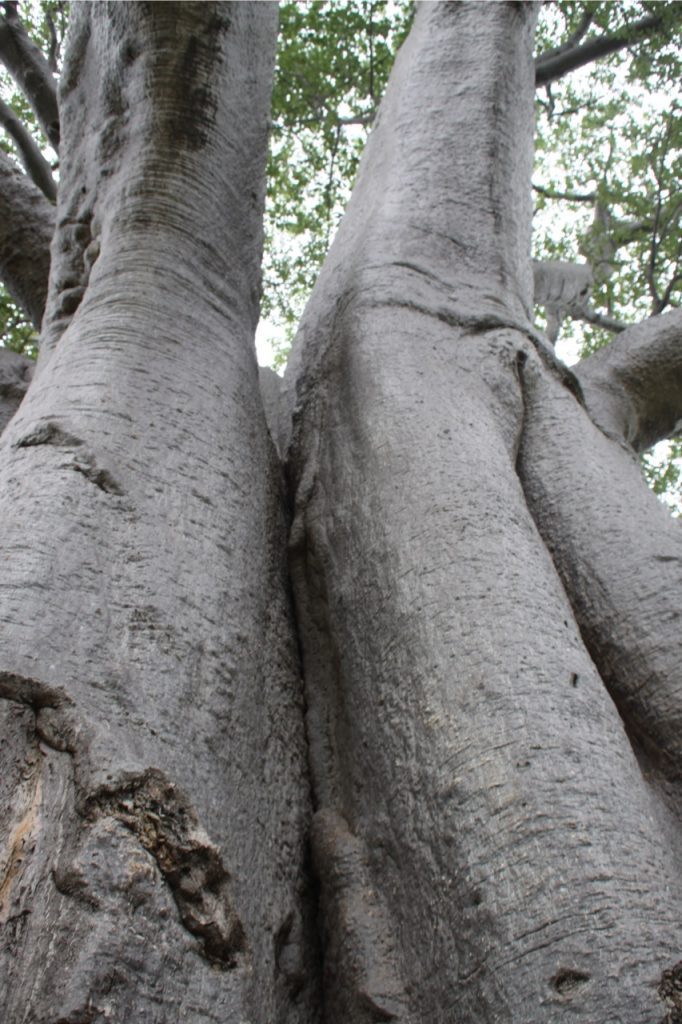
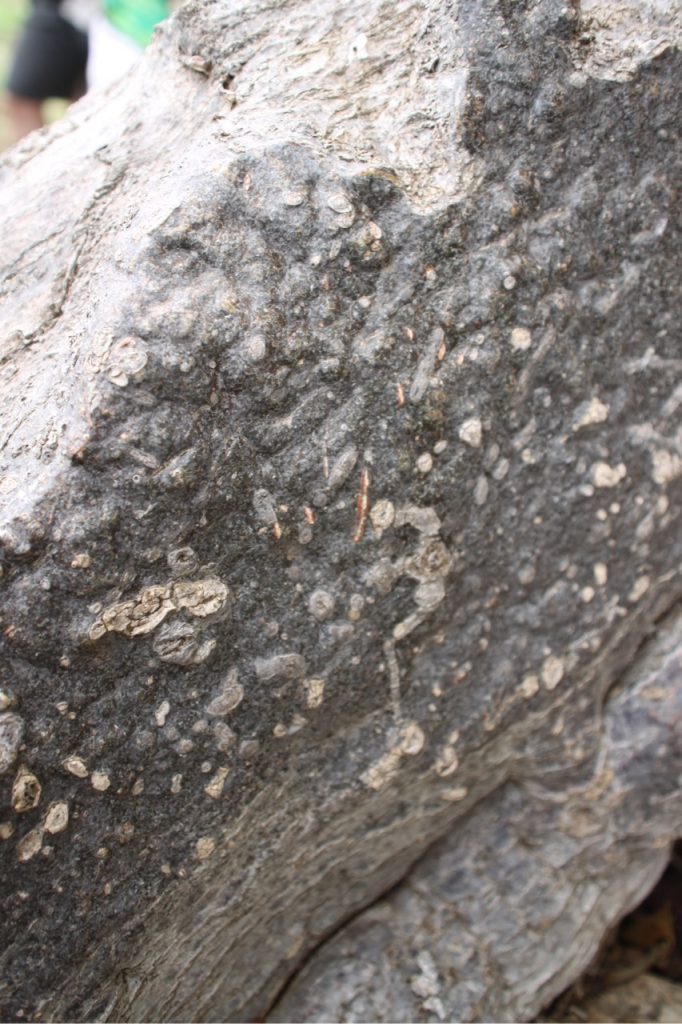
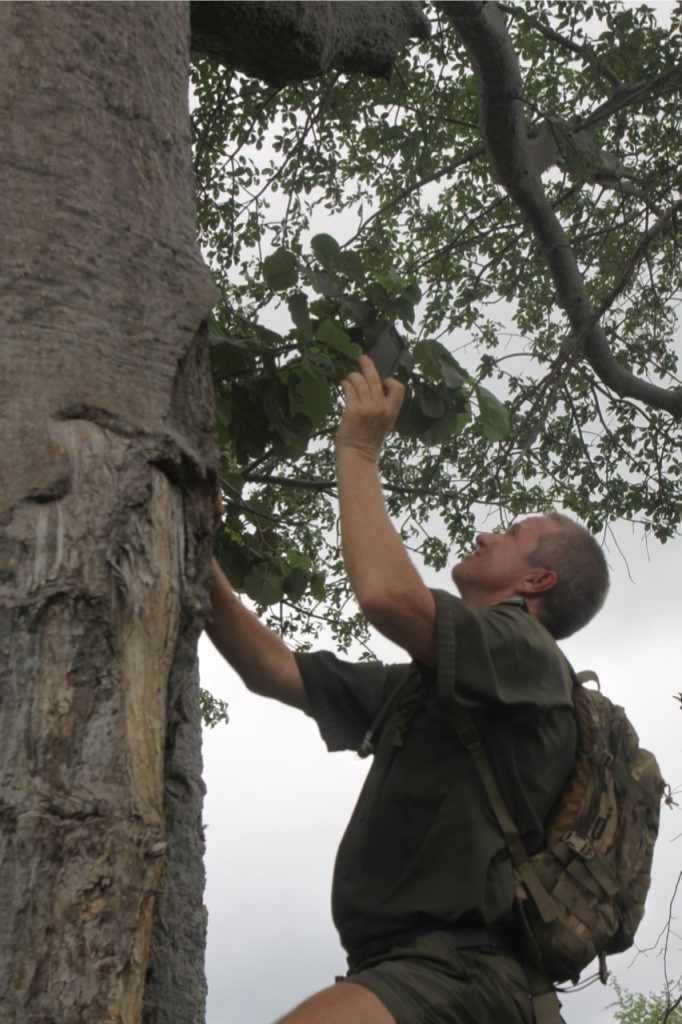
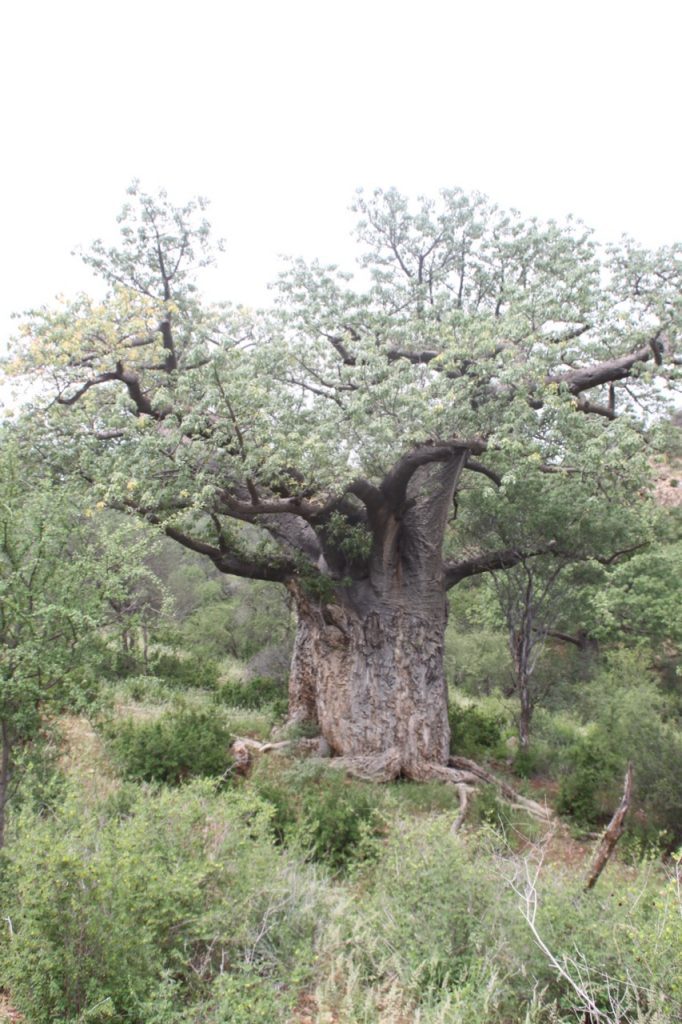
We also admired two baobabs entwined with another – Charlotte spotted a rock python slithering through a hollow space – great spot!!
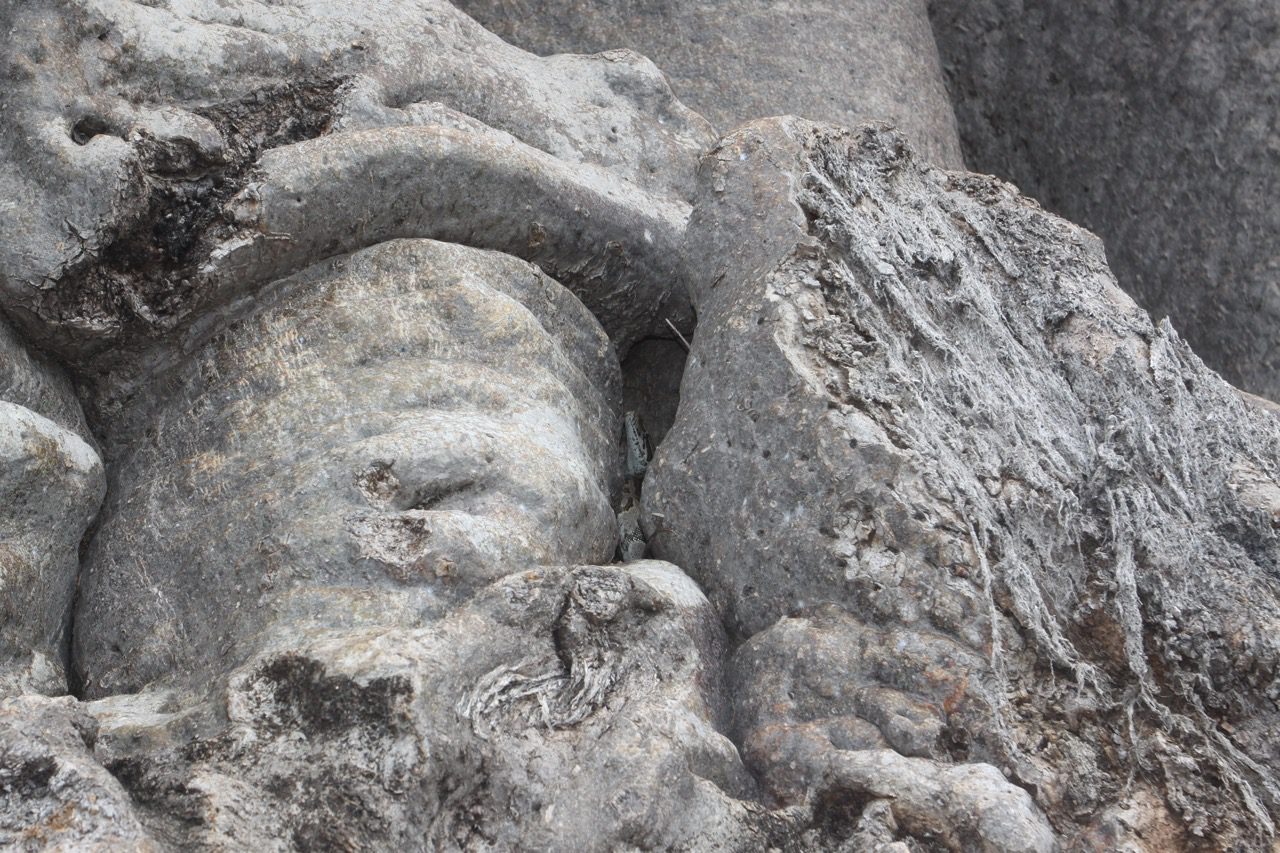
We continued on to the grave of an African Queen who ruled here in the 16th century. She is named Queen Losha because she was buried with her hands under her cheeks in a position known as ‘losha’ meaning great respect (for her King). Next to her grave is that of King Ingwe, so called because on the day that his grave was found a leopard was waiting as the excavating team returned to the vehicle. Vanessa says she has always had a leopard sighting following a visit to his grave – maybe we would be so lucky too?!
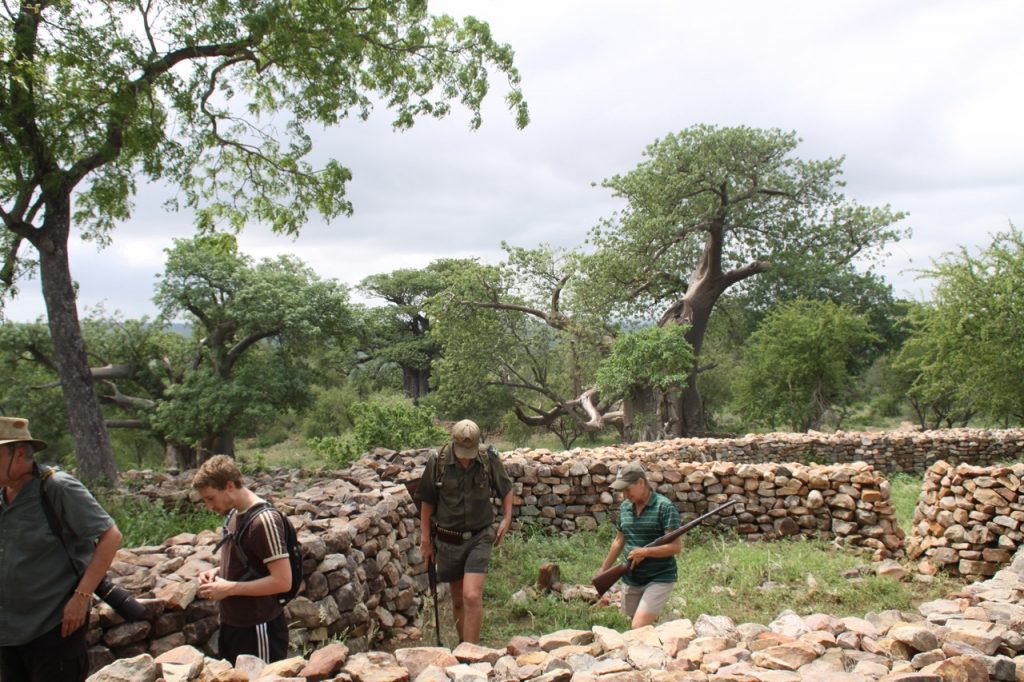
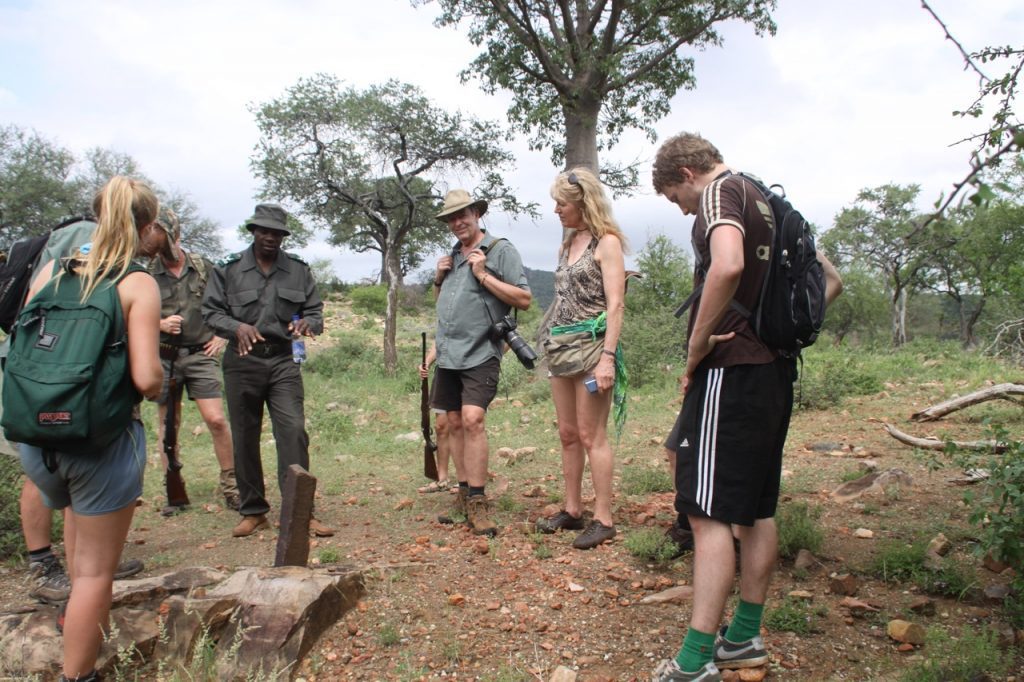
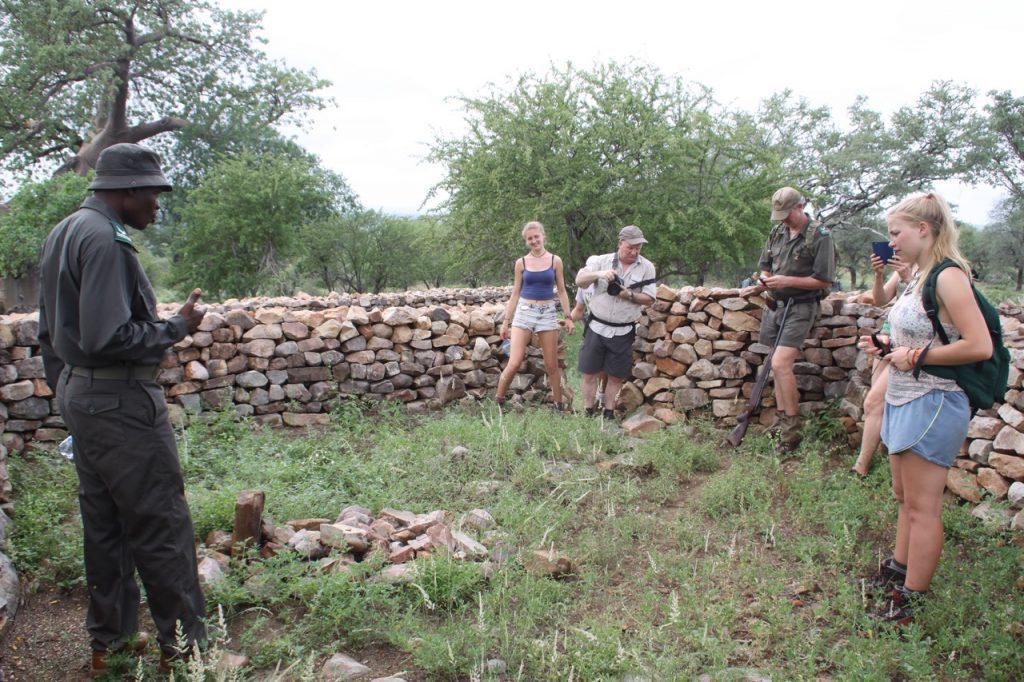
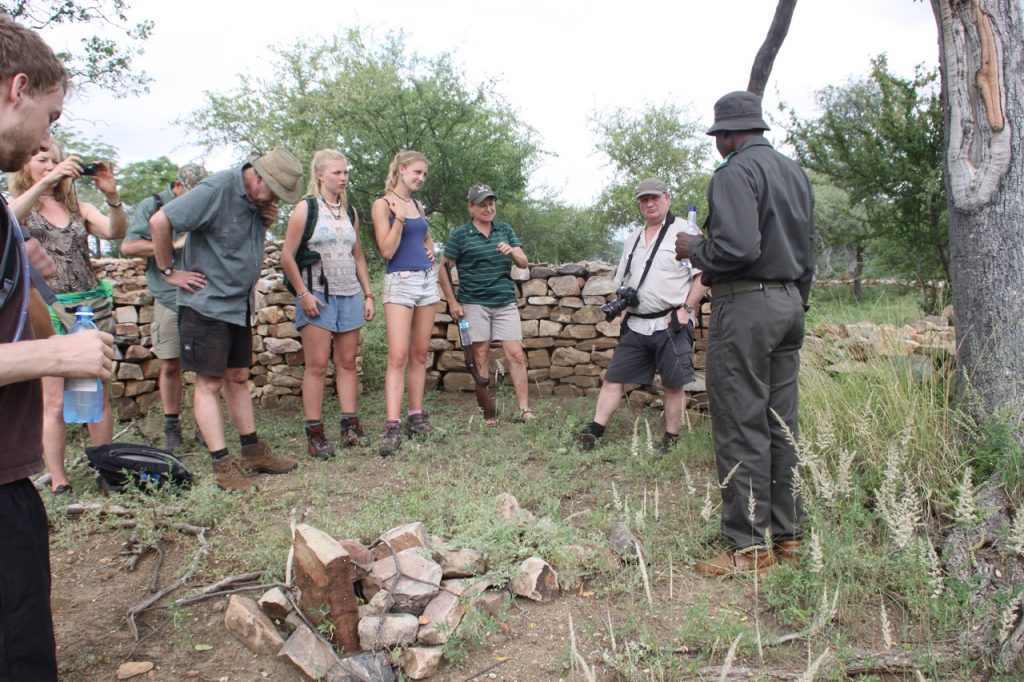
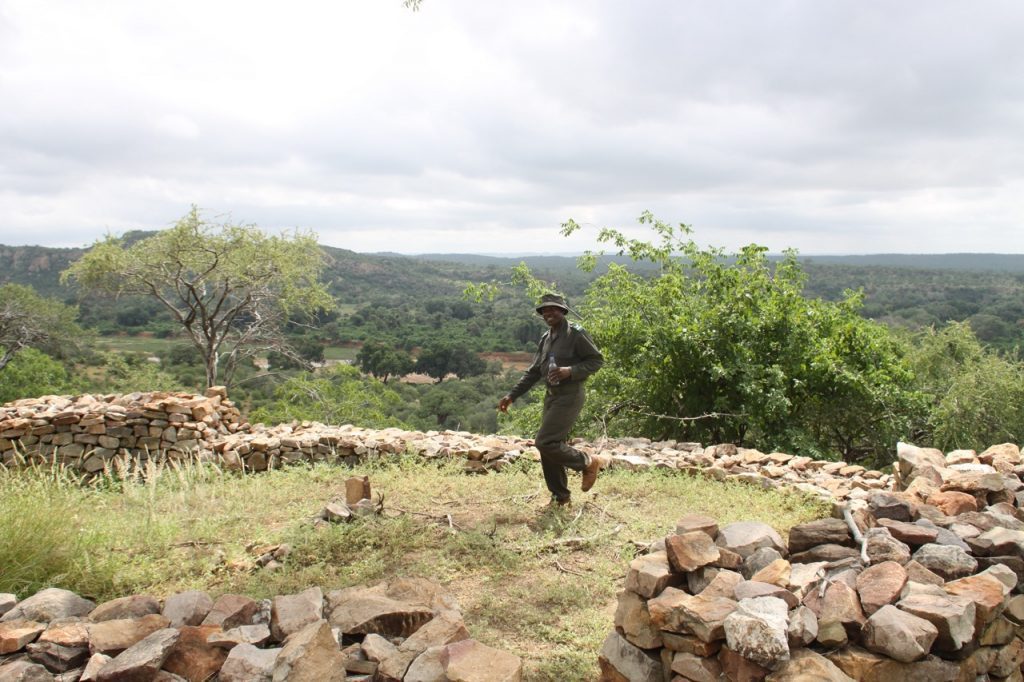
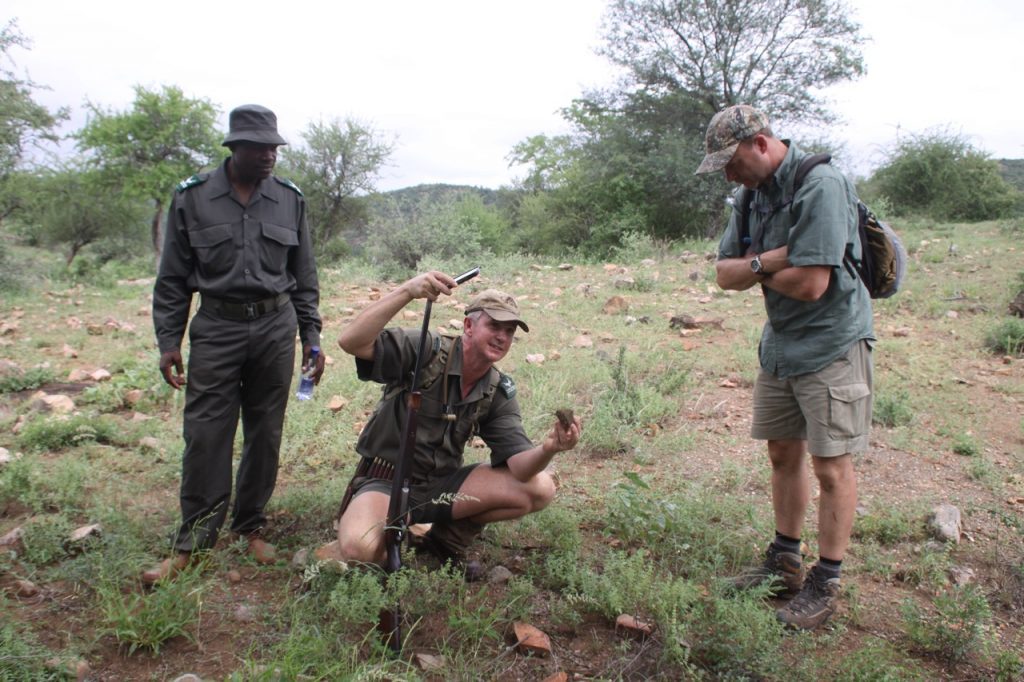
We then moved to where the wives of the king lived. Daniel suggested that we scour the ground to see whether we could find any ostrich beads…Paul, Trent and Charlotte found several as well as pieces of pottery. Trent also found a bronze bracelet! Vanessa thought that as a result of the recent flash floods these items had been displaced. We gave them to Daniel for safekeeping along with the other treasures that have been discovered in the area. Jaco also spotted a piece of bracelet in this aardvark hole.
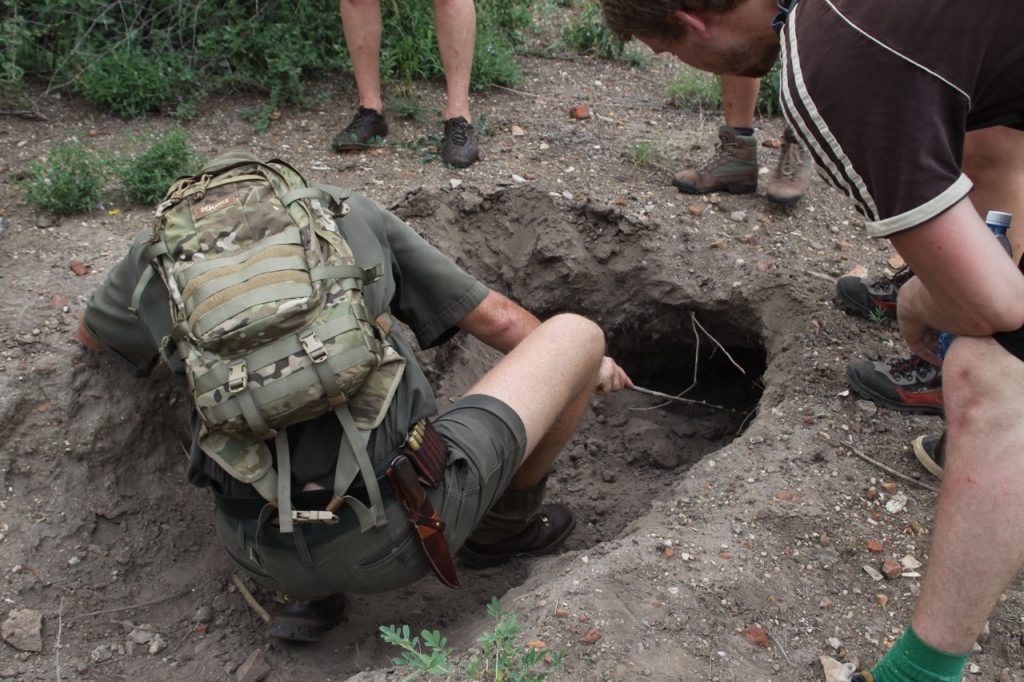
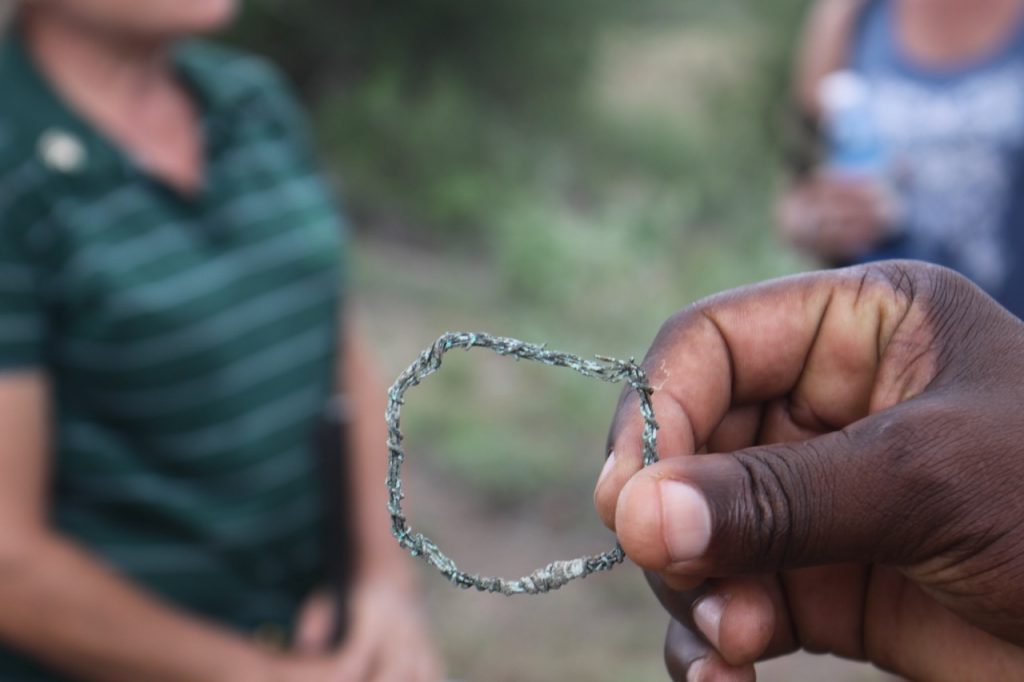
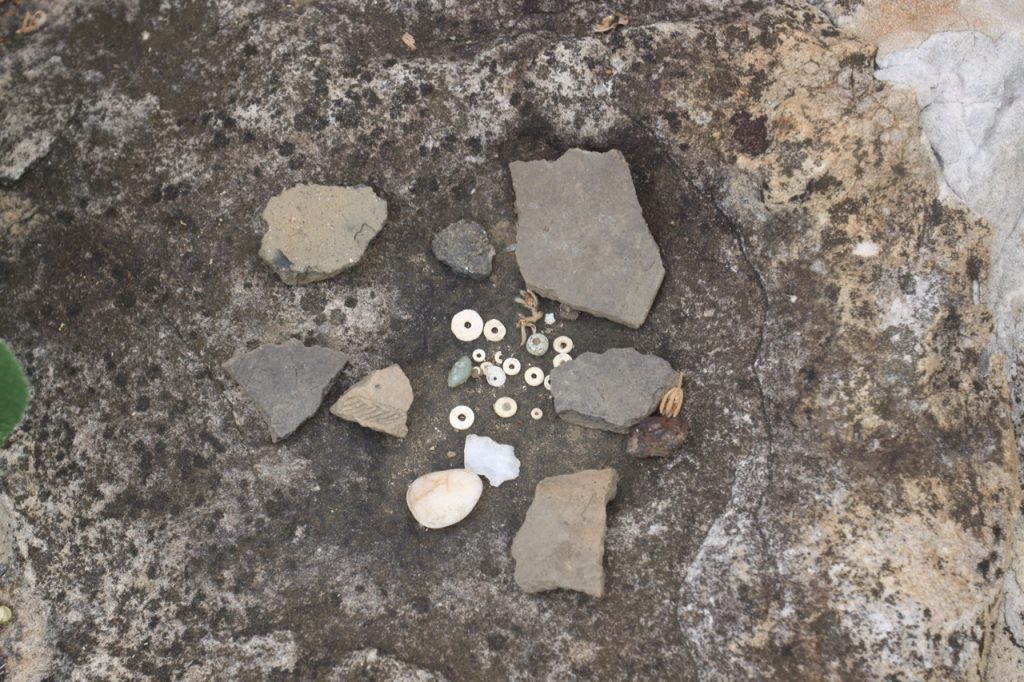
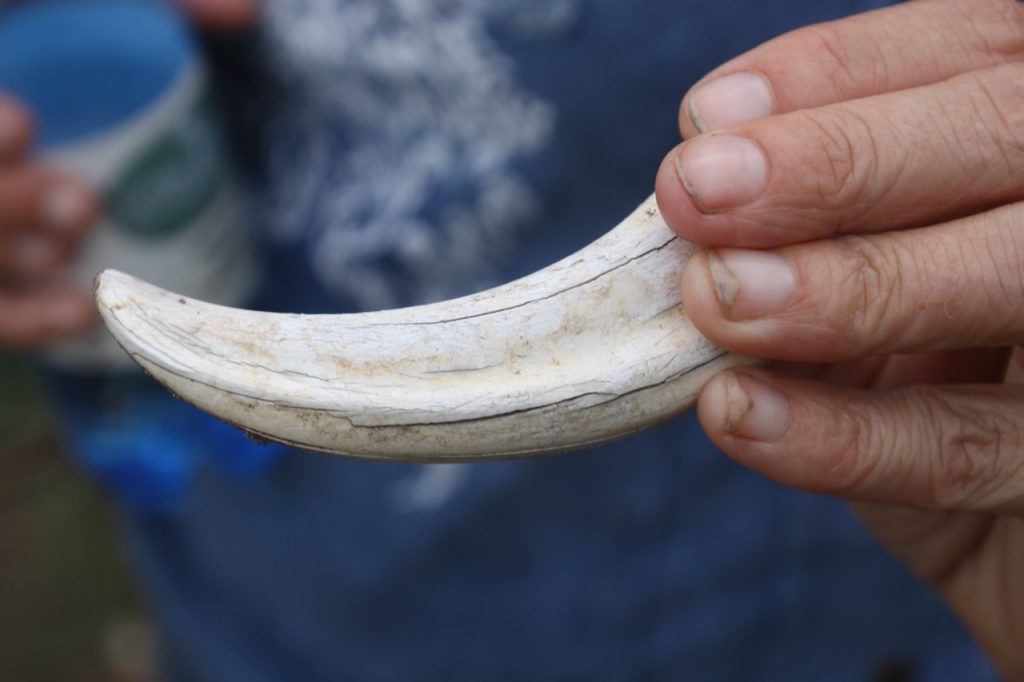
The views looking down on the Luvuvhu River and baobab tree forests were breath taking and we simply sat there in silence for a while enjoying the peace and serenity of this special place and reflecting on the ancient ancestral spirits who dwelled here and feeling a strong connection to the past of this magnificent site, the landscape did probably not look too different to the future where we now found ourselves. You could almost hear the livestock, ancient agriculture, handcrafts and sounds of the people who lived there…
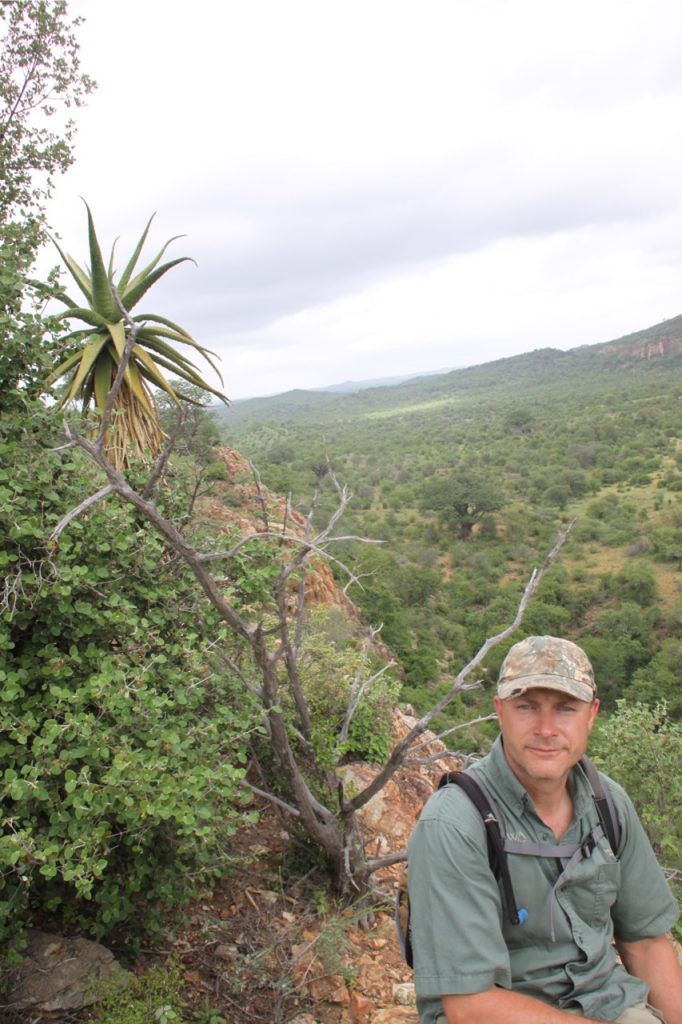
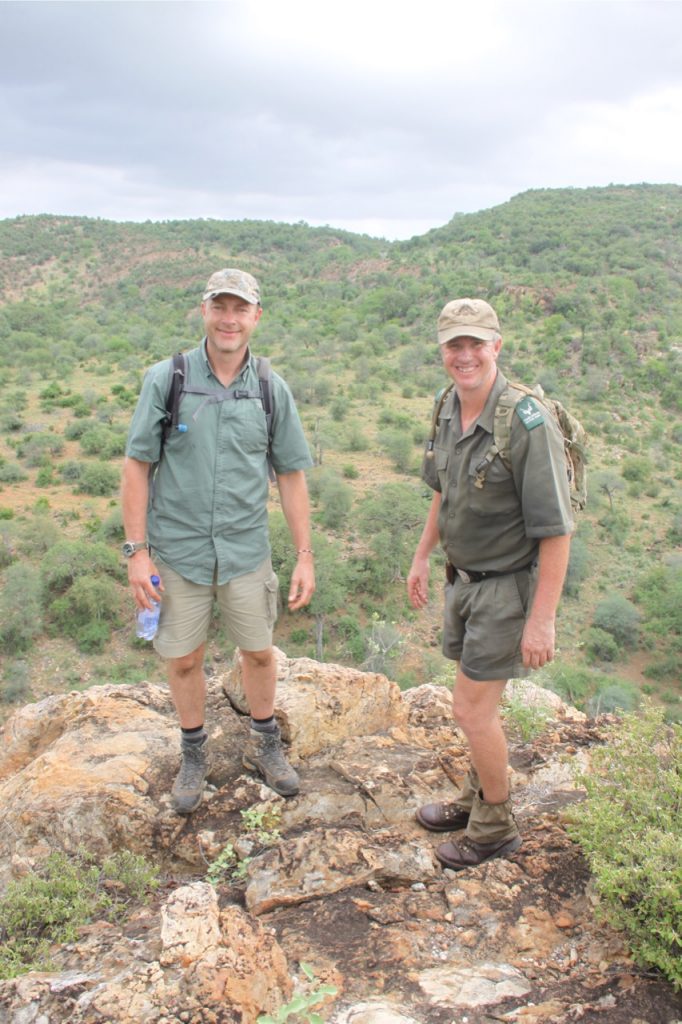
There was a special rock fig growing in the area where the local people had come to honour and provide burial rights to their ancestors and a plaque bears testimony to this. … and we found a chameleon!
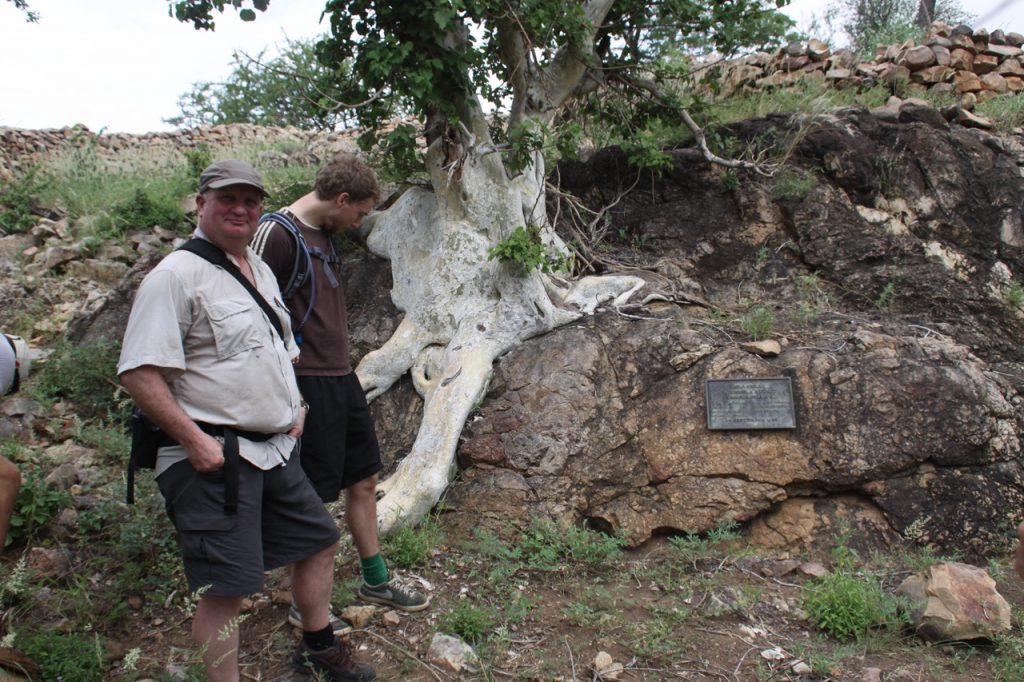
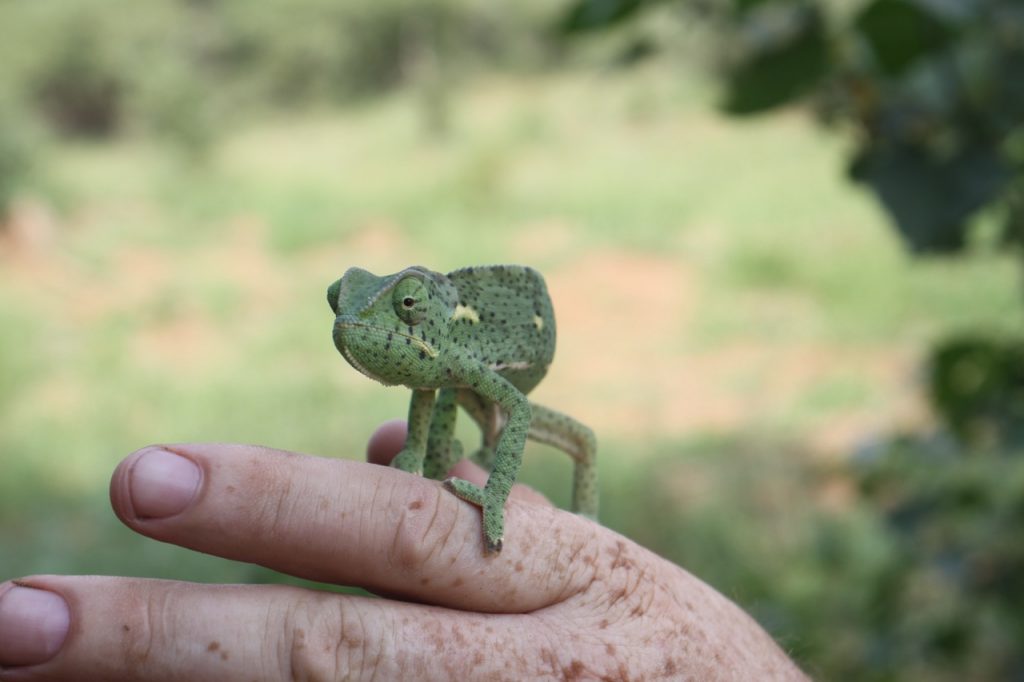
We spotted a pair of black eagles which pair for life and live for 50 years. We could have spent all day here exploring further but it was unfortunately time to go. We had to say goodbye to Ben and Vanessa as he had to go back to boarding school- all felt very sad as we’d grown very fond of each other.
We headed to the wonderful Pafuri picnic spot which we had all to ourselves. The flood levels here in 2000 were quite unbelievable! We hired a Skottel for R20 and got some got water for our teas and coffees and Jaco cooked up a huge and delicious brunch – Yum!!
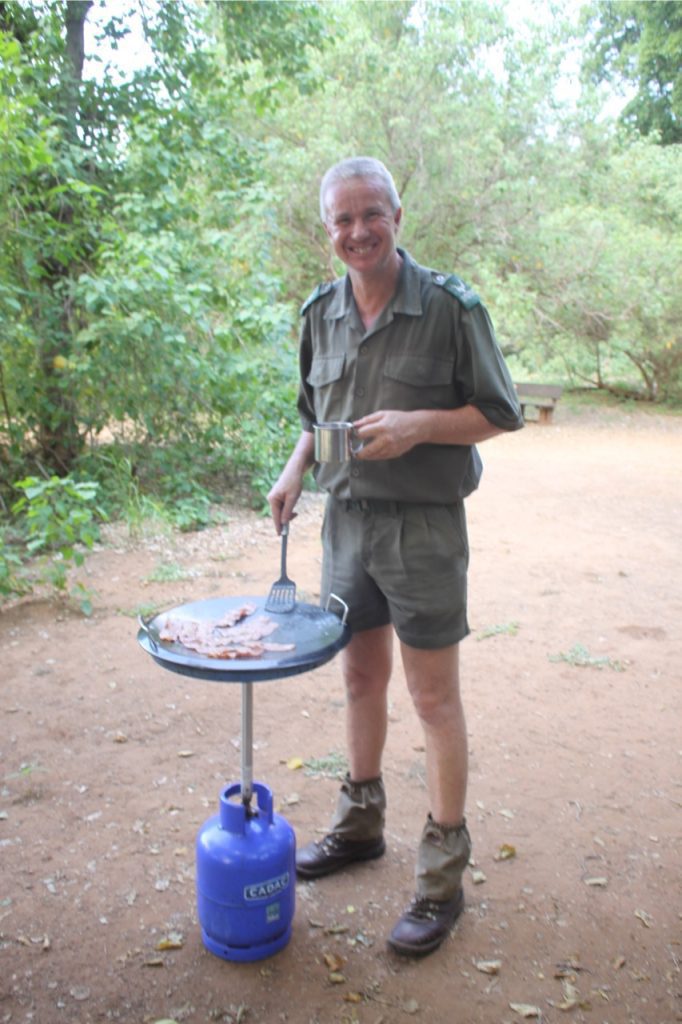
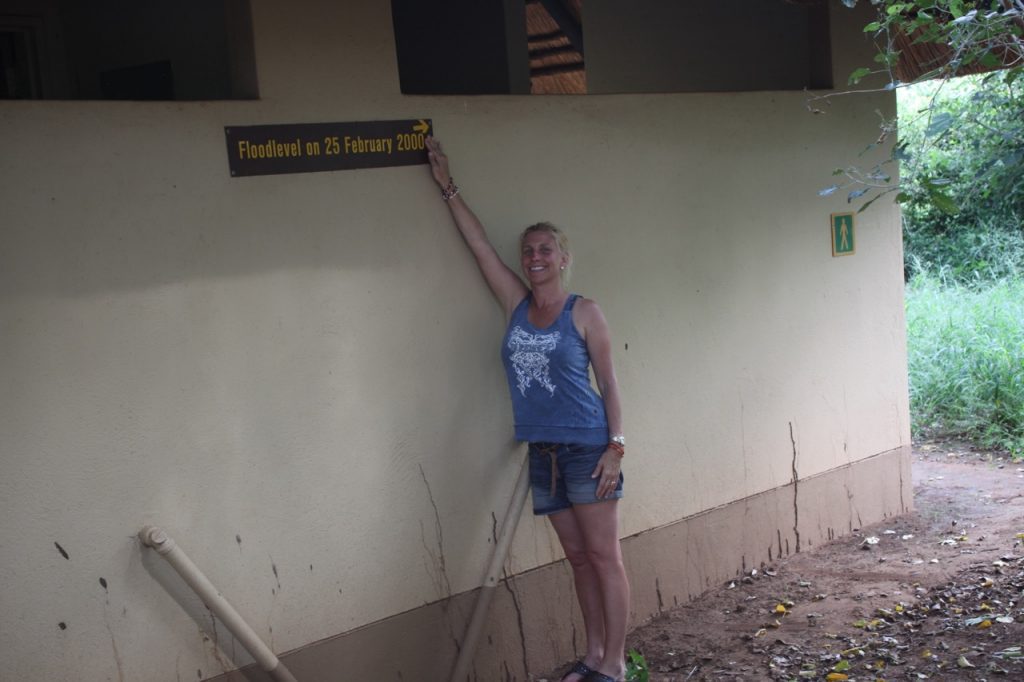
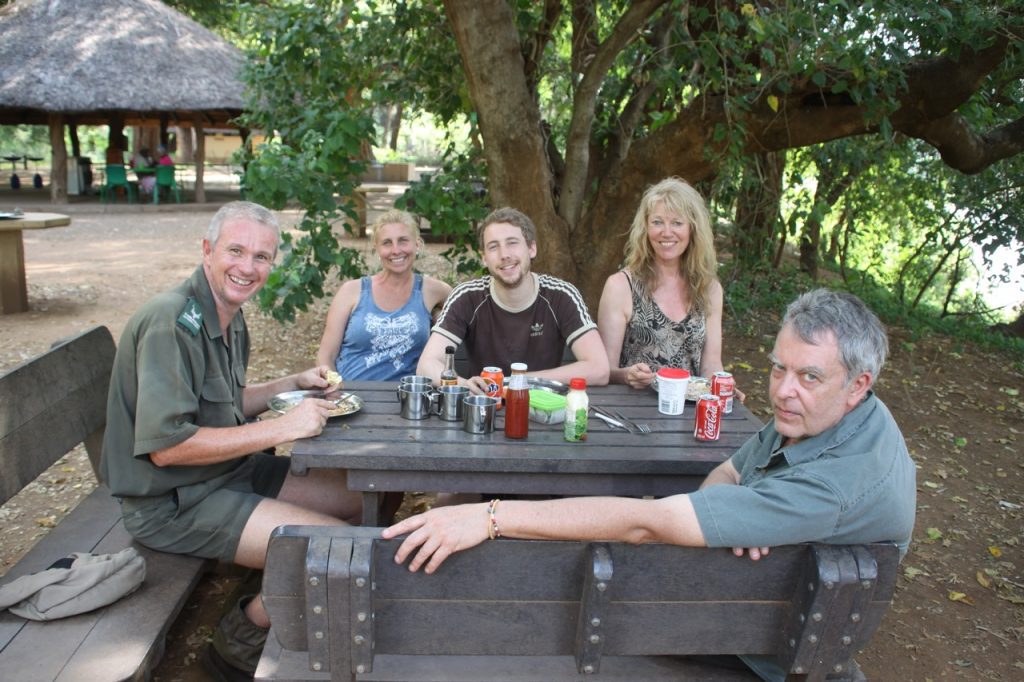
We hired a Skottel for R20 and got some got water for our teas and coffees and Jaco cooked up a huge and delicious brunch – Yum!! We then drove through the amazing fever tree forest on the alluvial flood plain past huge Nyala Trees, Sausage Trees etc – I sincerely think that this is one of the most beautiful roads in the Kruger.The photo does not do the scenery justice. … onwards towards Crooks Corner where we gazed out across the confluence of the Limpopo and Luvuvhu Rivers and where the boundaries of South Africa, Zimbabwe and Mozambique meet.
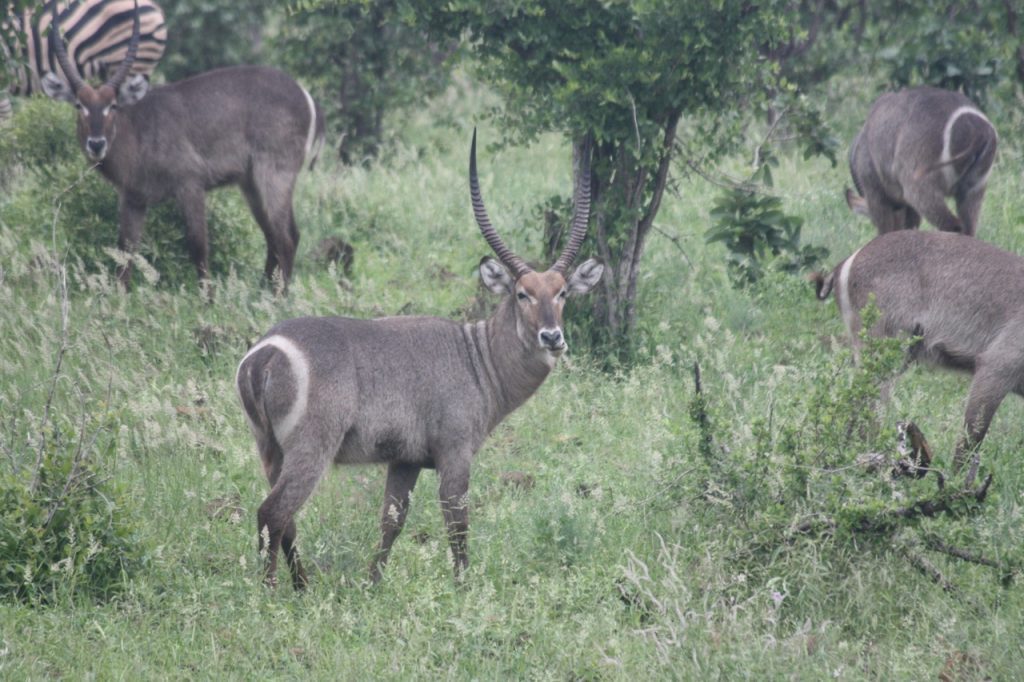
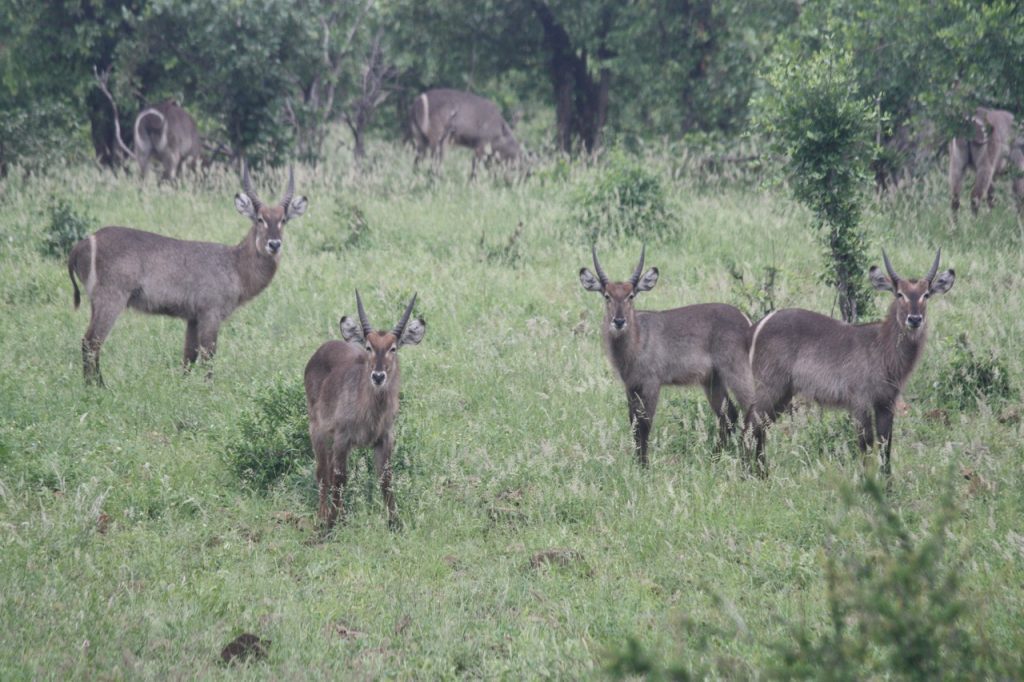
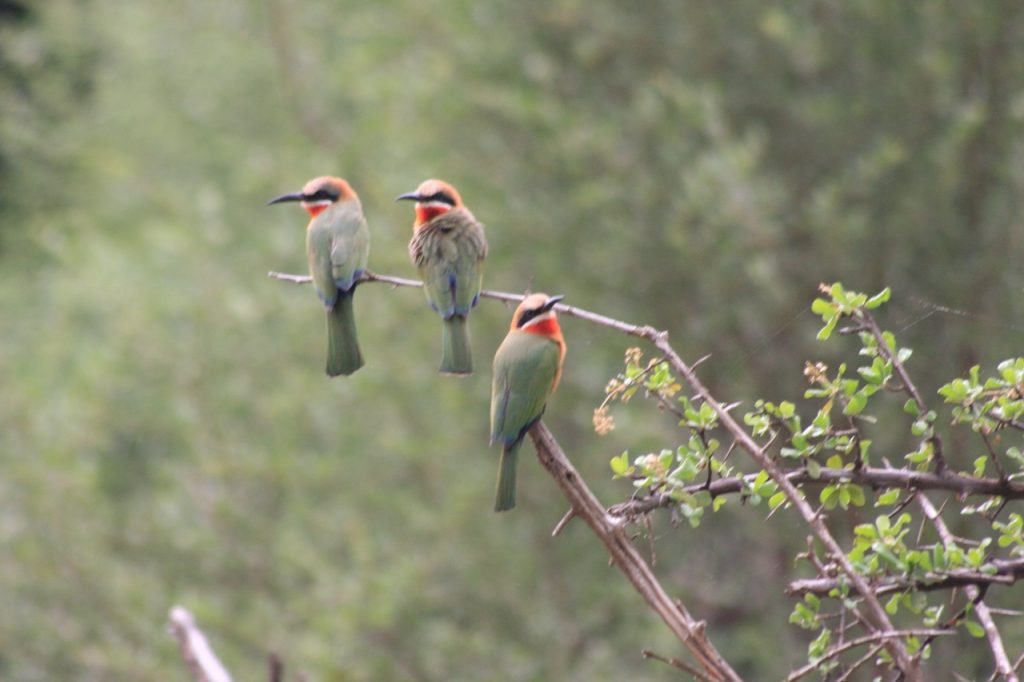
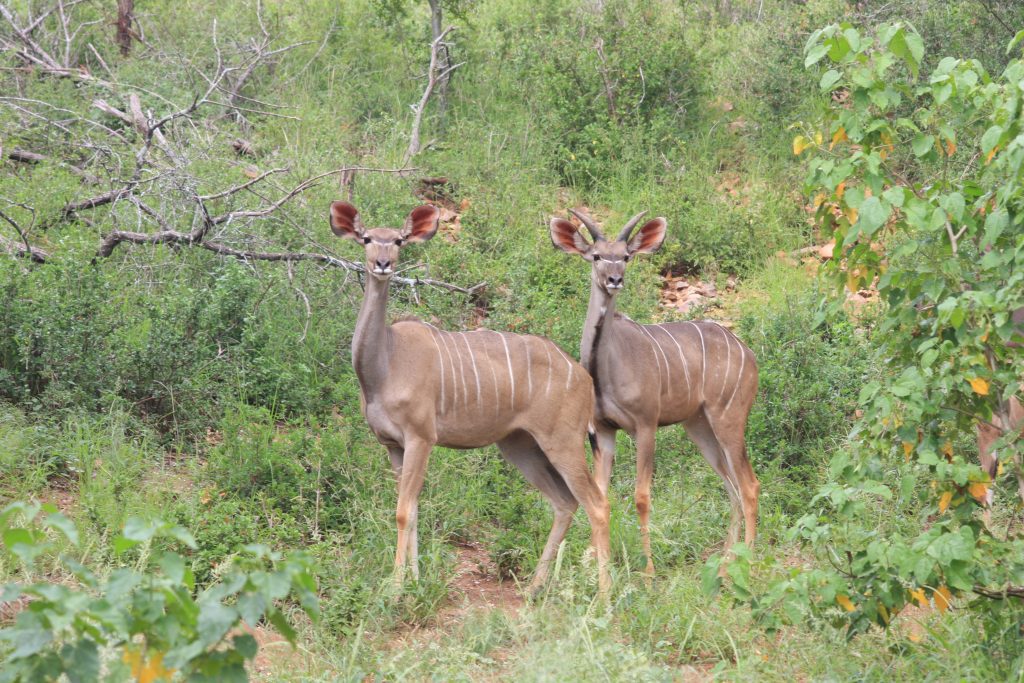
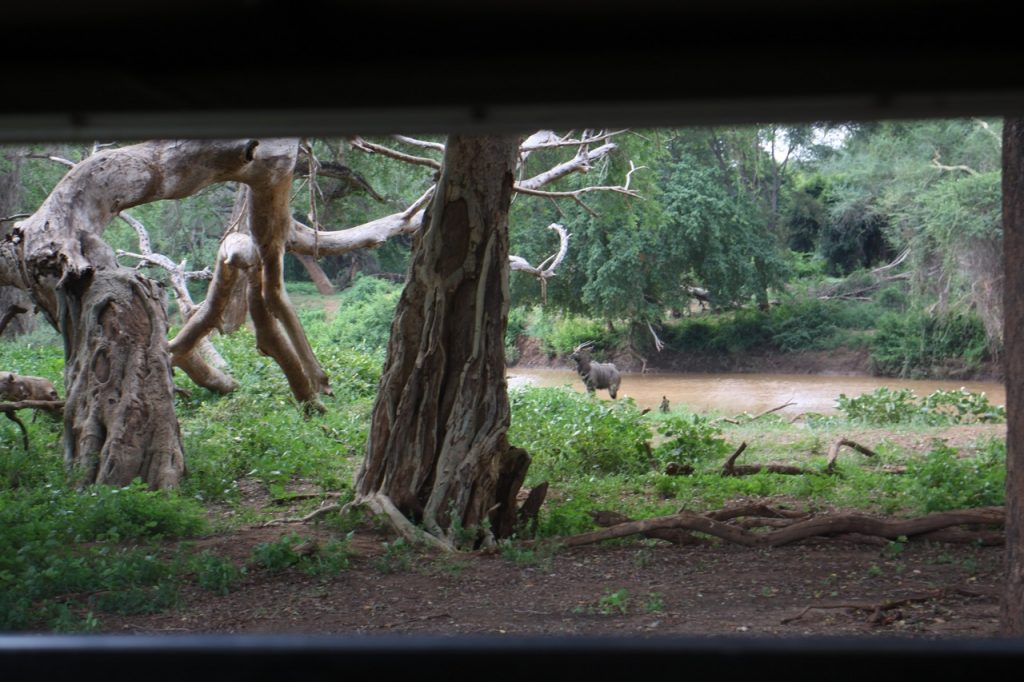
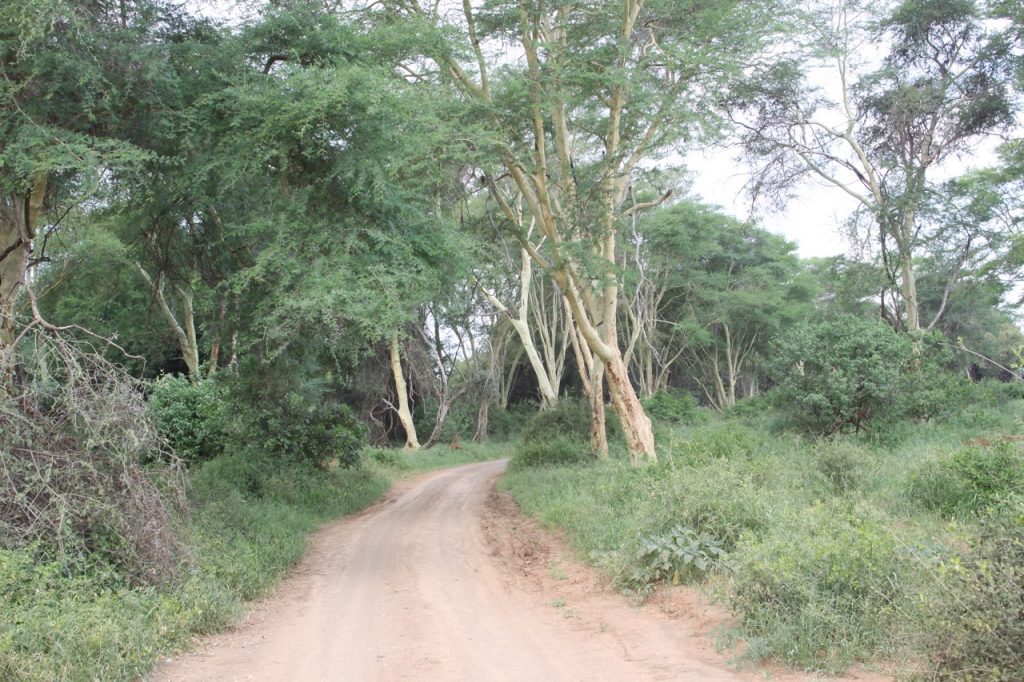
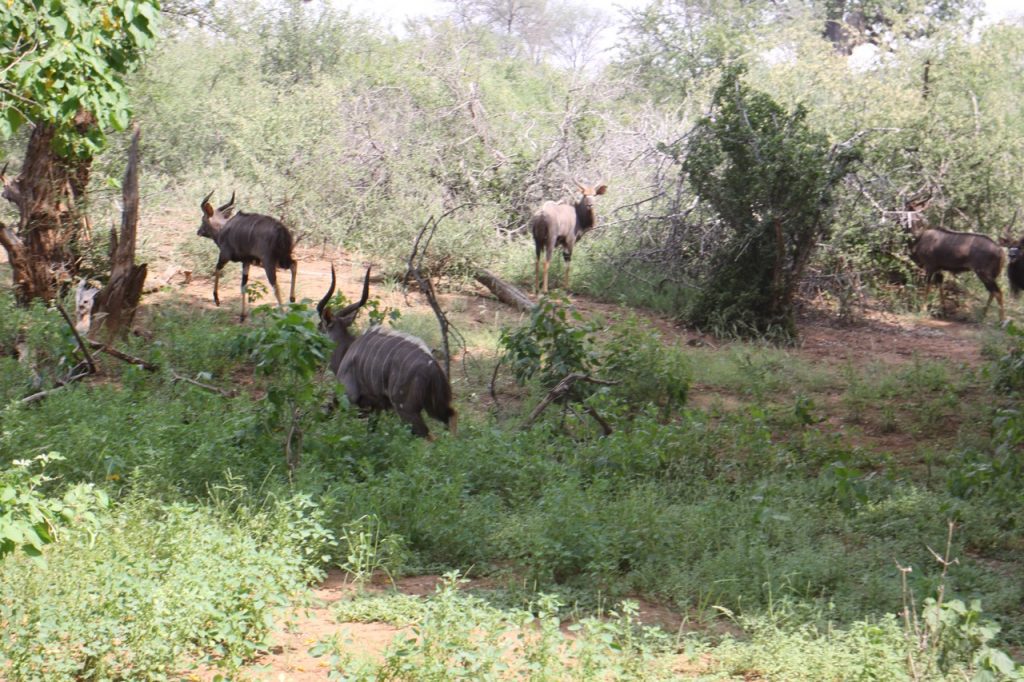
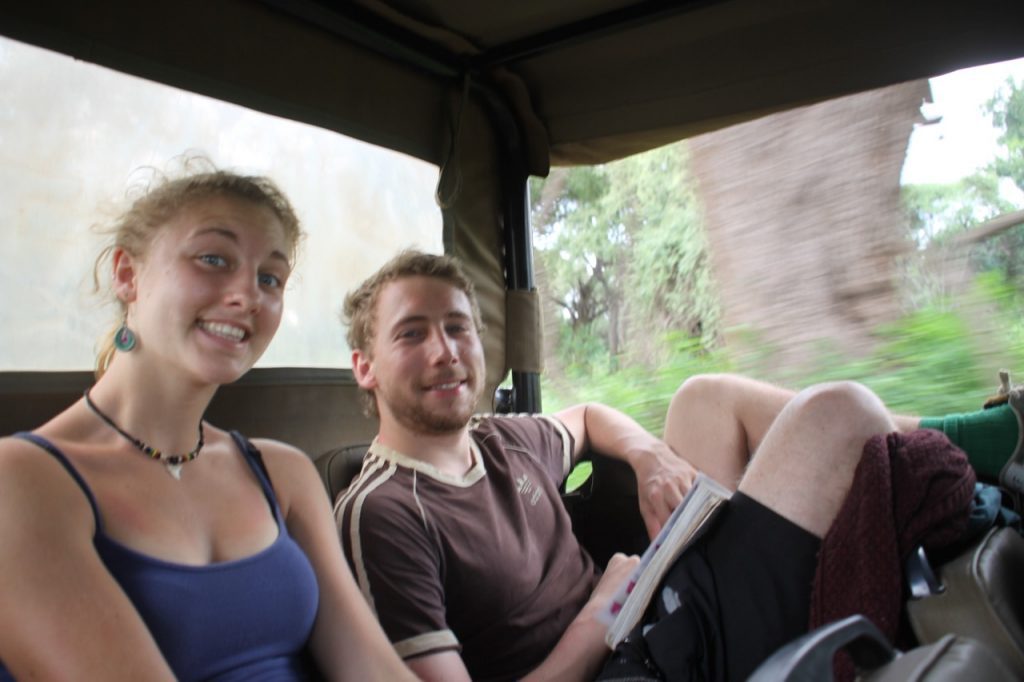
Crooks Corner is so named as it is an island that is a piece of no man’s land which was a natural refuge point for people who were avoiding the law and hence became a hangout for ivory poachers, gun runners etc. Interestingly enough, we came upon the only other car that we had seen the whole day here: two men who looked rather suspicious and nervous???!! Plus there was this whole bunch of crooks!
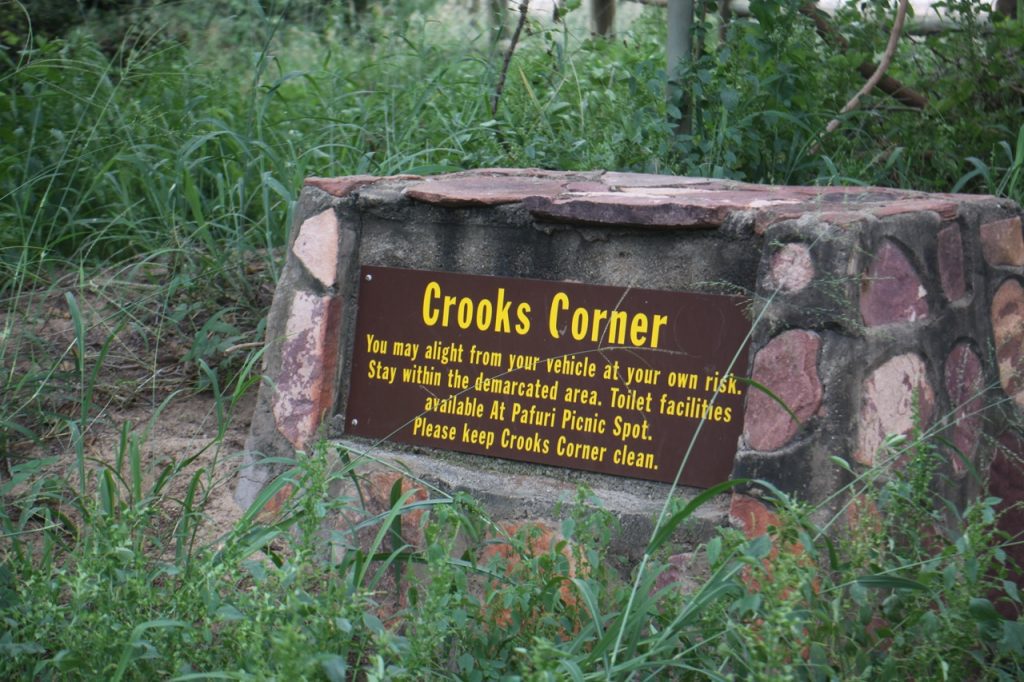
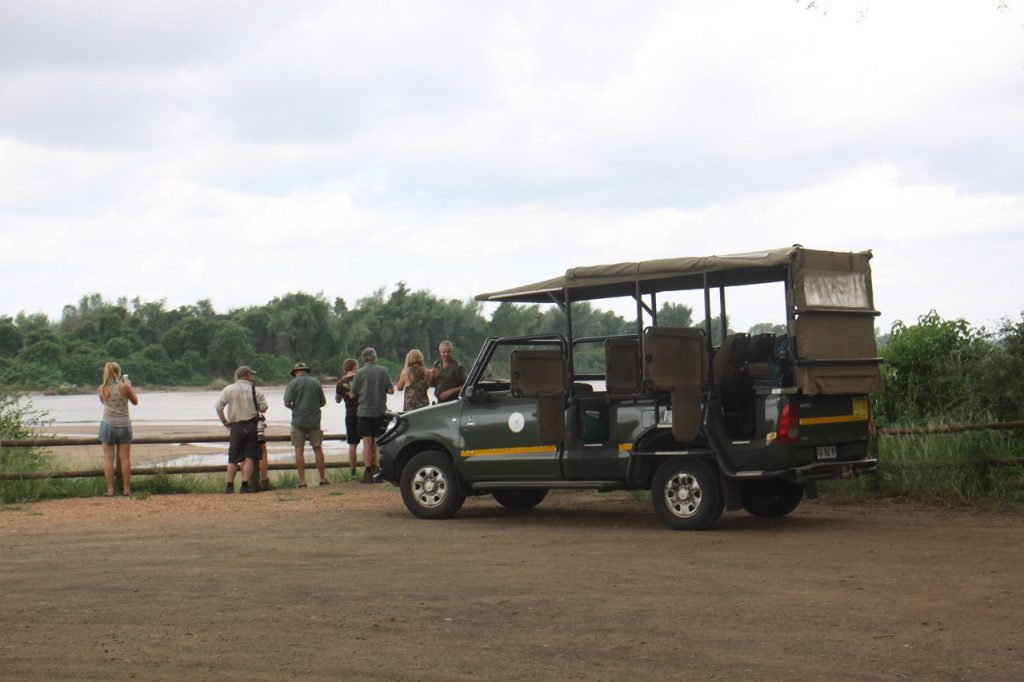
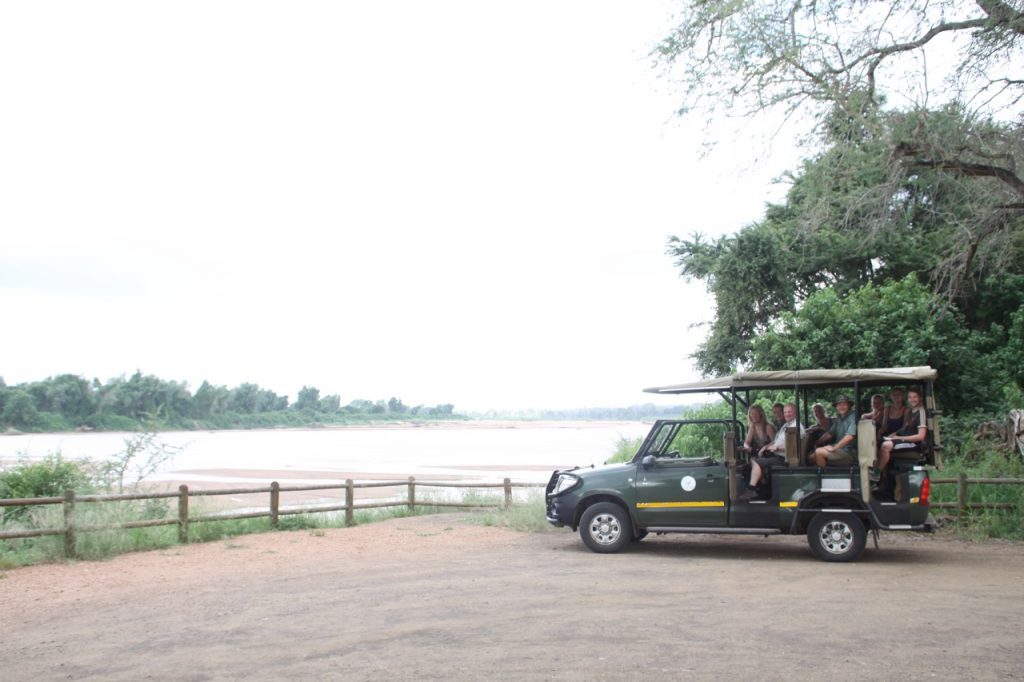
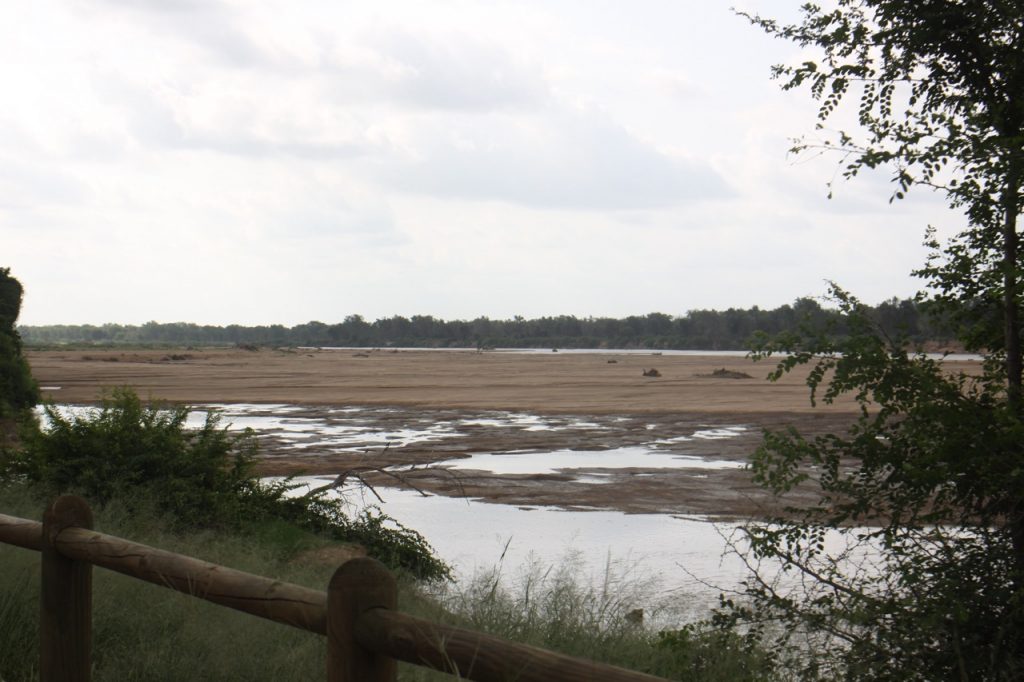
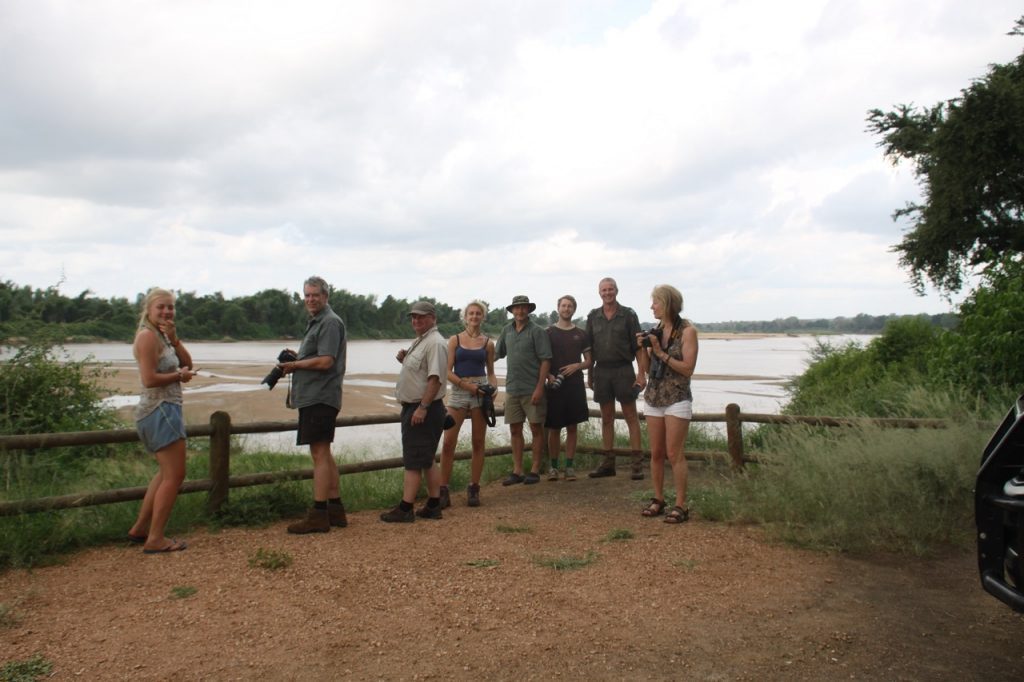
We headed back to Pafuri for a toliet stop and then back to camp We had a lovely dinner back at the restaurant for our final night at Punda Maria with Jaco back on fighting form and entertaining us all for hours with all sorts of hilarious Ranger Tales of guests in precarious situations, crazy wildlife encounters including that he and Vanessa felt that today’s (what seems a very long time ago) encounter with the dagga boy was a very close call and that they had not cocked their rifles on a walk in a very long while!! On that note and feeling relieved to be alive, full of food and fuzzy with wine we went to bed to enjoy a very good night’s sleep!
DAY 5 KNP: Monday 4 April 2016 Punda Maria to Olifants
A little lie in this morning – drowsily up at 5.30am, packed and on the move by 6.15am.
We knew today would be a long day of driving and we all voted to take the Mphongolo loop to Shingwedzi where we would stop for brunch. It was a chilly day and we had to wrap up warmly so that we did not freeze in the back of the safari vehicle! We couldn’t resist a quick pit stop at Babalala Picnic Spot with the HUGE sycamore tree dominating the sheltered area.
We bumped along peacefully almost dozing off in the welcome rays of the early morning sun – suddenly we were alerted to loud trumpeting and the next thing an agitated herd of elephants appeared. They appeared distressed and bunched up in a tight group and trotted past us making lots of noise. We could hear their rumbling – it was all quite disconcerting. Then a youngster came running up from the distance trying to join the herd but this elephant was not having it…we were so enraptured with watching the whole episode that we did not take any more photos or video it! Jaco’s thoughts were that the scenario unfolding before us was that of a matriarch expelling a young bull from the herd but he kept trying to rejoin and she kept pushing him away which was causing the distressed trumpeting and the milling and rumbling of the rest of the herd – it really was quite something to behold – I will never forget this experience – the herd’s distress was palpable.

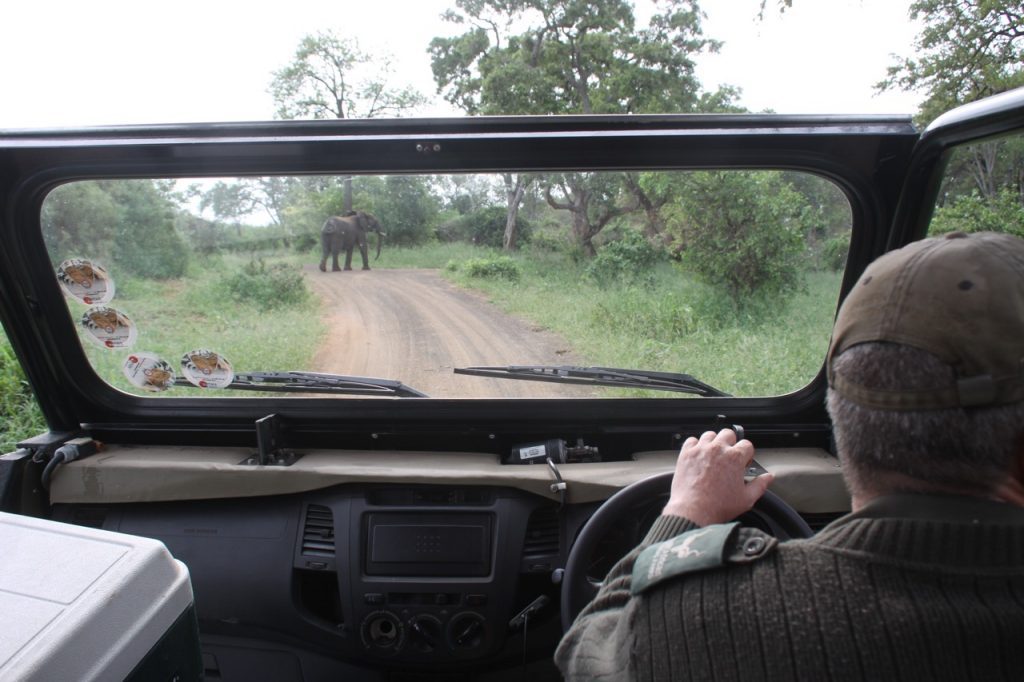
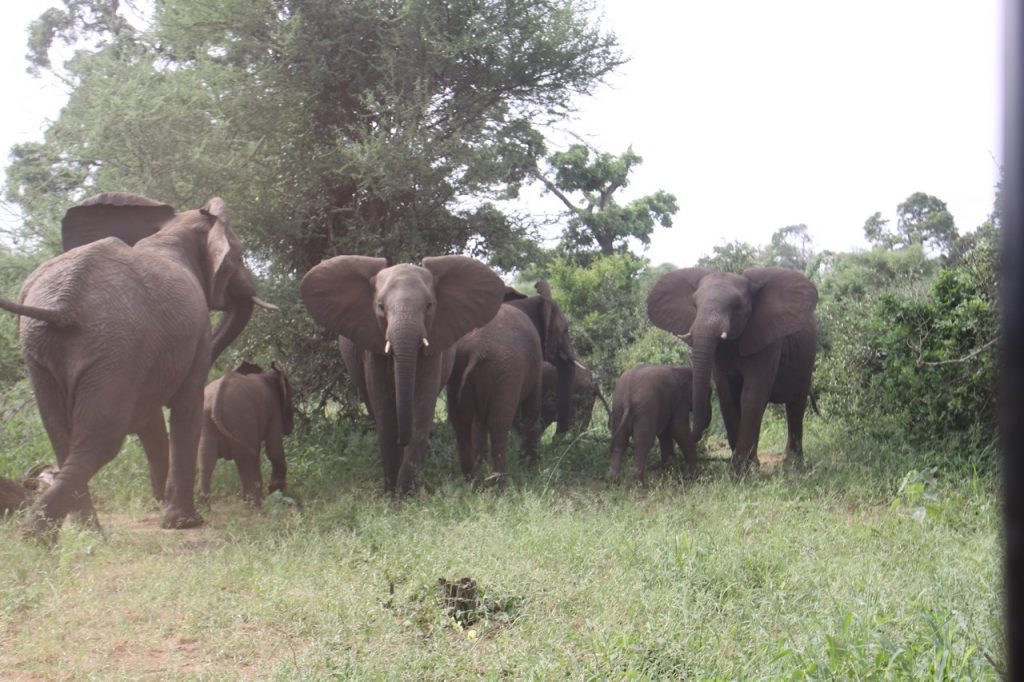
We had a delicious brunch at Shingwedzi accompanied by a lone hippo for company out on the river bed.
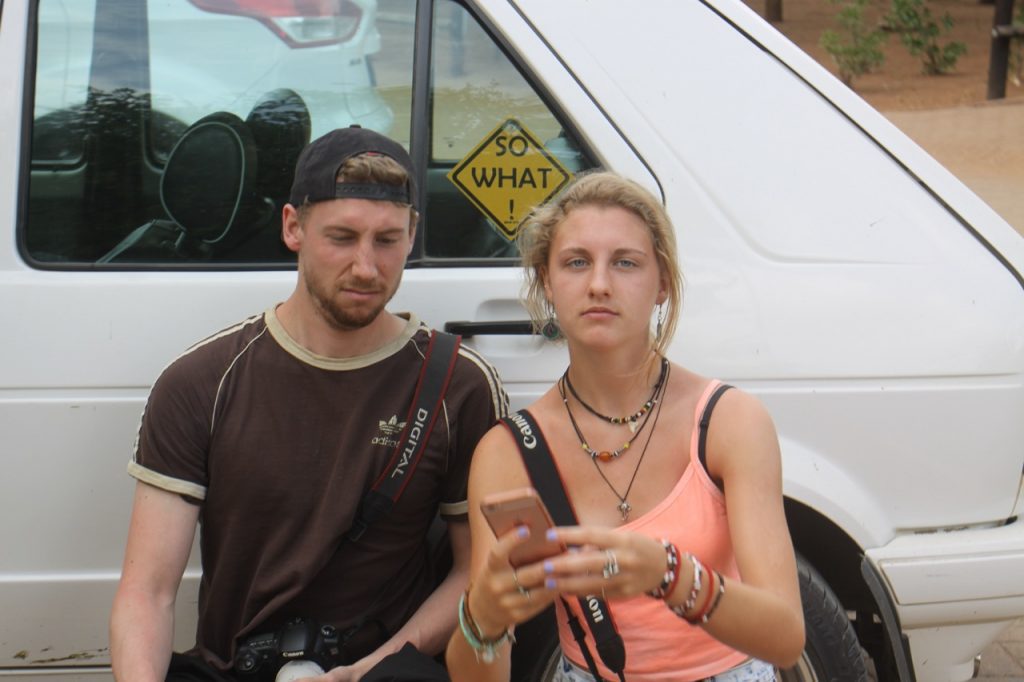
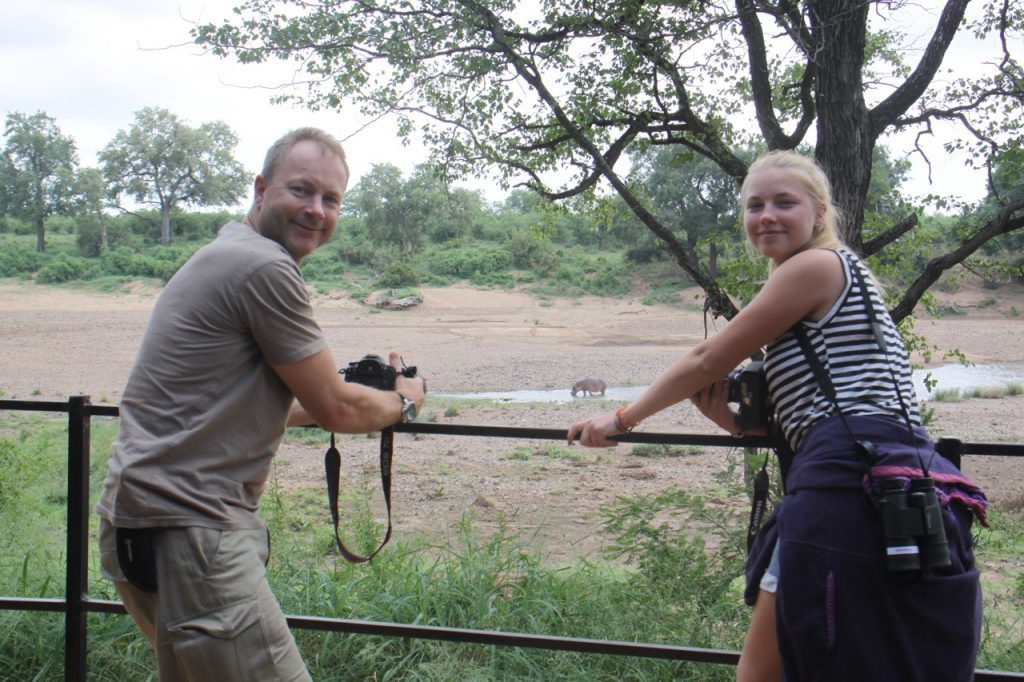
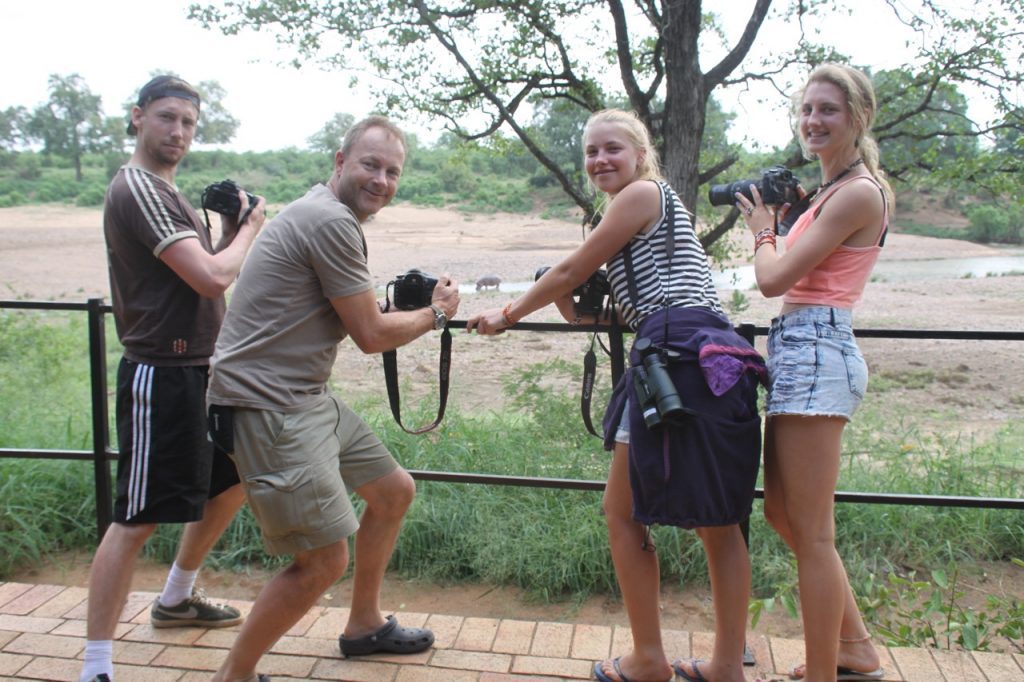
As we approached Olifants – Elephants certainly seemed to become the theme!
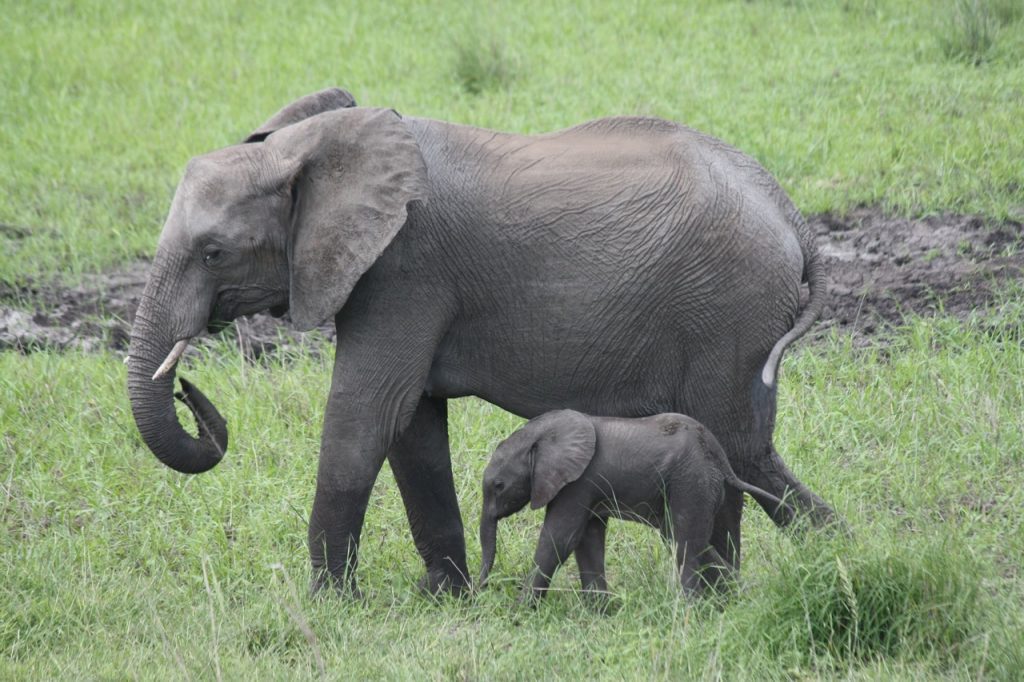
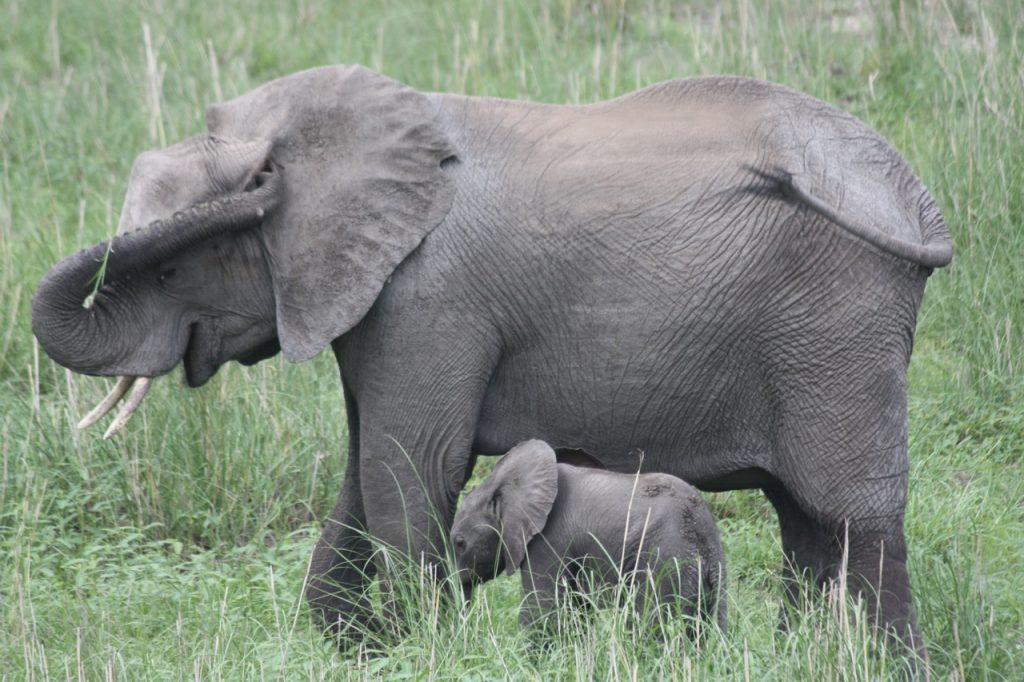
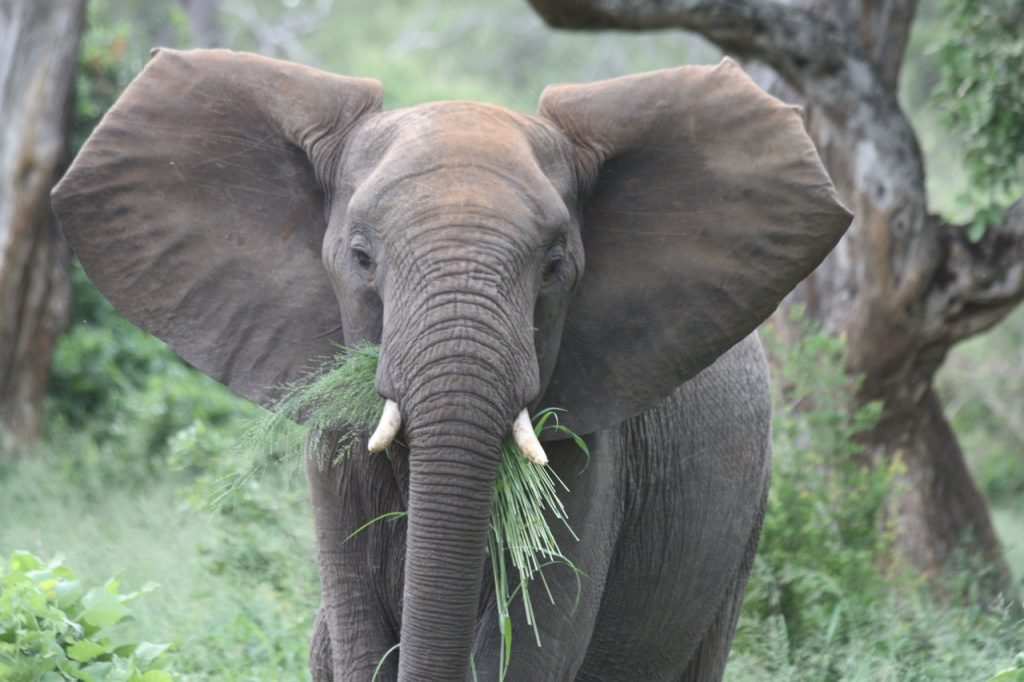
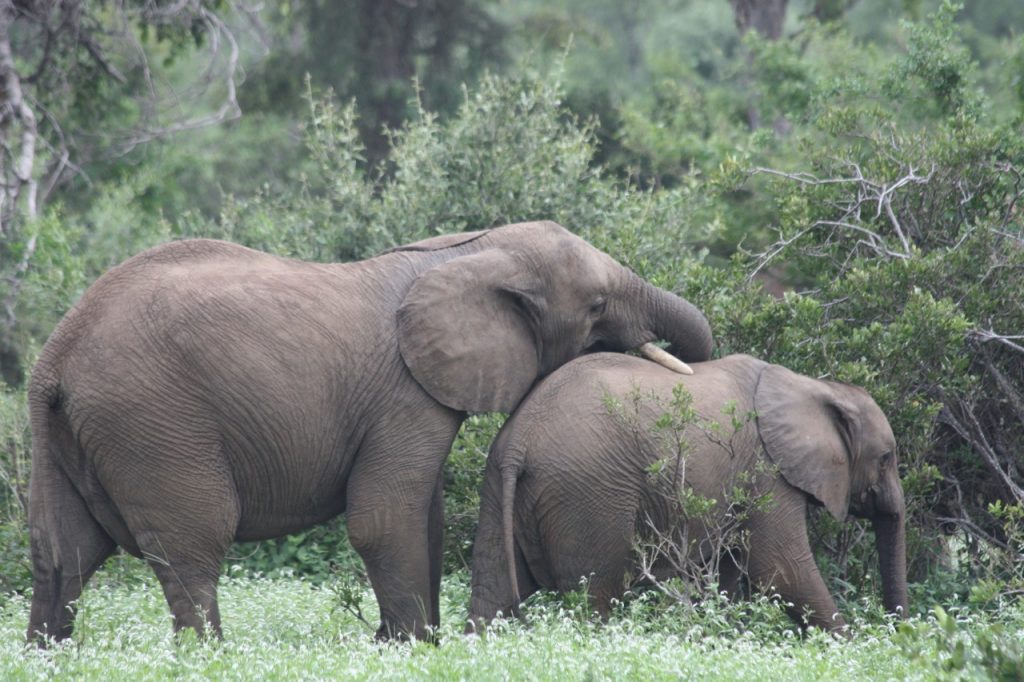
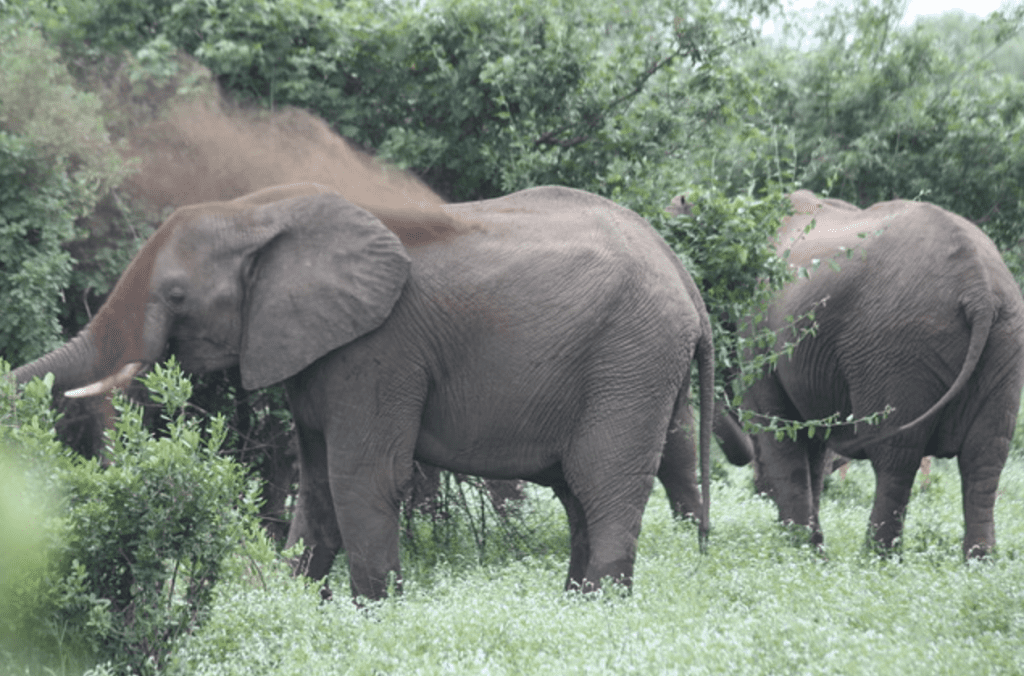
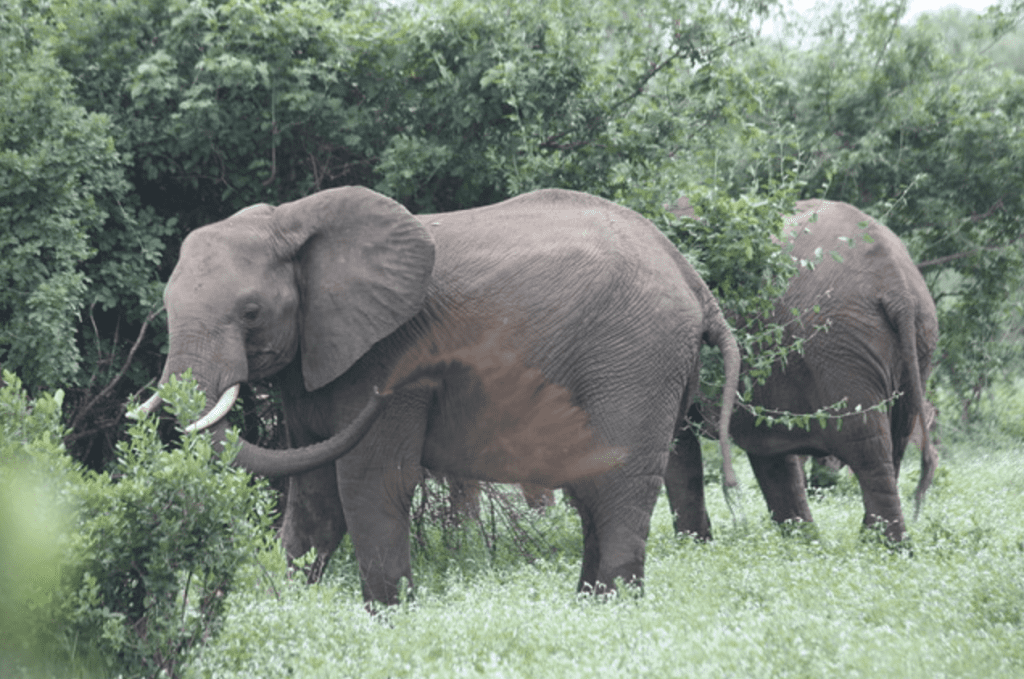
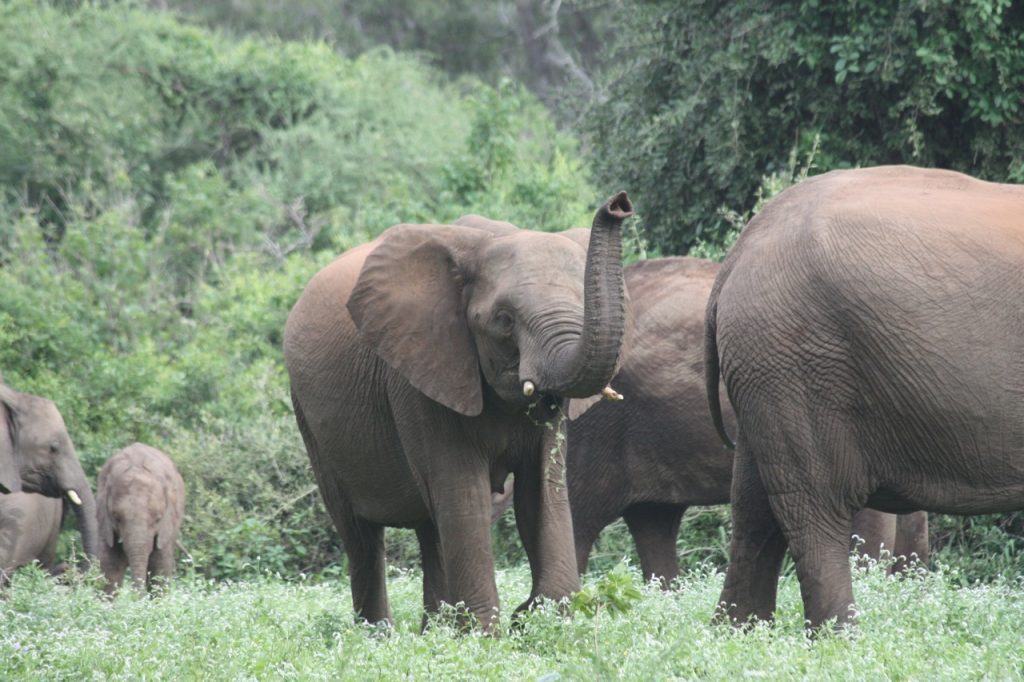
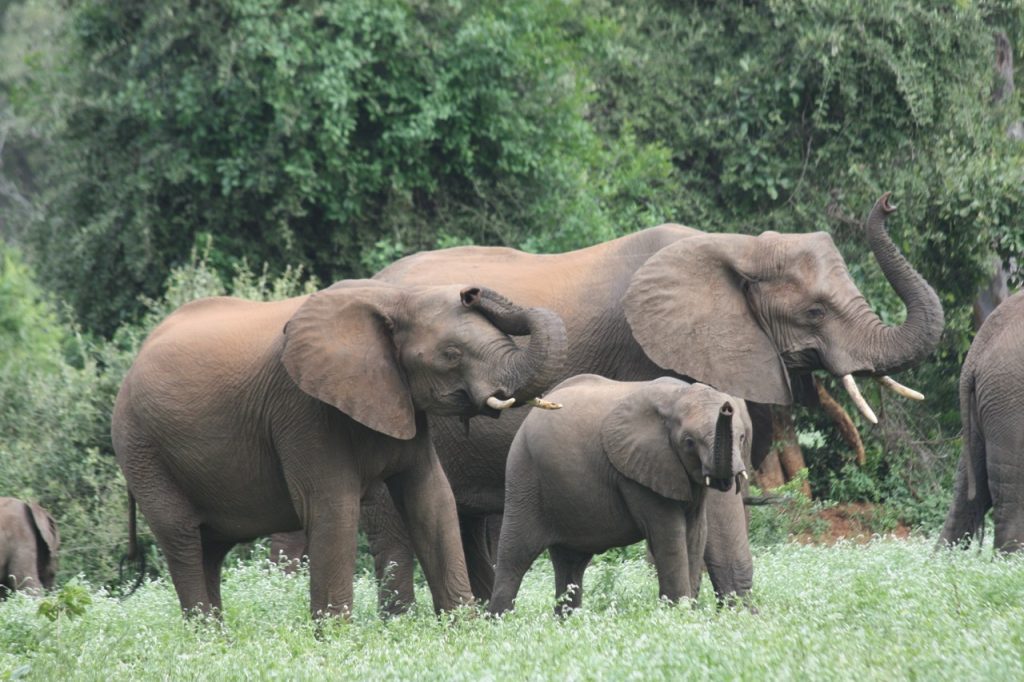
This line of ants crossed the entire road! Jaco told us that they are called Matabele ants (or African Driver ants) aptly named after the tribe which destroyed everything in their path as they swept through central and southern Africa. When their food supplies are depleted these ants go on the rampage marching until they find a termite mound that they can invade (they have a ferocious bite – 10 of which could paralyse a human arm!!). The soldier ants march on the edge of the line protecting the smaller worker ants in the middle. Once food has been located, a pheromone is released to attract the rest of the column which quickly overwhelms it. The ants create a rattling or hissing noise as they move, but will do this especially when threatened….Jaco stopped the vehicle and he tapped the ground next to them and we could hear this incredible rattling sound for ourselves! They attack the termite colony, neutralising the soldiers and then killing the workers. They steal the eggs and nymphs within the termite colony to take back to their colony as food.
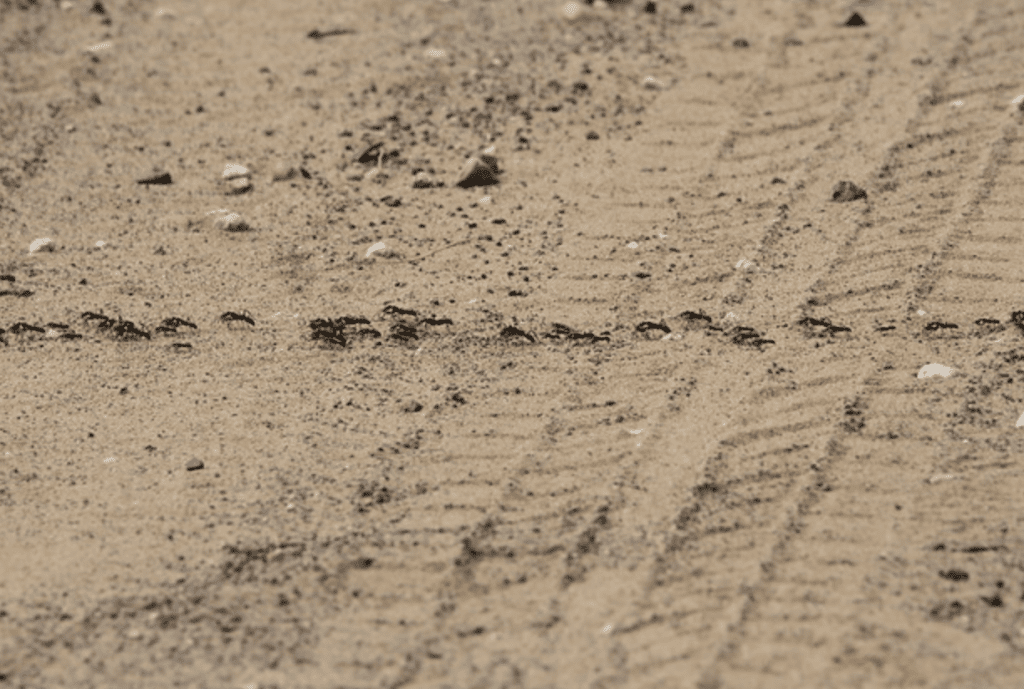
We drove slowly along the river banks trying to spot a leopard – but today’s theme was elephants and not leopards!
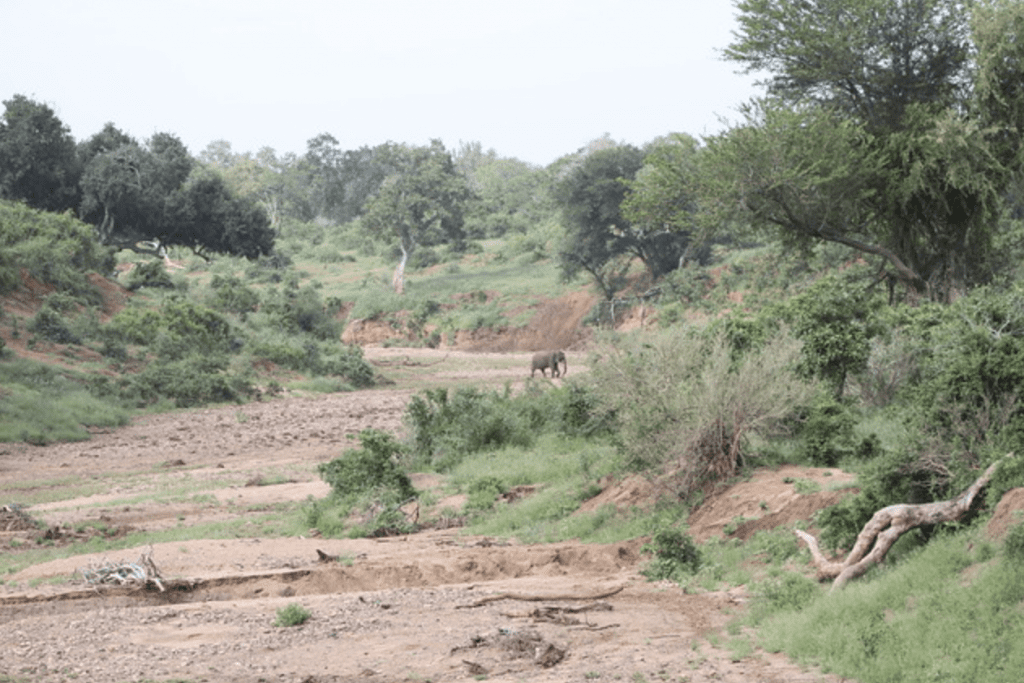
A beautiful fish eagle posed nicely for us before flying off making his iconic call – my favourite sound in the bush!
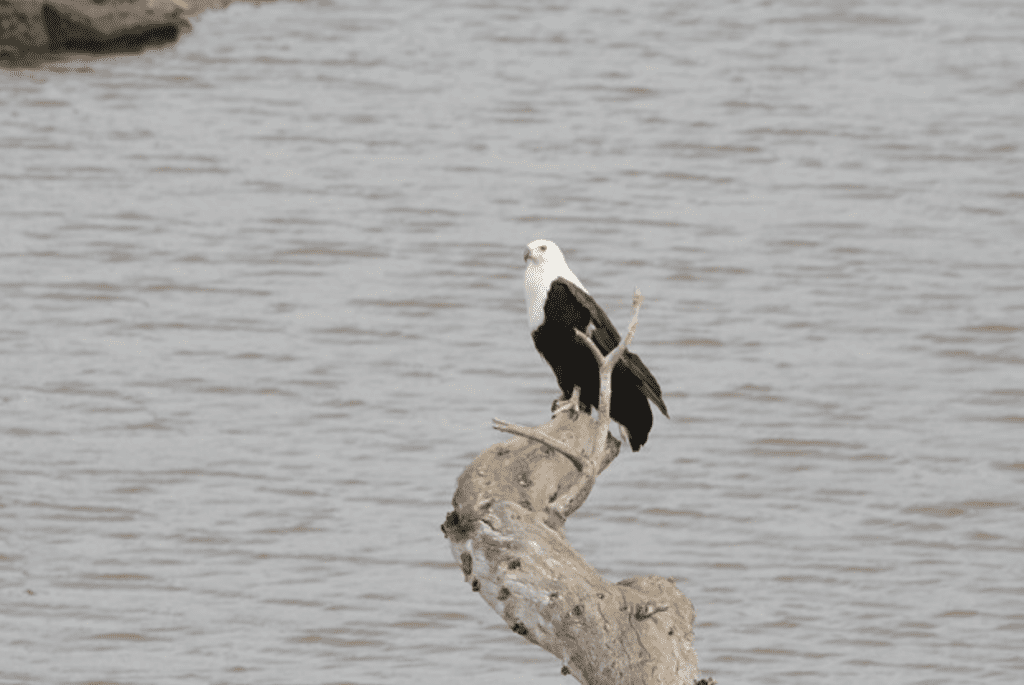
Jaco had told us to keep our eyes peeled for the big tuskers in this region and we were not disappointed! We tried to identify this chap at the museum but couldn’t make a positive ID – perhaps he is one of the emerging tuskers? Does anybody recognise him – would be great to know who he is? He has a distinctive hole in his right ear. He had 3 askaris accompanying him. He would not oblige for a full frontal photograph but we have both left and right side profiles!
**UPDATE
Great news on the Tusker front…Rosemary put me in touch with Kirsty and I forwarded every photo that we took of the tusker. Kristy then liaised with Michelle from Save the Elephants who has all the bulls’ ears in their research programmes properly mapped, and all agreed that this is Nkombo, an elephant who was previously collared but who lost this in 2014. The tusk shape and the left ear markings are clear indicators.The right ear, which was the question mark in a positive ID, is one of 2 possible scenarios: In all their footage of this bull they do not have a single image from this angle of his right side, and even in some of the images that I sent through, the right ear looks clean with the hole not being visible. So, either the hole has been there all along and no one knew of it (this is not uncommon and why they appreciate as many images as possible for the tuskers) but it is now known that he does have this hole on the right ear due to the unique angle of the images that we sent OR, the other scenario is that he has in this dry period picked up a brand new hole not previously photographed, which is also not unusual. It is difficult to tell his age without seeing the teeth, especially now as condition of the elephants with the drought can mislead age estimates. But based on how long he has been around and when his tusks hit a growth spurt they would say he is between 46 – 48, so hopefully we have a few good years of him being around. They are also pleased that he is maintaining a wide range. Here are some photos of his right ear and you can see how from certain angles you cannot even see the hole (just in case you are wondering, he has a mopani leaf and mud on his face)
** UPDATE
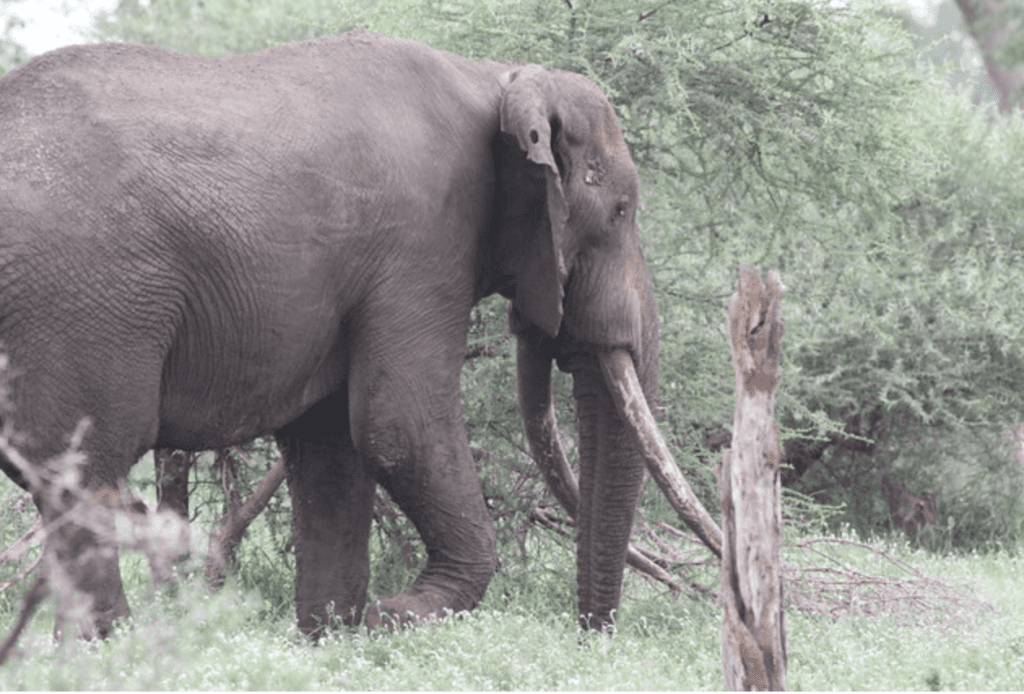
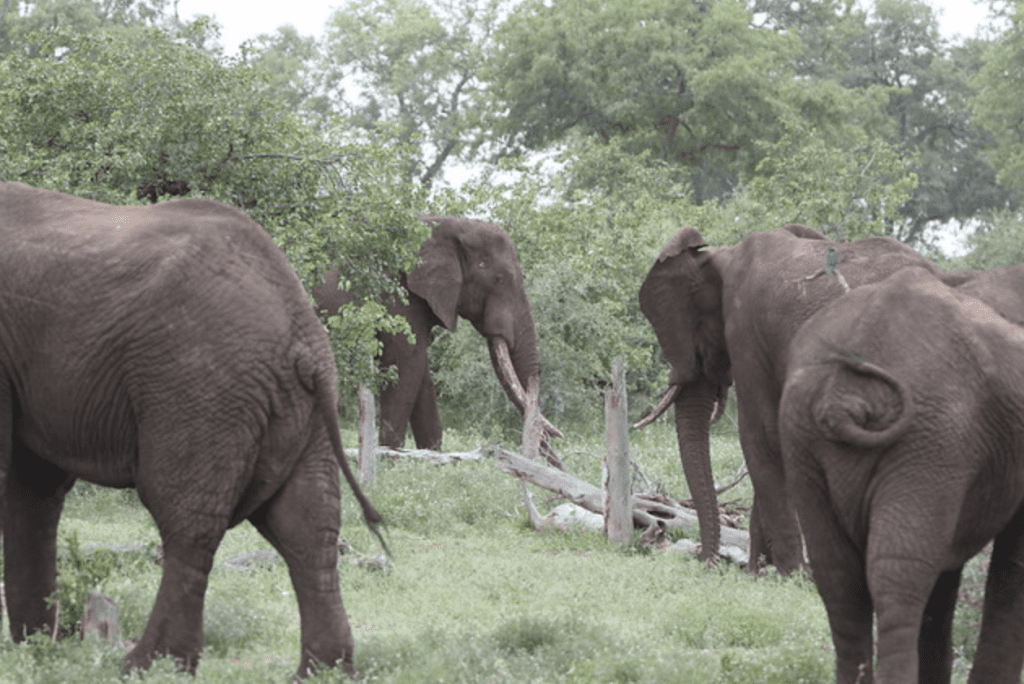
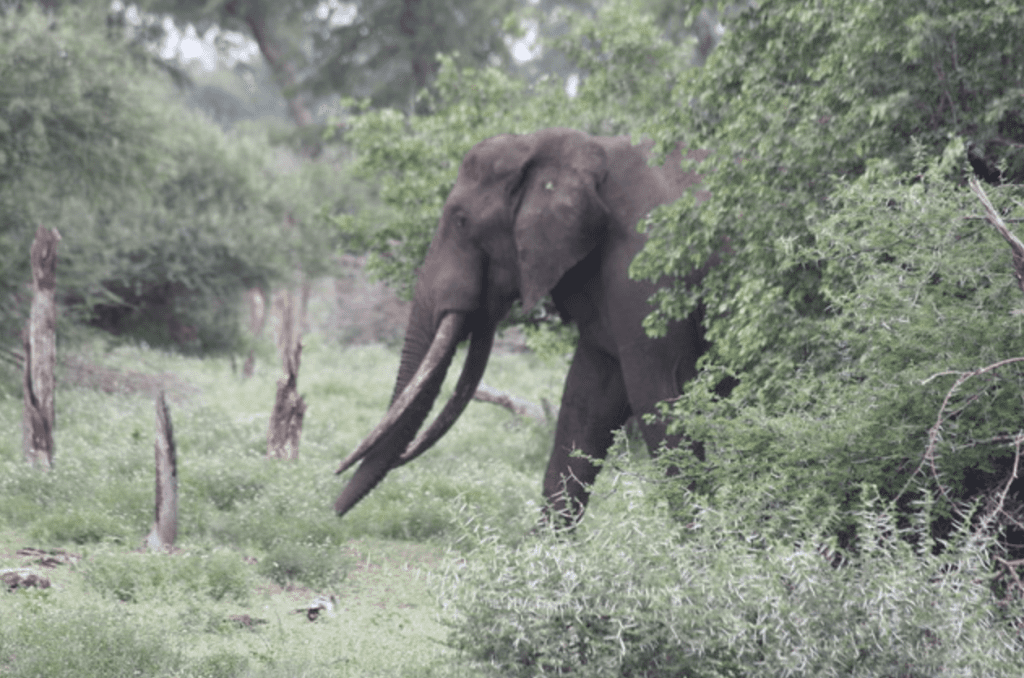
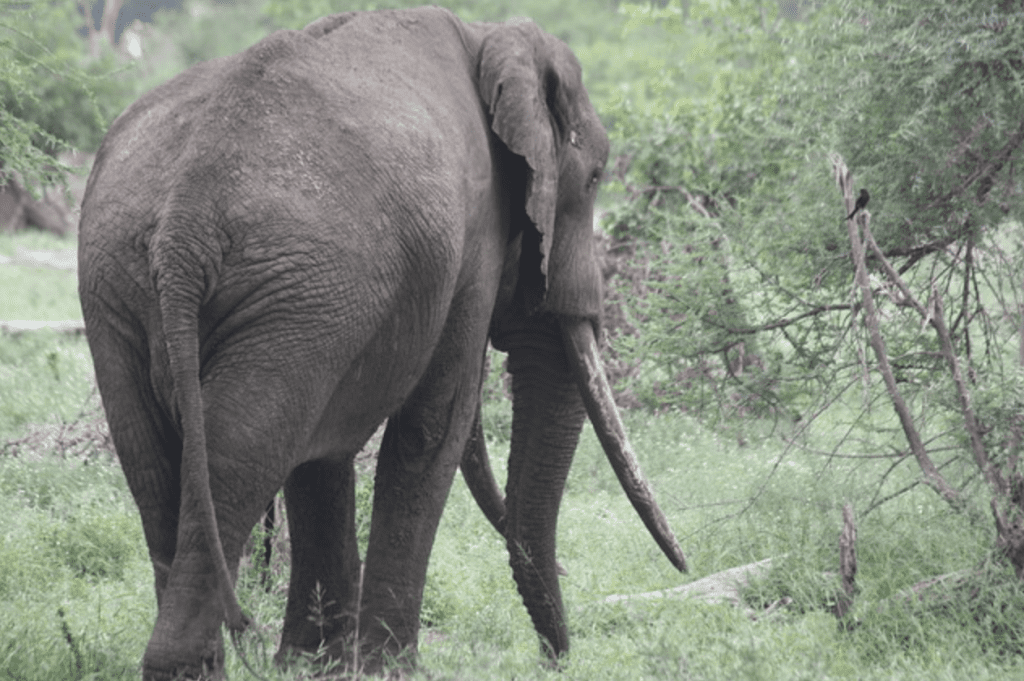
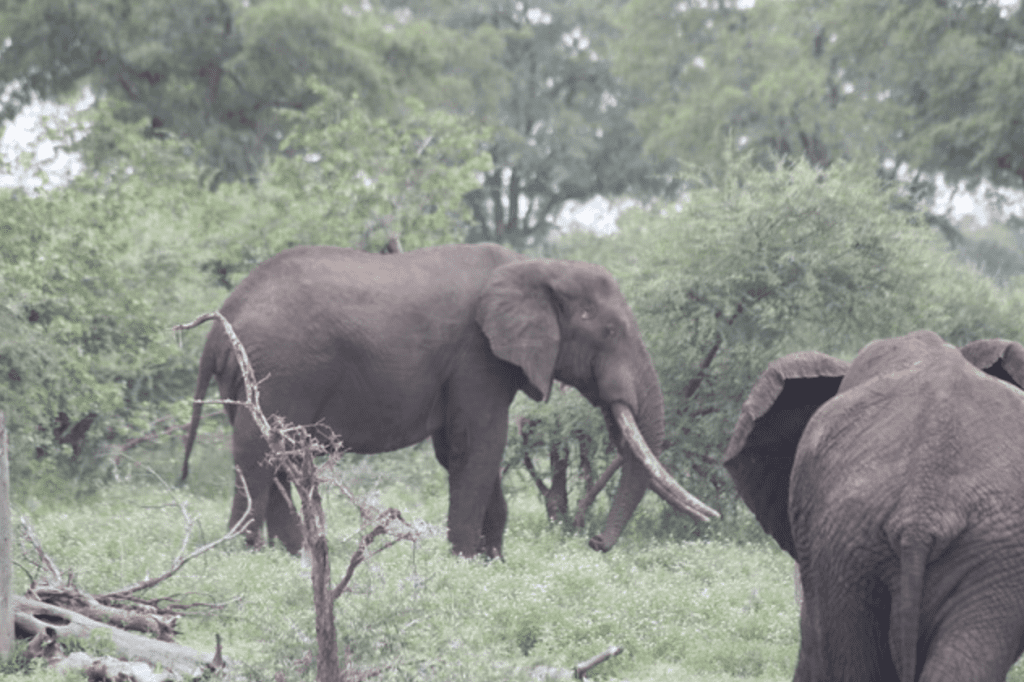
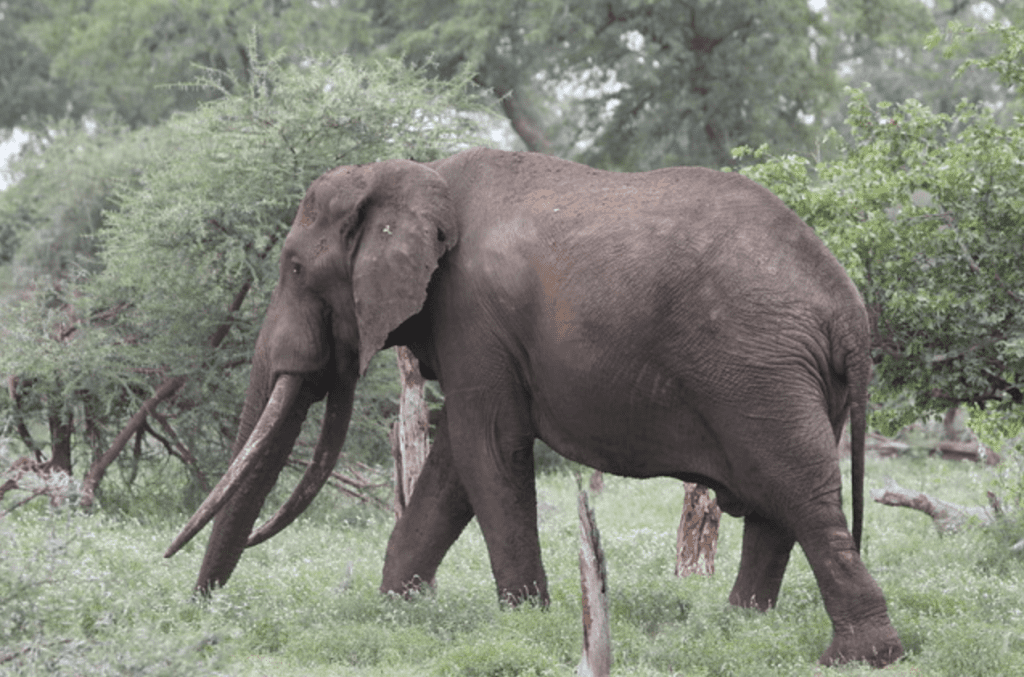
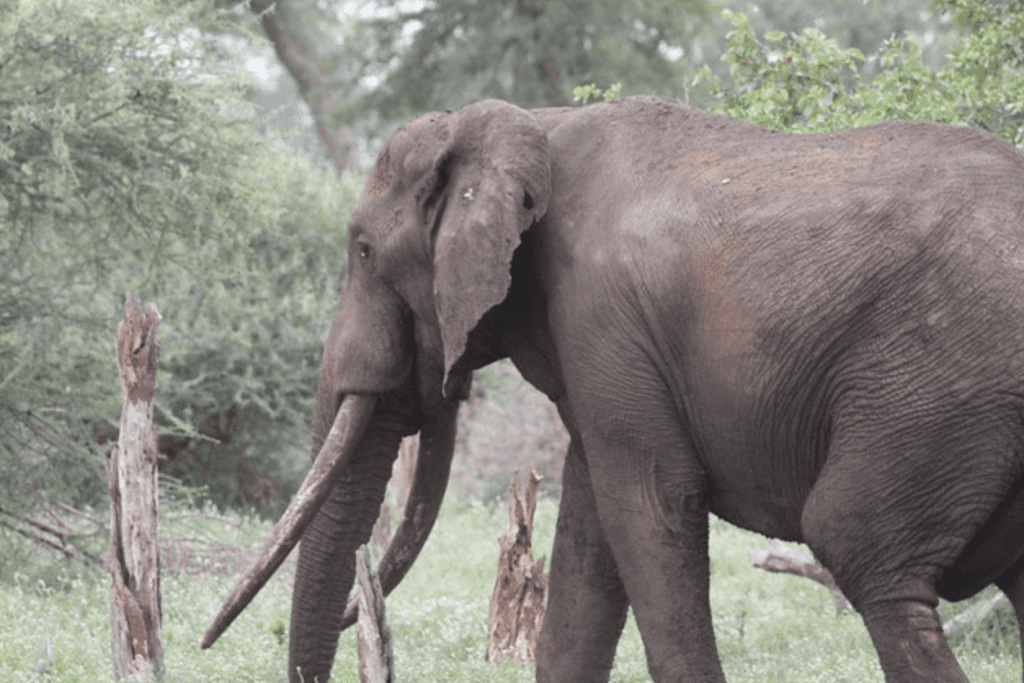
We stopped off at the bridge where we we are allowed to get out and take some photographs.
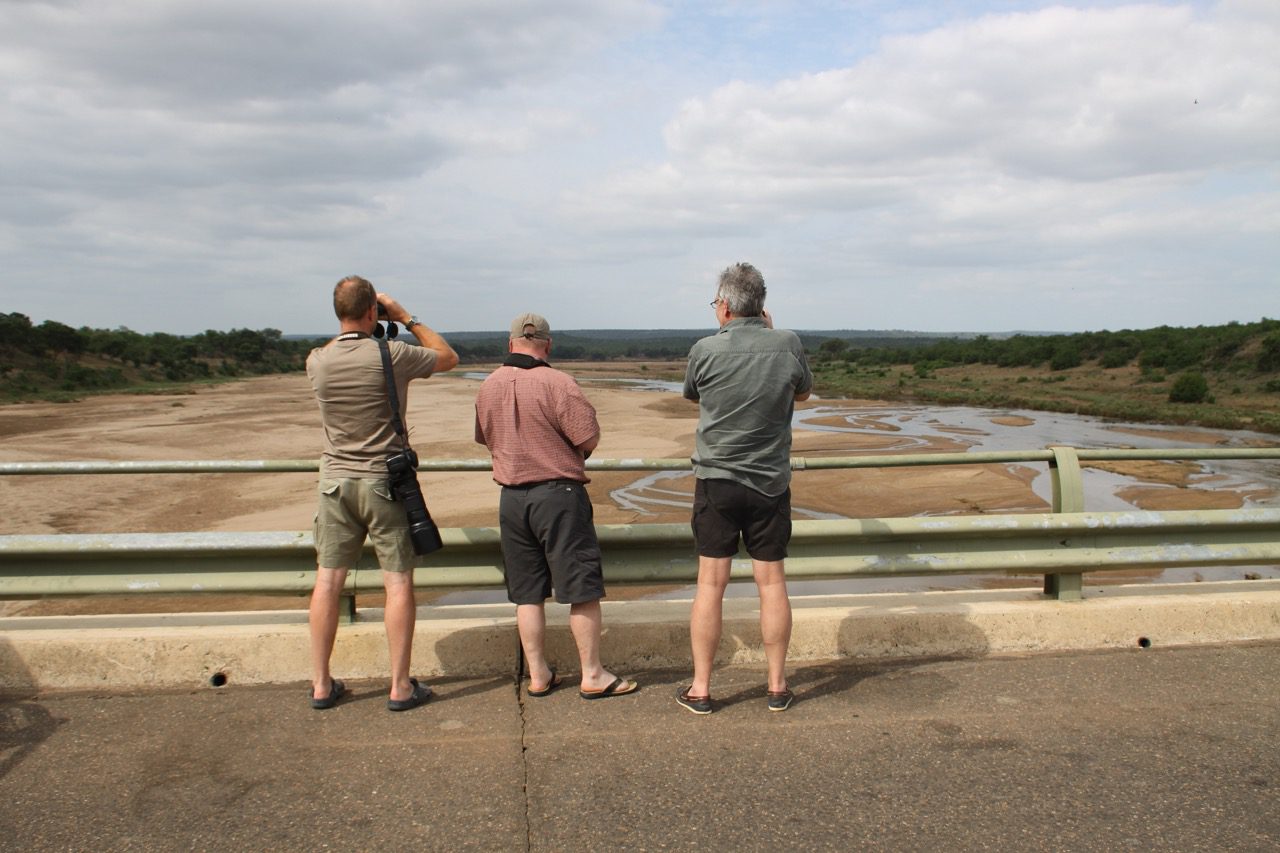
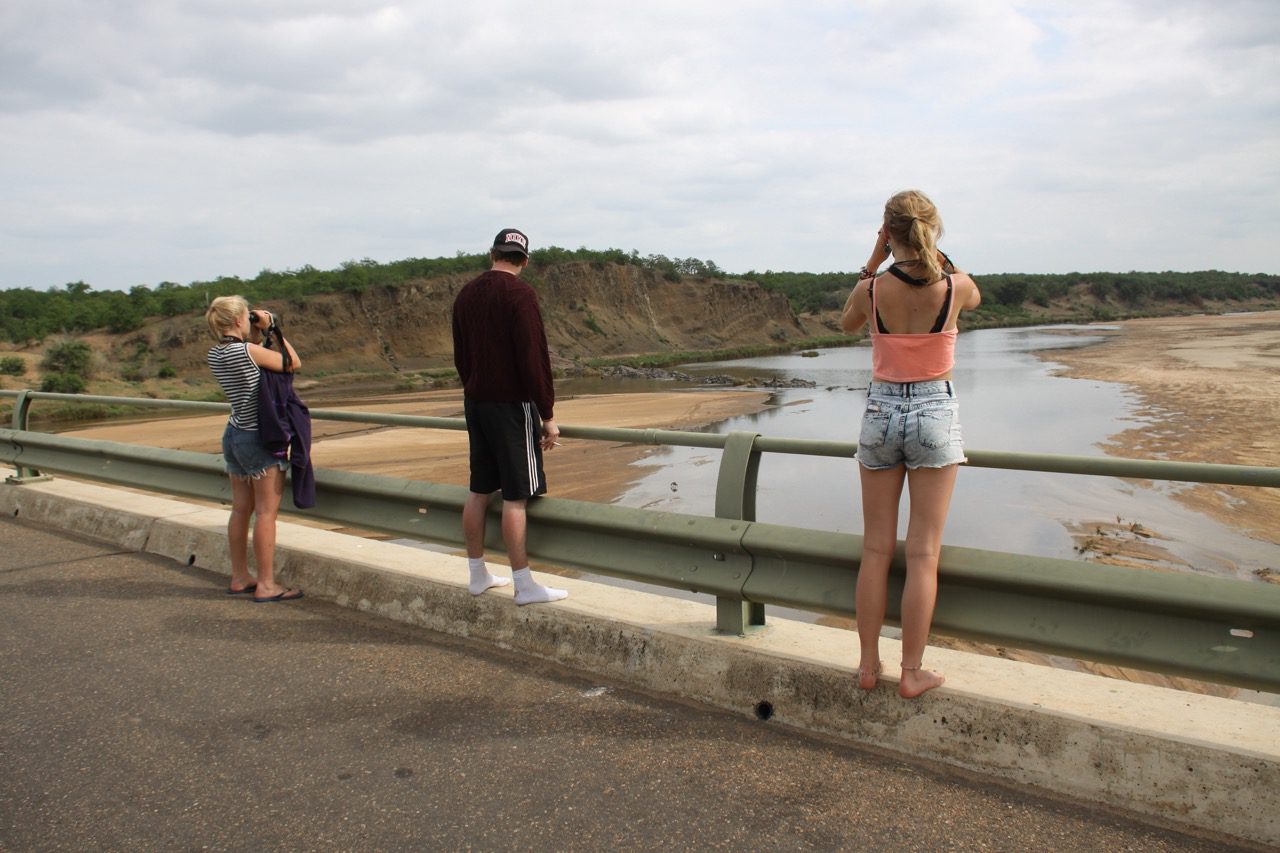
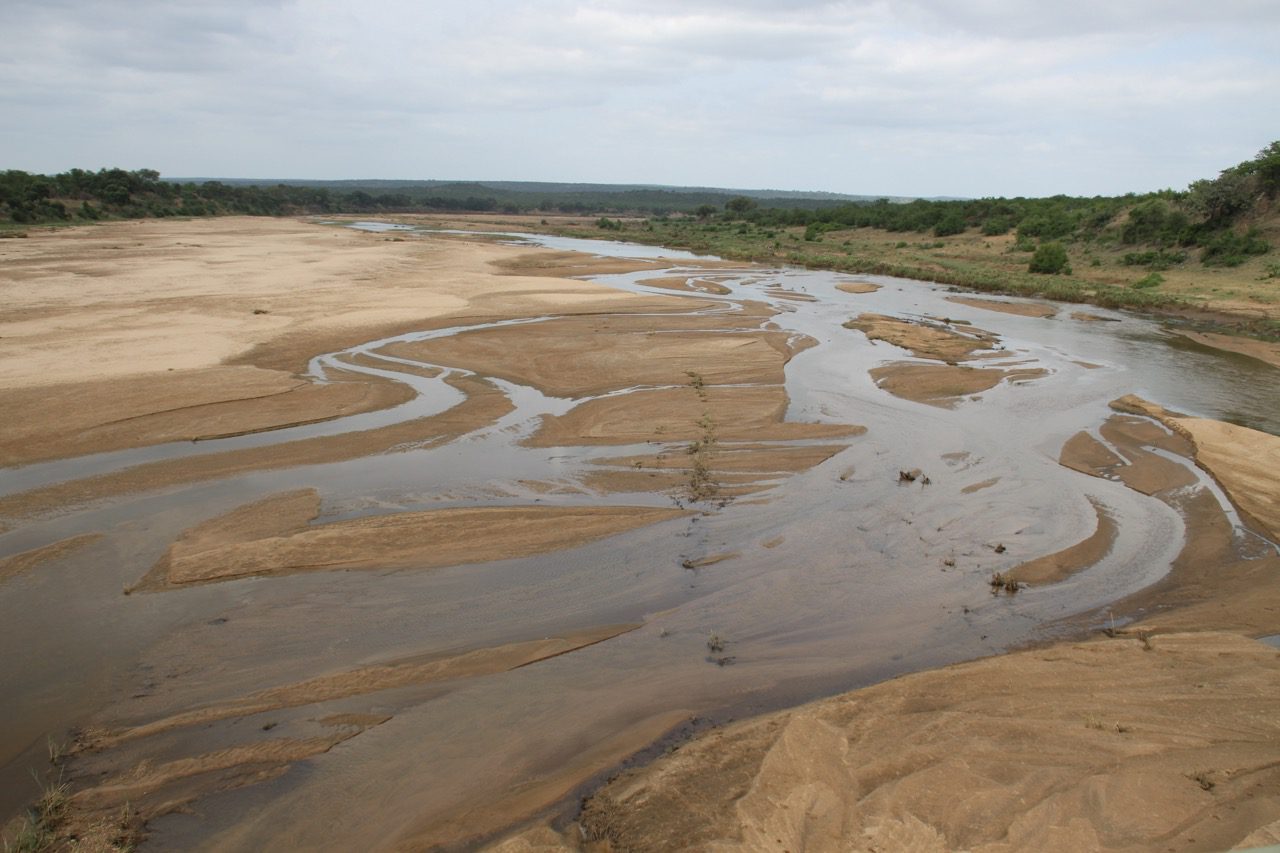
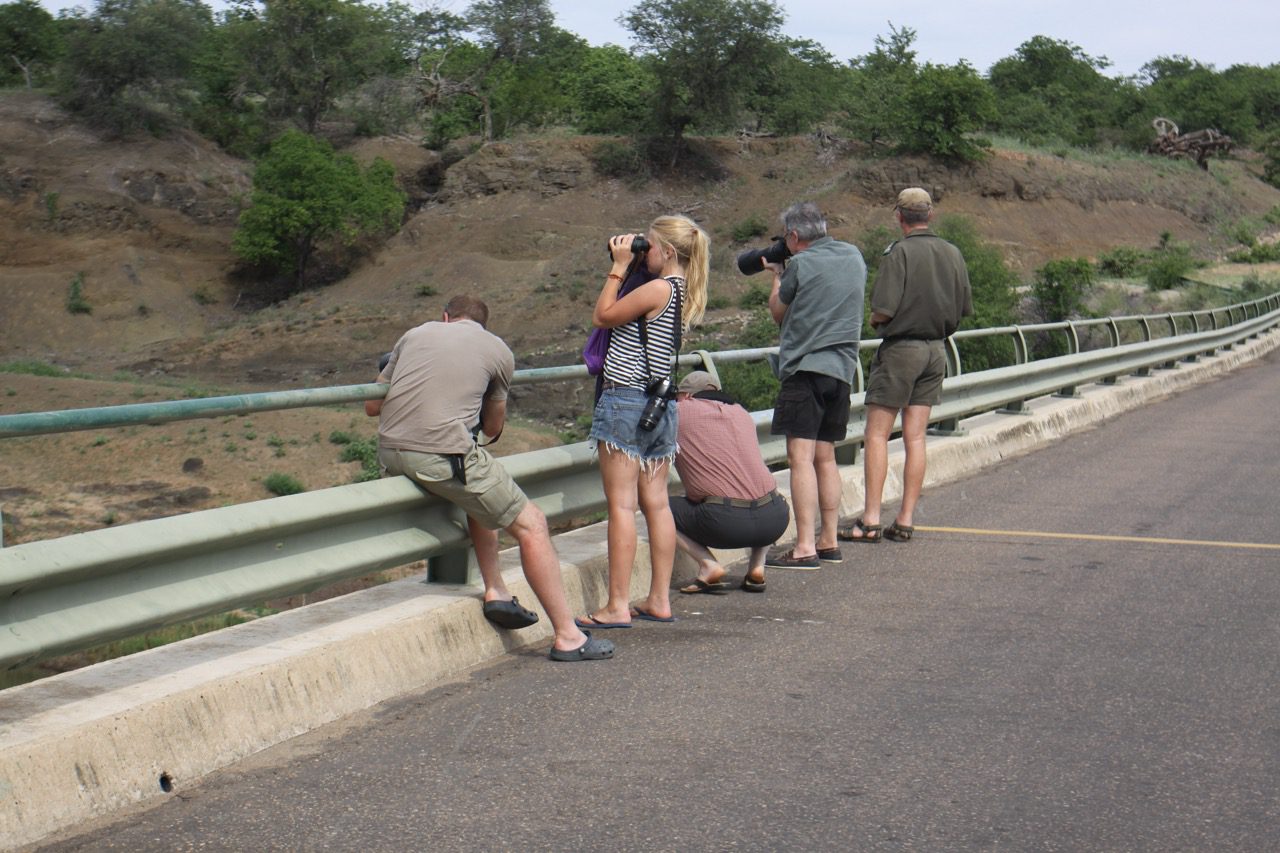
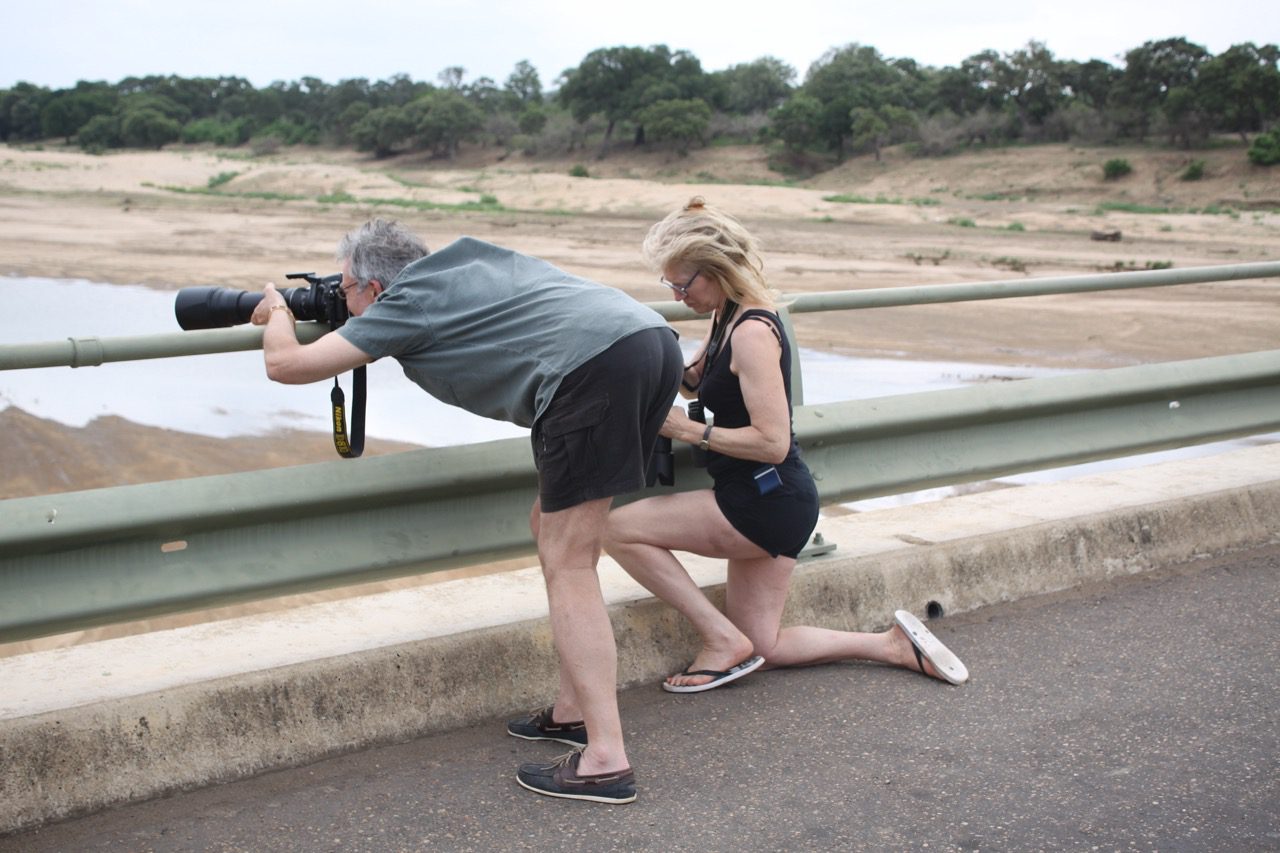
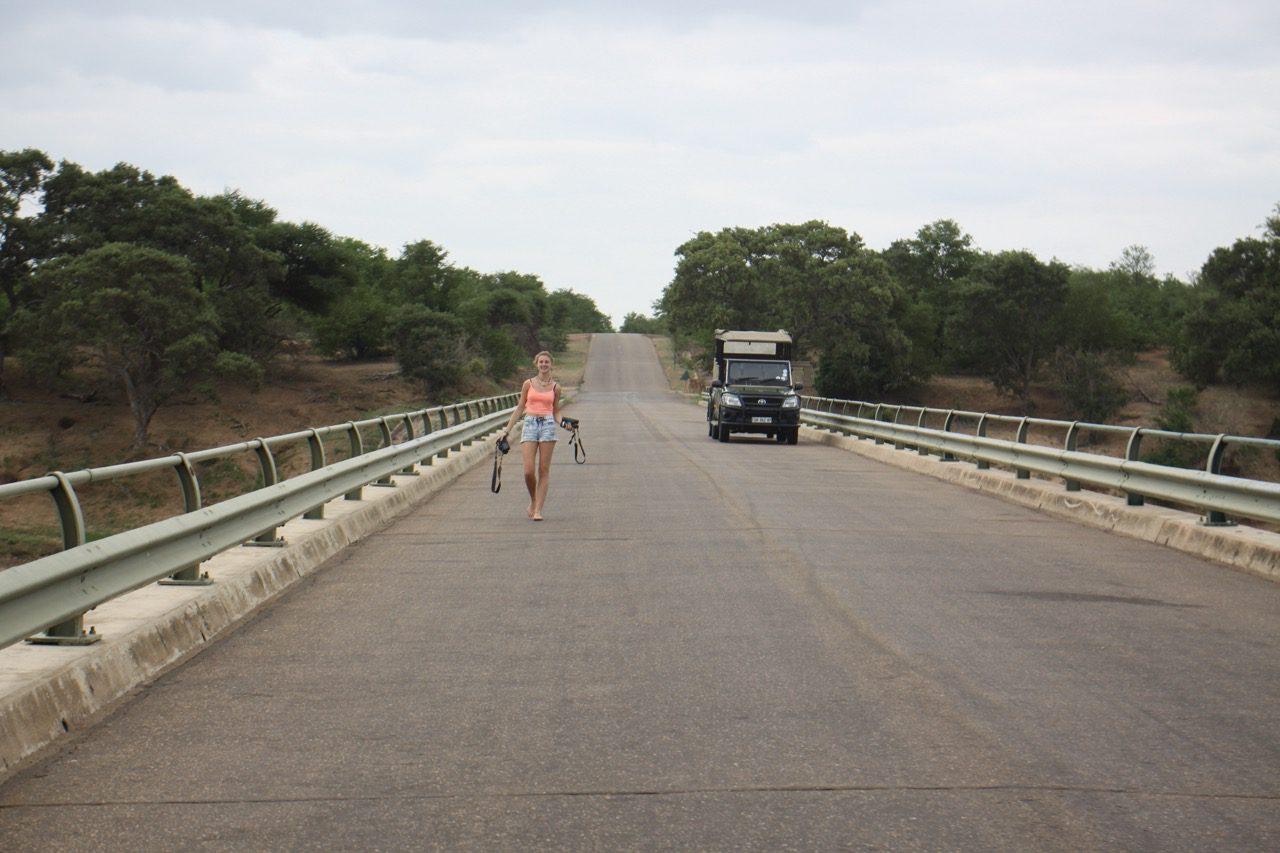
We spotted a hippo wading through the water and amaribu stork in the mud. Th egiraffe were just observing and blowing bubbles.
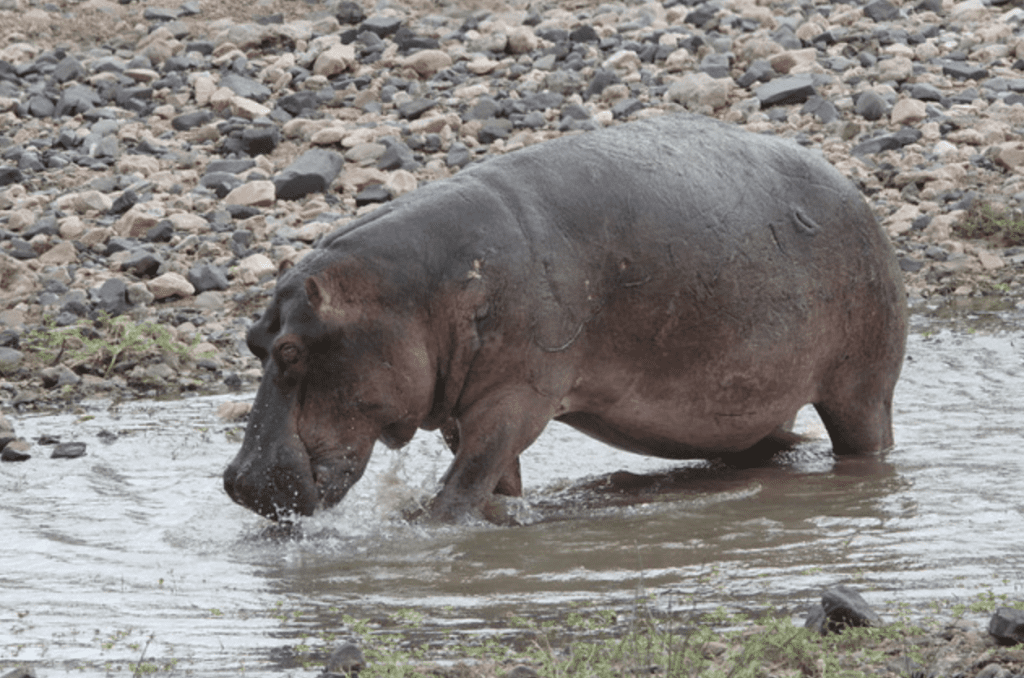
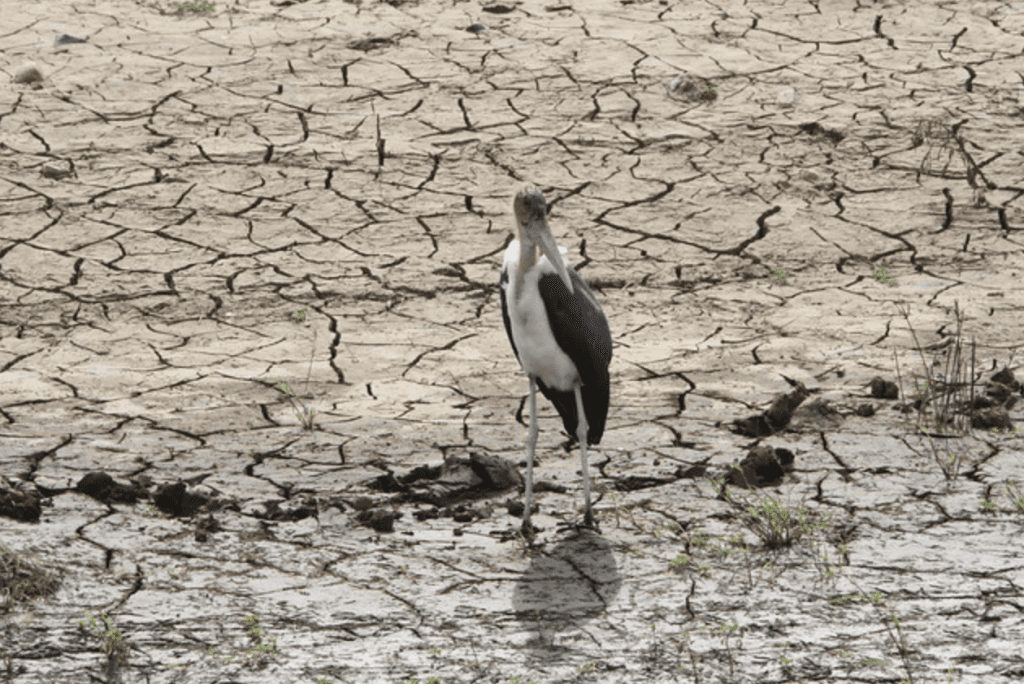
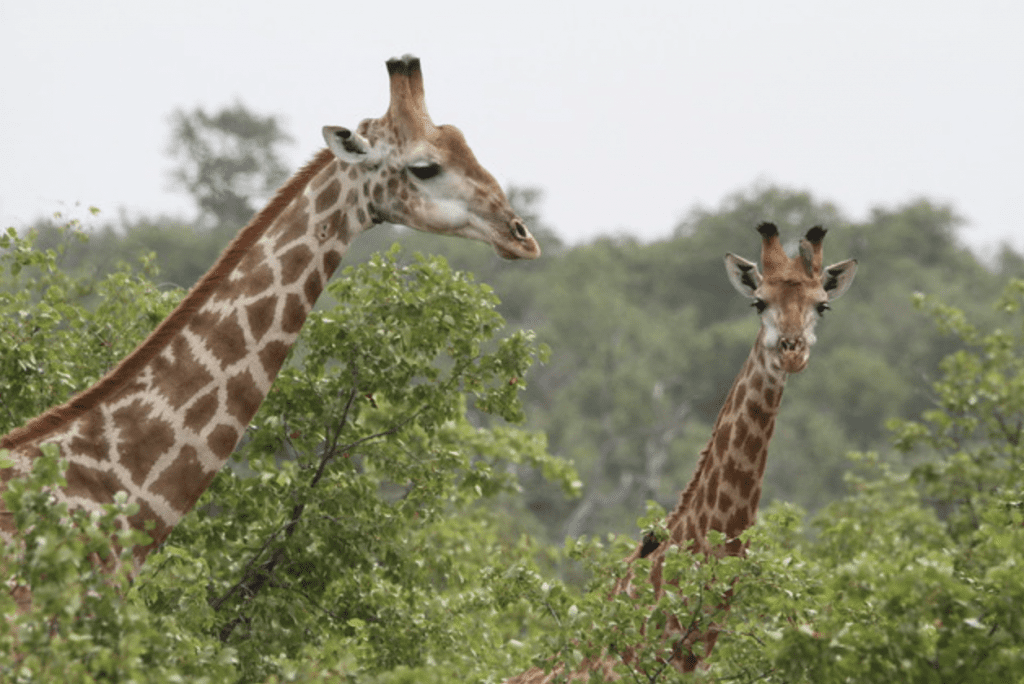
We stopped off at Letaba to visit the Museum there – we were blown away by the size of the Magnificent Seven’s tusks…simply awe inspiring!
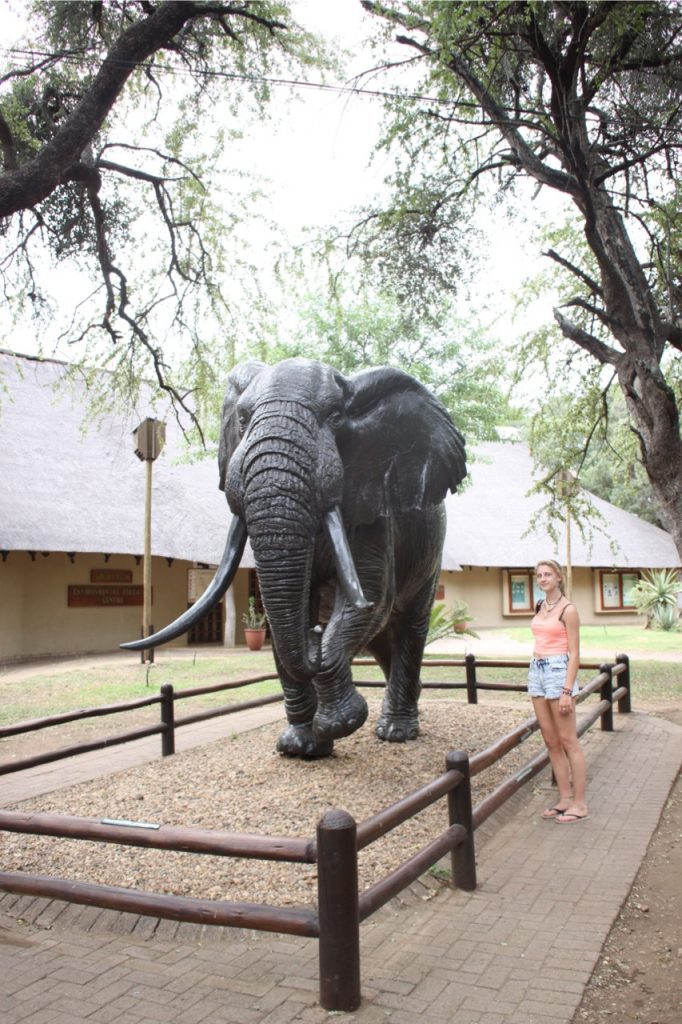
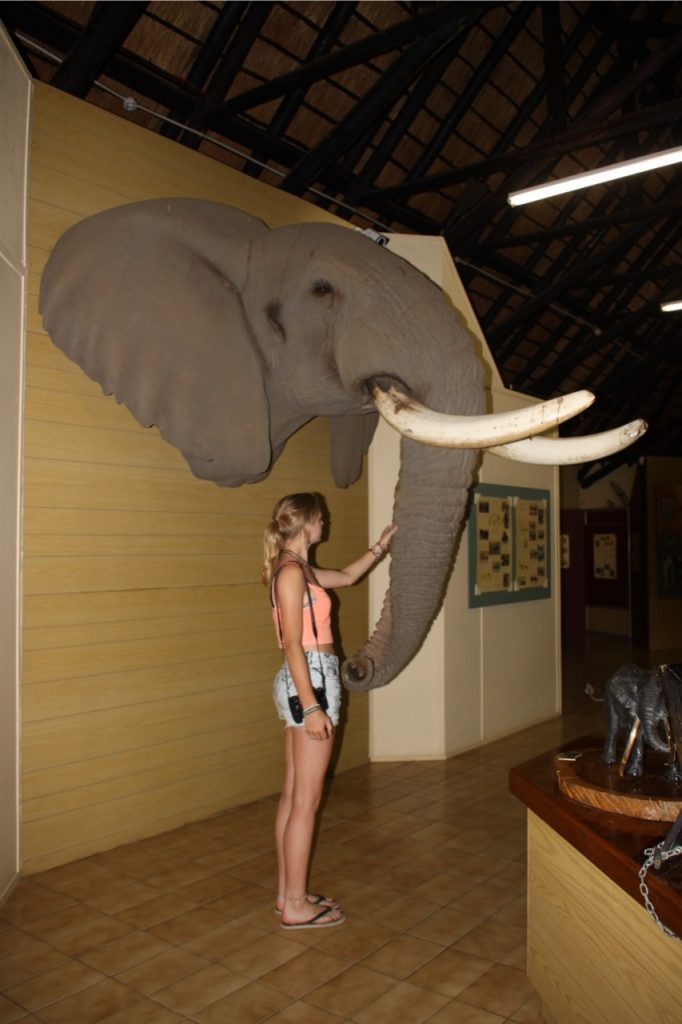
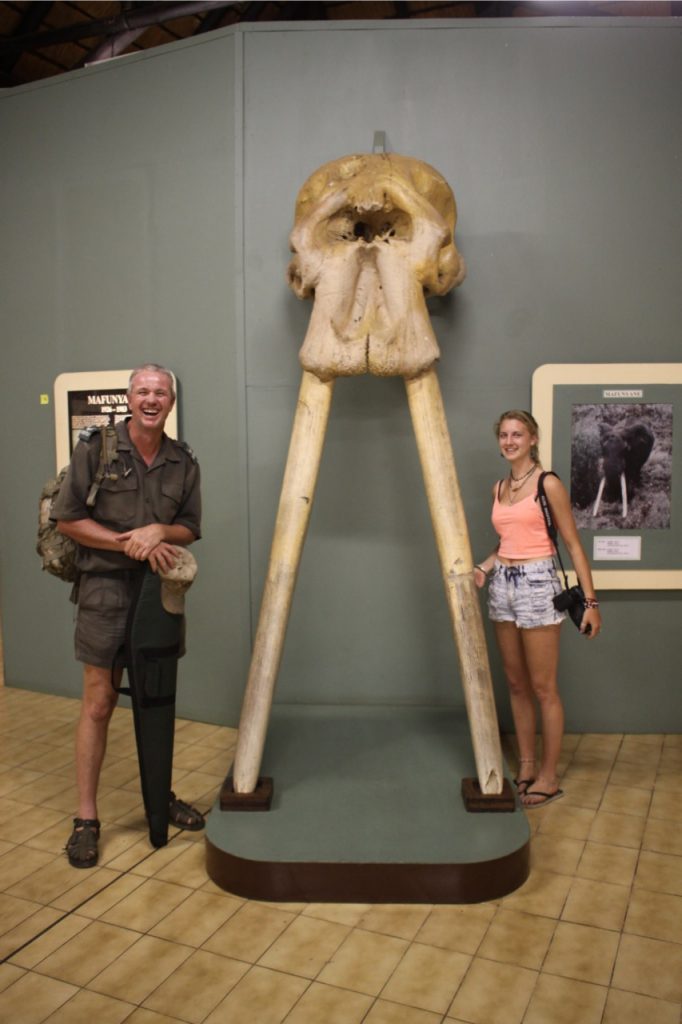
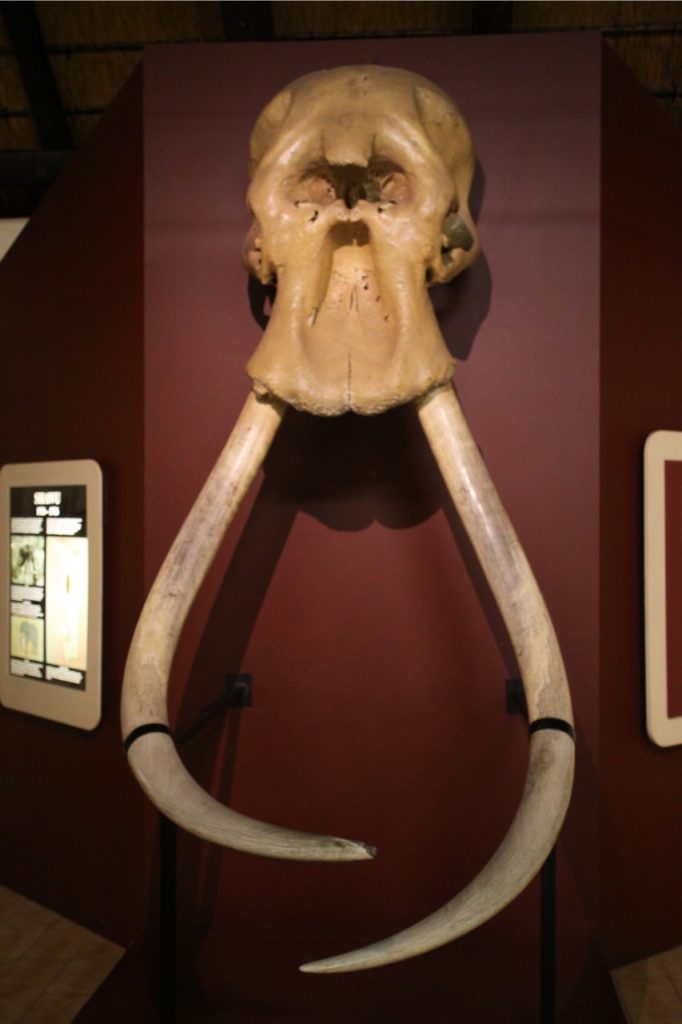
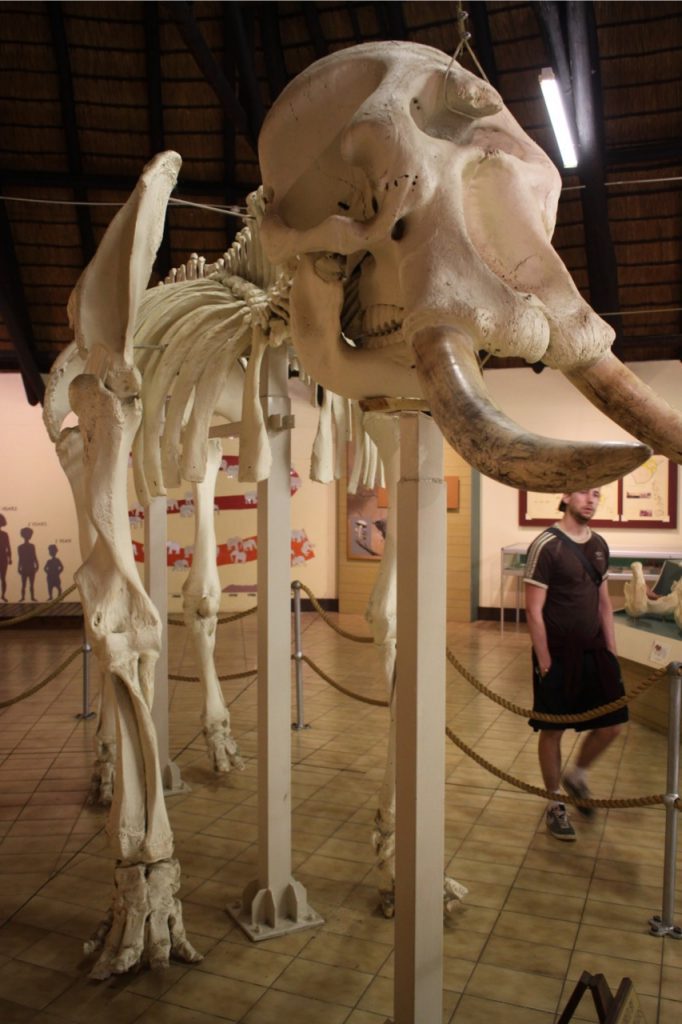
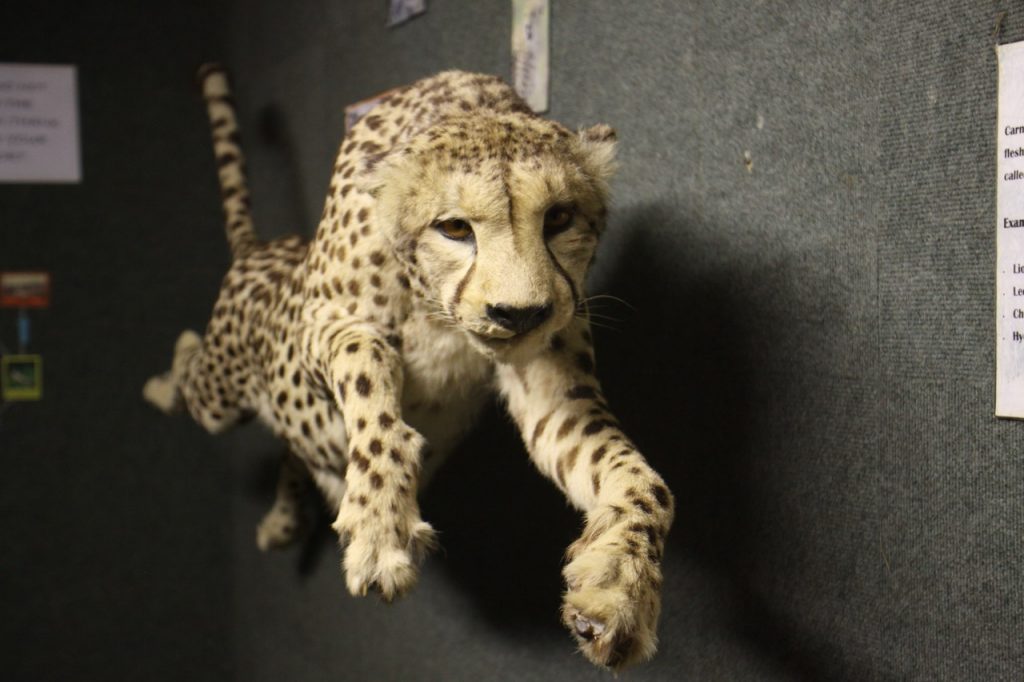
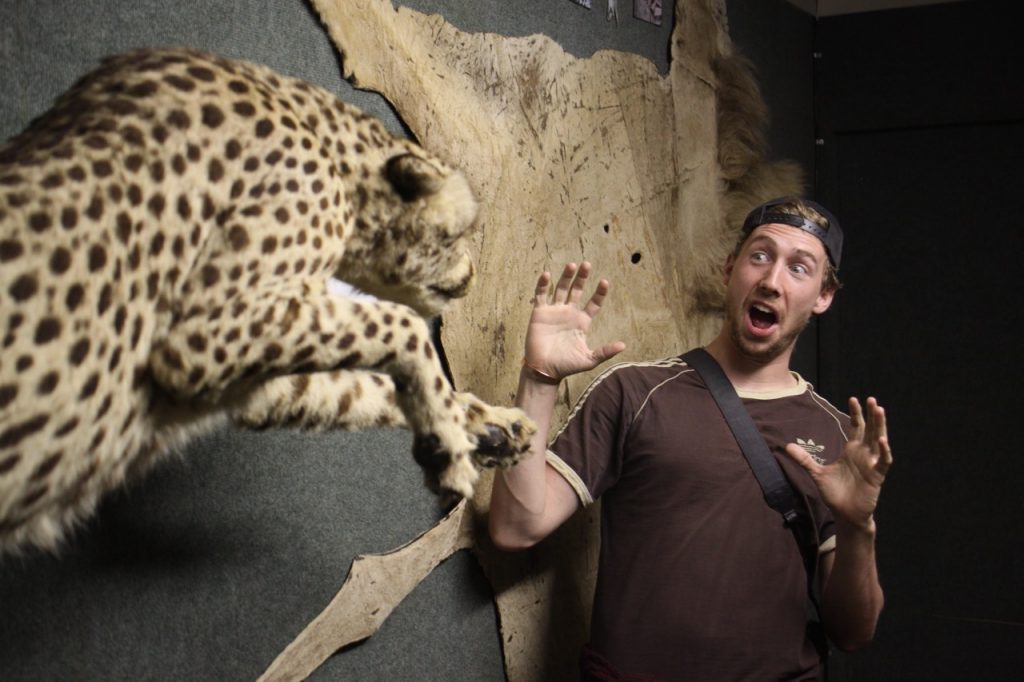
As our tummies were now rumbling we though that lunch would be a very good idea – toasted chicken & mayonnaise sandwiches with honey and Horlicks milkshakes YUMMY!! (why does this taste so very good in Kruger?!). Now for the final stretch to Olifants which would be home to us for the next two nights. Another delightful sighting of a baby elephant.
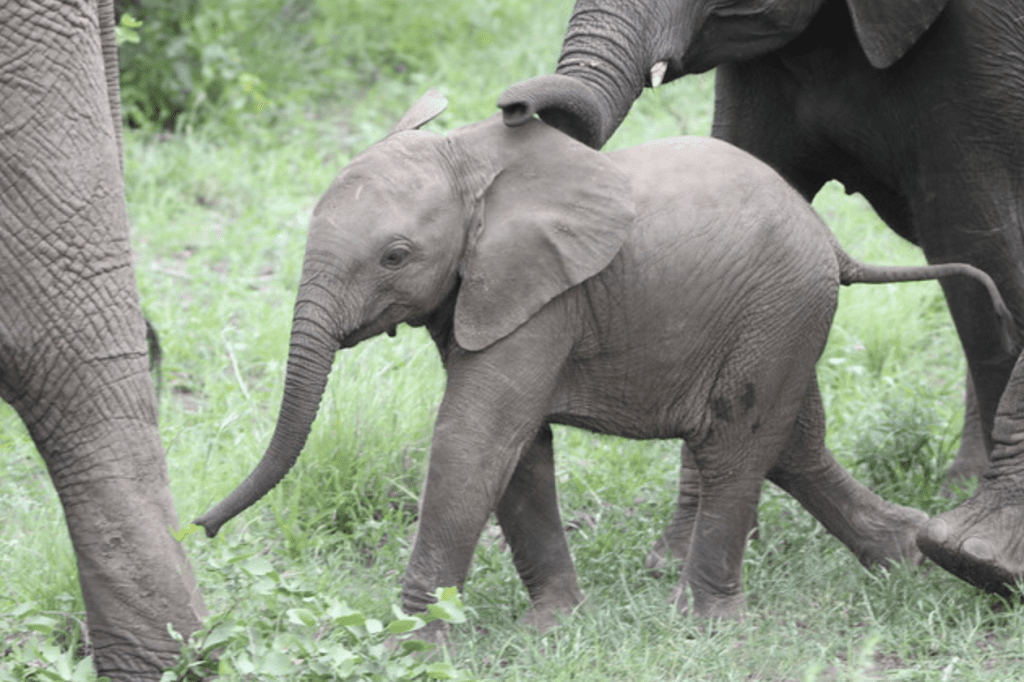
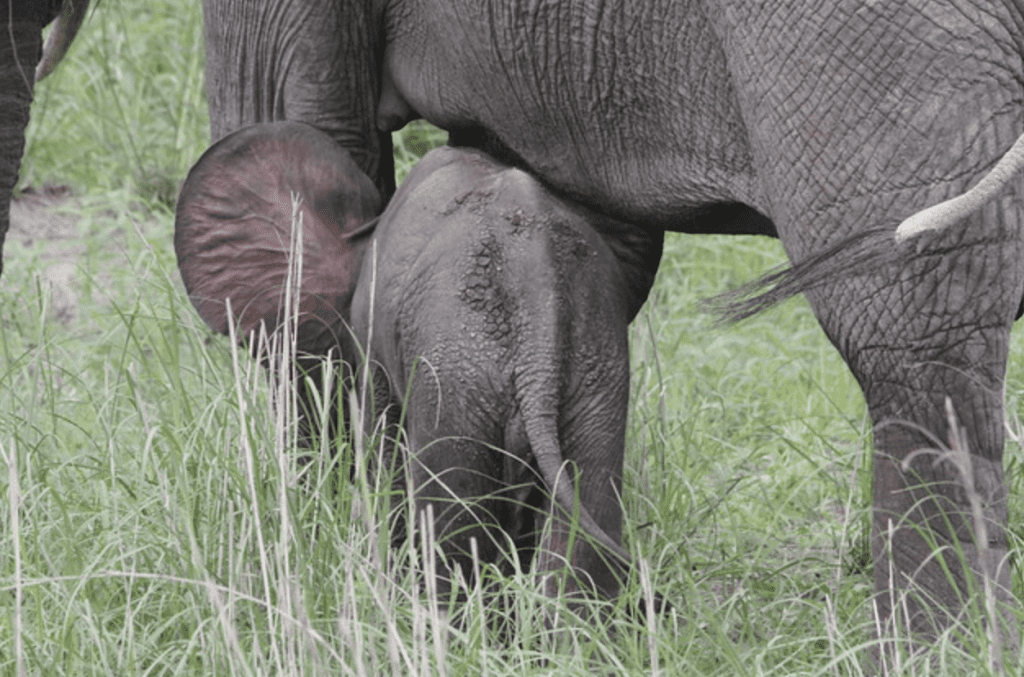
There was more game to be seen as we scanned the river bed. We always smile at the sign about falling sausage fruit!
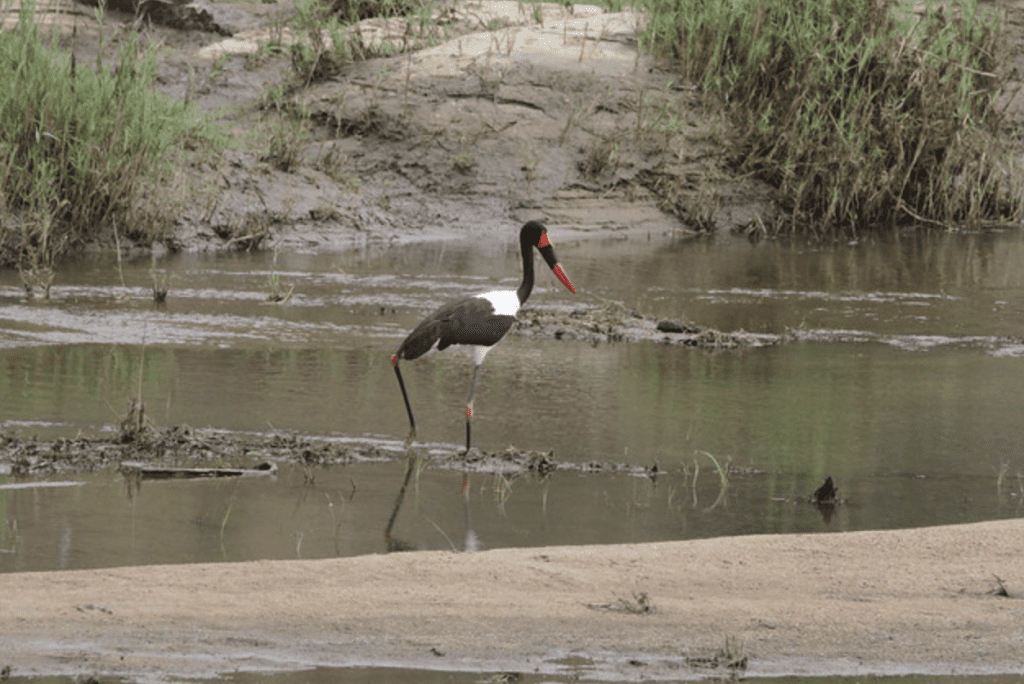
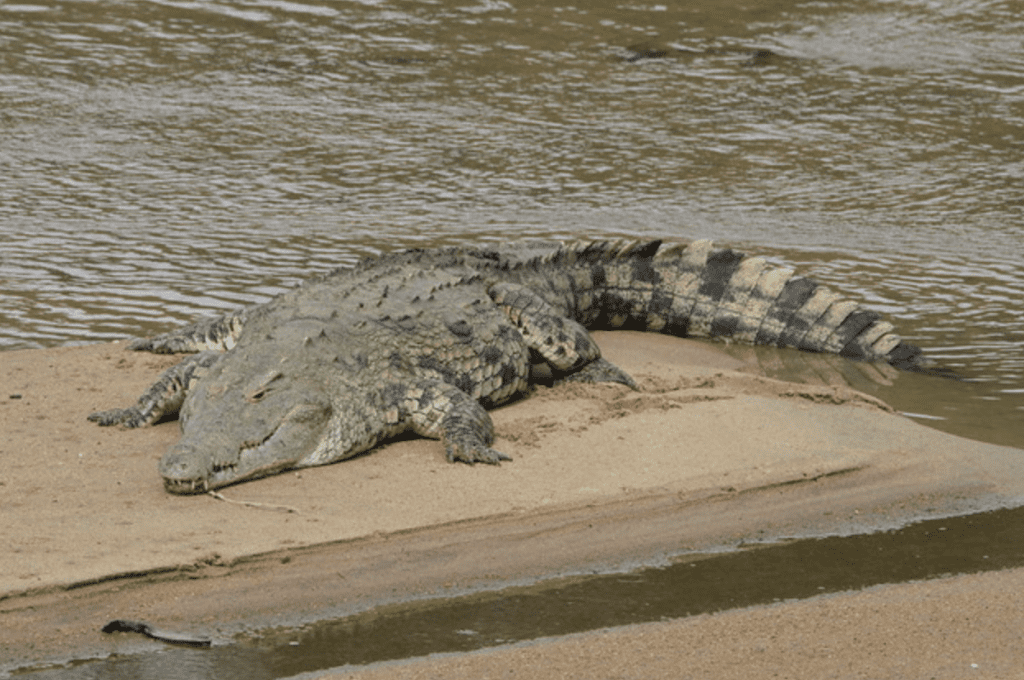
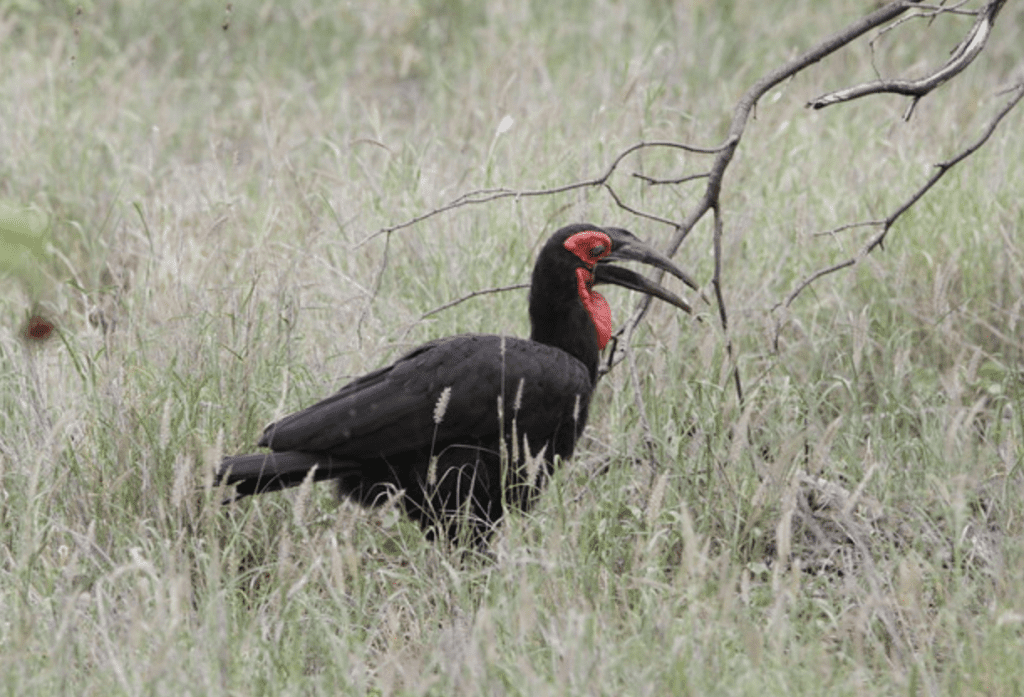
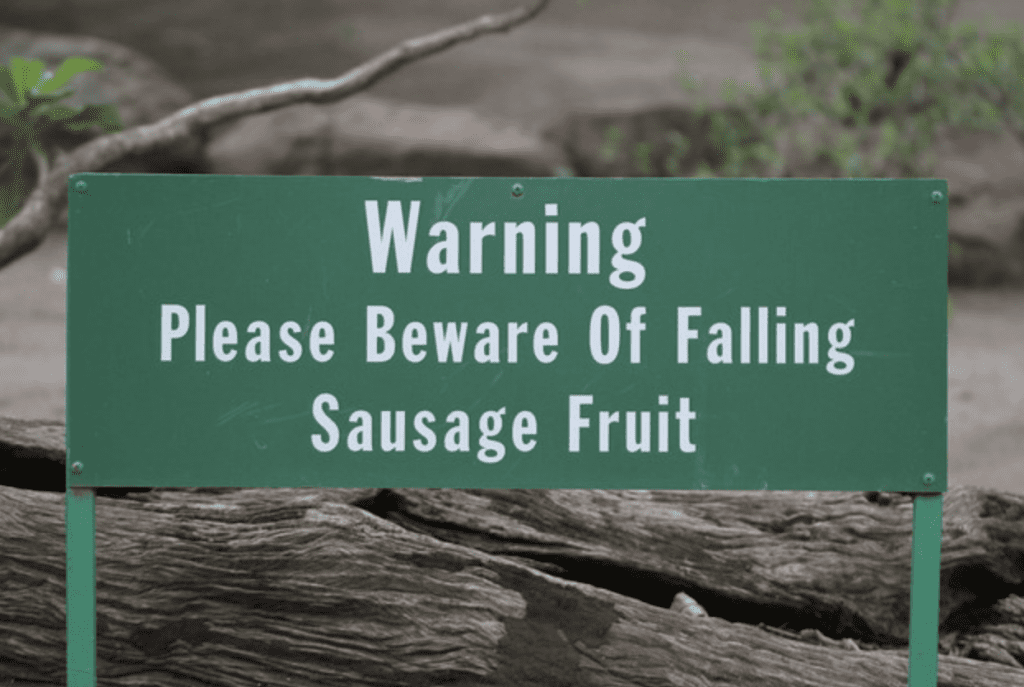
As we approached the Olifants Camp entrance, We scanned the riverbed and joked about being the first person to spot lions as we had seen no cats today…Paul took the binoculars and immediately froze saying, there really are 3 lions! At first we did not believe him – BUT, Yes! You can barely see them, but they ARE there! This was about a minute from the entrance to Olifants! 🙂
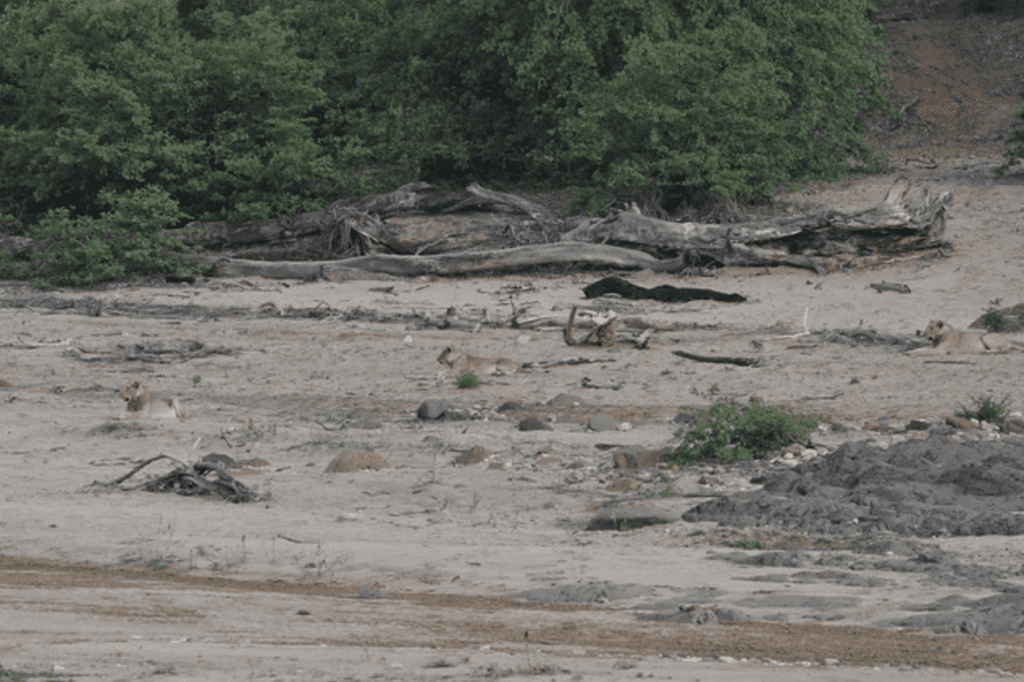
As we entered Olifants Jaco showed us the fake tusks at the entrance (I did not take this photo, so photo credit is visible on photo) – in the past they actually had real tusks at the entrance but the elephants would remove them and practice their mourning ritual touching and carrying them far away from the camp – hence why they had to be replaced (and of course ivory is worth alot!) – but a great story never the less :-)!
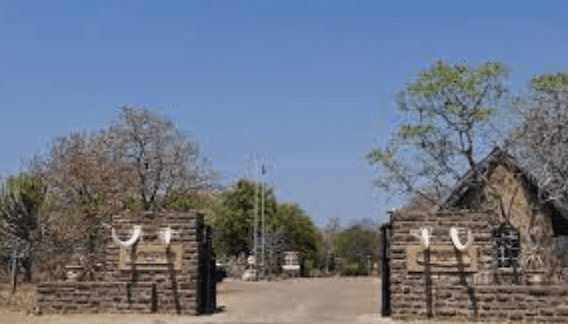
We were so spoilt as we were staying in one of the large family cottages with stunning views across the Olifants: Lebombo Guest House – highly recommended! This baboon was enjoying the view as much as we were! Our accommodation was the luxury 8 sleeper Lebombo corrage with sweeping views across the Olifants River – spectacular.
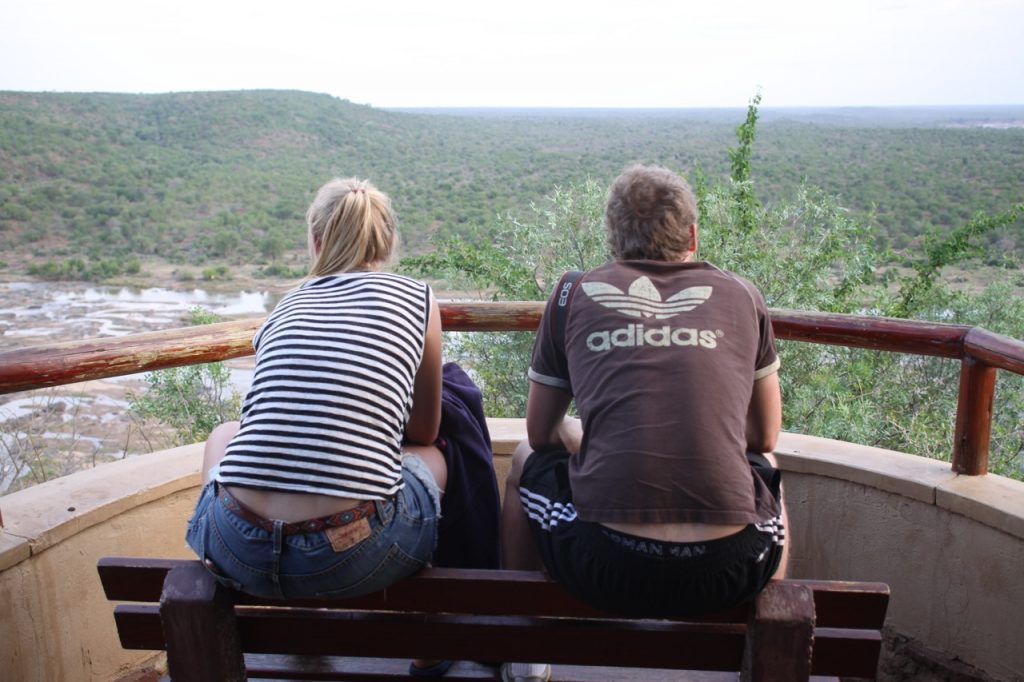
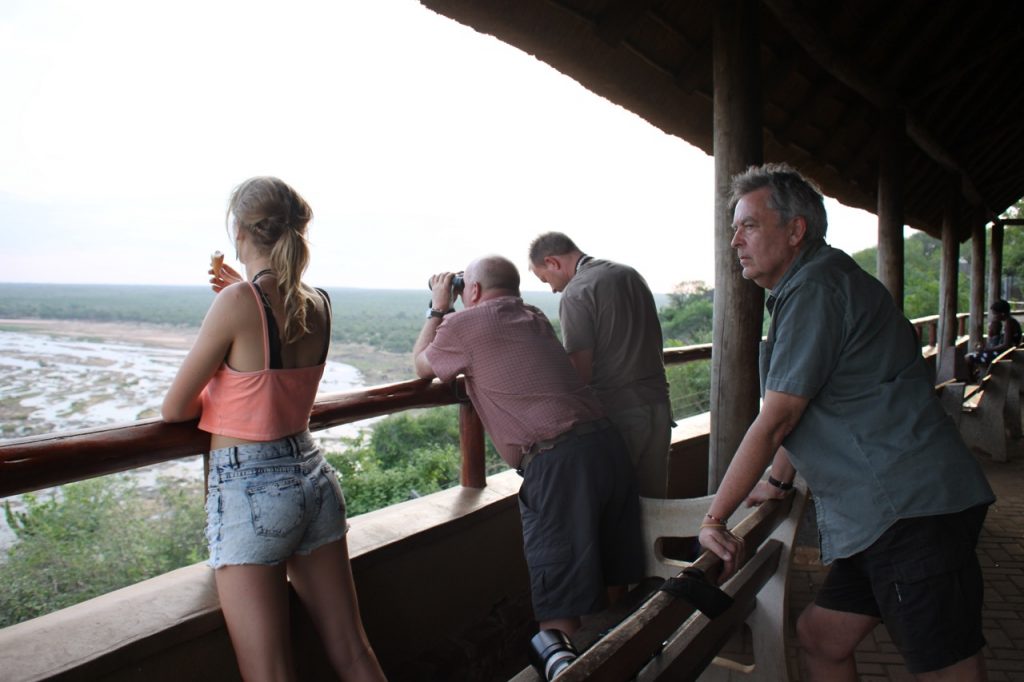
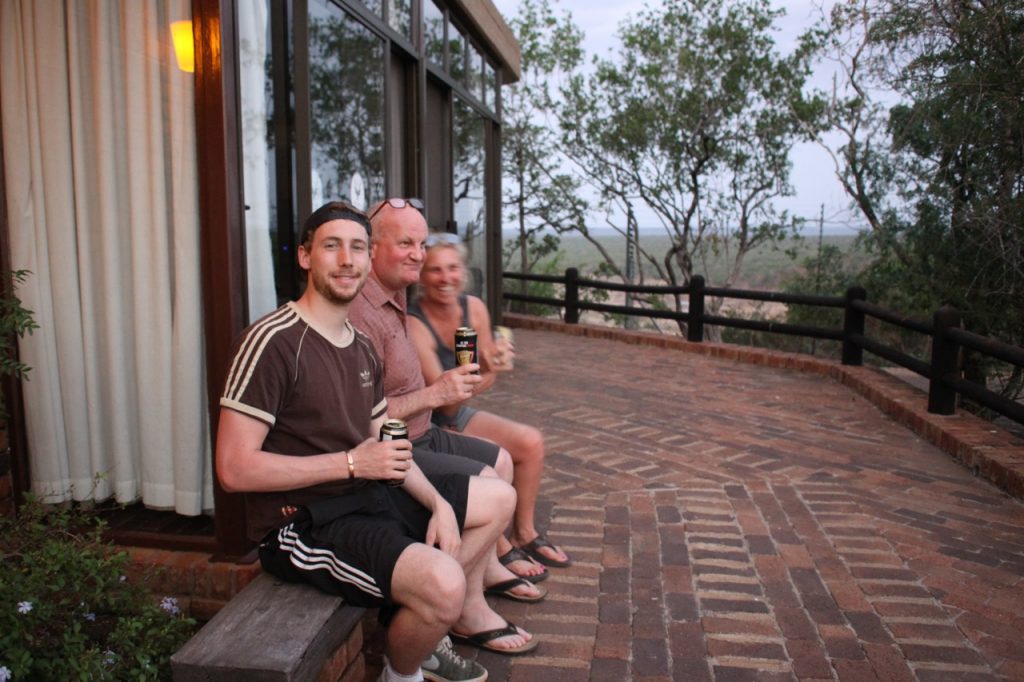
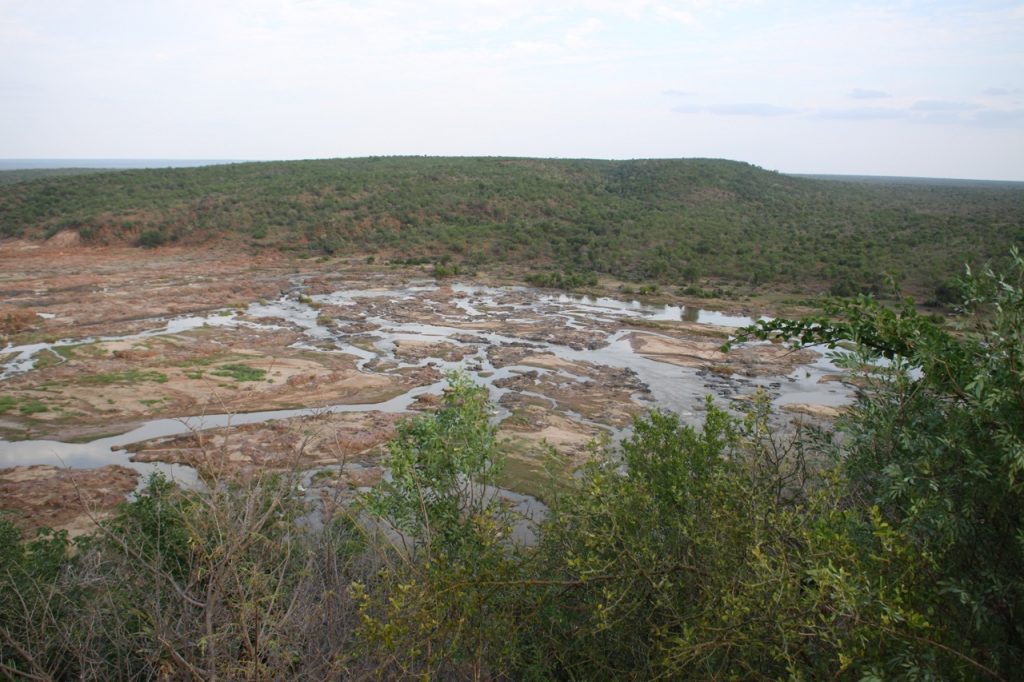
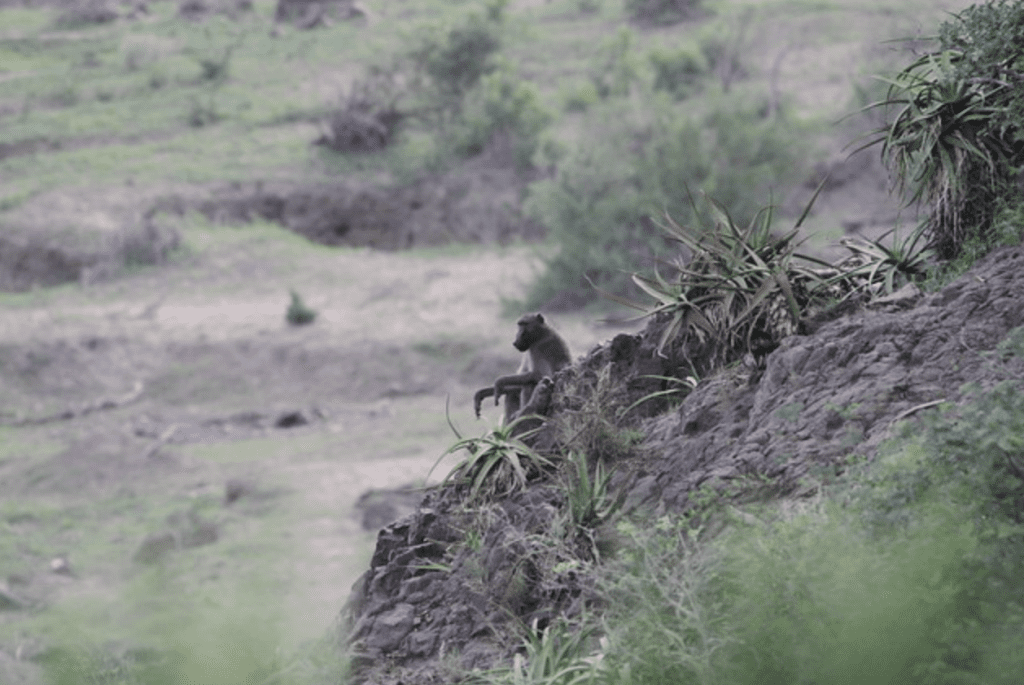
Boma lit, braai crackling and a glass of wine in hand – we were discussing the events of the day when suddenly there was the sound of a crunch and an overwhelming smell of popcorn – that could mean only one thing: LEOPARD! We grabbed our torches but the smell had already dissipated – the leopard had come and gone – no doubt patrolling the perimeter of our fence. Instead we photographed this arrow mark moth… you can see the arrows clearly. By 10pm we were all dozing off around the fire – another perfect day in paradise – time for bed and rest in anticipation of another day full of african adventure!
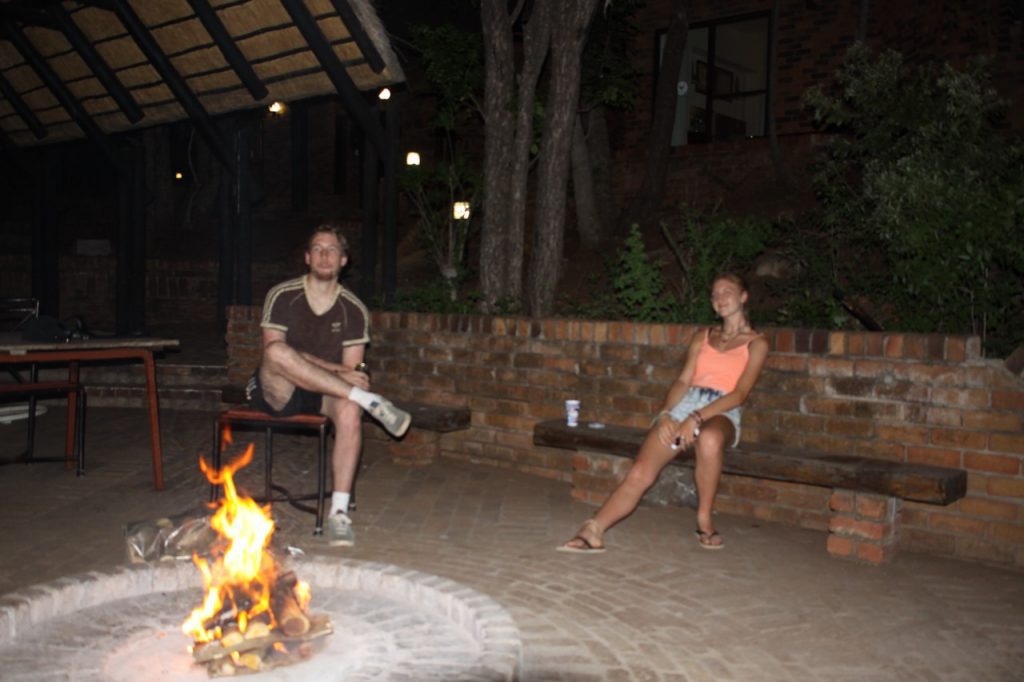
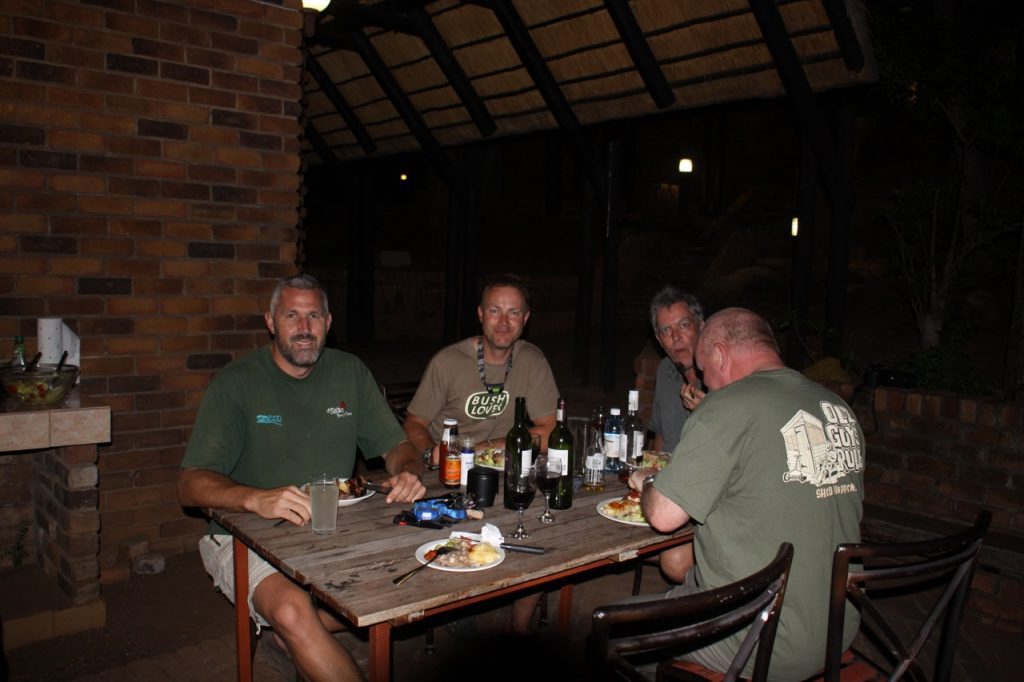
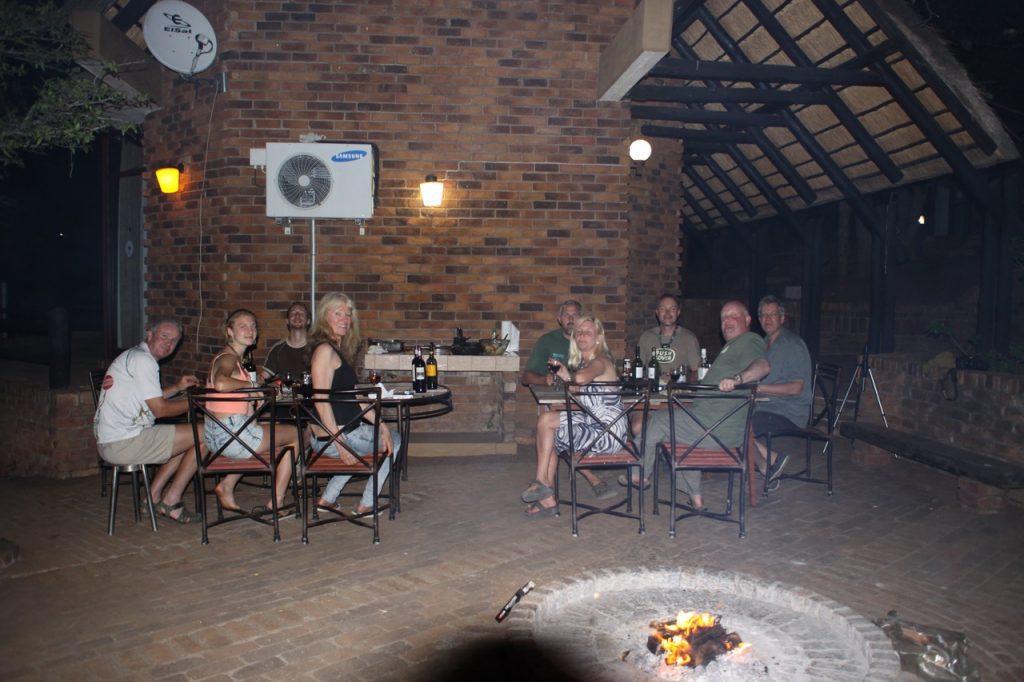
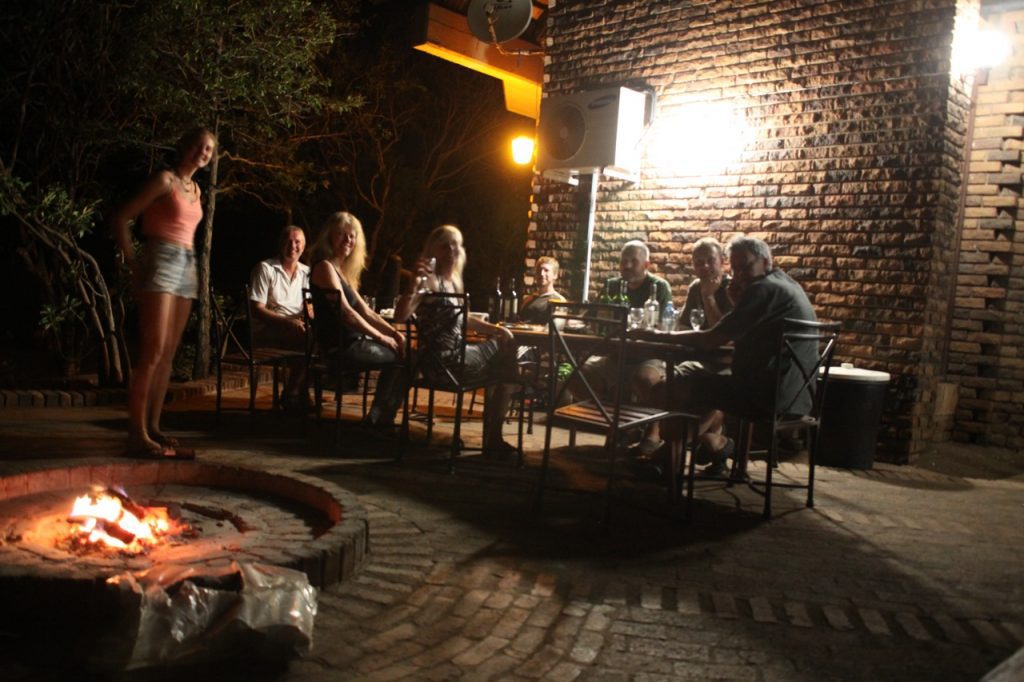
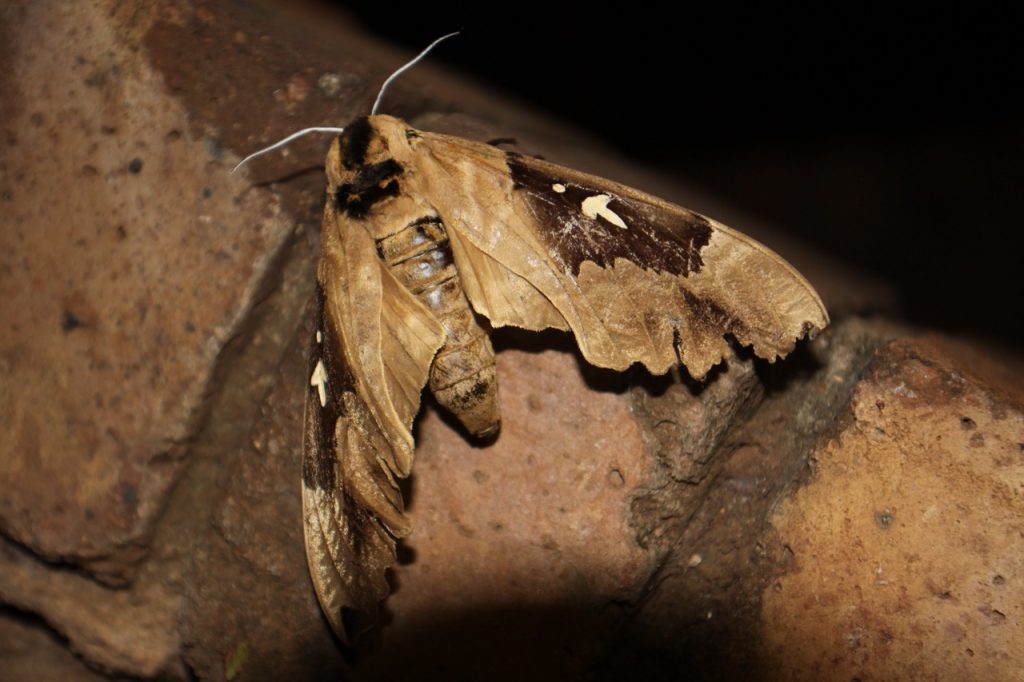
DAY 6 KNP: Tuesday 5th April 2016 Olifants & Surrounds
The views from Lebombo Guest House are so spectacular that we set our alarms super early to photograph sunrise – we were not disappointed – the photos do not do it justice!
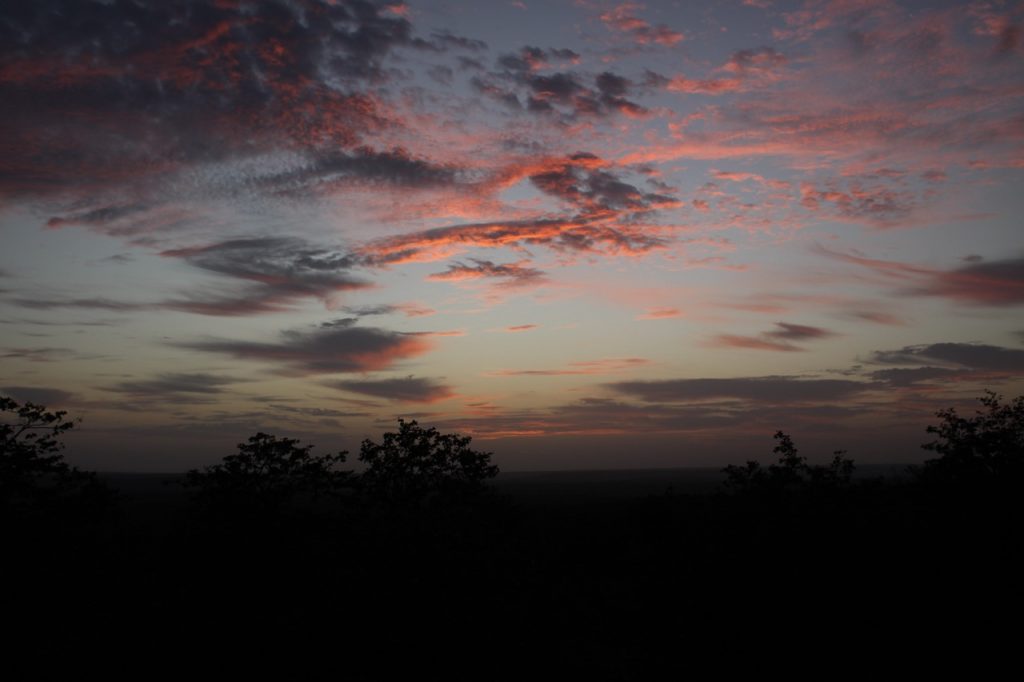
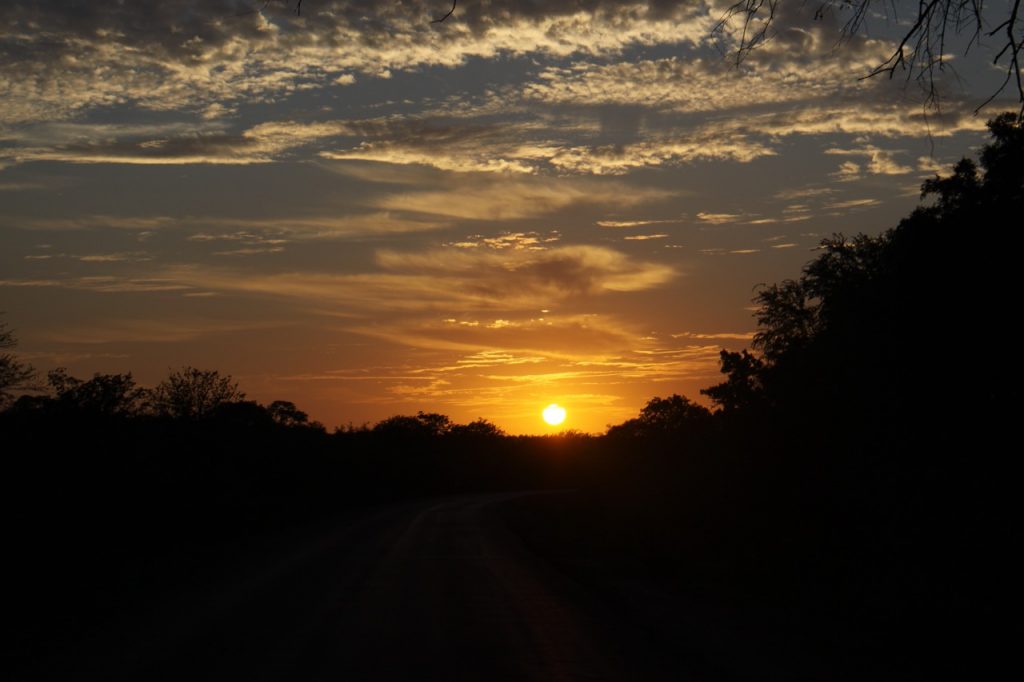
We set off for our walk on the banks of the Olifants at 5am. The sand was littered with tracks – we were in heaven as tracking and identifying spoor is our favourite thing!
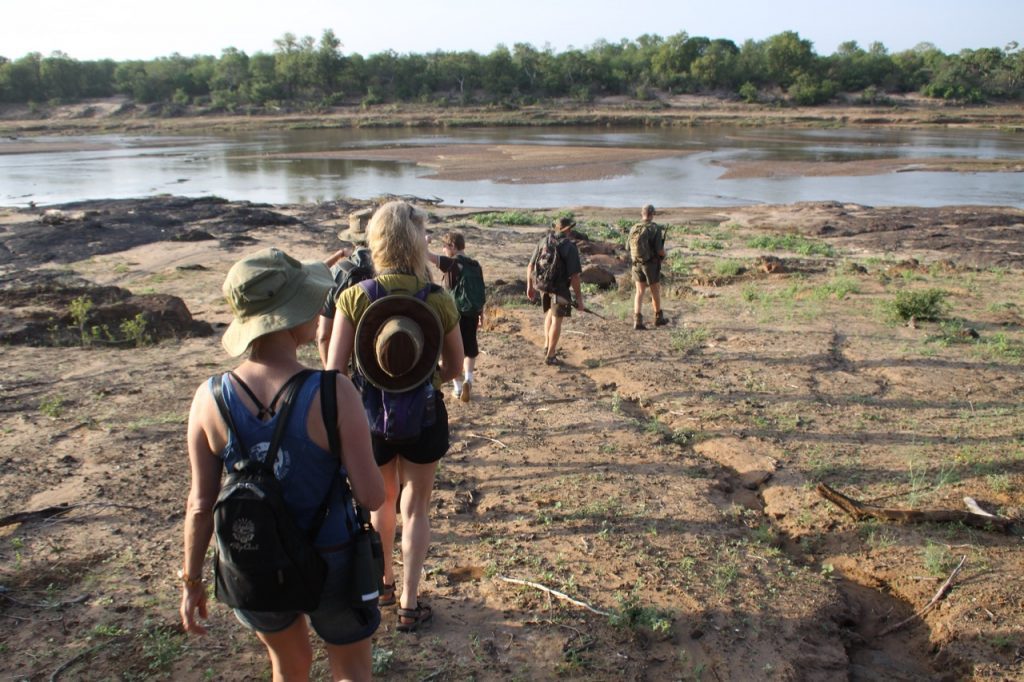
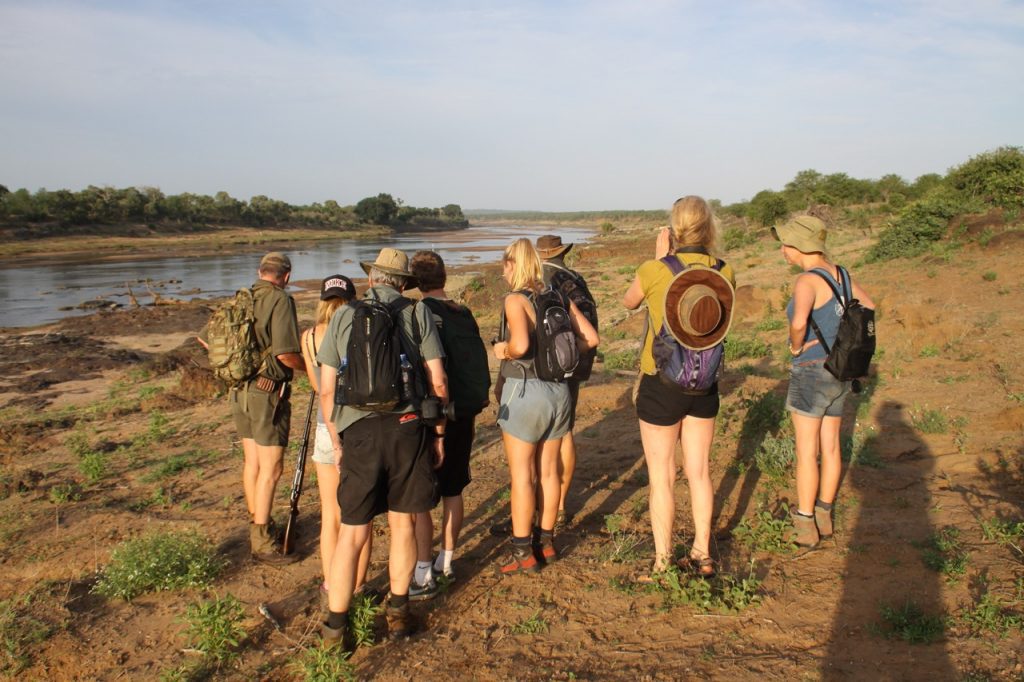
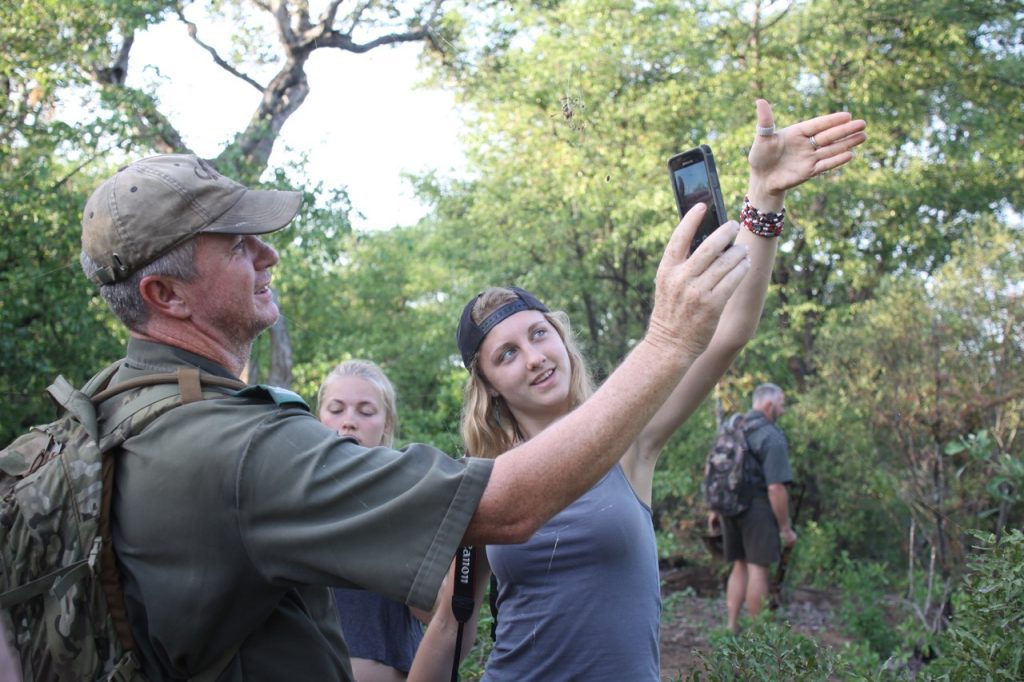
These are female leopard and cub tracks. Jaco said they were extremely fresh – she must have just spotted us and done something called double registering which is walking with her hind paw on to her front paw, something that they do when hunting and reduces sound.
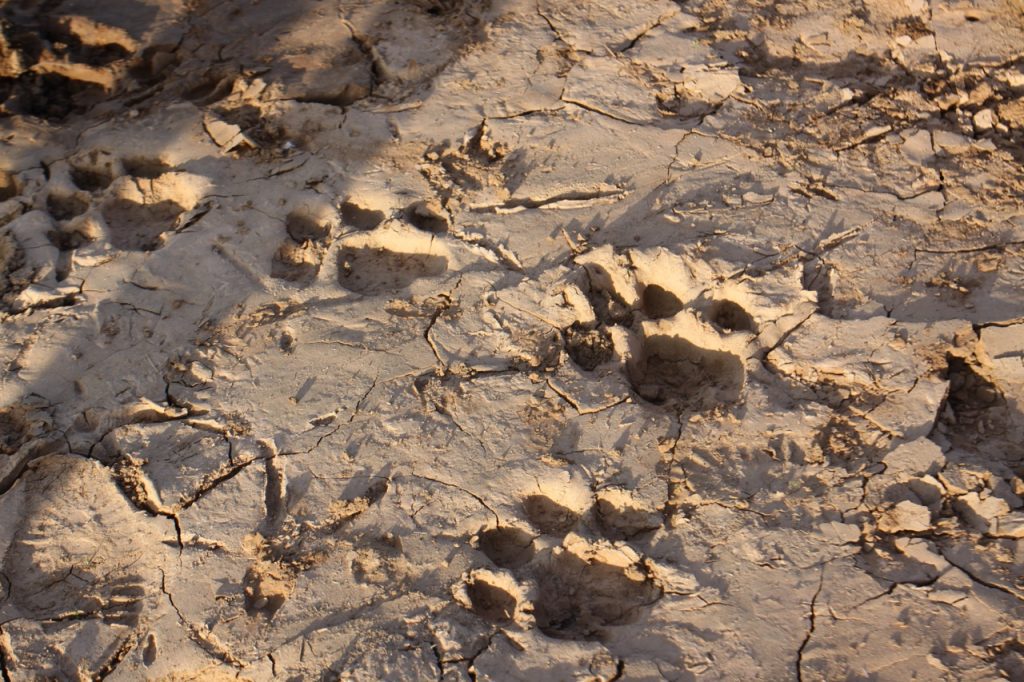
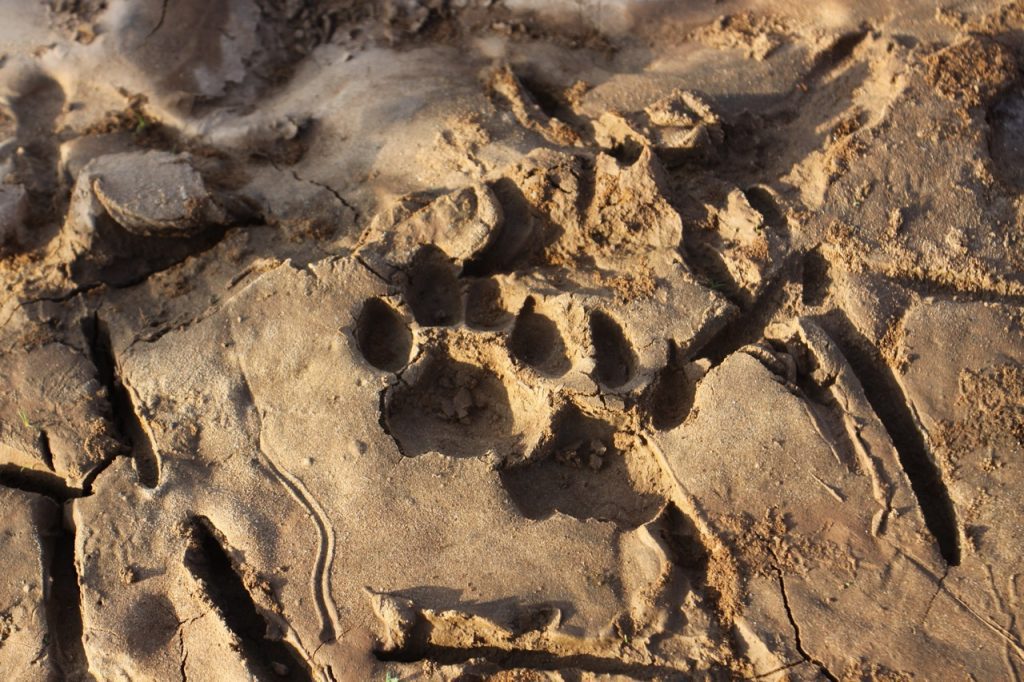
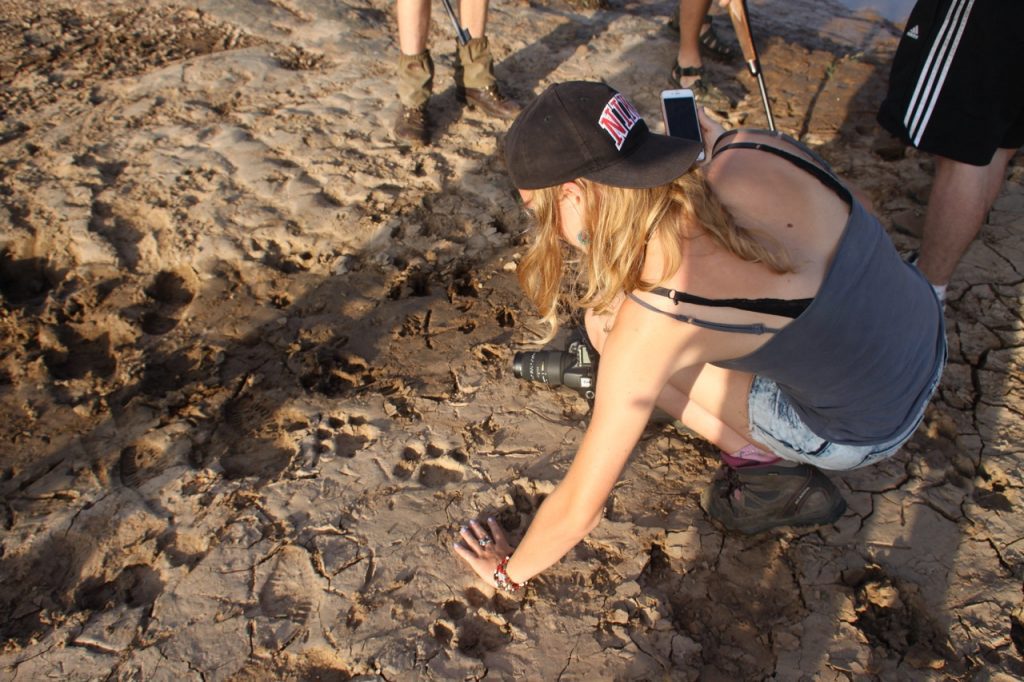
It was simply beautiful being there in the early hours of the morning! This quartz crystal is 182 million years old!
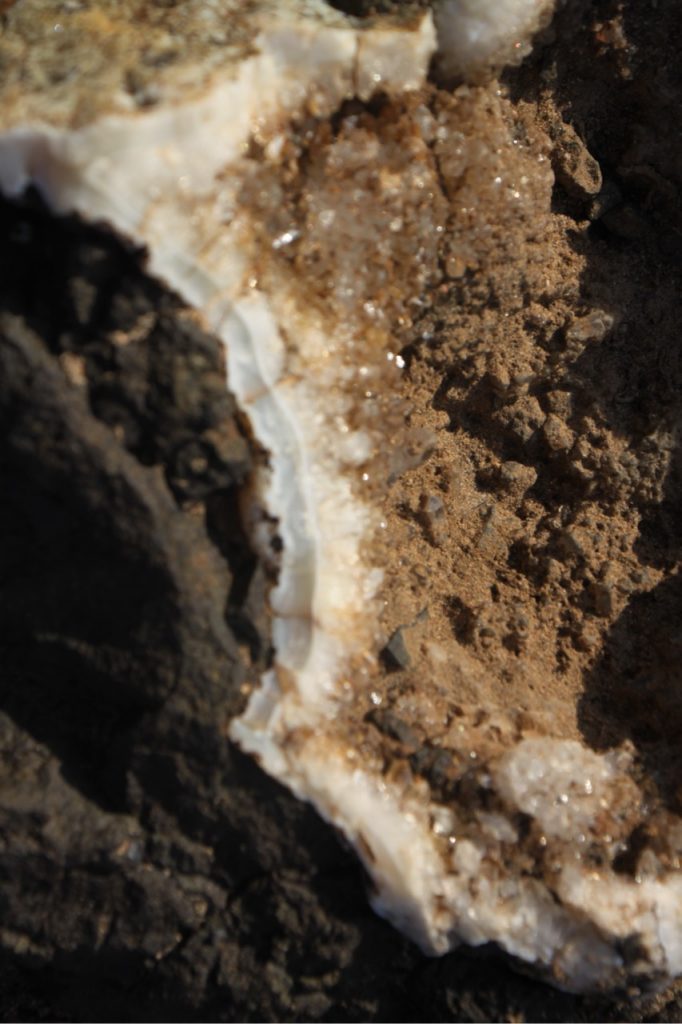
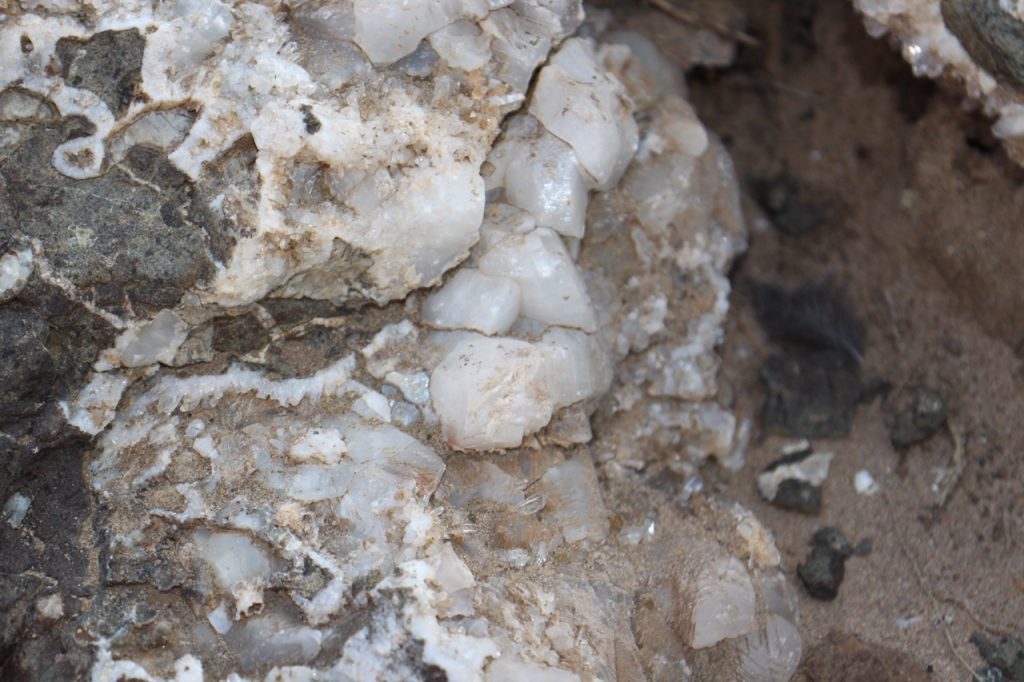
We tracked the leopards for about an hour but then lost their tacks – she must have taken her cub into the drainage lines. Time to stop off for a quick snack and to admire the view.
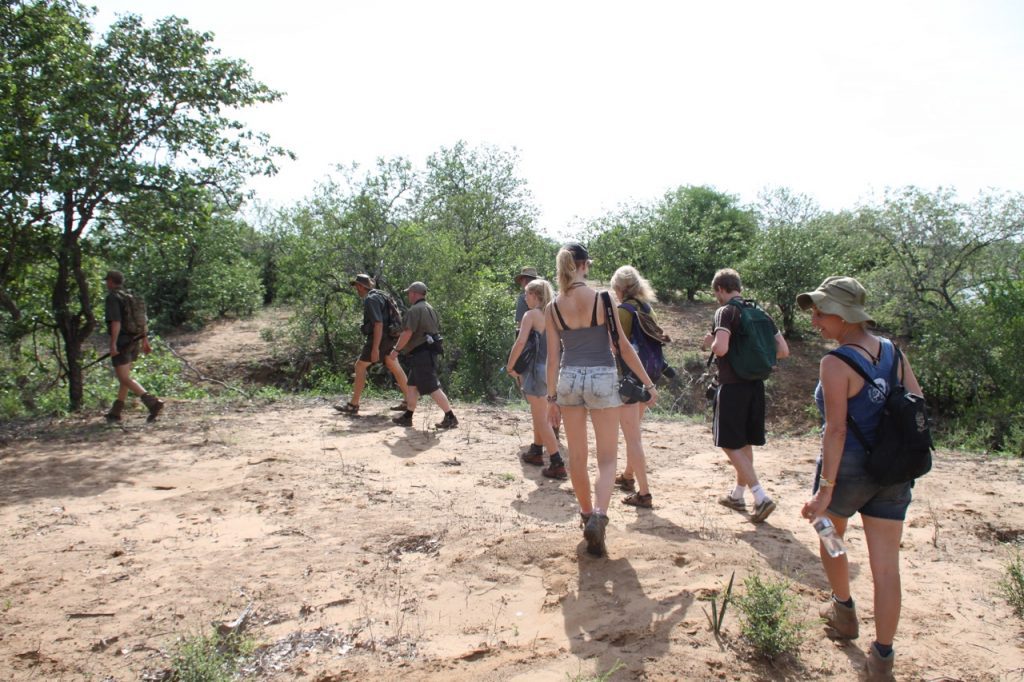
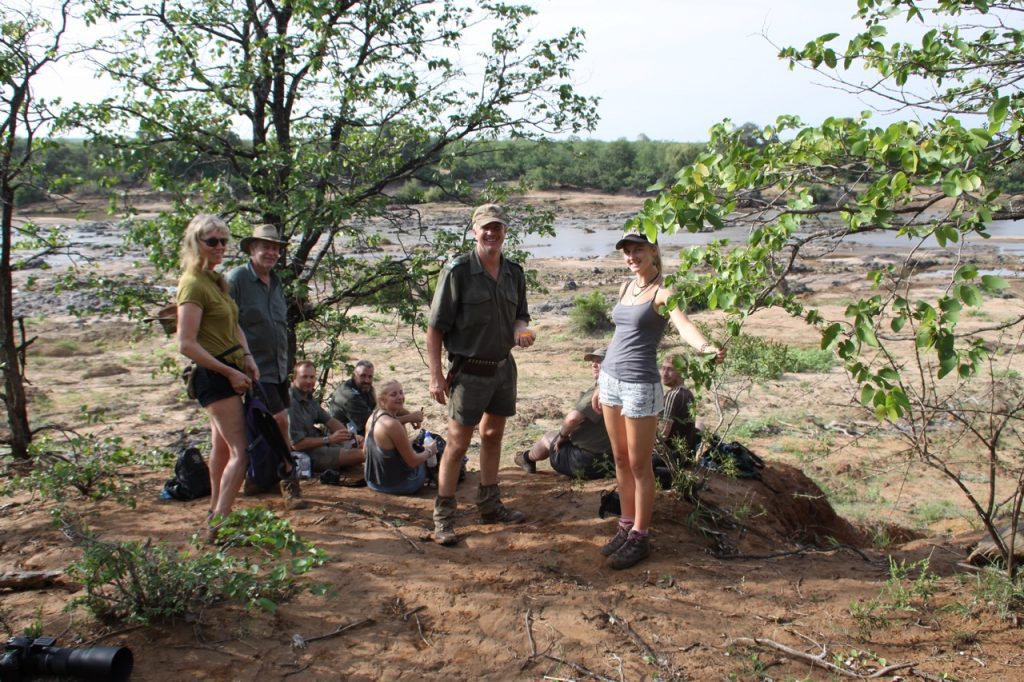
We headed to the vehicle and drove back to Lebombo for a delicious cooked brunch and a bit of relaxation by the swimming pool – blissful.
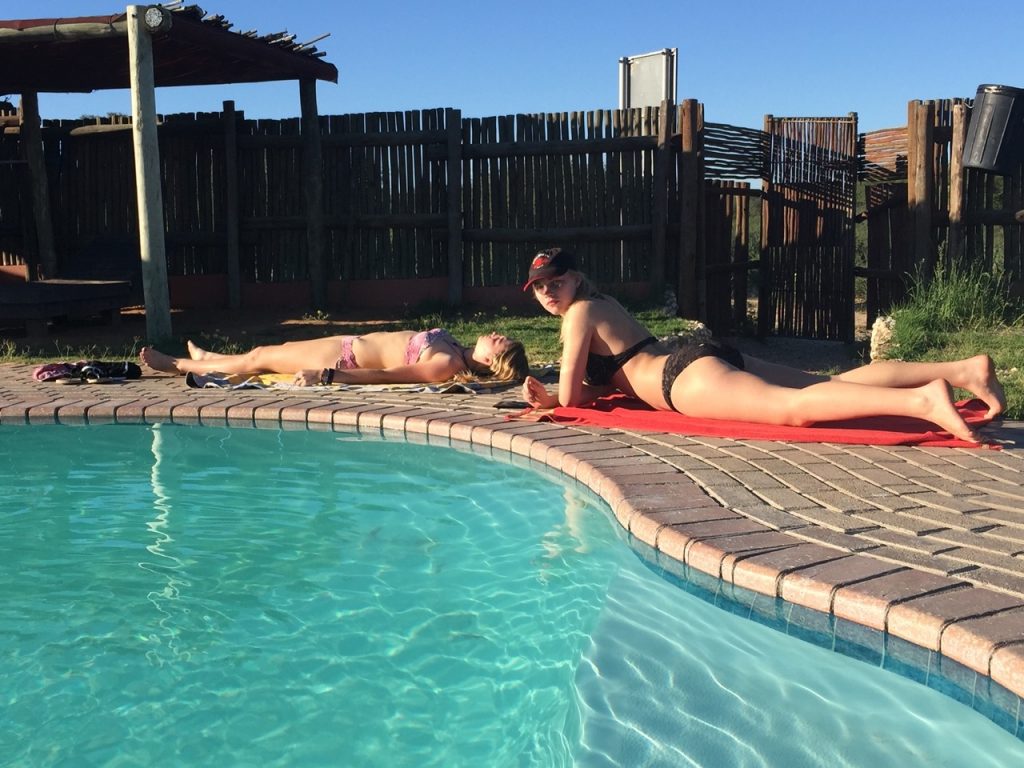
After lunch we headed off to a spectacular gorge – this is a section of the Olifants River close to the point where the river flows into Mozambique and where these pot holes are visible. We managed to get an arty shade reflection of us all on the opposite walls of the gorge!
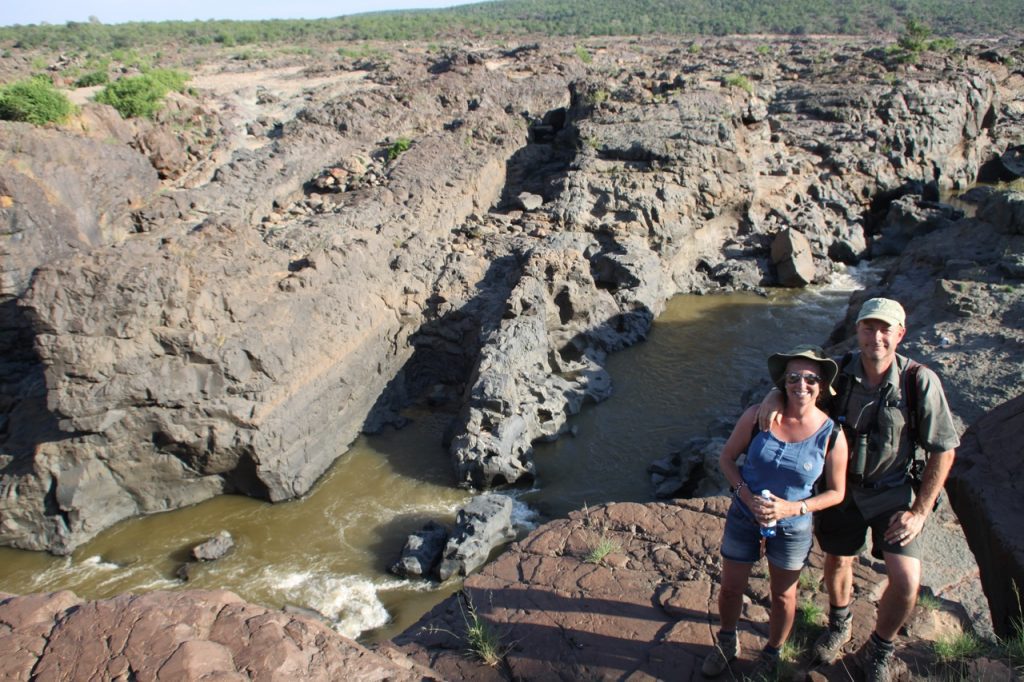
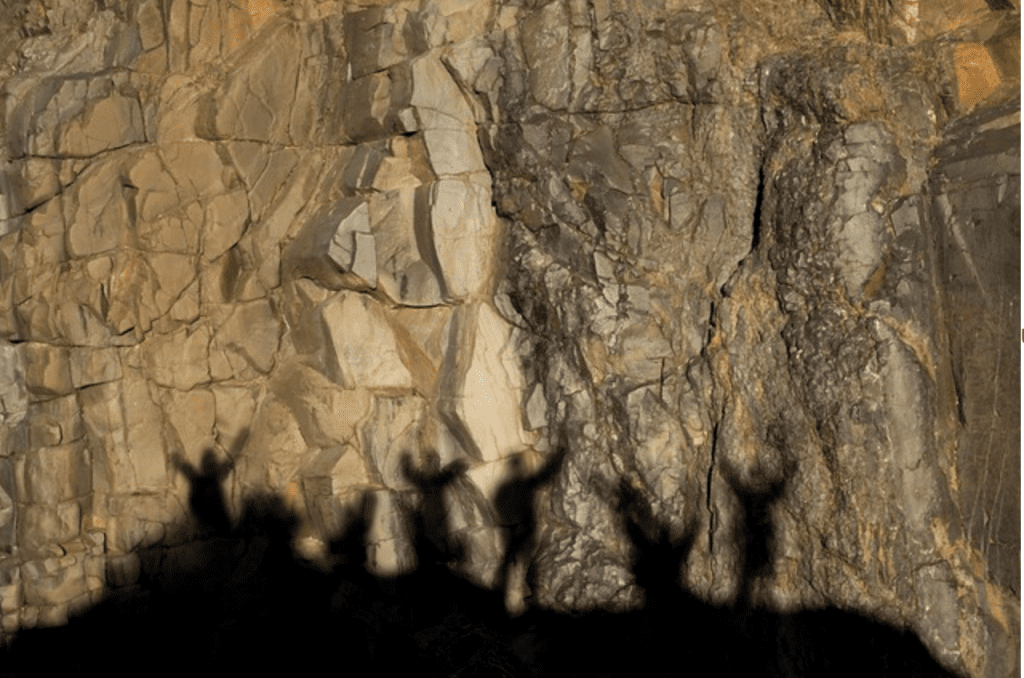
Jaco told us that in years gone by crocodiles would gather here in these pools of water in their hundreds to breed but in 2008, 2009, 2010 about 170 dead crocodiles were reported for each of these years. It was initially thought that Mozambiquen fisherman were poisoning the crocs. Autopsies revealed that the immediate cause of death was pansteatitis, a nutritional disease rarely encountered in wild animals. It results in the hardening of fat tissues, which eventually prevents the free movement of limbs and tails, and ultimately death by starvation or drowning. But what was the cause of the sudden and severe incidence of this unusual disease in a wild population of crocodiles within a national park? Further research by a veterinarian provided the next clue – the cause of the pansteatitis. The disease has been described from many species of captive and farmed animals, including fish. In all cases the condition has been associated with unsuitable diets containing either rancid fats or high levels of fish oils. Autopsies on daed catfish showed that they presented the same condition. The diet of the crocodiles and catfish in the gorge must have somehow become unbalanced … Further investigation yielded that the source of these particular fats were not dead fish, but rather phytoplankton – Yet crocodiles and catfish do not feed directly on phytoplankton. Lake Massingir, just downstream of the Olifants Gorge, is known to be eutrophic and is subject to seasonal phytoplankton blooms. Crocodiles do not consume phytoplankton, but certain fish species do, and fish that feed almost exclusively off phytoplankton can assimilate very high levels of polyunsaturated fatty acids in their tissues. If these are then consumed by the crocodiles, abnormally large amounts of polyunsaturated fatty acids could accumulate in the crocodiles. This led to the identification of the villain in the crocodile death saga: the silver carp! Native to China, the silver carp was introduced into Lake Massingir intentionally to improve the fisheries potential of this lake. Around the same time silver carp accidentally escaped into the middle stretches of the Olifants River from a training college in South Africa. The species became well established in the lower Olifants River. Silver carp are filter feeders and thrive on phytoplankton blooms in Lake Massingir, from which they assimilate uniquely high levels of polyunsaturated fatty acids into their fat tissues. It is speculated that crocodiles and catfish in the Olifants Gorge consumed large numbers of silver carp where these fish congregate seasonally to spawn at fish barriers in the gorge. The flooding and subsequent hydrodynamic changes that occurred in the Olifants Gorge after the sluice gates in the Massingir dam wall were raised in 2007, may have made it possible for crocodiles and catfish to access abnormally large numbers of silver carp. Excessive consumption of polyunsaturated fatty acids would have resulted, leading to the pansteatitis deaths in the following years. (http://www.saeon.ac.za/enewsletter/arch … 2014/doc02). This just shows how the intervention of man affects entire ecosystems! We enjoyed a few hours sitting on the ancient rocks and soaking up the sun and listening to Jaco’s stories – bliss in the bush!
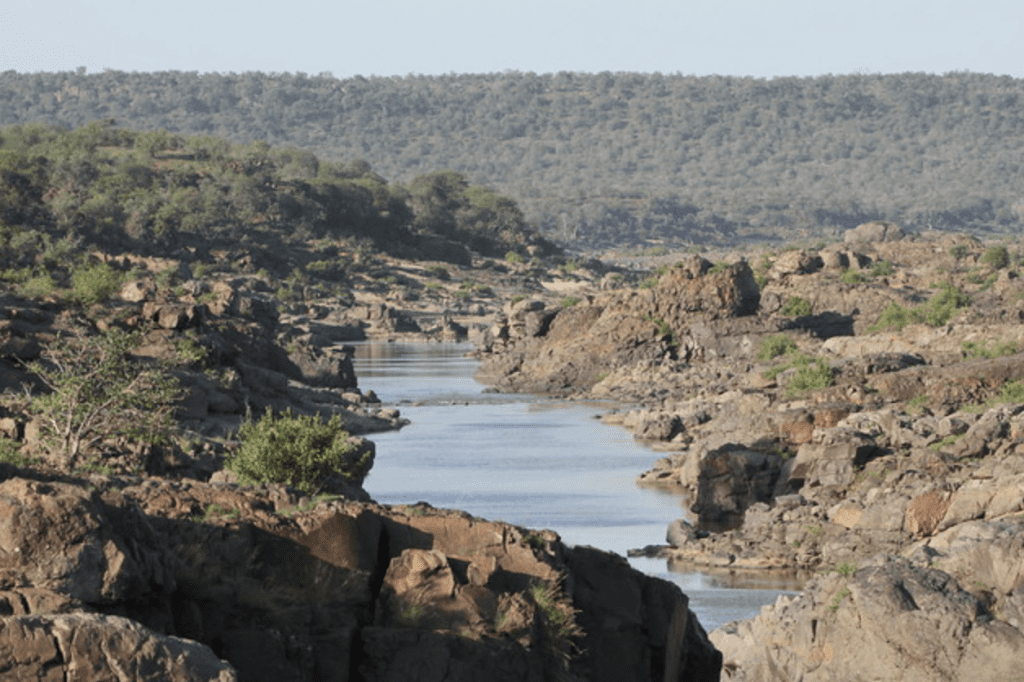
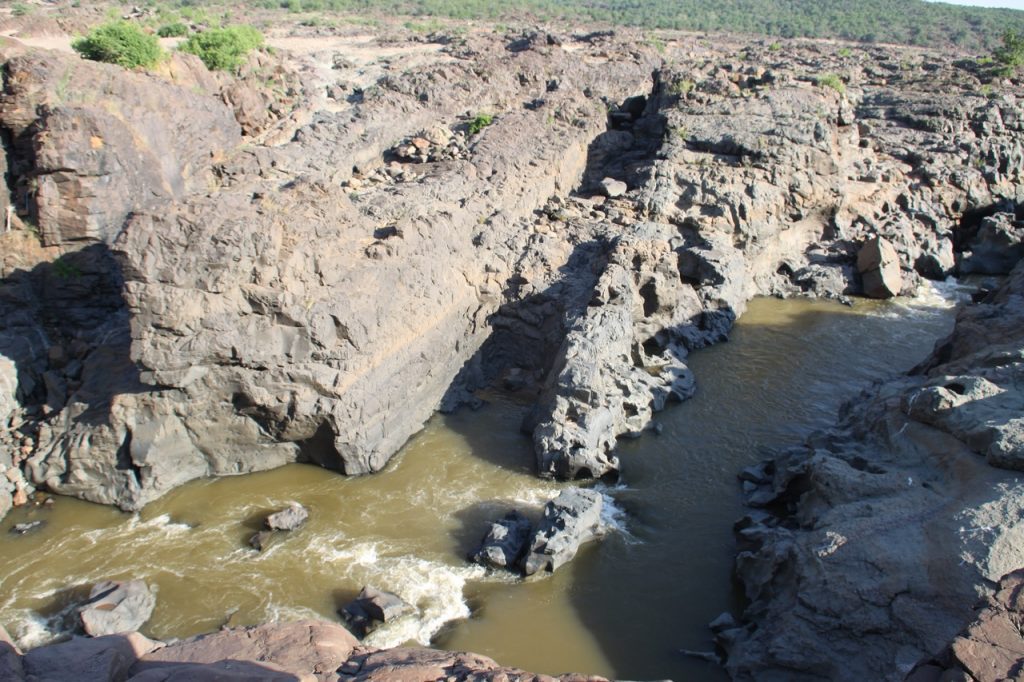
This nest was precariously balanced. We had a competition to see who could take the best photo of the dragonfly.
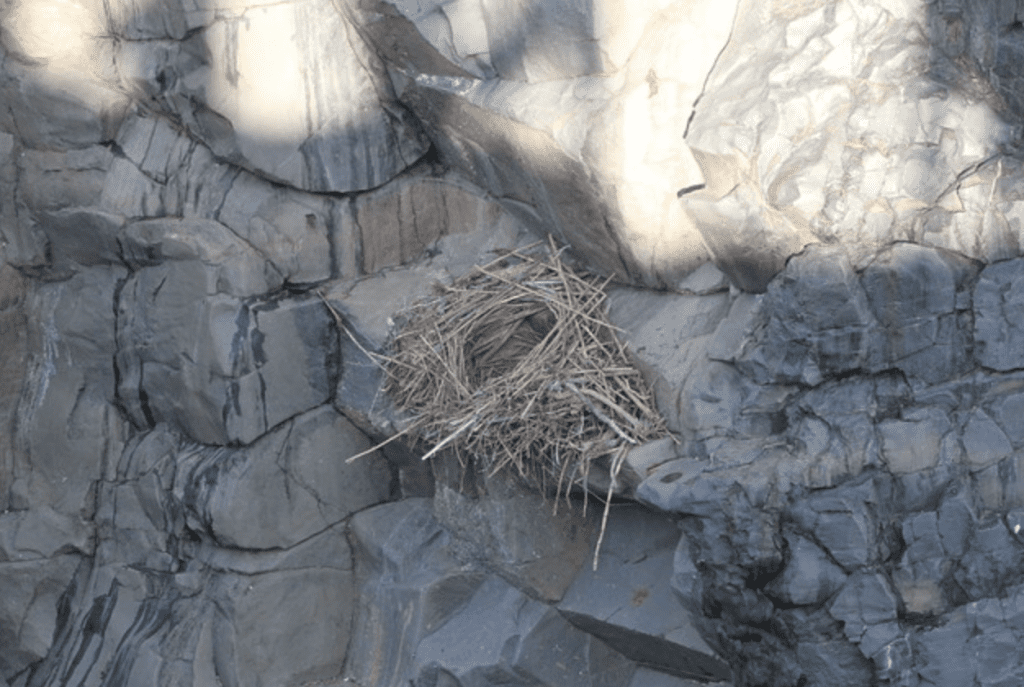
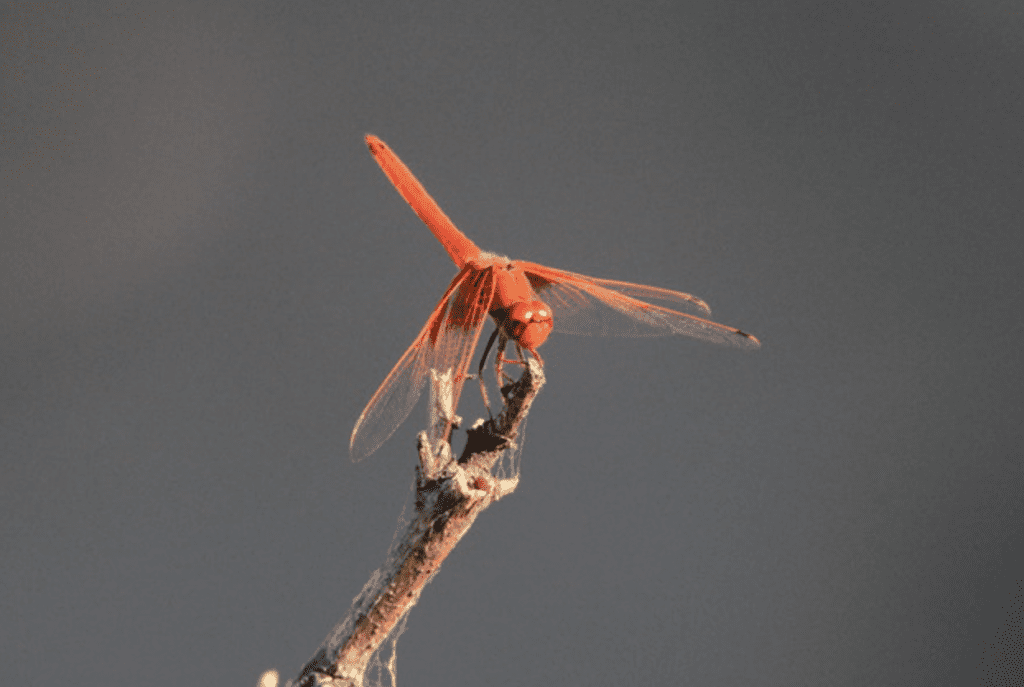
We drove to a scenic viewpoint for a sundowner. A lovely couple from the USA took a photo of us all.
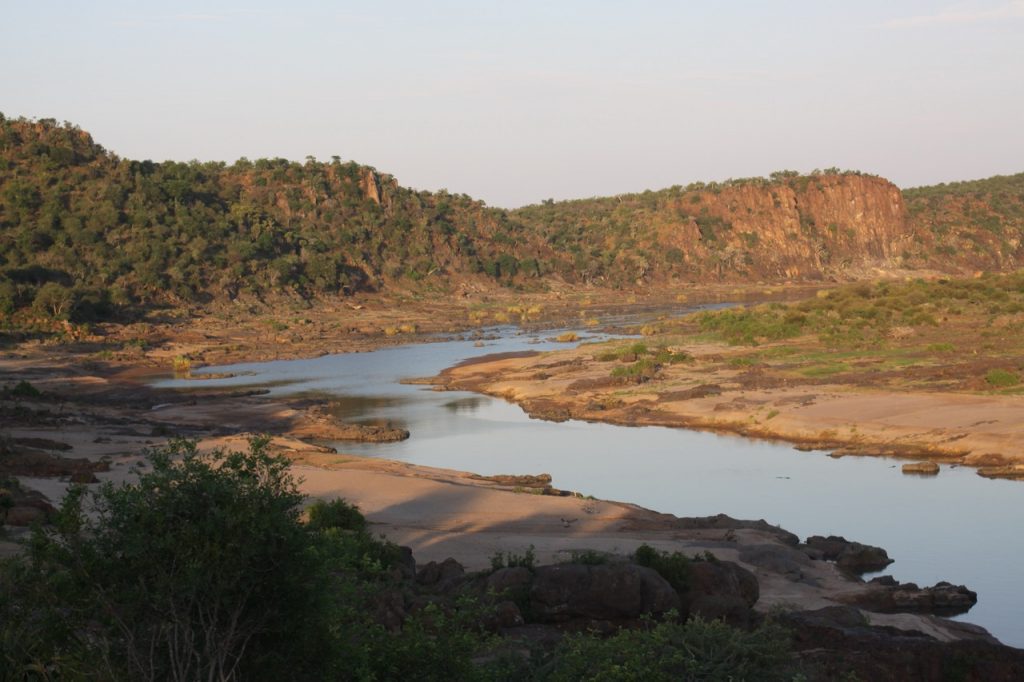
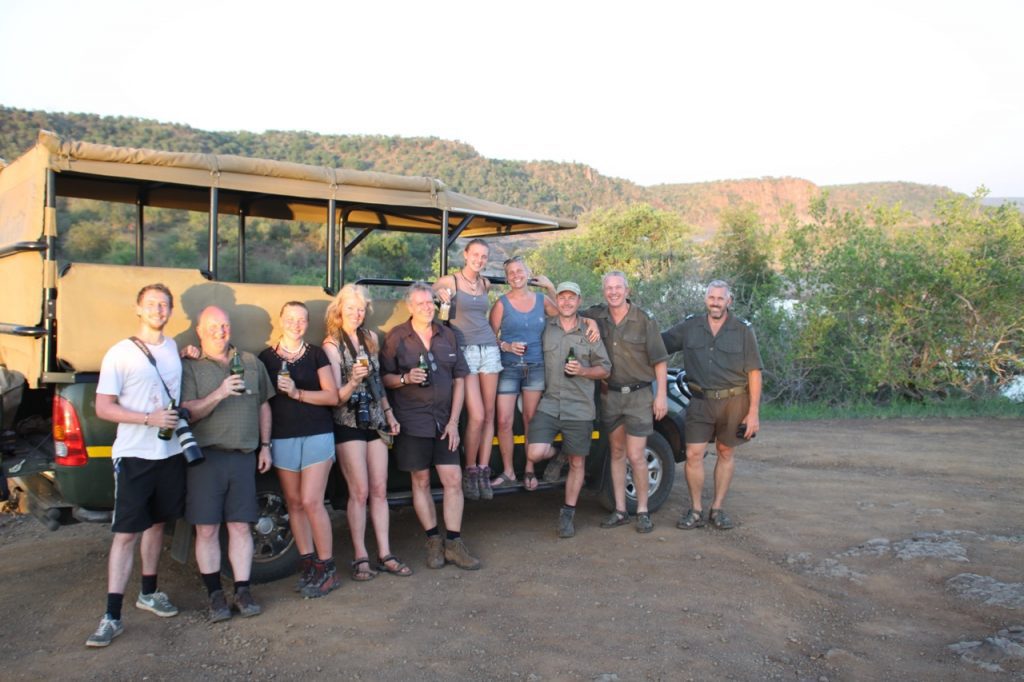
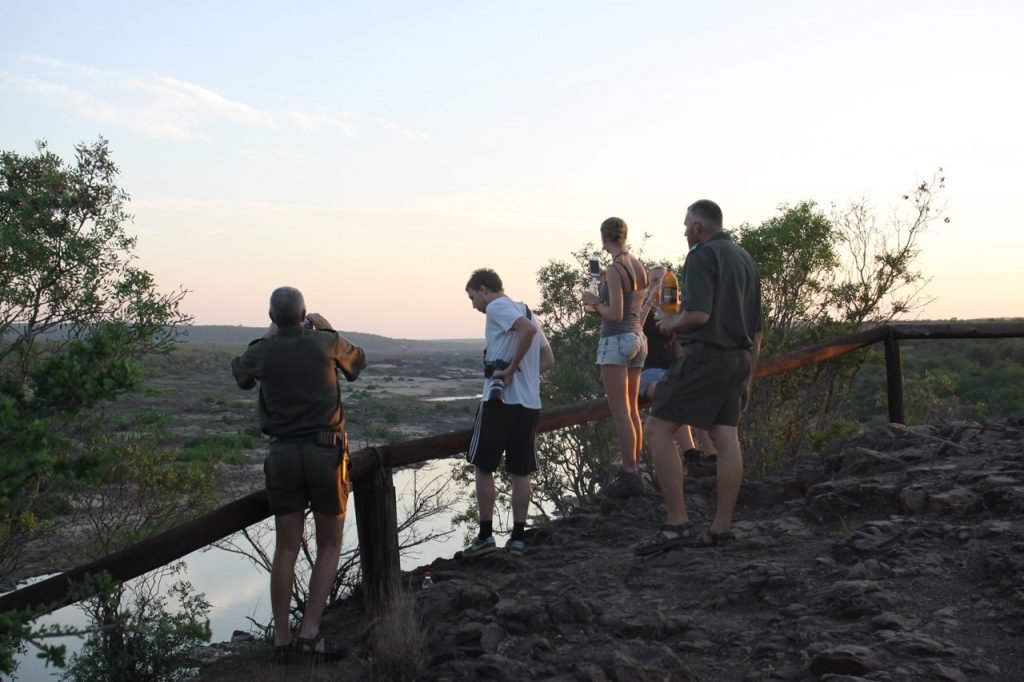
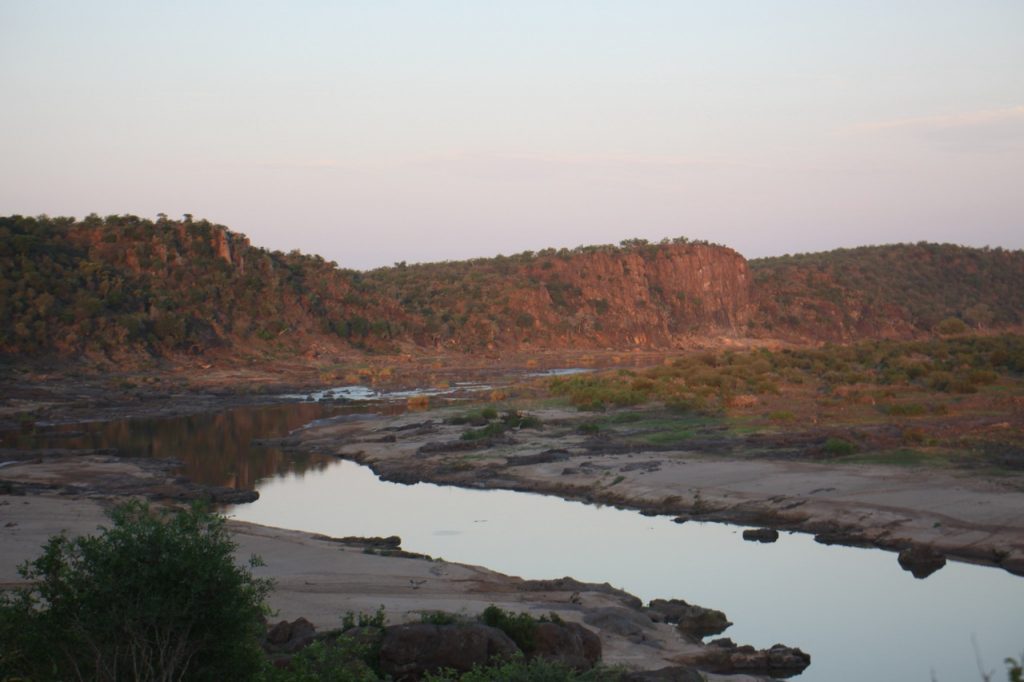
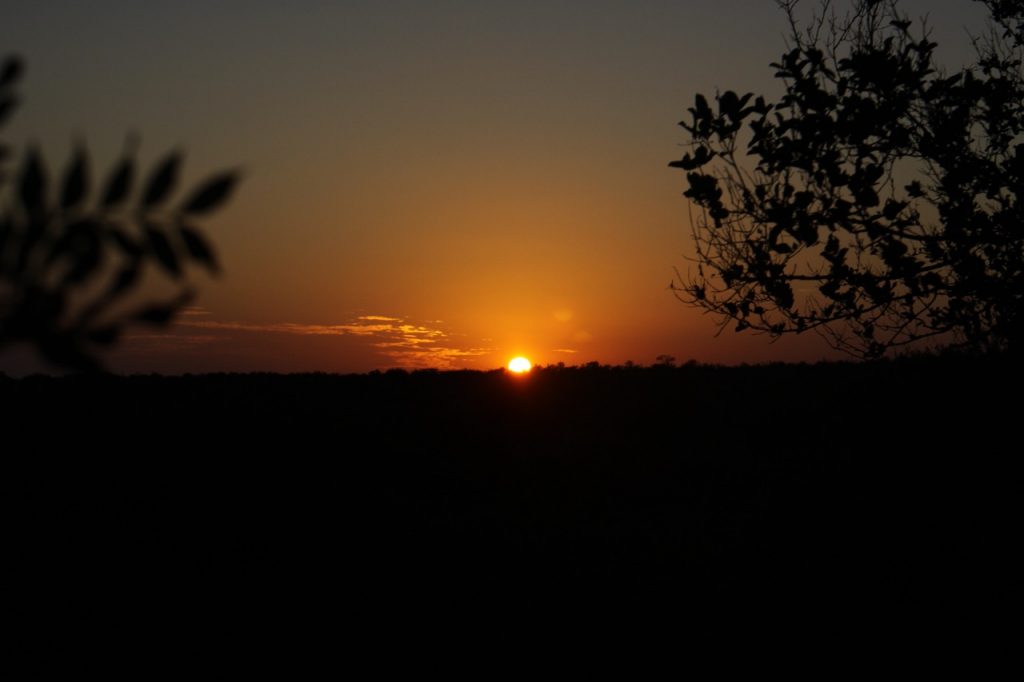
On the way back there was a stark reminder of the drought. Poor hippo.
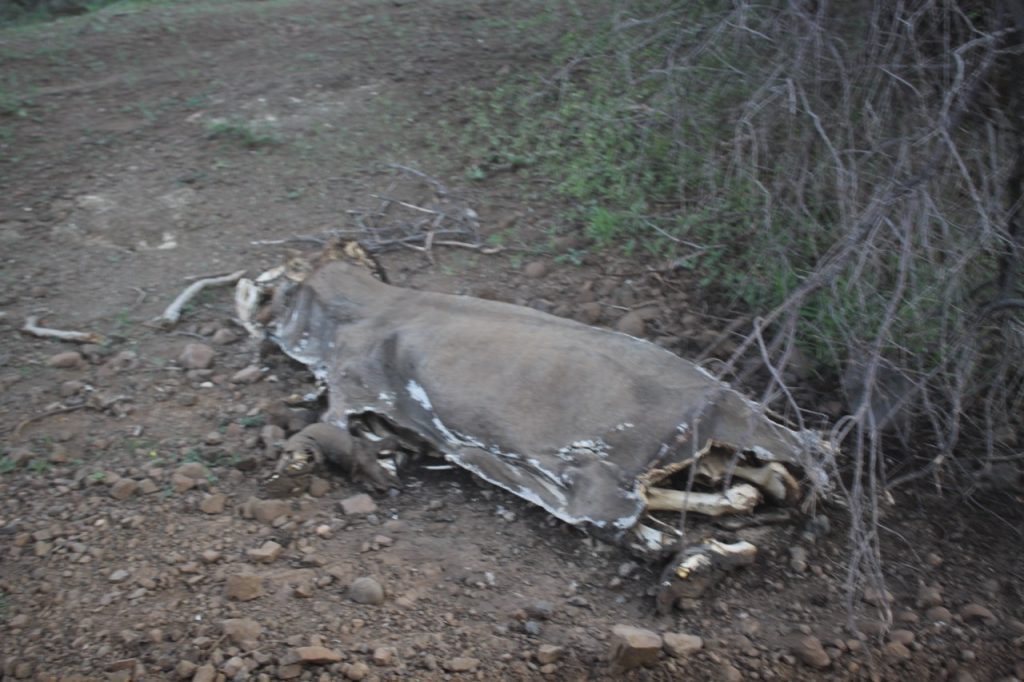
Klipspringers are always a favourite sighting.
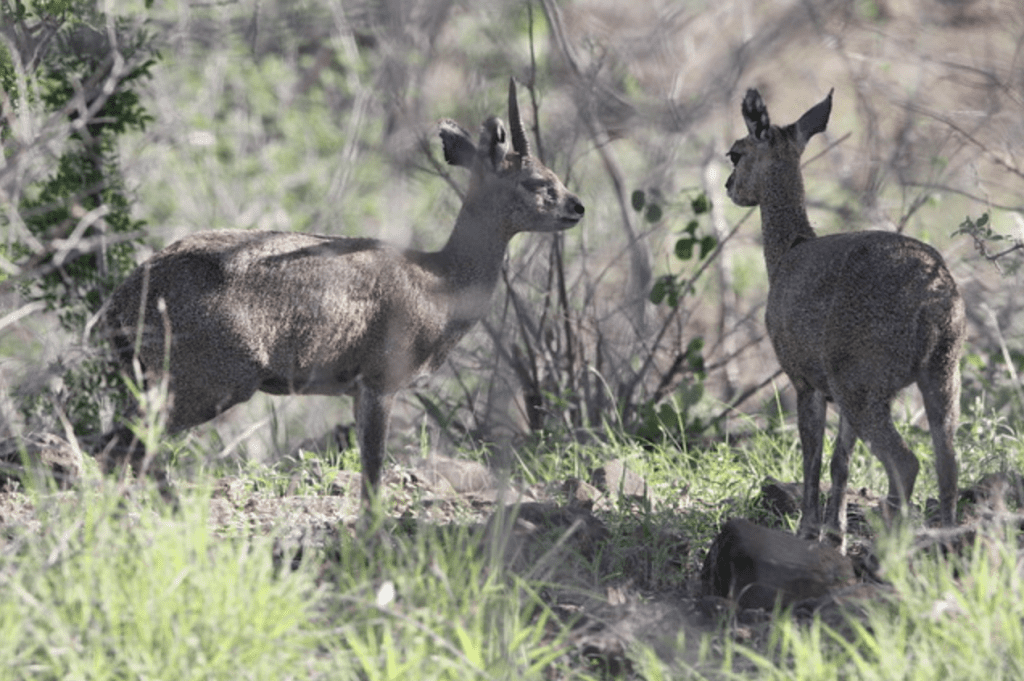
I spotted 3 monkeys in the back of the car!
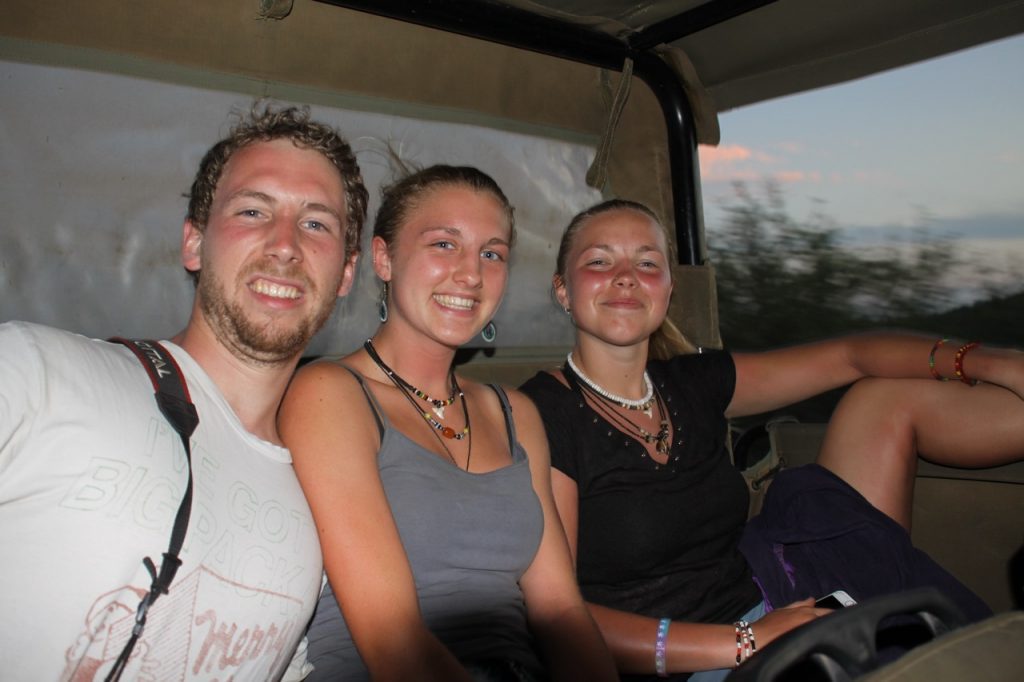
After another delicious braai and few glasses of full bodied red we lay on the floor and star gazed – the sky was alive with shooting stars! We made a wish and enjoyed a good night’s sleep!
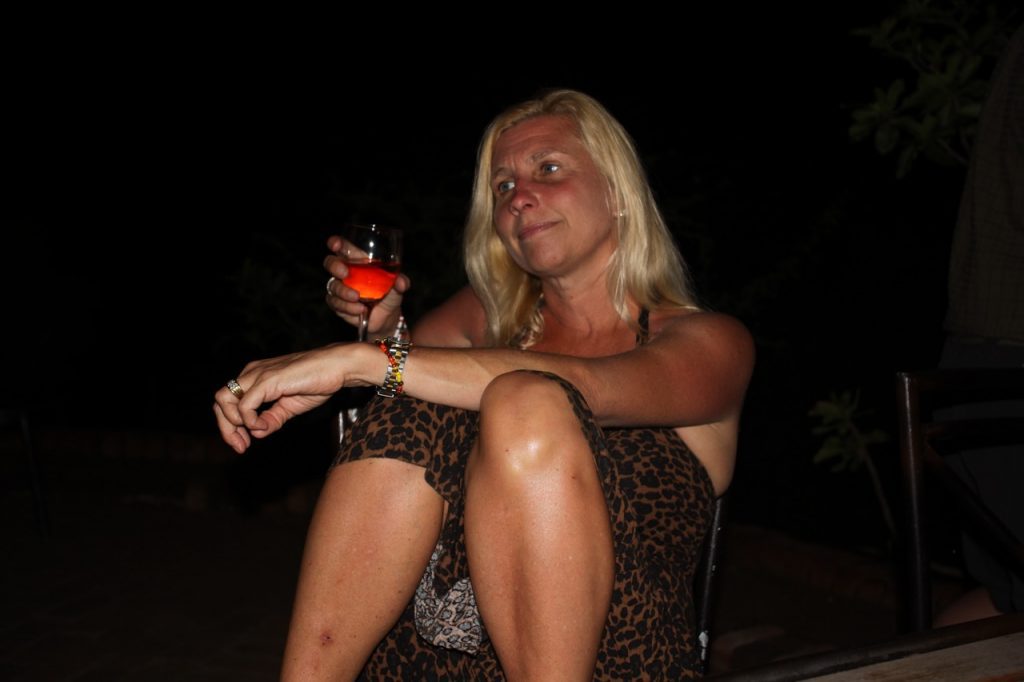
DAY 7 KNP: Wednesday 6 April 2016
We woke really early again to capitalise on the sunrise for our last morning at Olifants – this is definitely one of our favourite parts of Kruger now. The sunrise did not disappoint! Stunning.
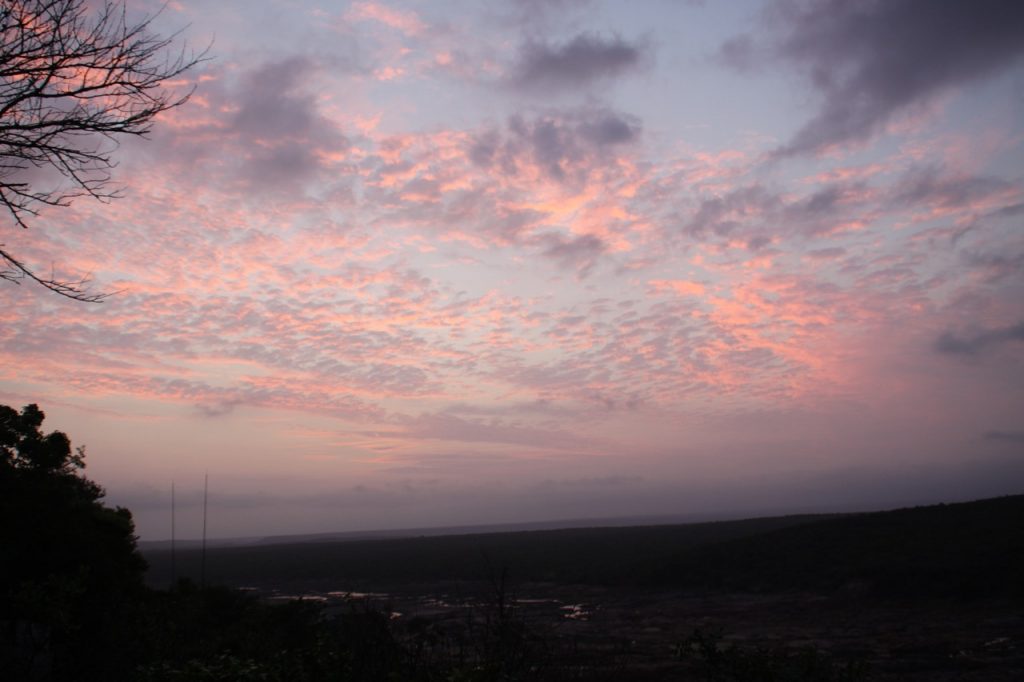
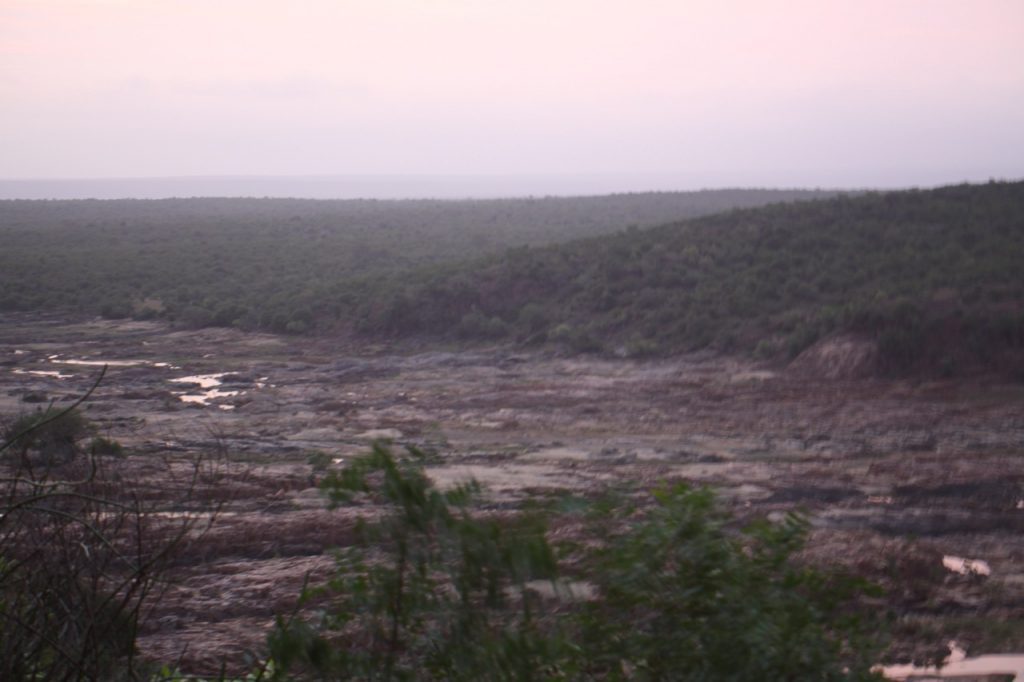
These hyenas were ready to bid farewell to us as we left the gates – lovely surprise and great start to the day!
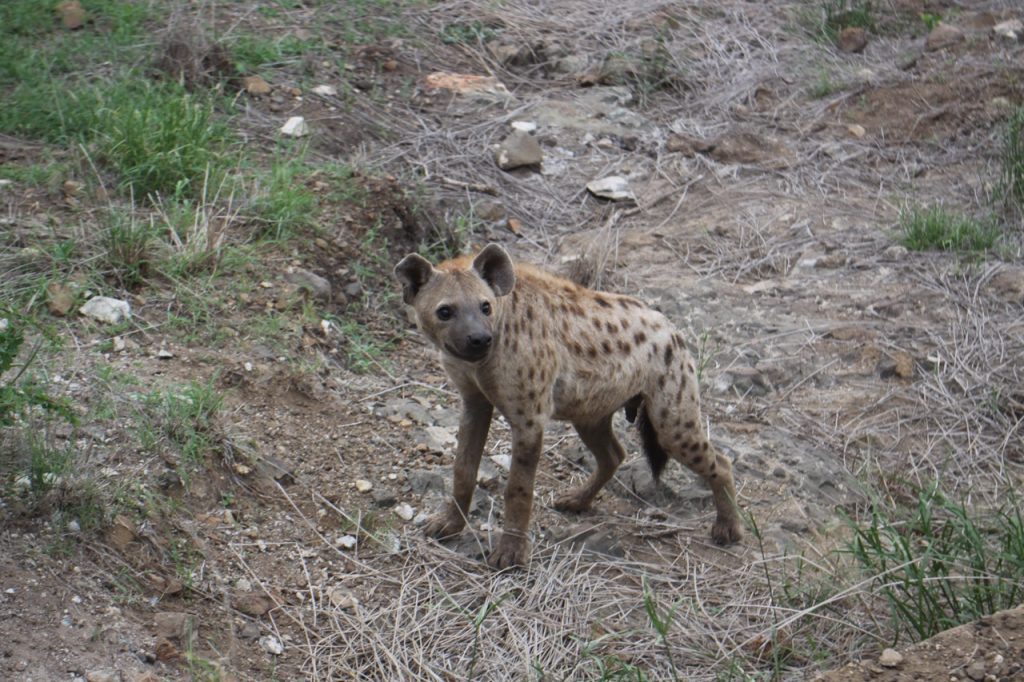
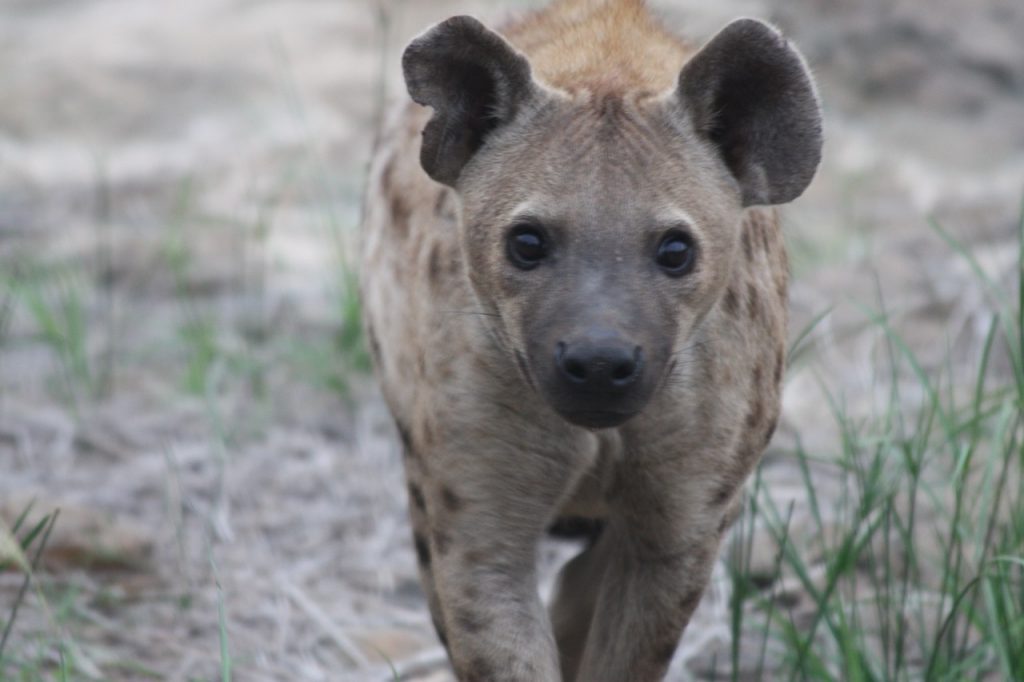
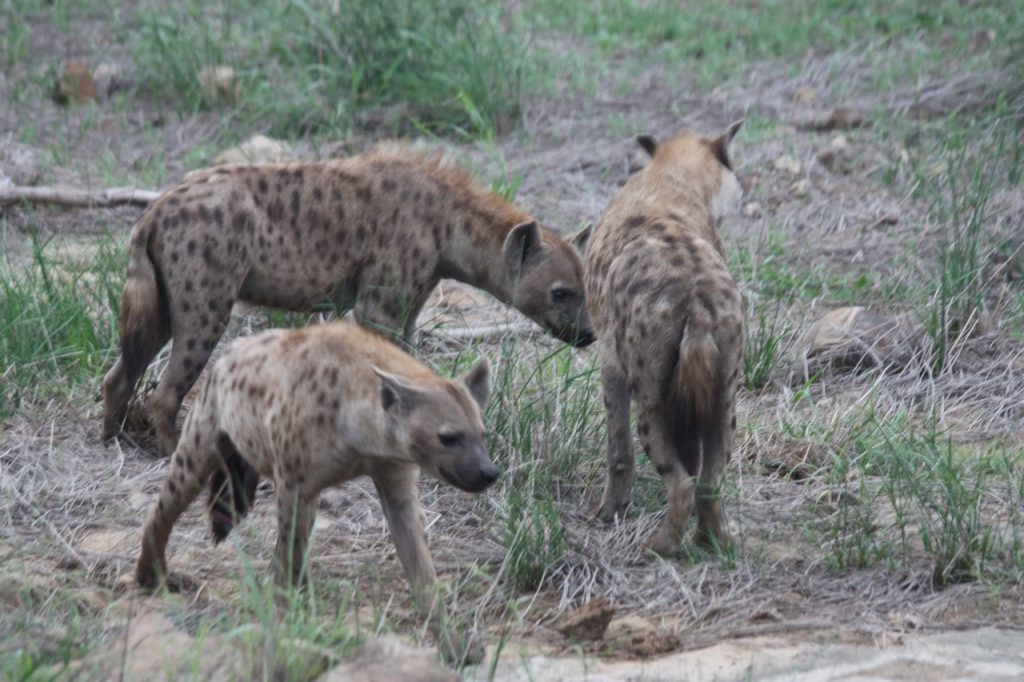
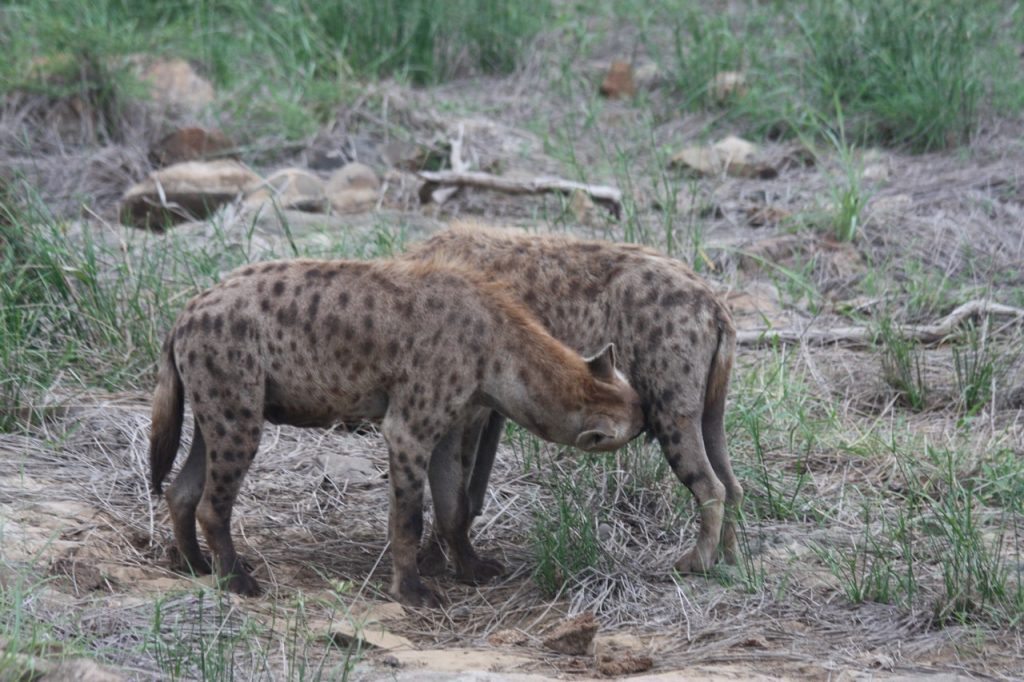
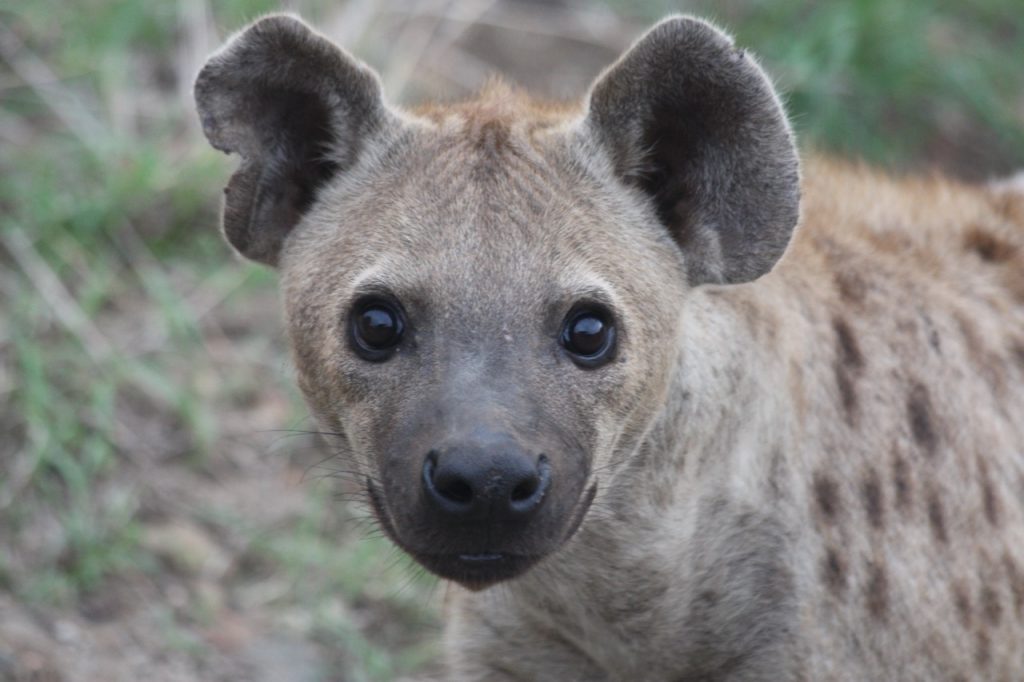
We drove on the S90 heading to Satara where we would stop for brunch. It was very cold on the open safari vehicle!
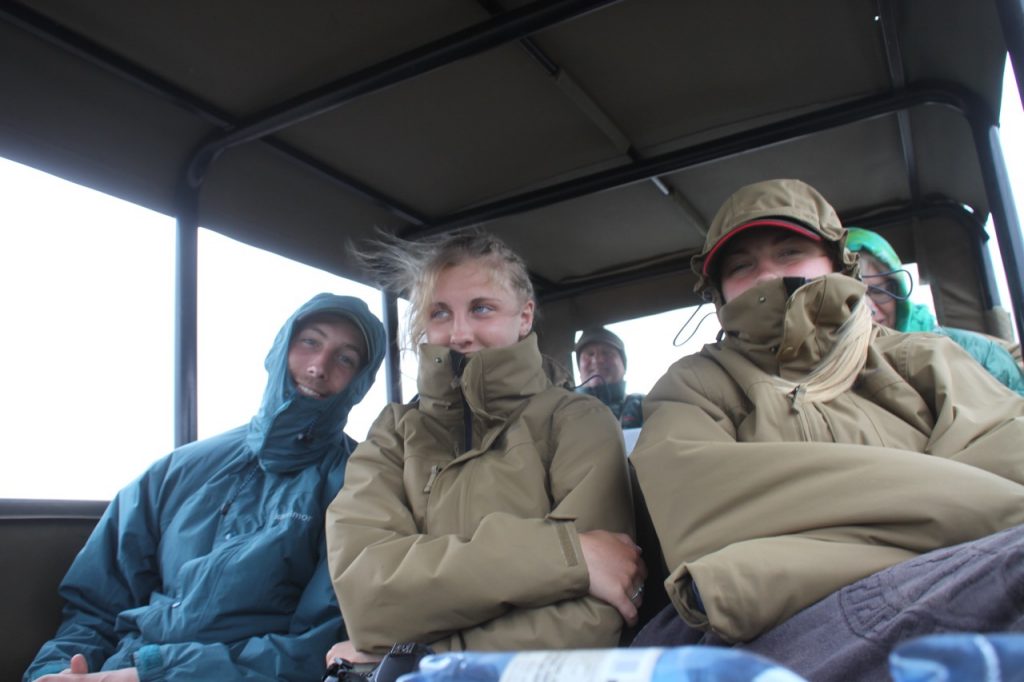
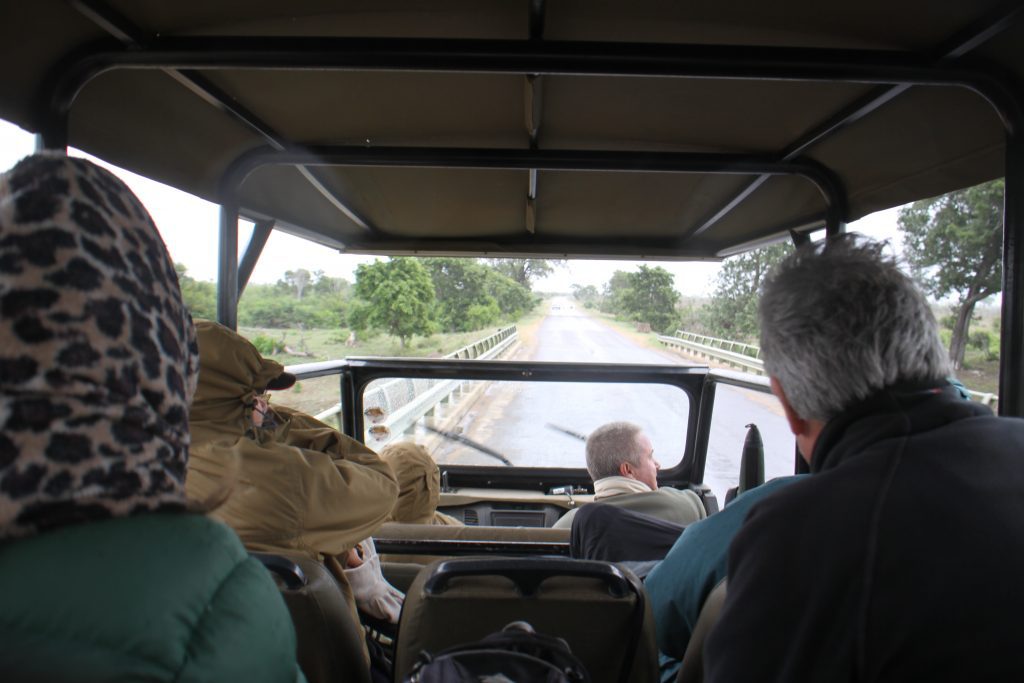
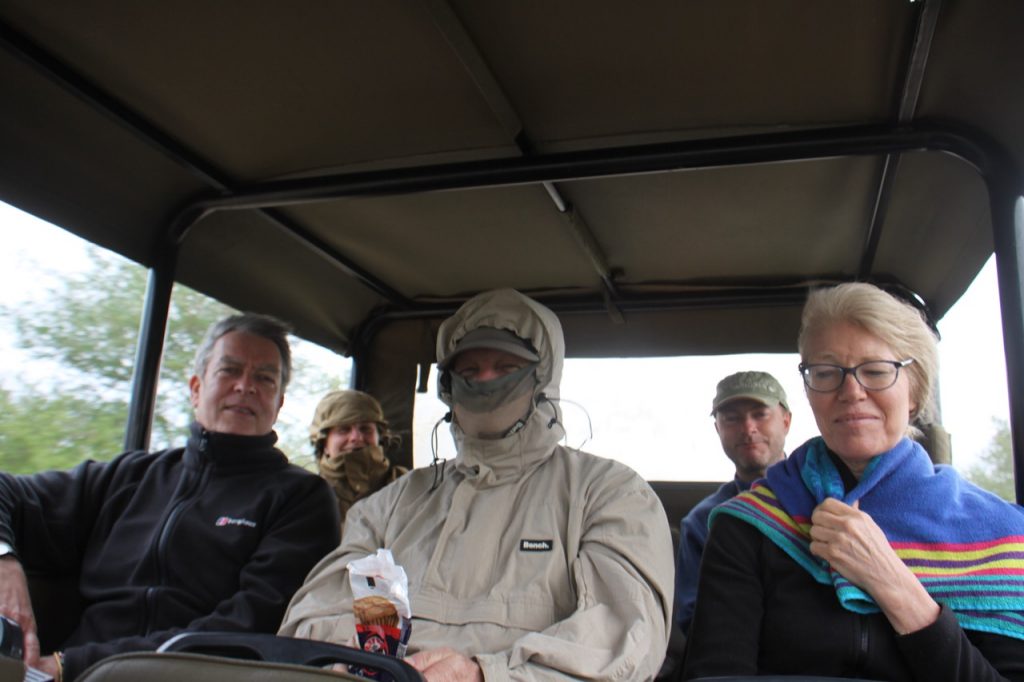
Even the giraffes and wildebeest looked cold!
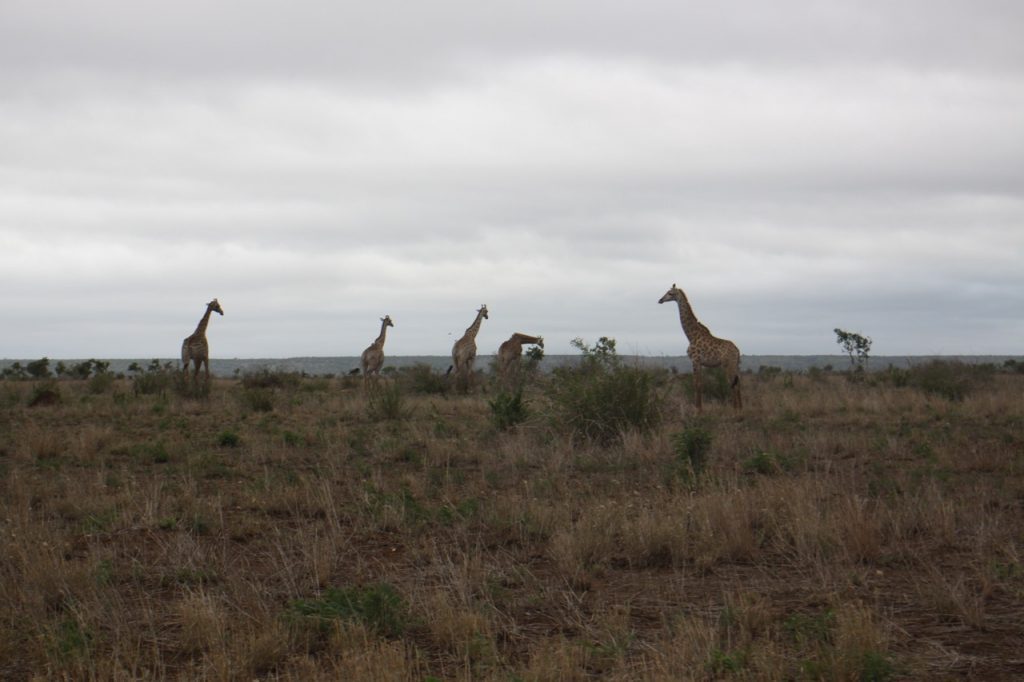
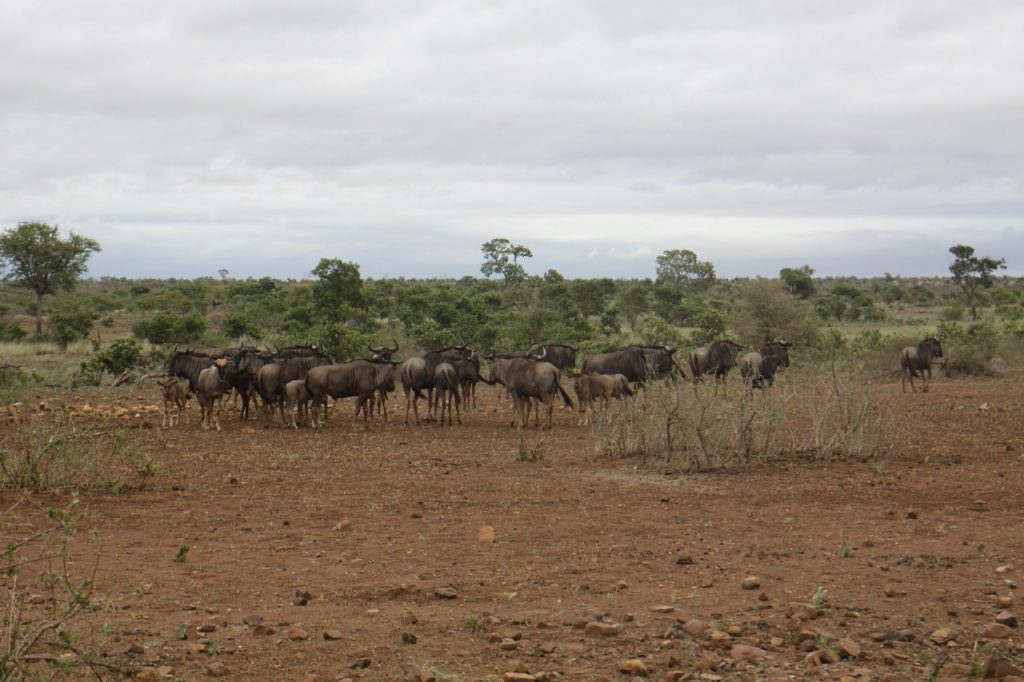
Jaco said that there was a big dominant pride of lions that covered a wide area here known as the S100 mega pride – this made us all sit up from our gentle slumbers! We could see further evidence of the drought…
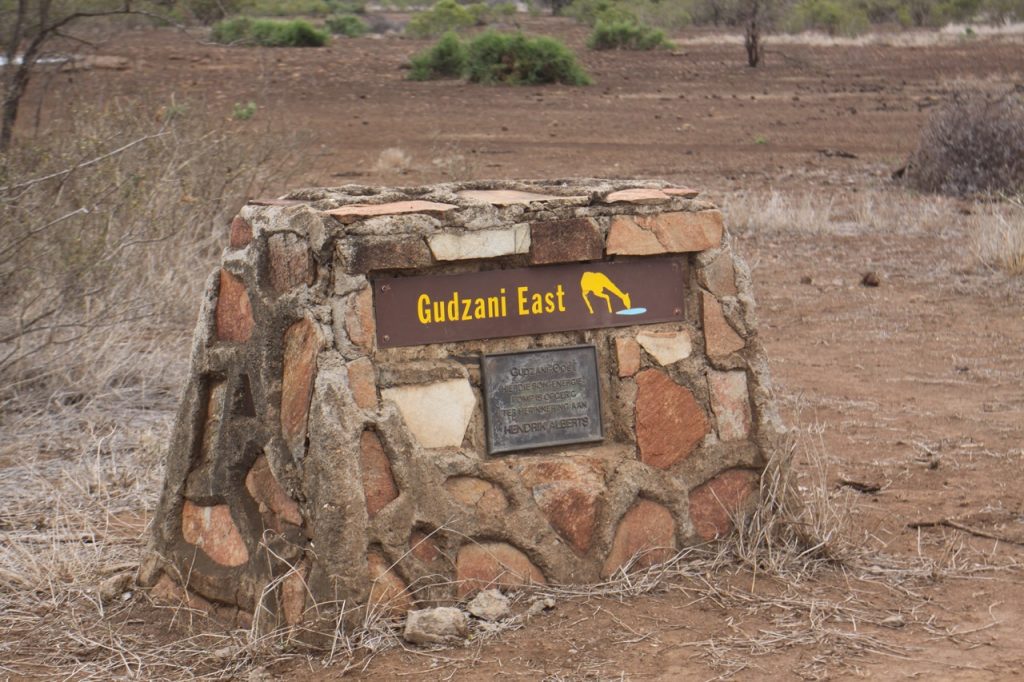
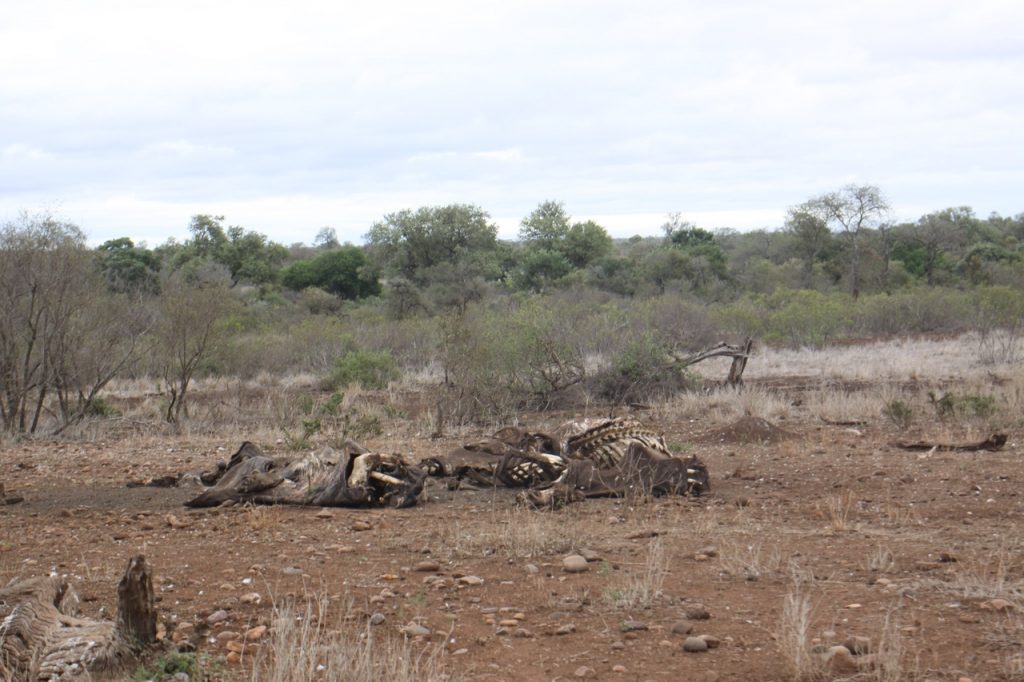
Despite the cold, we had some lovely sightings along the way.
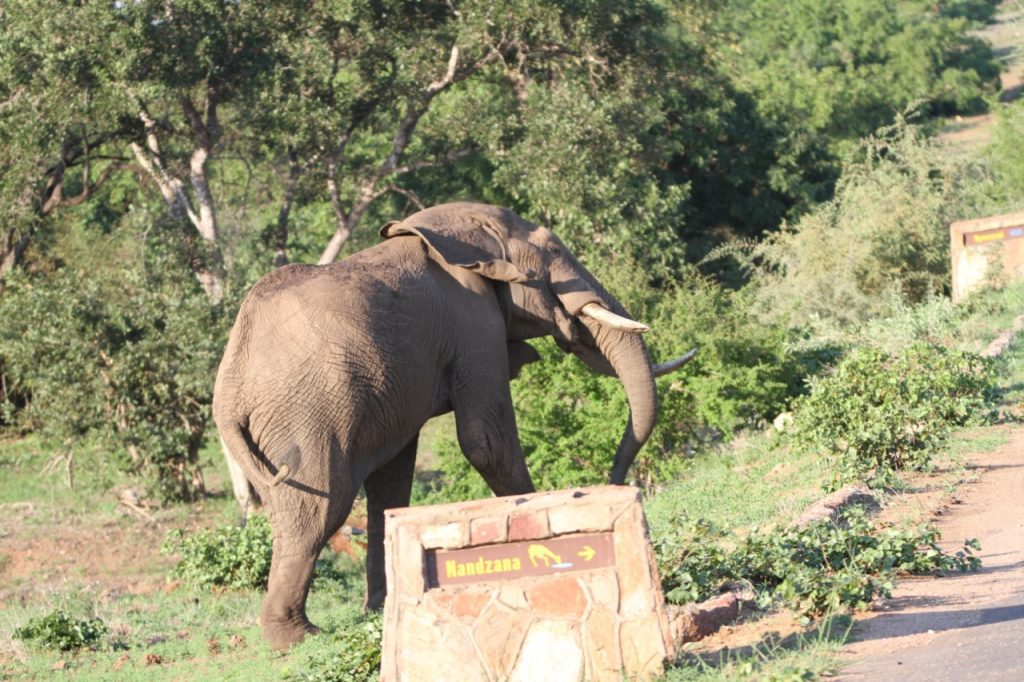
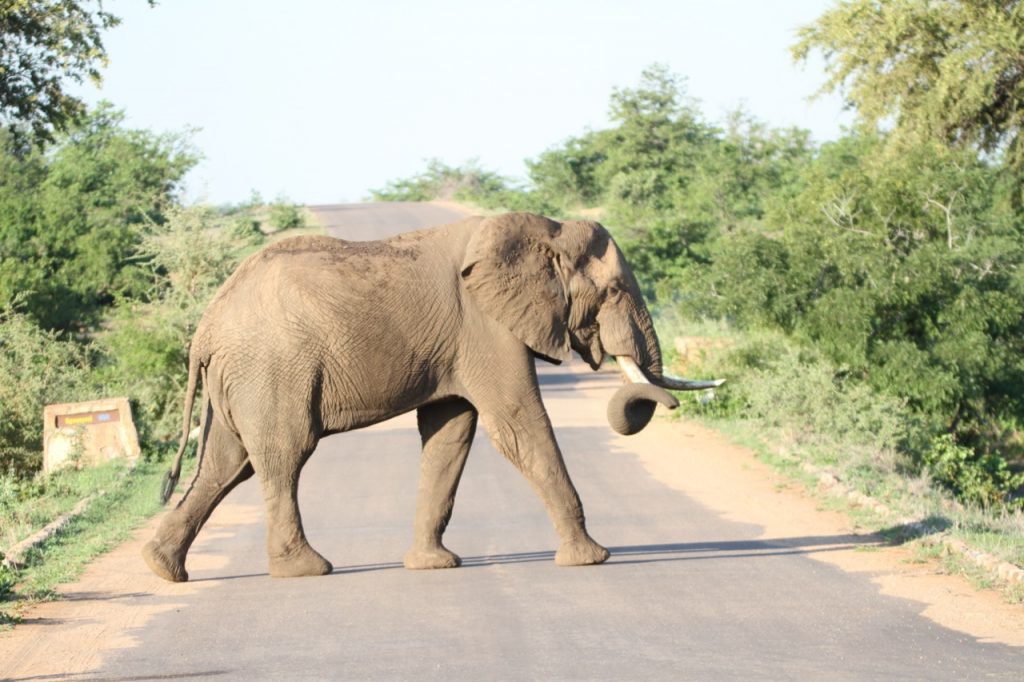
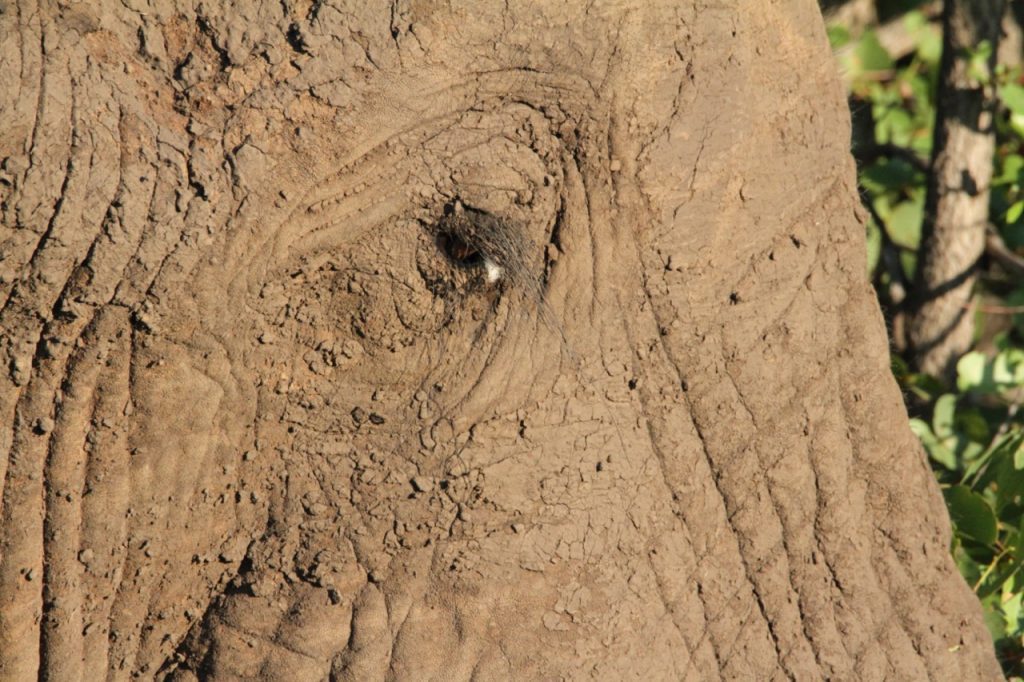
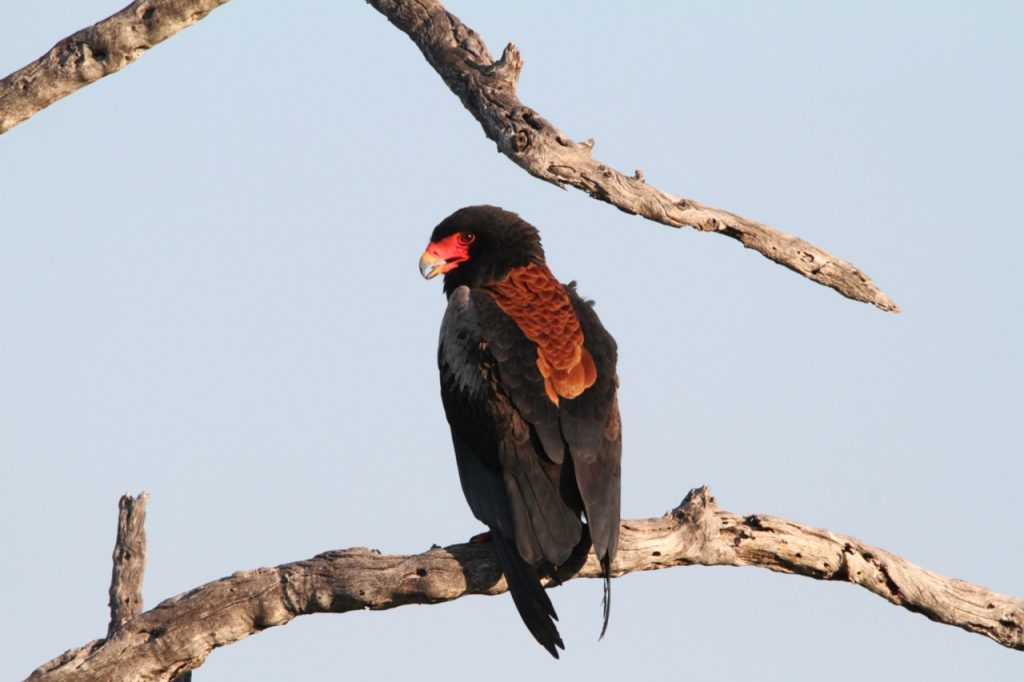
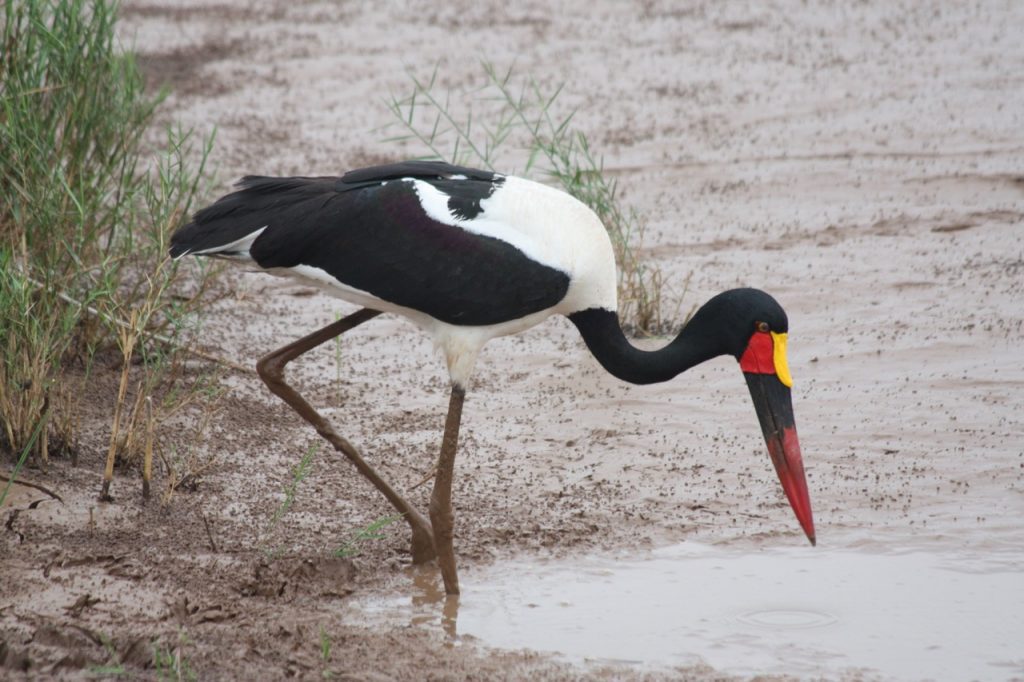
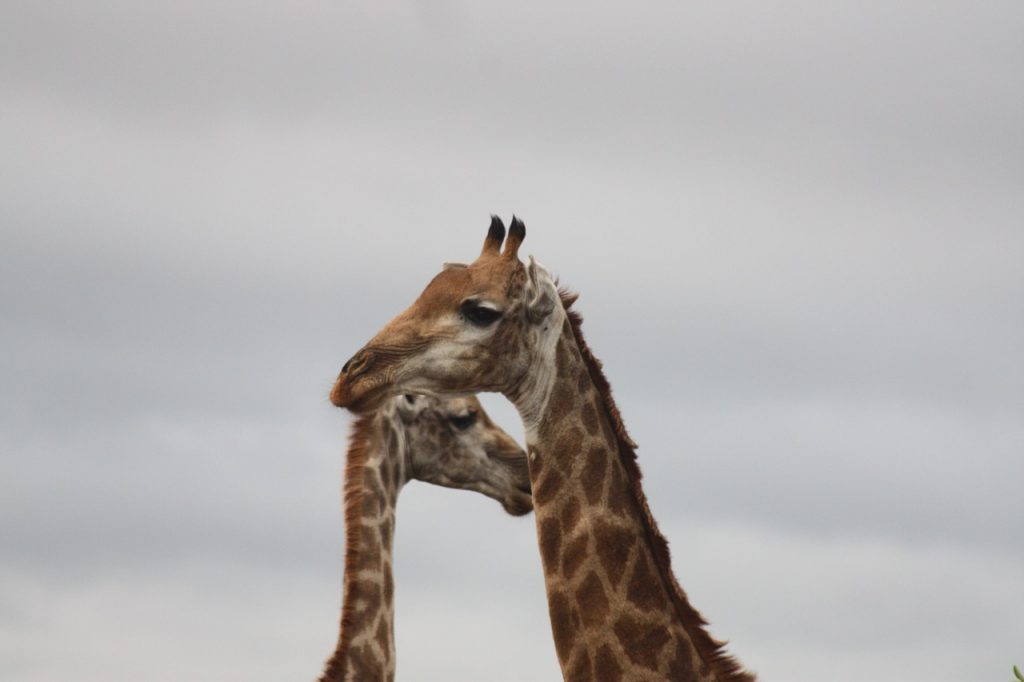
The road was long and we all started to doze again….
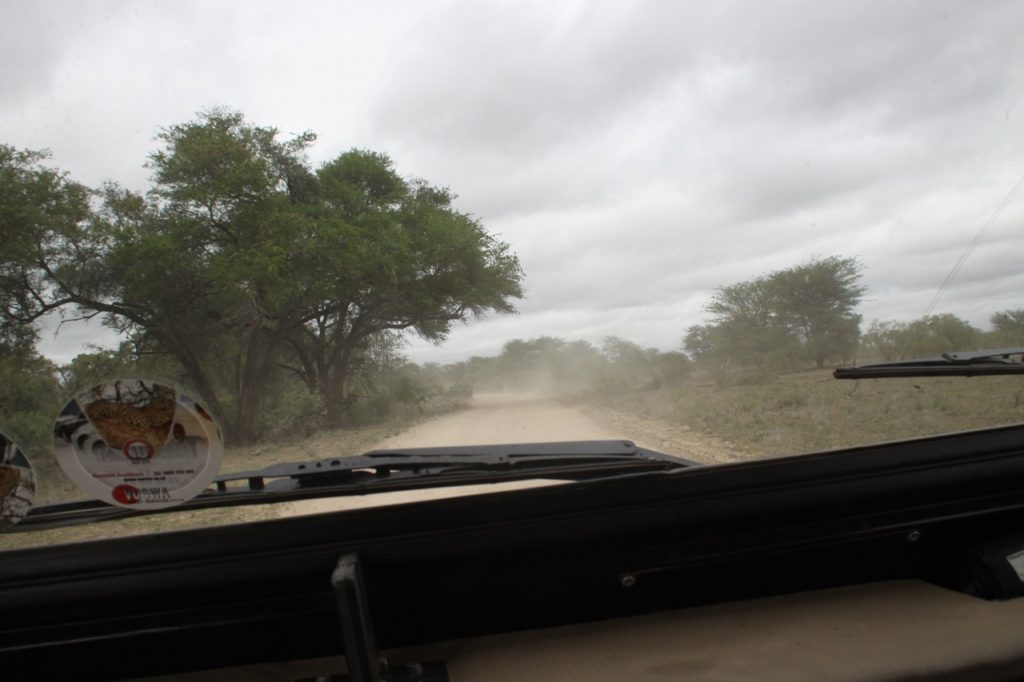
Only to be woken by an excited Jaco – we had located 2 of the Gudzani boys who were spray marking their territory! We stayed with them all to ourselves for about 30minutes – SO handsome! One had a blonder mane… what a stunning sighting.
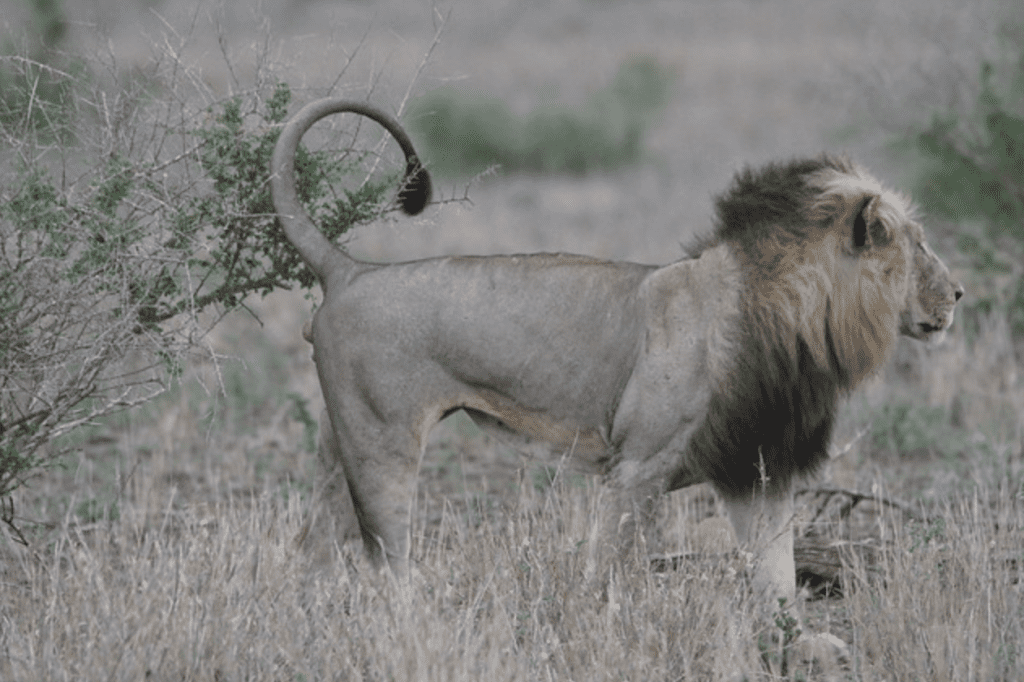
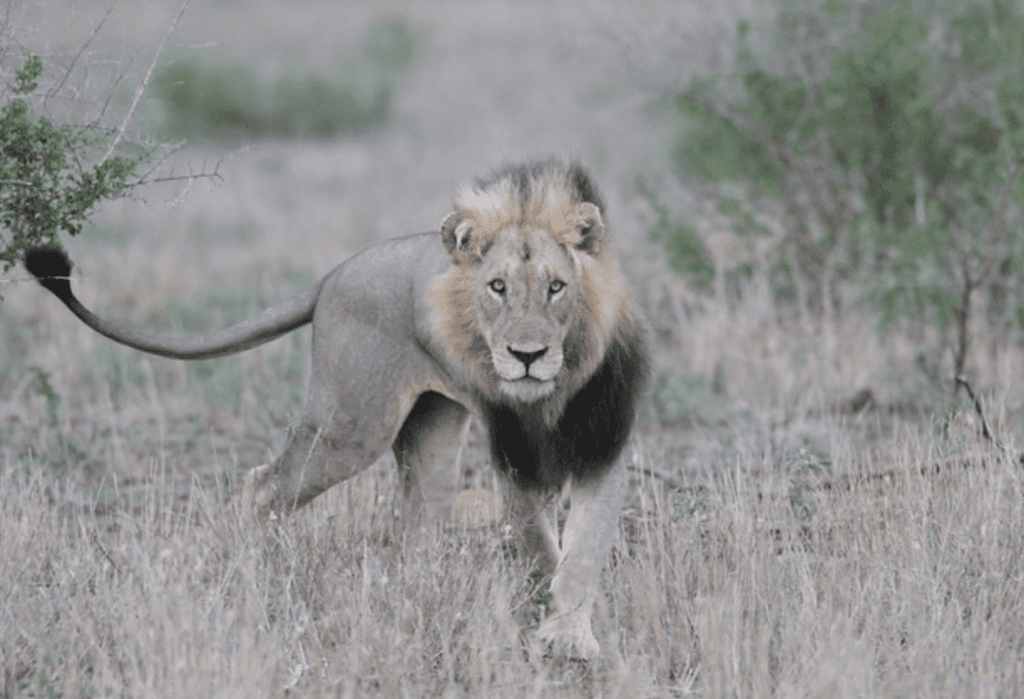
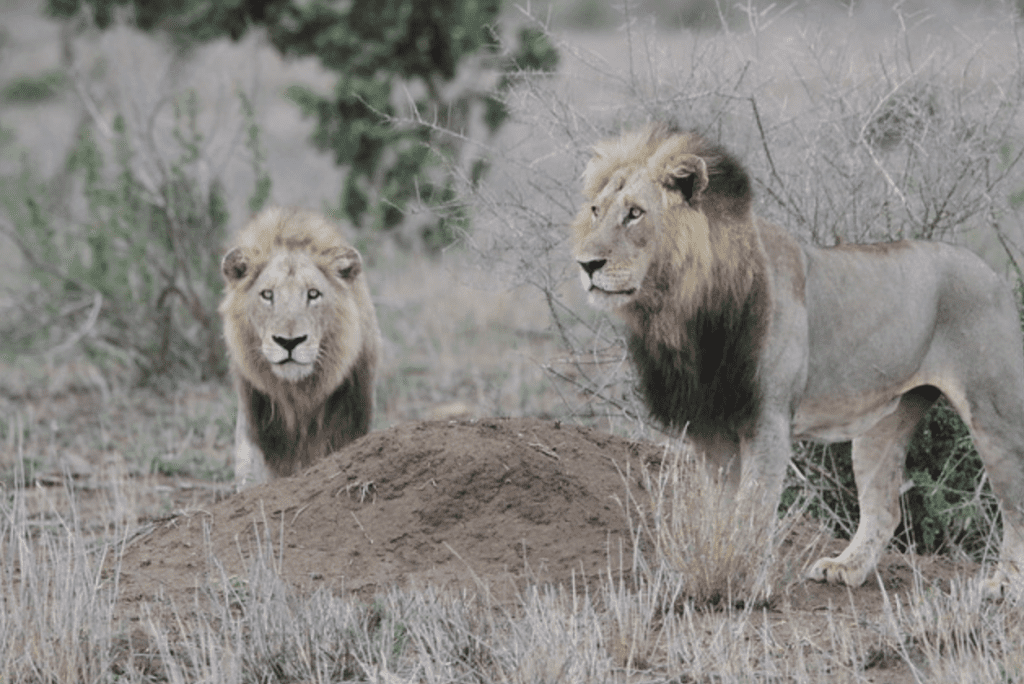
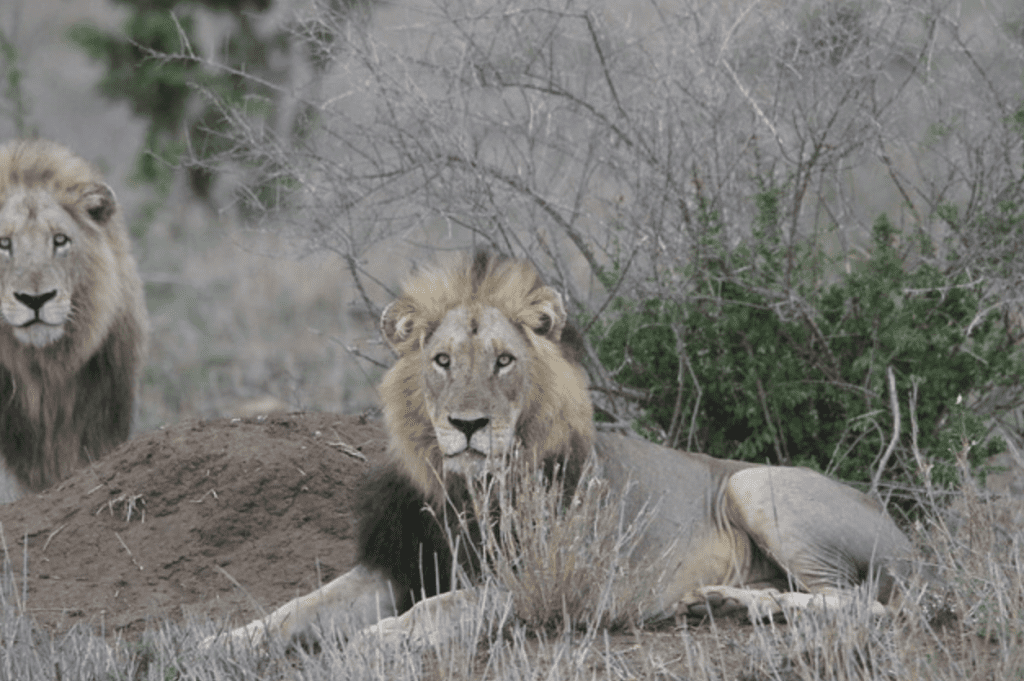
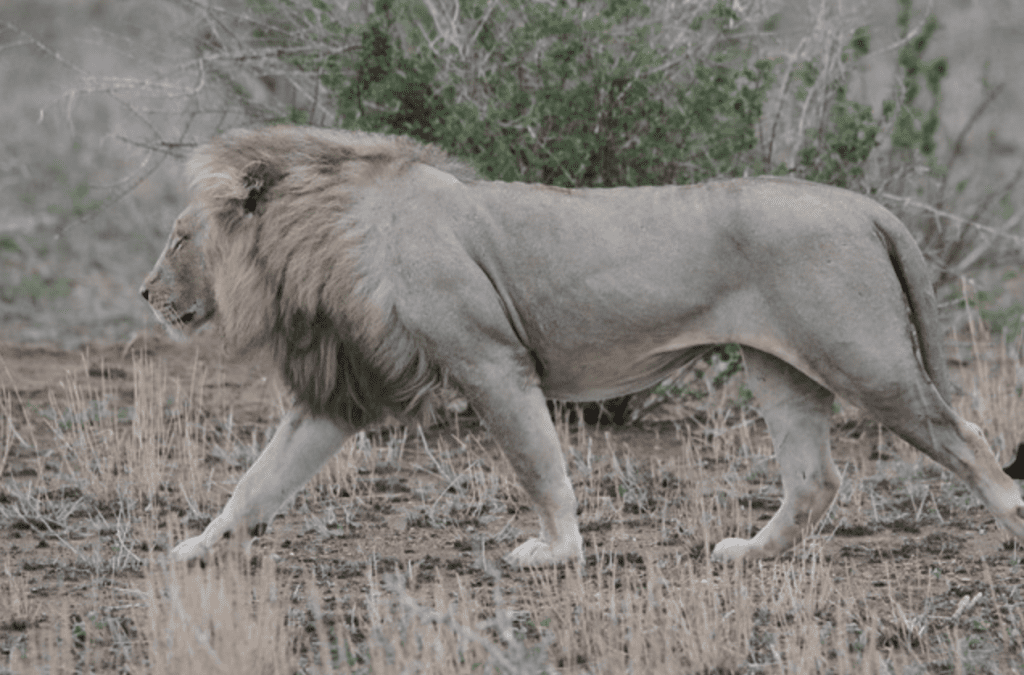
After this exhilarating sighting we stopped off at Satara for another delicious toasted chicken and mayonnaise and honey and horlicks milkshake – we are addicted! We stopped for a scenic vista at Nkumbe but sadly it was a bit misty – but you can get the gist of the feeling of wide open space…
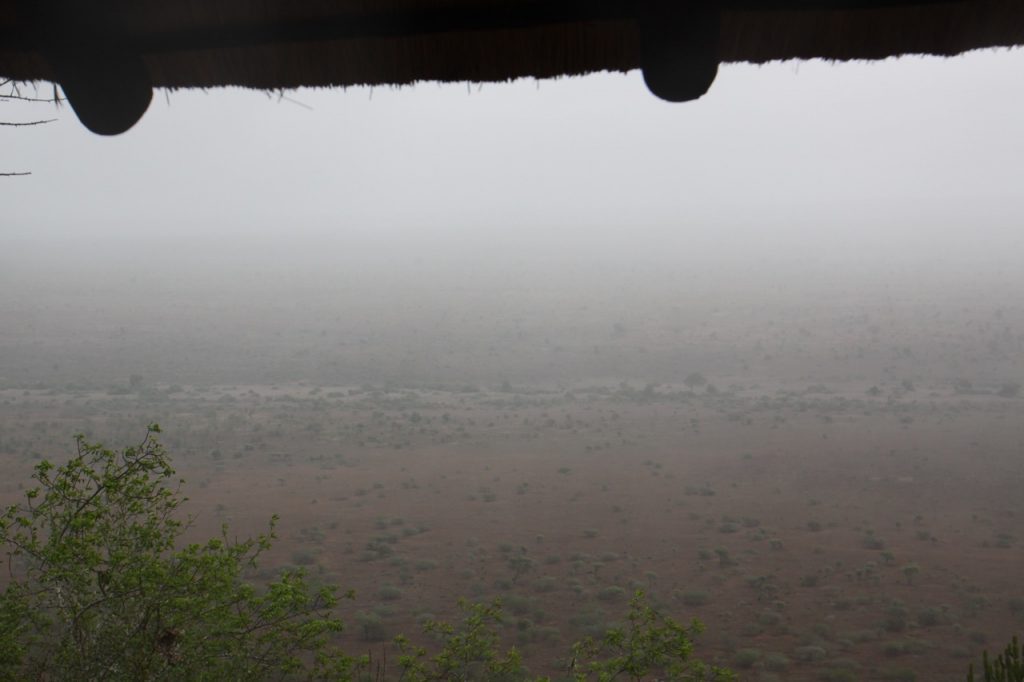
We decided to take the S128 to Lower Sabie. A kind couple waved us down and said that they had spotted a leopard a little further down the road!!! Yippee!! First leopard of the KNP trip – we were so excited! A buffalo photo bombed one of the pictures!
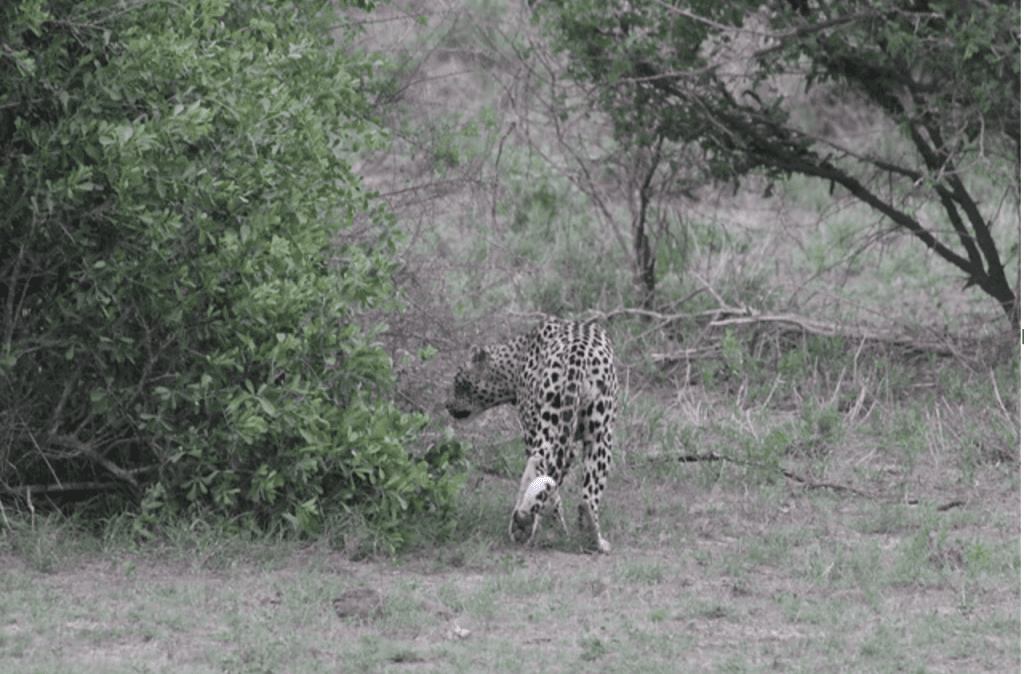
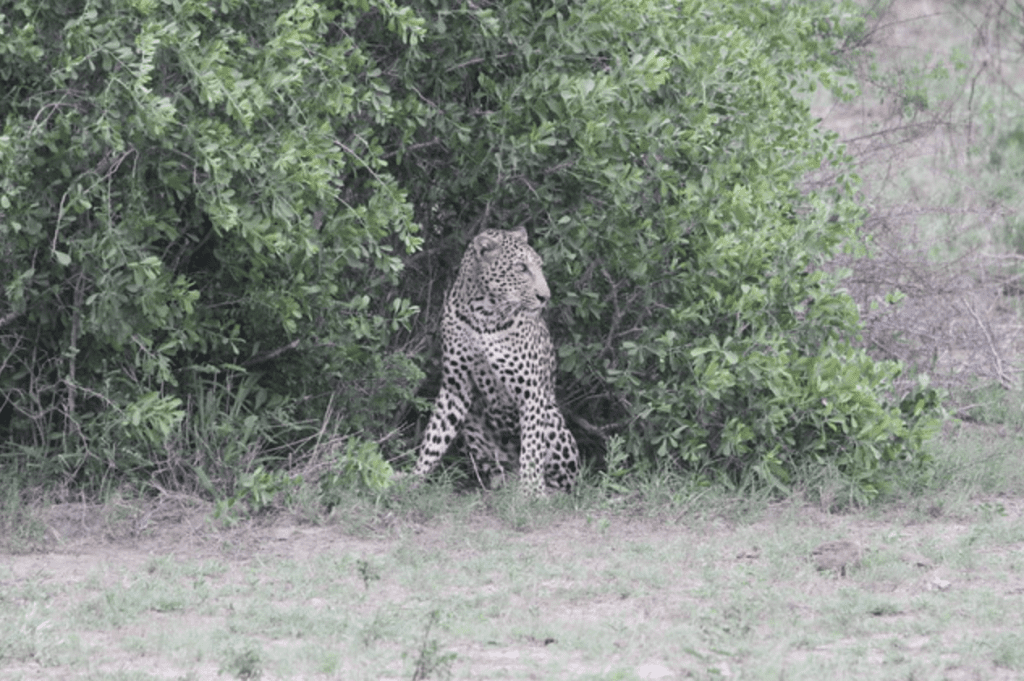
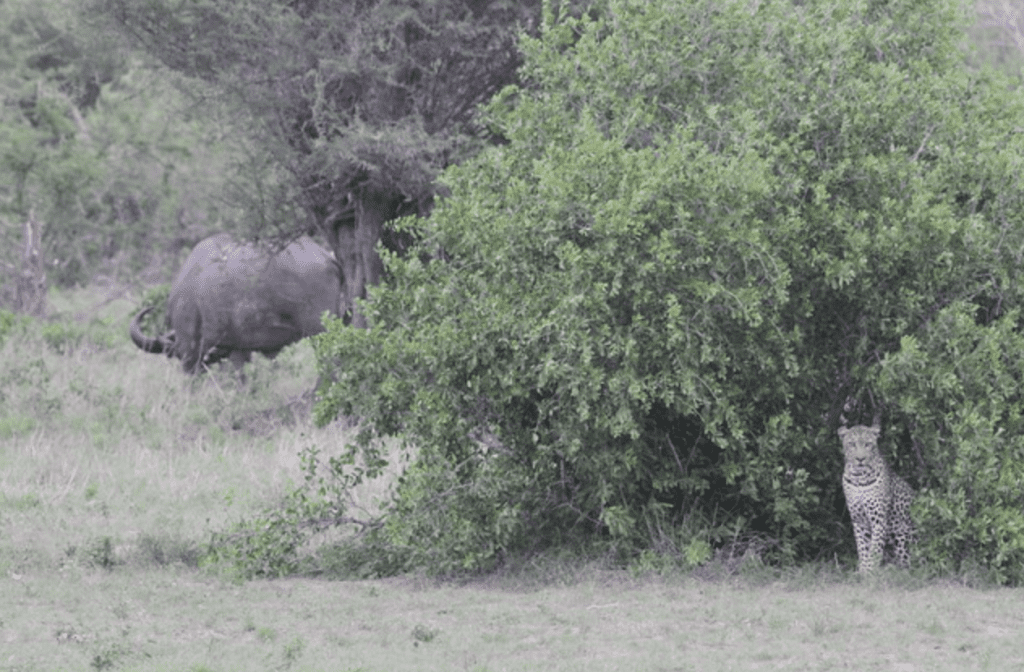
We had the leopard to ourselves for a few minutes and he was sniffing around but then car after car after car arrived and he sat down and then slunk off…but we were very happy to move on too as we had enjoyed time with the spotted one … Not even 5 minutes later Caitlyn gasped, ‘lions! Lions! Cubs! Lots of them!’ Woohoo!! What a great afternoon this turned out to be! We had them to ourselves for about 5 minutes, by which time the cars from the leopard sighting started to arrive. Jaco was very concerned because he said these cubs were still very young and therefore vulnerable and that we should give them the space to move them to their next area of safety – all the vehicles were blocking their exit points and it was apparent that they wanted to cross over the road…so we reluctantly left them and drove south…sad to say, one could start to see the difference between the North and the South of the Park at this point – sheer volume of cars and sadly less manners from some of the tourist drivers just trying to push in front of us and being very rude to Jaco – sad to see.
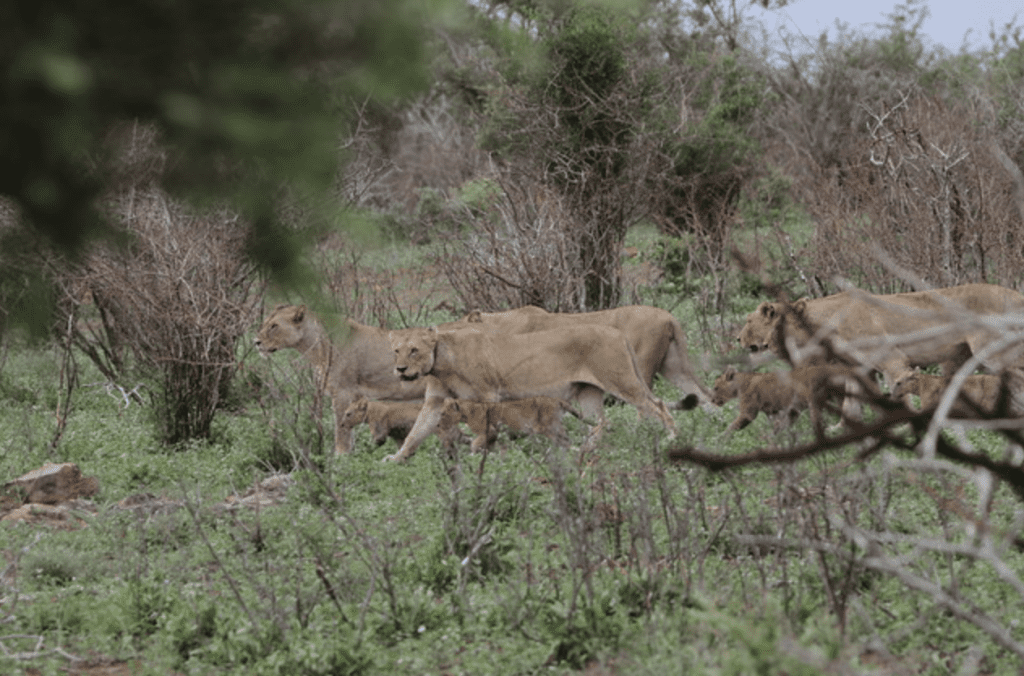
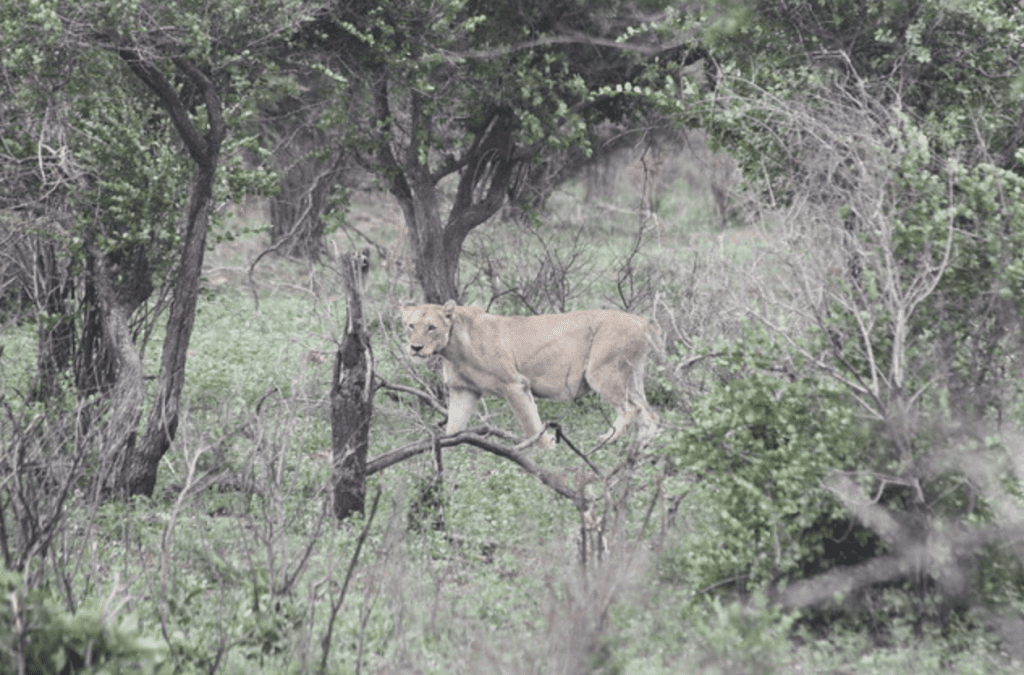
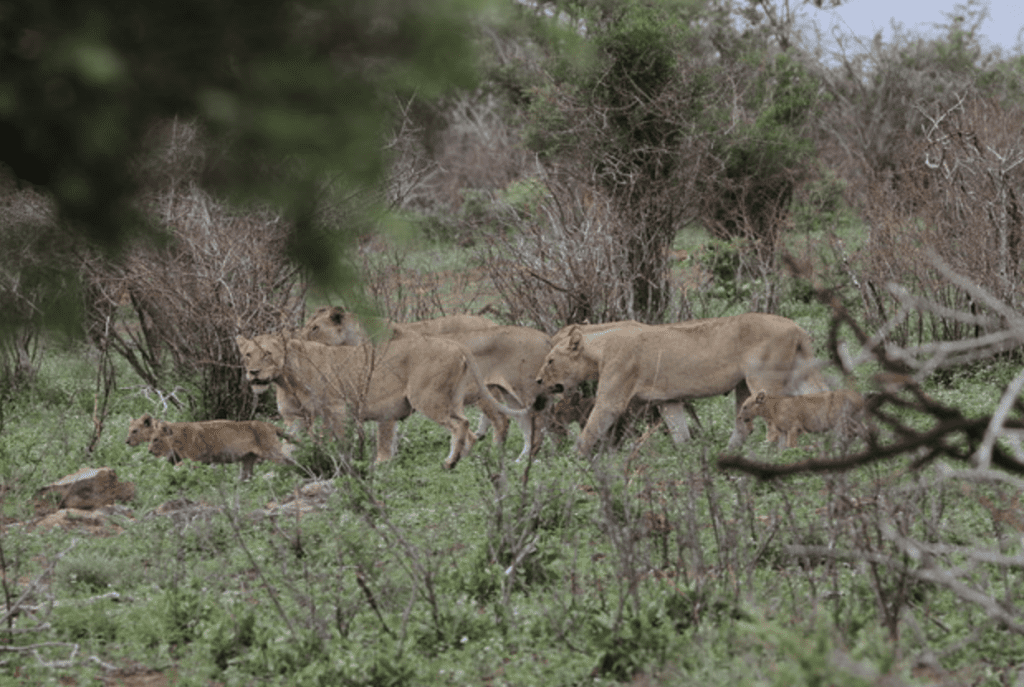
We could hear the distinctive booming call of the ground hornbill. They appeared quite agitated and we wondered whether it was the presence of the brown snake eagle (?) in the tree above? Maybe he had dropped his prey?! He also looked uncomfortable!
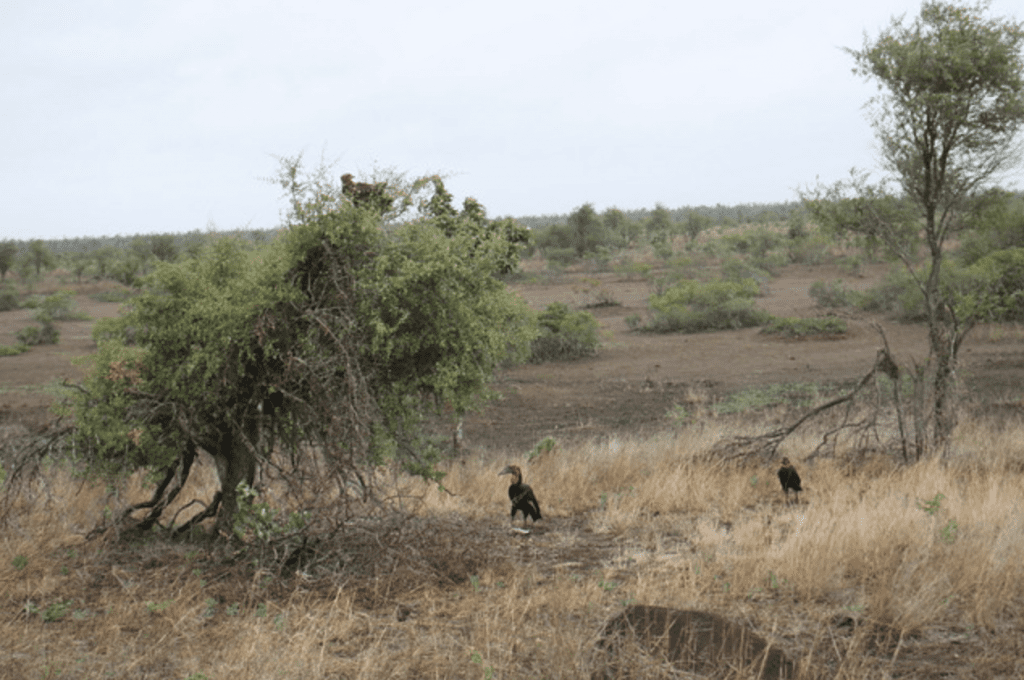
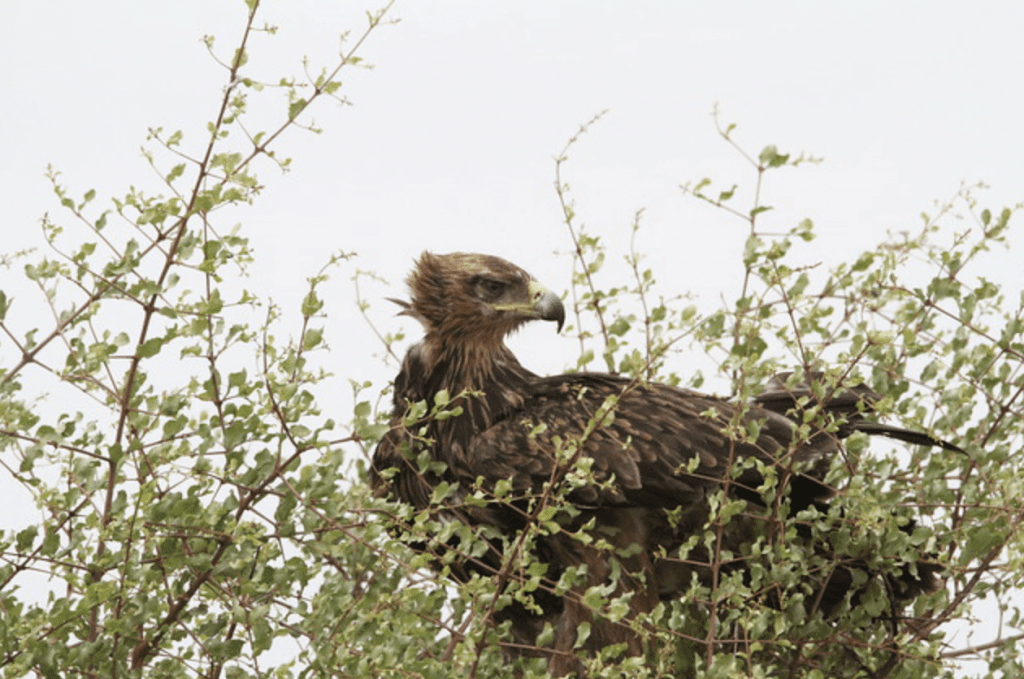
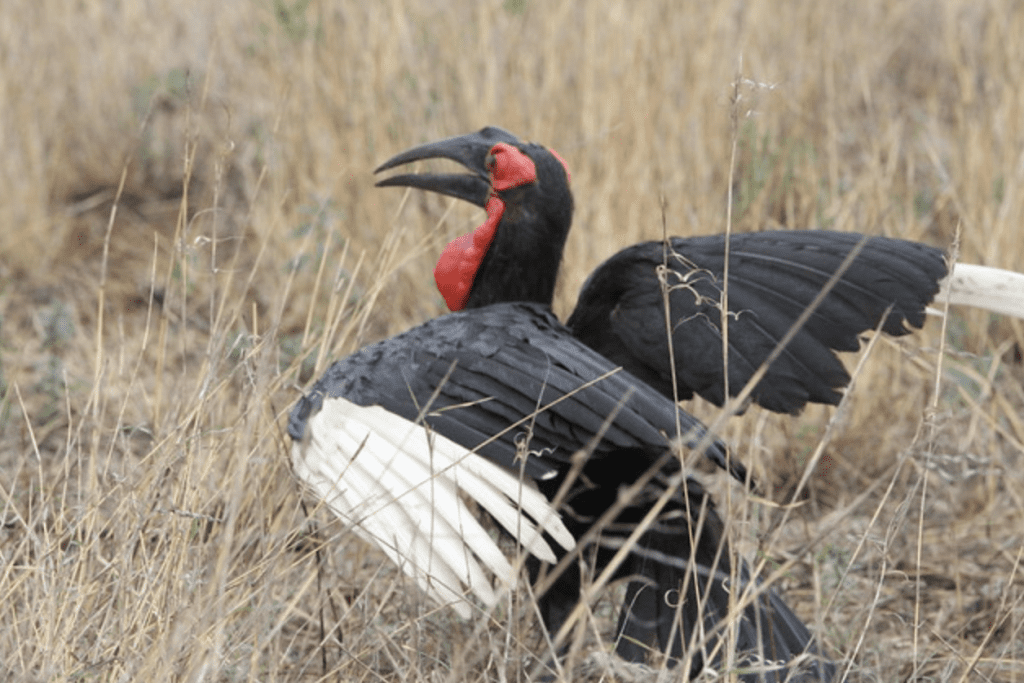
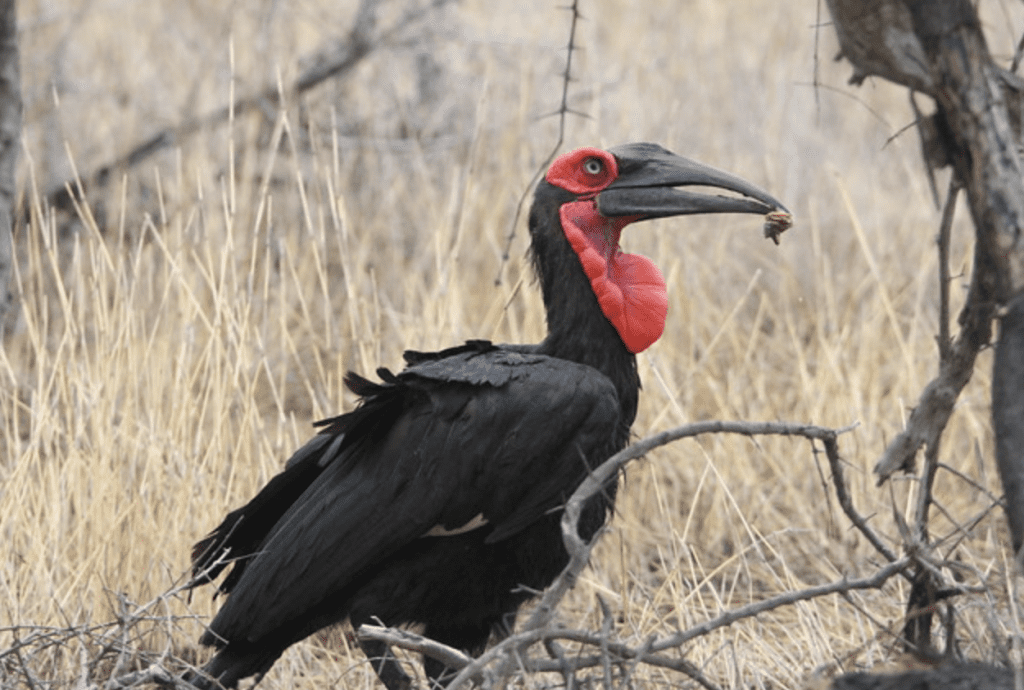
The next sighting had Jaco in a fit of excitement…can you recognise what it is? Apparently these animals have not been seen so far south in decades – This antelope’s natural habitat is wet grasslands. Unfortunately, this type of habitat has shrunk significantly, with a subsequent reduction in the number of Reedbuck. I would not have recognised them – it is the common reedbuck! Interestingly enough they are nocturnal – so we were very lucky to see them at all. Could today get any better? This is the Kruger National Park – so OF COURSE it gets better …. and better!!
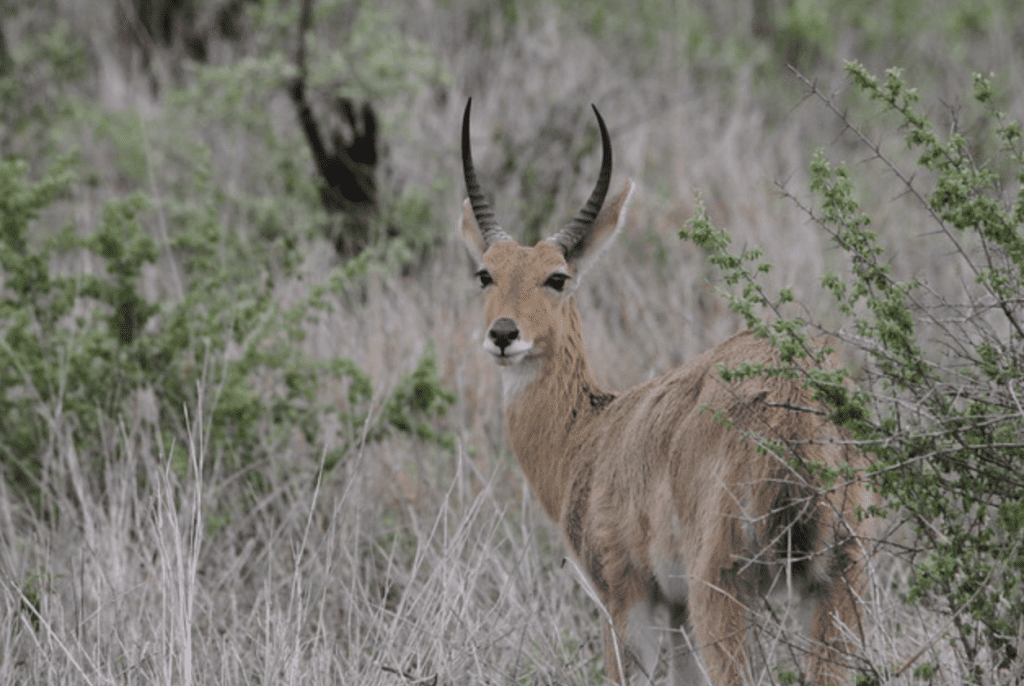
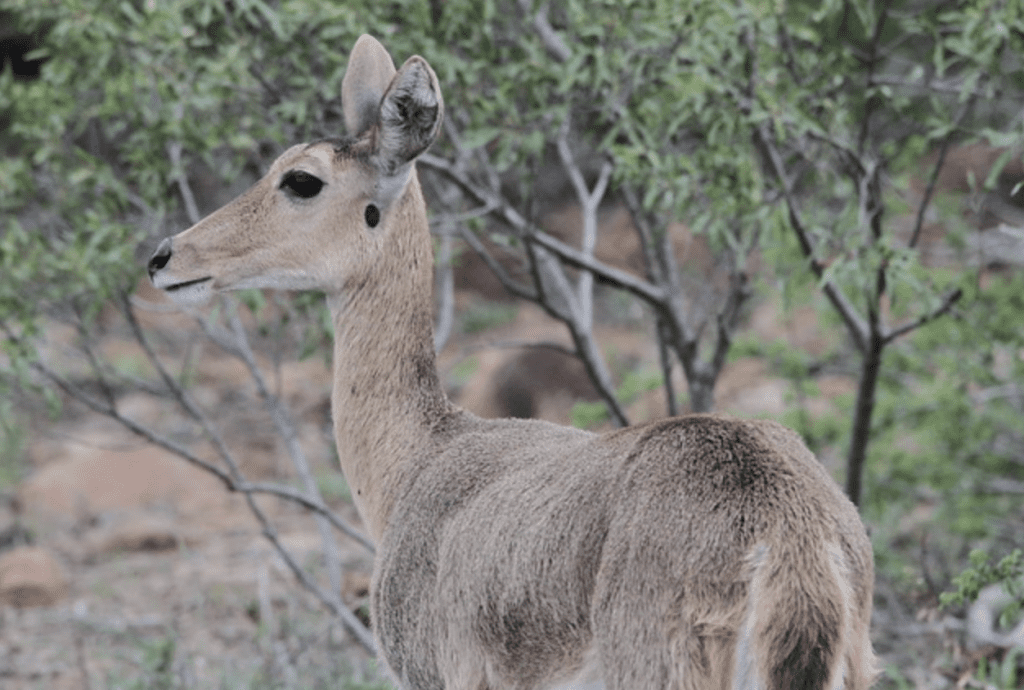
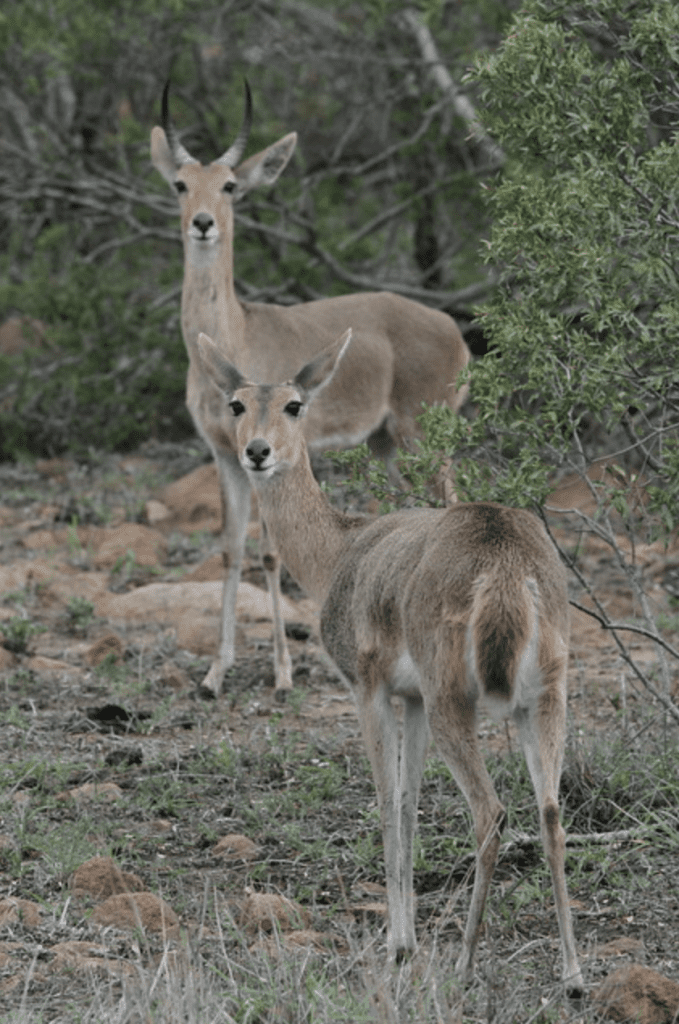
Then – yippee – some more hyenas!
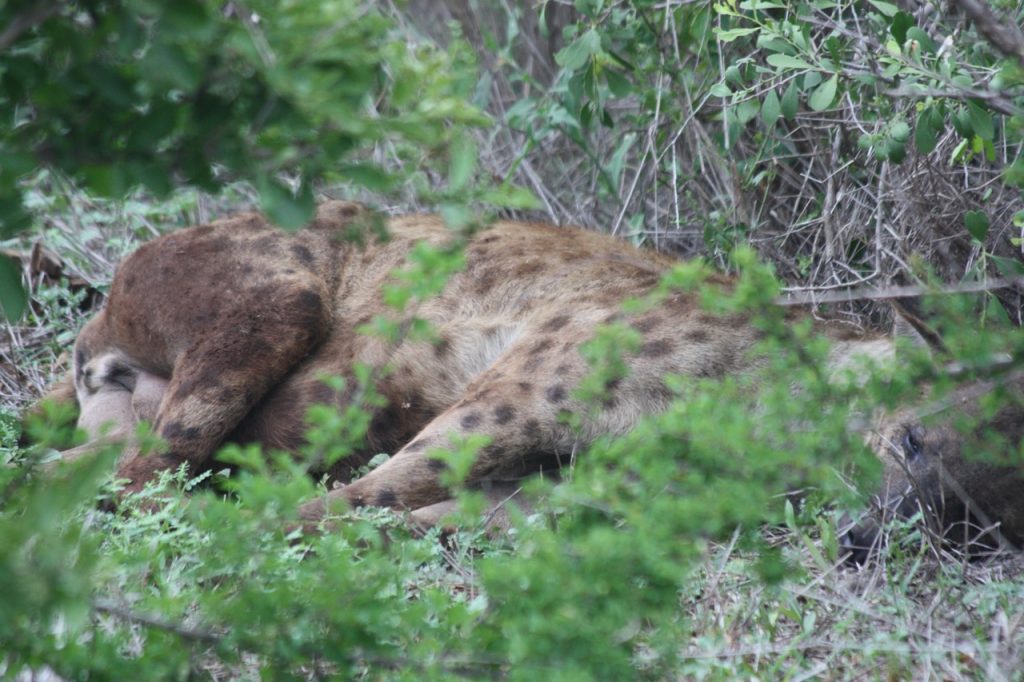
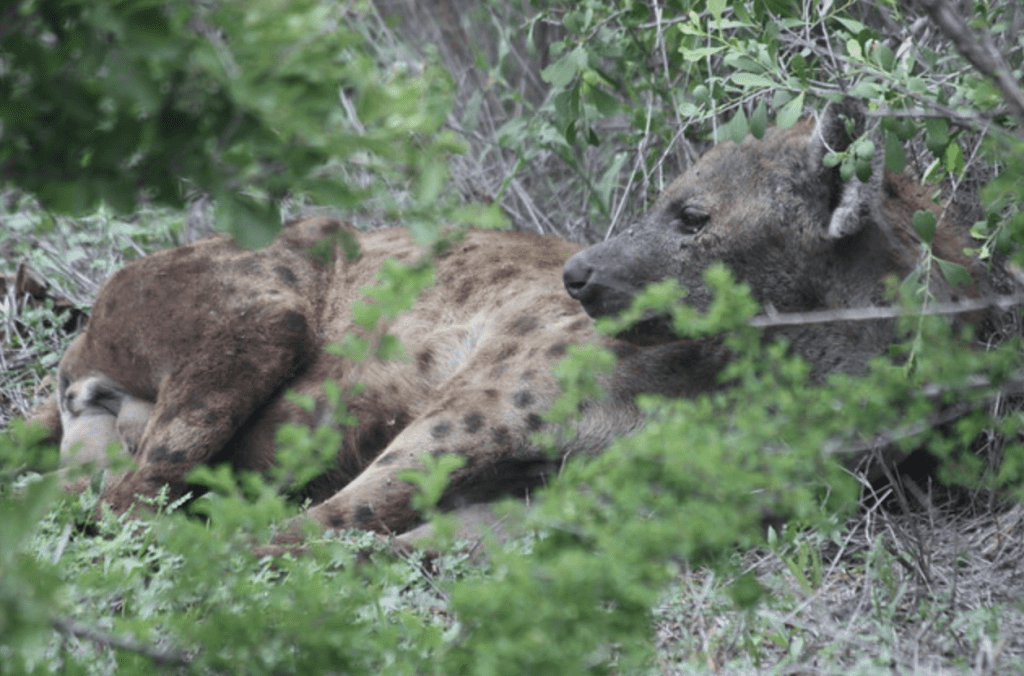
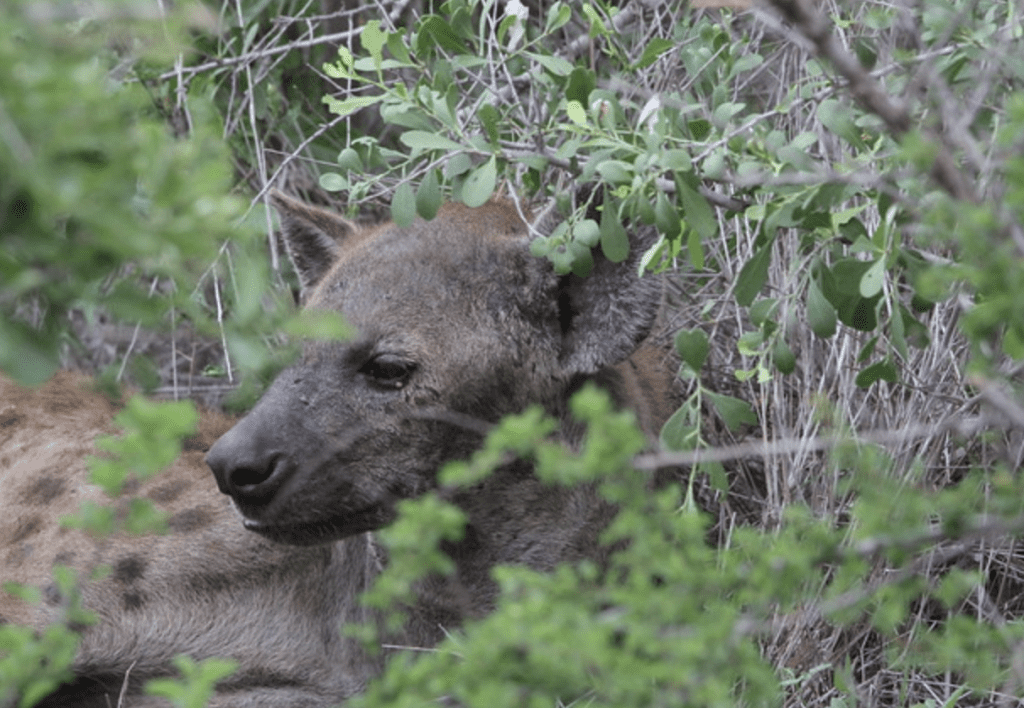
On we drove for the final stretch to Lower Sabie…what an excellent day! But Kruger was not quite ready yet to stop giving to us grateful receivers… HONEY BADGER! We spent 30mins on our own with him…what an industrious creature! Apologies – LOTS of photos – it is not everyday that you spend an afternoon with these bad boys! LOVE them!
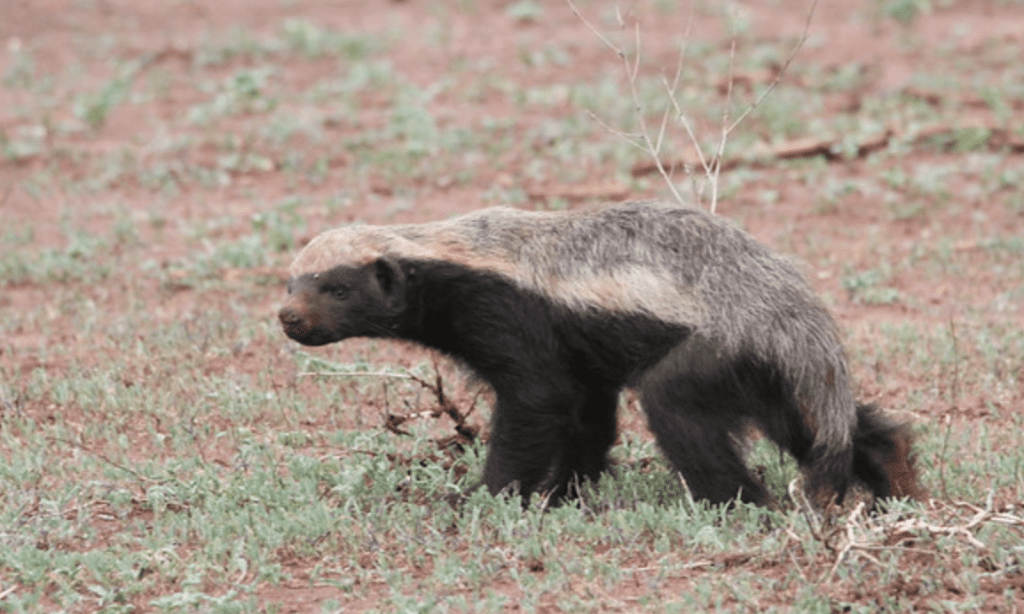
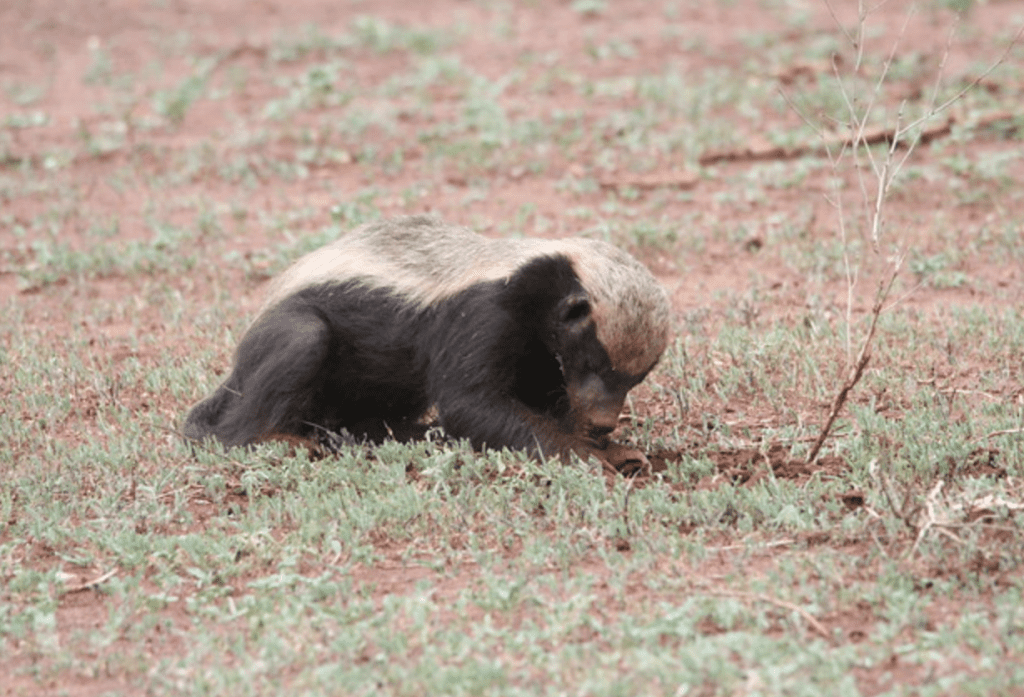
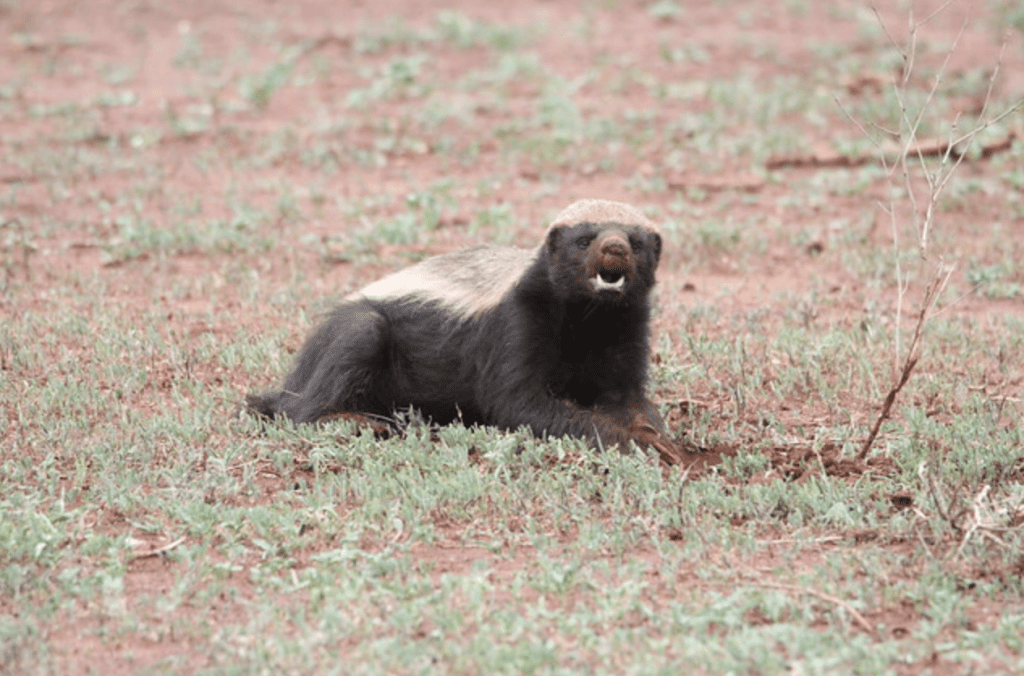
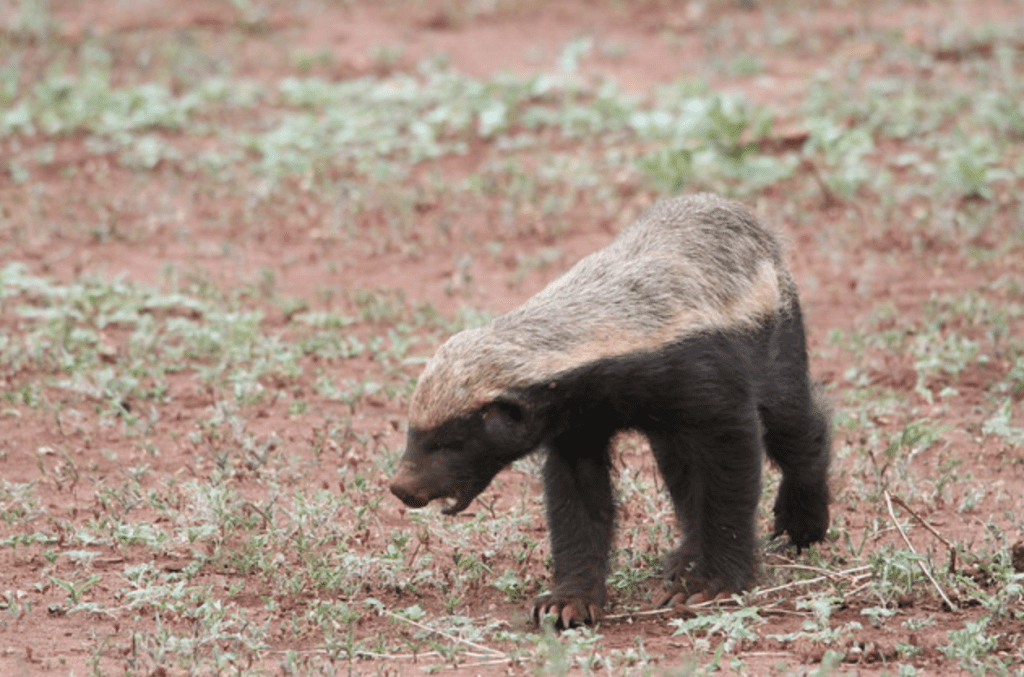
We got back to Lower Sabie in time for us to get changed and meet for our braai and eat our dinner! The great news was that Laurika (Jaco’s wife) could join us for the last two days! She is such a lovely lady and we were so pleased to have her company. We sat around the fire reminiscing and feeling so blessed for what a wonderful day we had experienced.
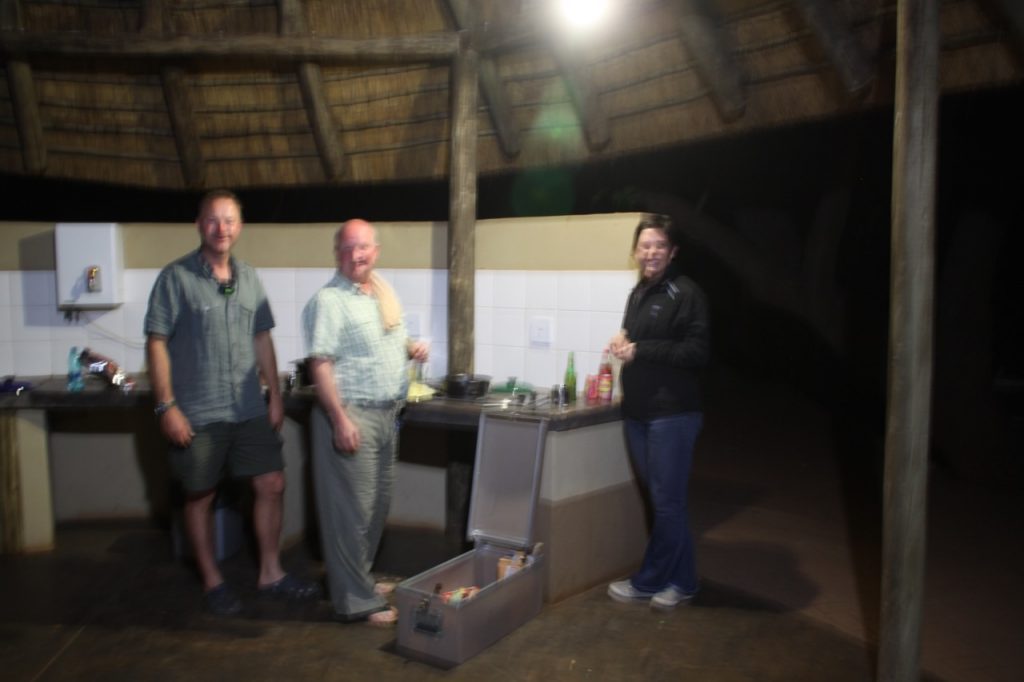
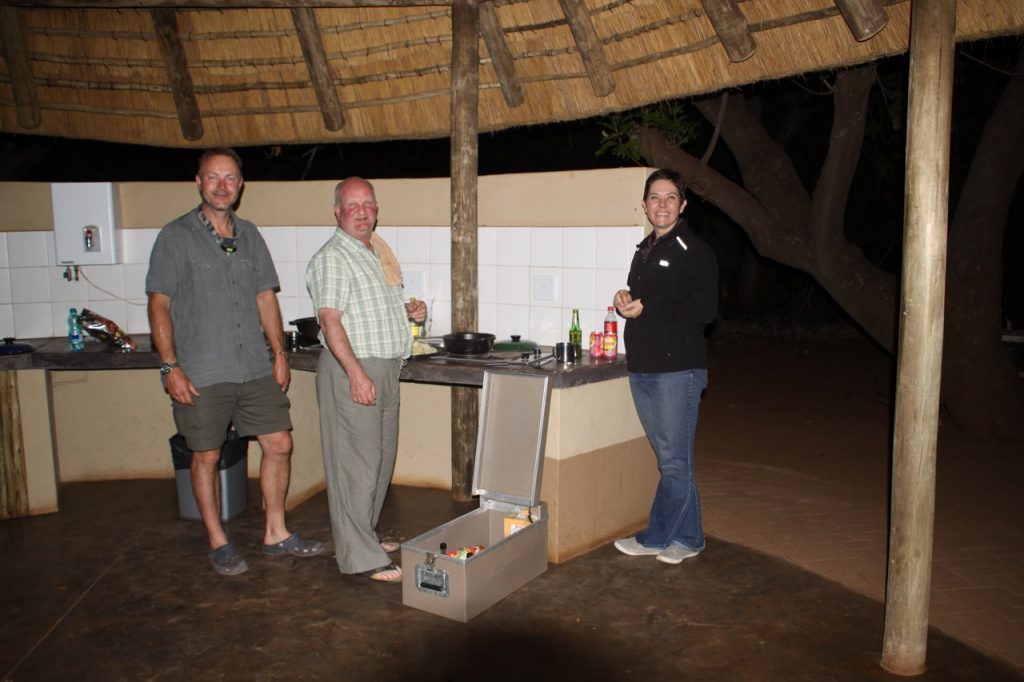
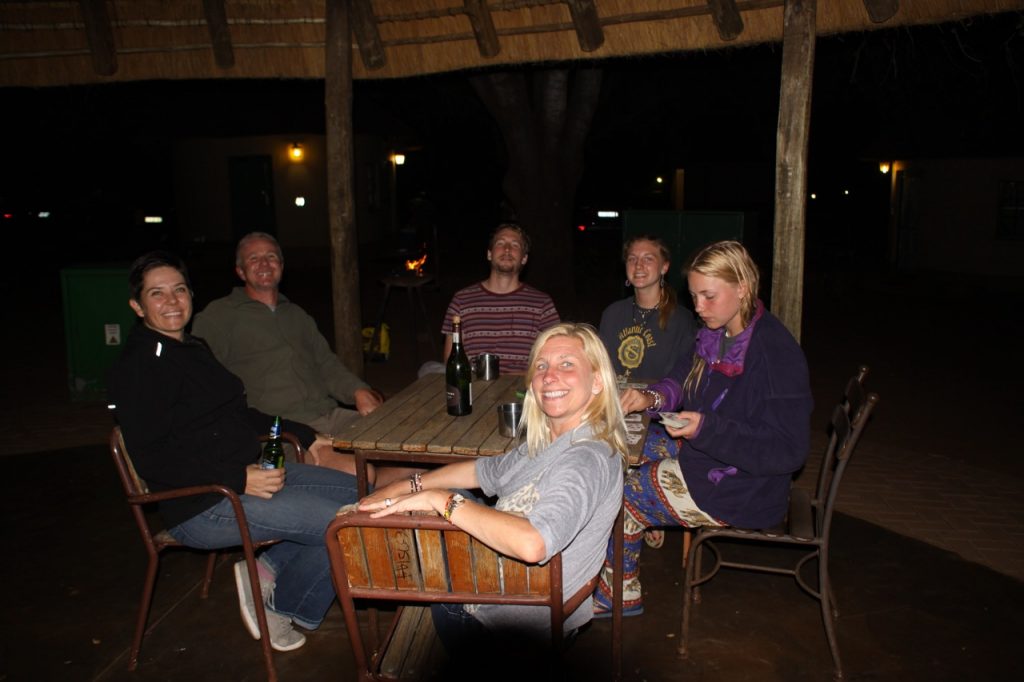
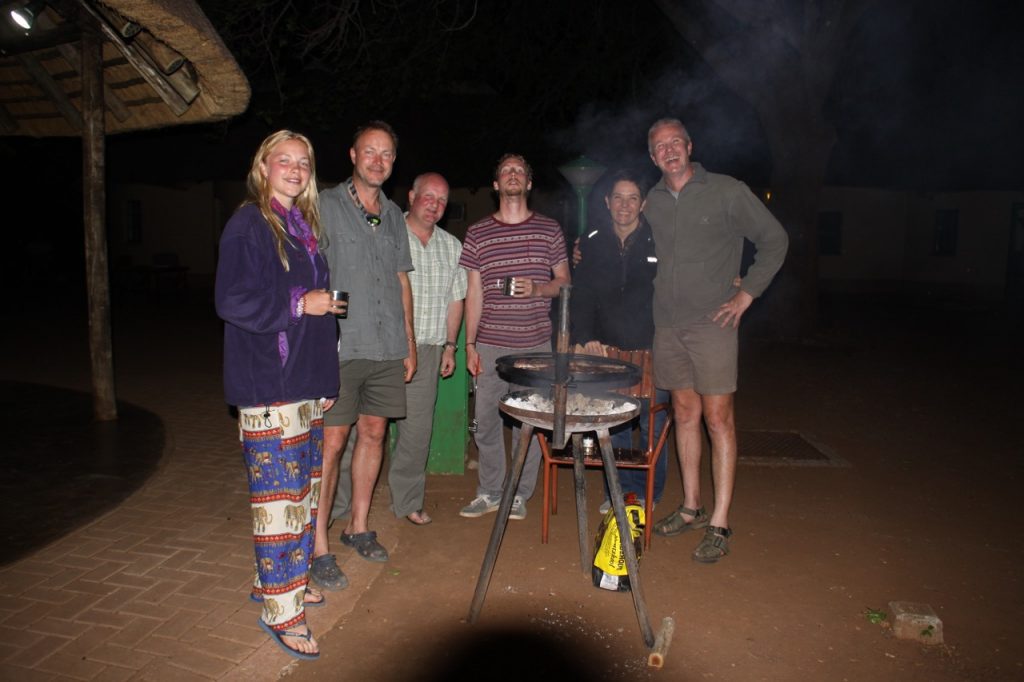
DAY 8 KNP: Thursday, 7 April 2016 Lower Sabie
A glorious sunrise greeted us. We were delighted that Vanessa wa s back to enjoy our last two days with us. Up at dawn and on the road – we took an unmarked road – what would be in store for us today?!
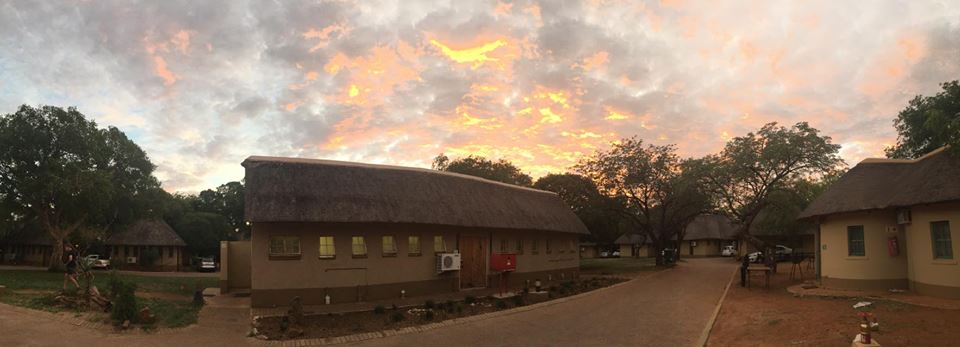

Jaco was very excited to drive us to a vista which overlooked the Sabi River and the border with the Park and Mozambique. Here you can see the Park fence indicating the boundary between the Park and Mozambique. And this spectacular scene was our reward!
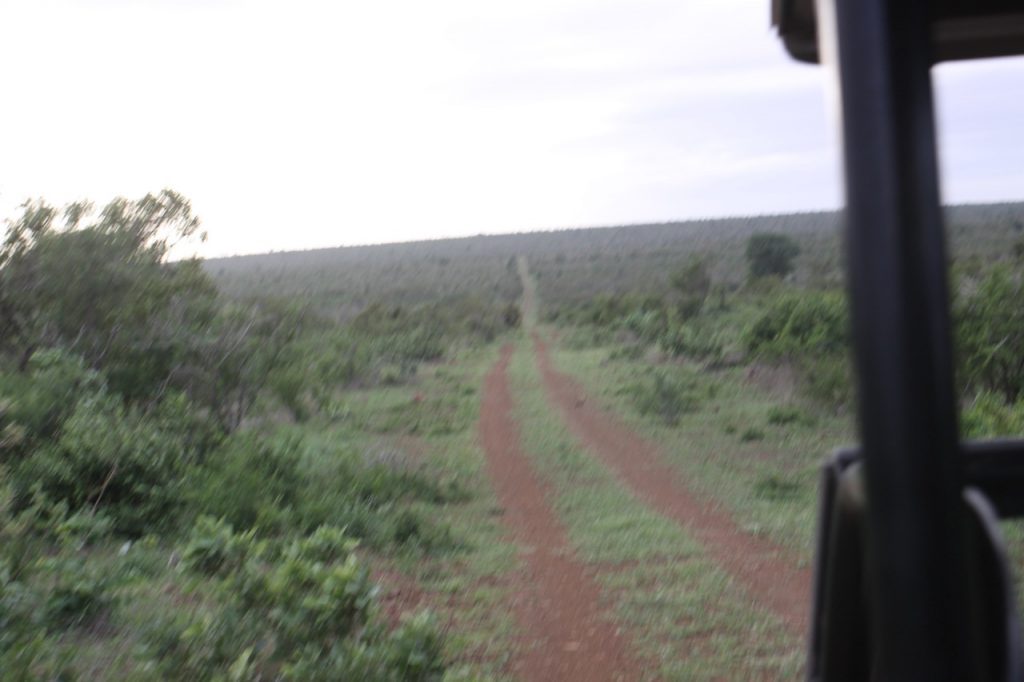
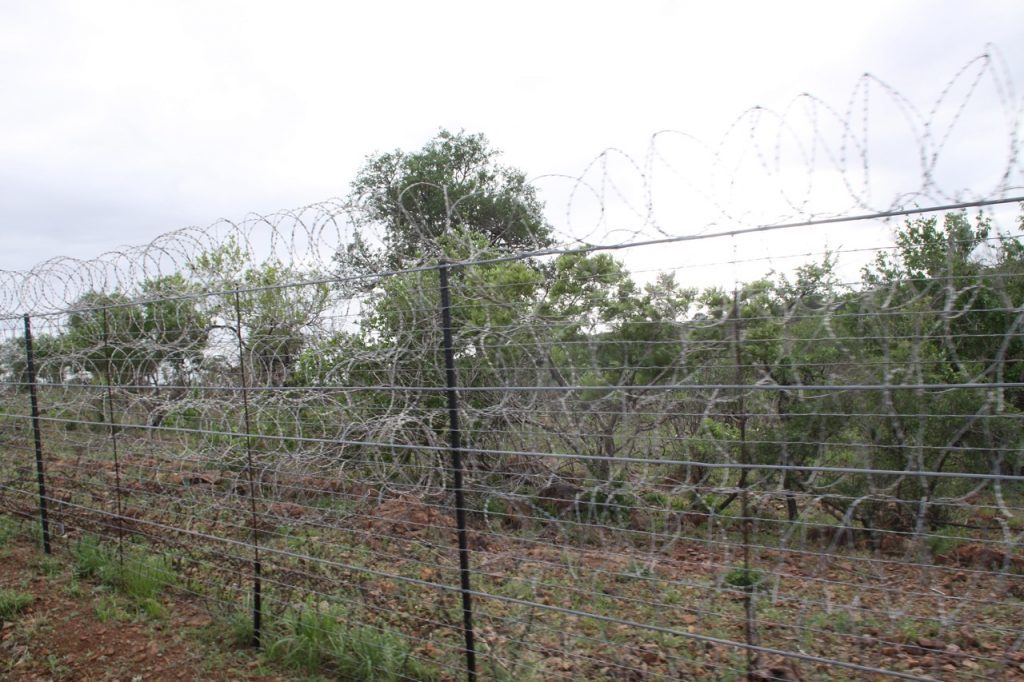
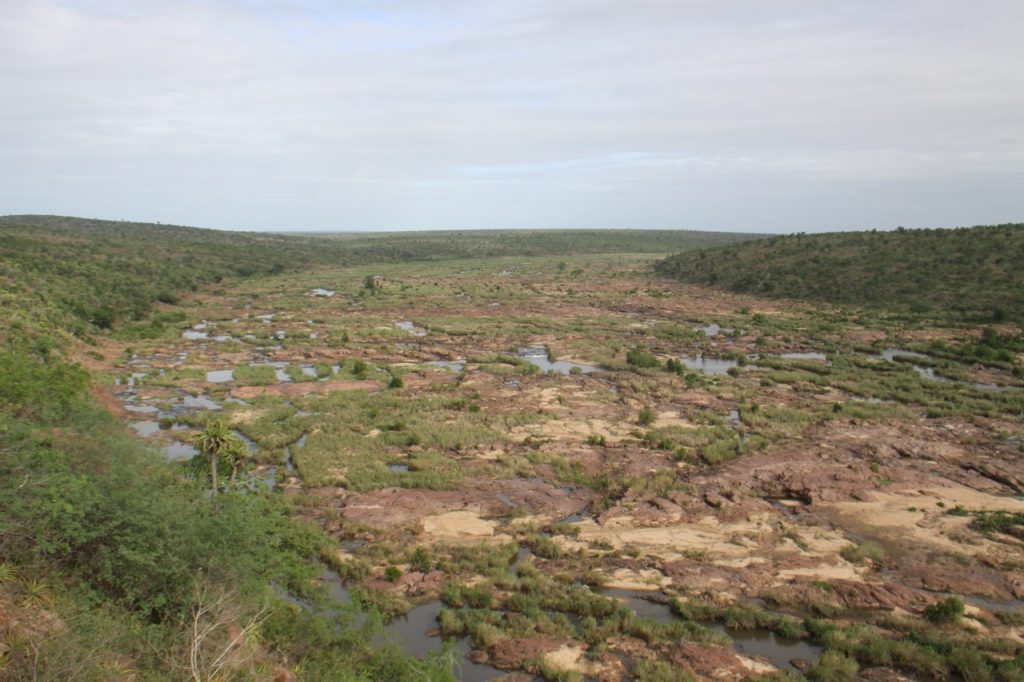
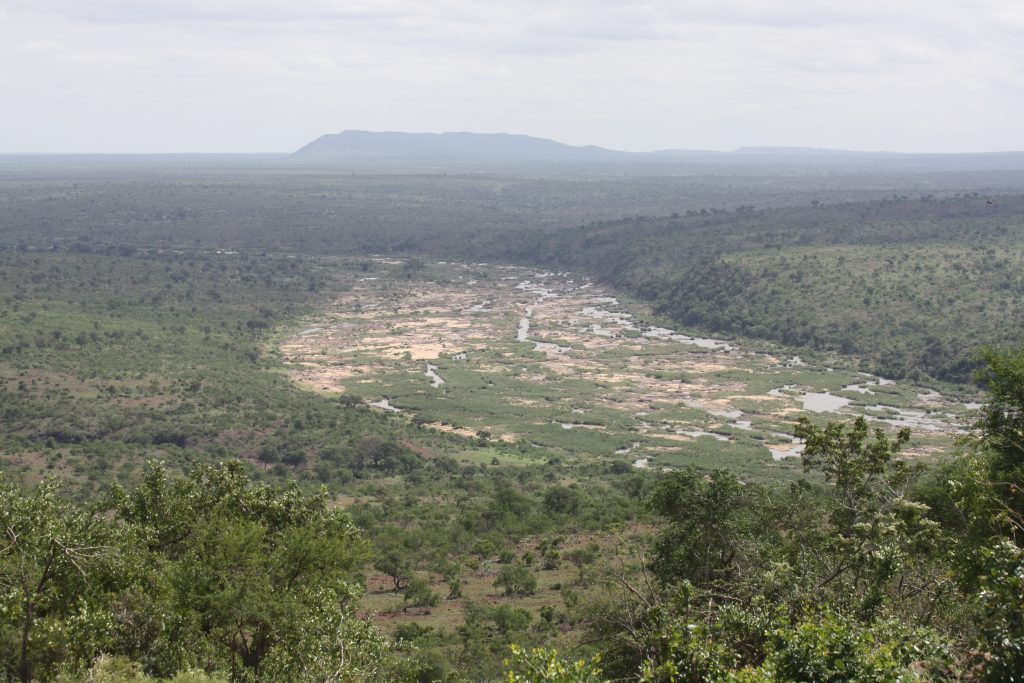
We sat there just taking in the majestic splendour of this stunning vista.

We’d spotted a herd of elephants in the distance and were tracking their movements…… when suddenly Yvonne called out to check whether she was imagining things. This part of the park boundary is on the river and can therefore not be fenced. We had just been discussing that this was a real hotspot for *** poaching – if a *** strayed into this area his horn would be hacked out in less than 24 hours…Yvonne could see two men – they were NOT in SANParks uniforms and were carrying rifles!!
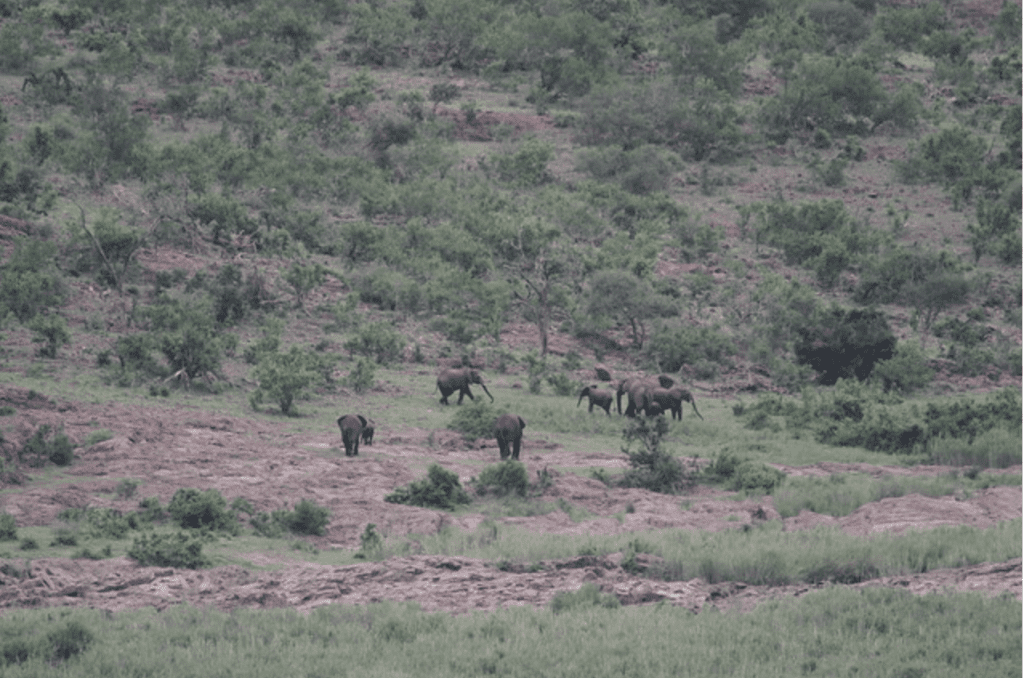
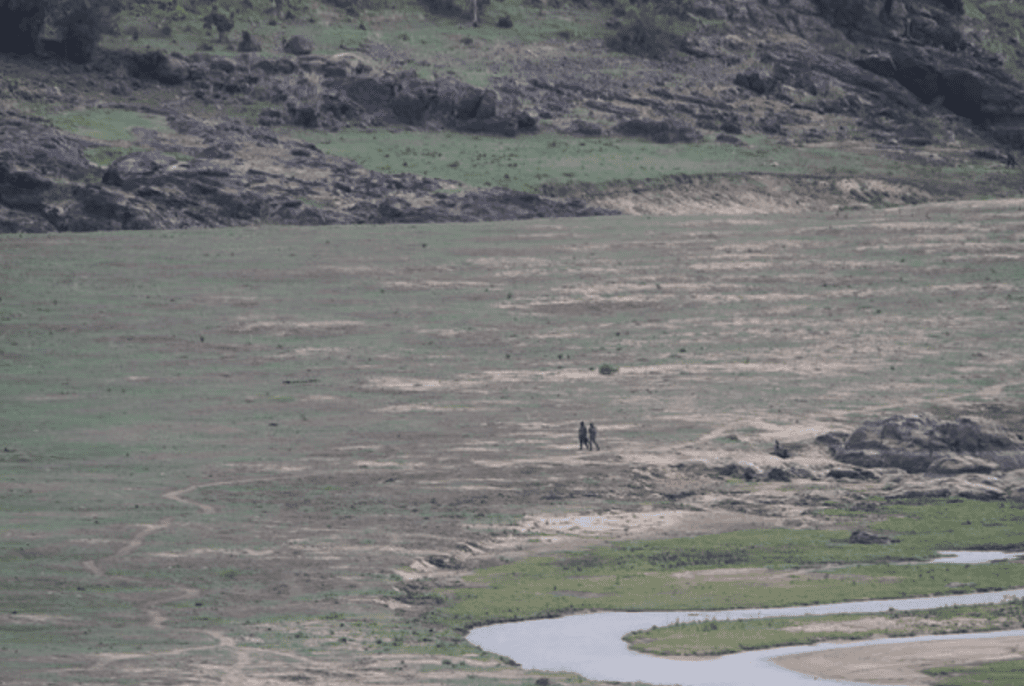
Within seconds Jaco was on his phone to the Lower Sabie Section Ranger and within 10 minutes from that we could see the anti-poaching unit alighting from their vehicle in the distance and making their way towards the men who had by now turned back and crossed back onto Mozambiquen soil. At the same time another vehicle pulled up on their side. The next thing we saw the Section Ranger and his dog swimming through the croc infested water, weapon held high above his head and make his way to the base of the koppie that we were perched on. Jaco climbed down and gave him a detailed description of what we had seen. Here you can see him locking onto us with his binoculars.
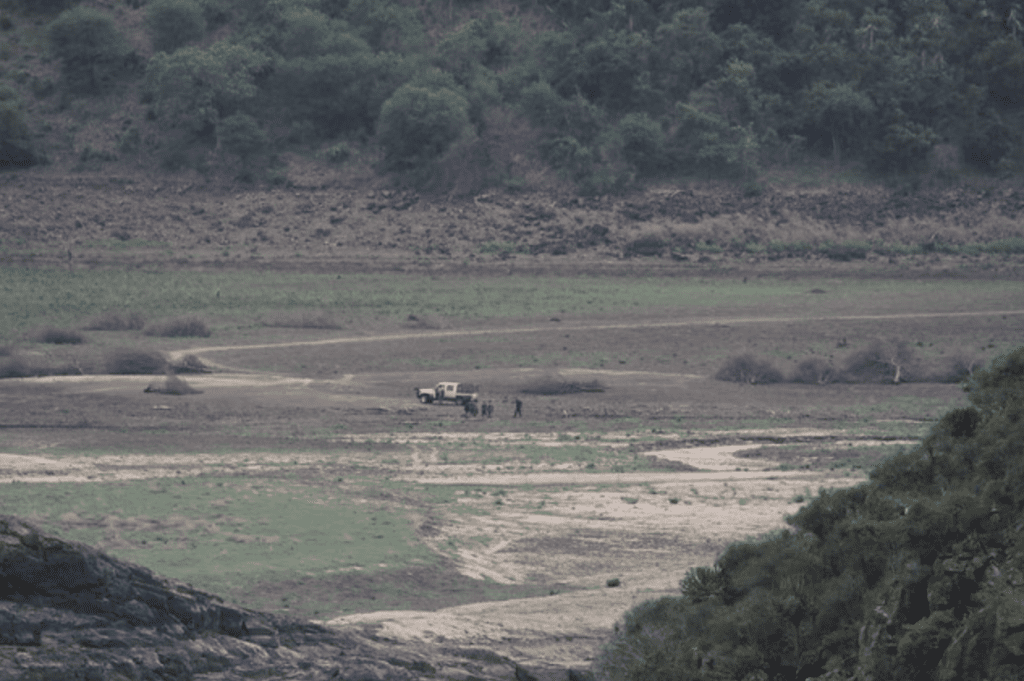
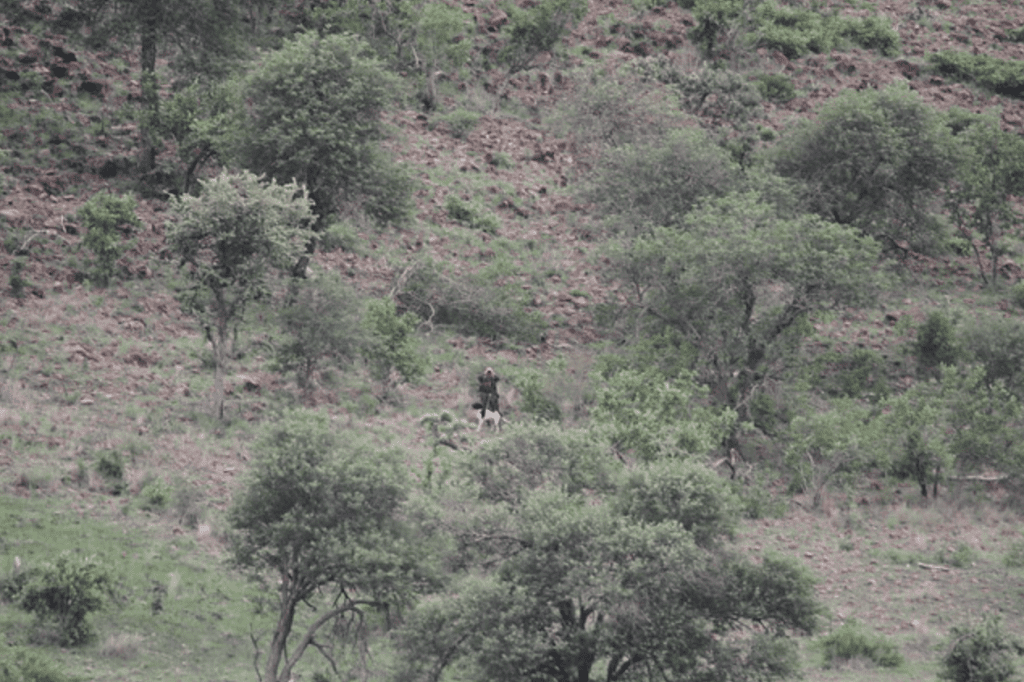
What excitement!! We were so impressed with the rapid response from the Section Ranger and the anti-poaching unit who put themselves straight onto the frontline. Incredible devotion to the Park and its rhinos and elephants. I salute each and every one of them who are effectively at war with the Mafias that control the poaching. Where we were sitting we found several spent shells from weapons used by the poachers and spent shells used by SANParks staff (they differ) – this was a stark reality check of the danger that these men find themselves in.
By now we were all very hungry as we’d spent much longer than planned here, so we headed back to Lower Sabie but not before being greeted by this bull.
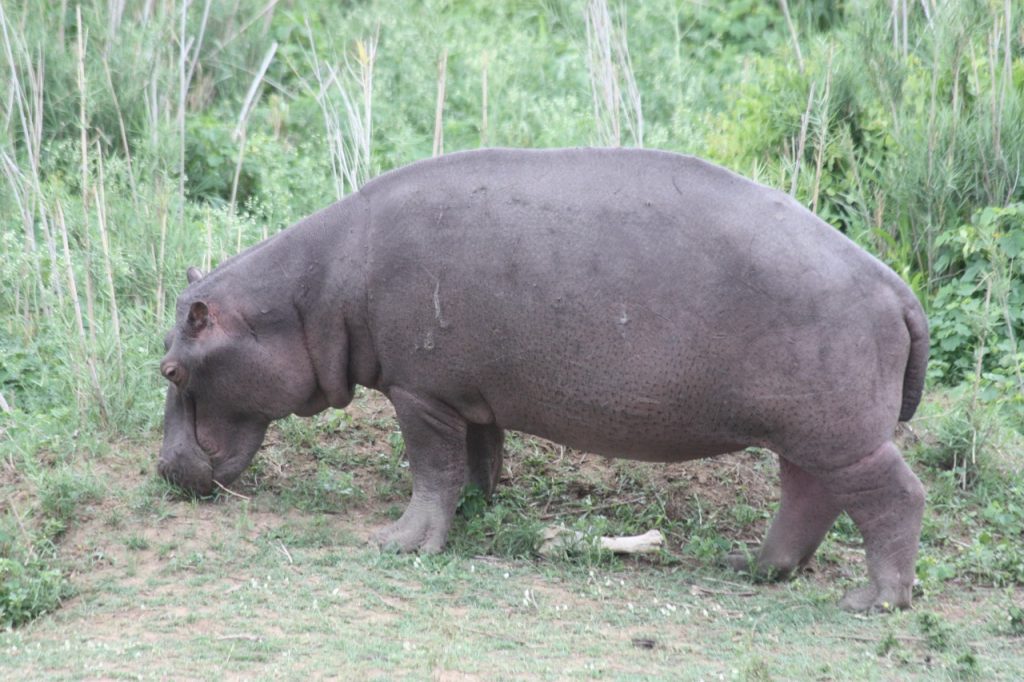
We headed to Mug & Bean for… you guessed it – toasted chicken and mayonnaise and honey and horlicks milkshakes!! I love eating at Lower Sabie – we have had so many lovely sightings here over the years. On one occasion Paul had been scanning the trees for leopard – and with his usual luck spotted the tail of the resident leopard! You can see his tail and his front paw hanging down between the branches and leaves.
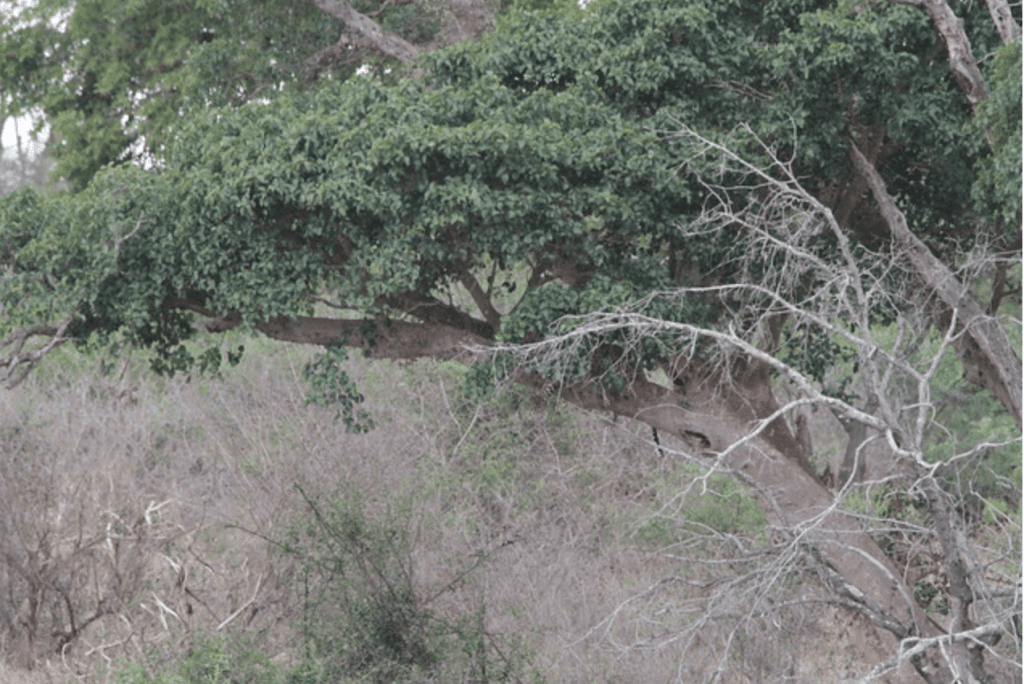
We noticed that Jaco had not joined us – finally Vanessa came to let us know that when he had made his way down to see the Section Ranger he had come into contact with a highly toxic plant and had rubbed his eyes by mistake – this could potentially blind him and he was in excruciating agony – Vanessa was taking him to Komatipoort for an emergency appointment with a doctor – poor Jaco! What a disaster. We spent the afternoon relaxing and reading.
Jaco finally got back after being treated with some eye drops – he looked exhausted but insisted that we should take the last 30mins before the gates closed to swing past sunset dam. I am so pleased that we did!!
Look what greeted us!
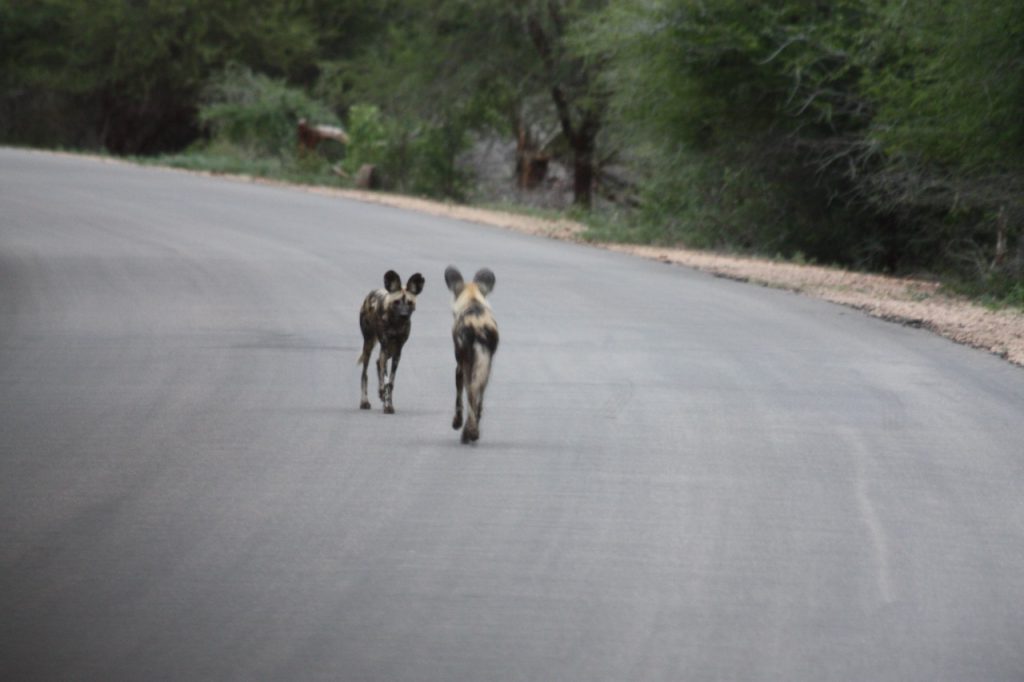
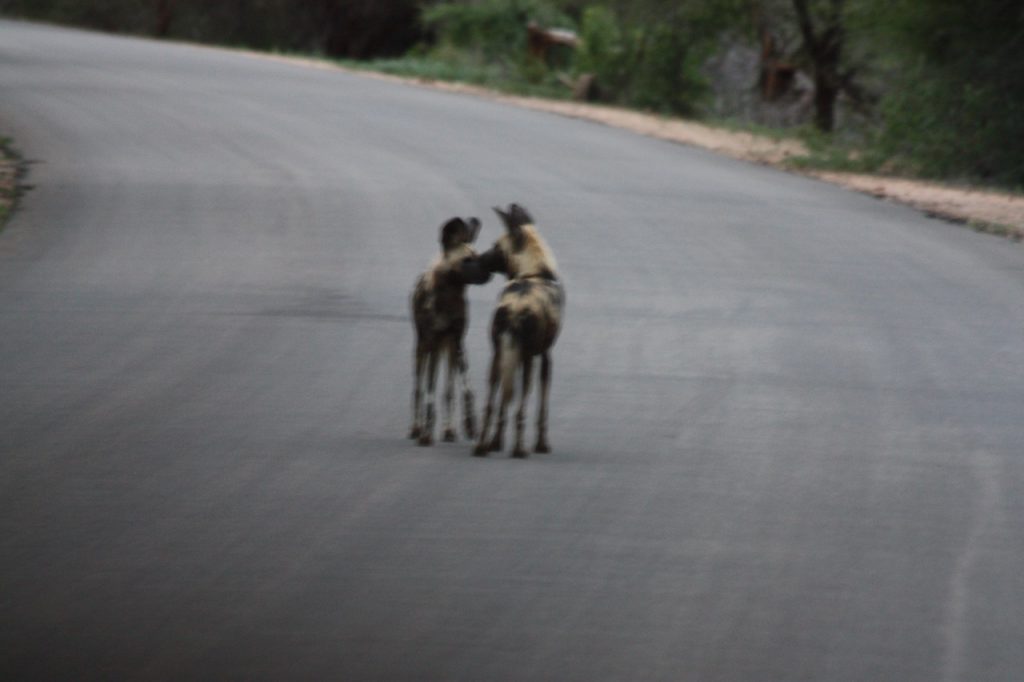
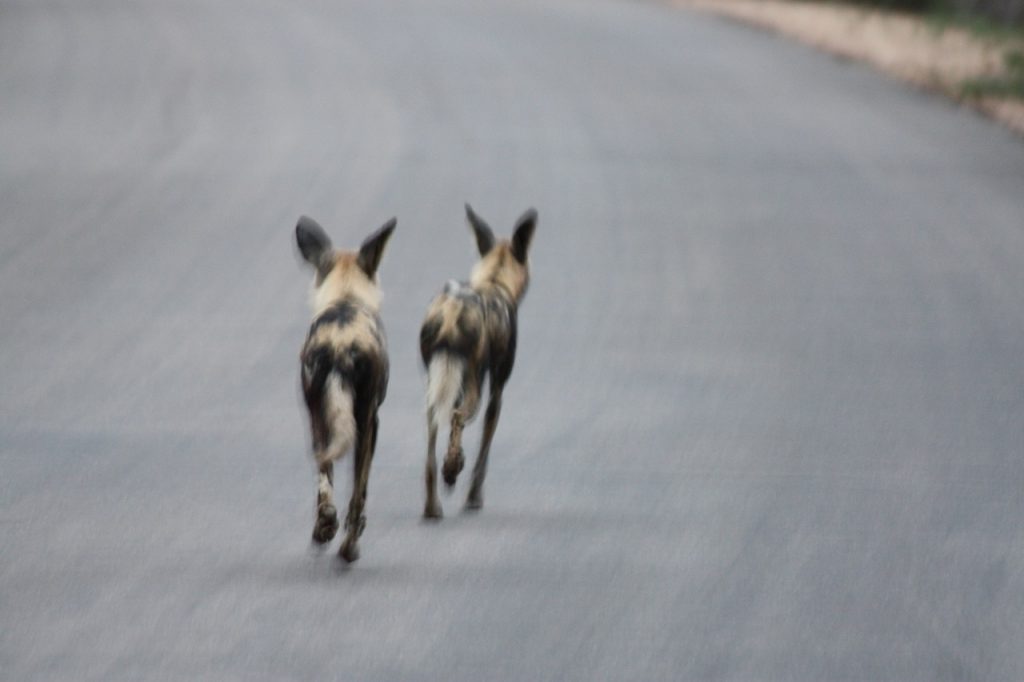
We headed back to Lower Sabie feeling very happy! As it was our last evening we decided to have our farewell dinner at Mug & Bean. During our most amusing conversation and sharing of intimate secrets, as one does after spending time in the bush with each other – it transpired that my husband Paul and Jaco share many strange habits – such as sniffing their socks before and after they put them on! Hee! Hee! They now call each other ‘Brother From Another Mother’ – a very firm bond cultivated through their olfactory habits …mmmm…on that note we went to bed feeling rather sad that this would be our last night in the park for a few months…
DAY 9 KNP: Friday 8 April 2016 Lower Sabie and Home!
Another incredible morning!
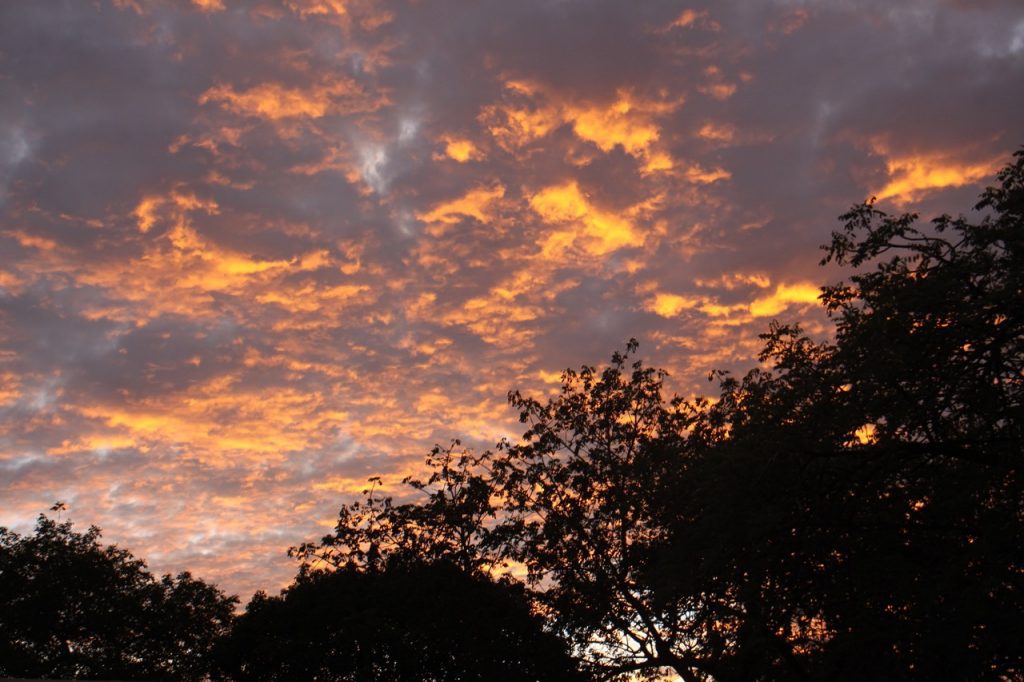
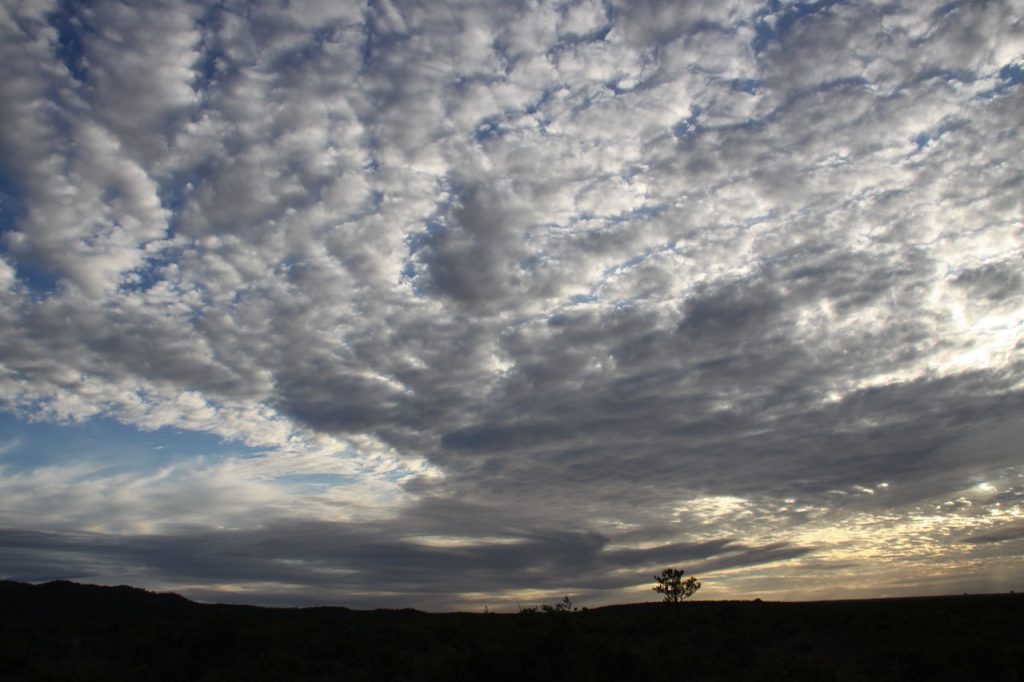
Our final day! We headed over the Lower Sabie bridge and were greeted by some noisy baboons and a baby giraffe nuring.
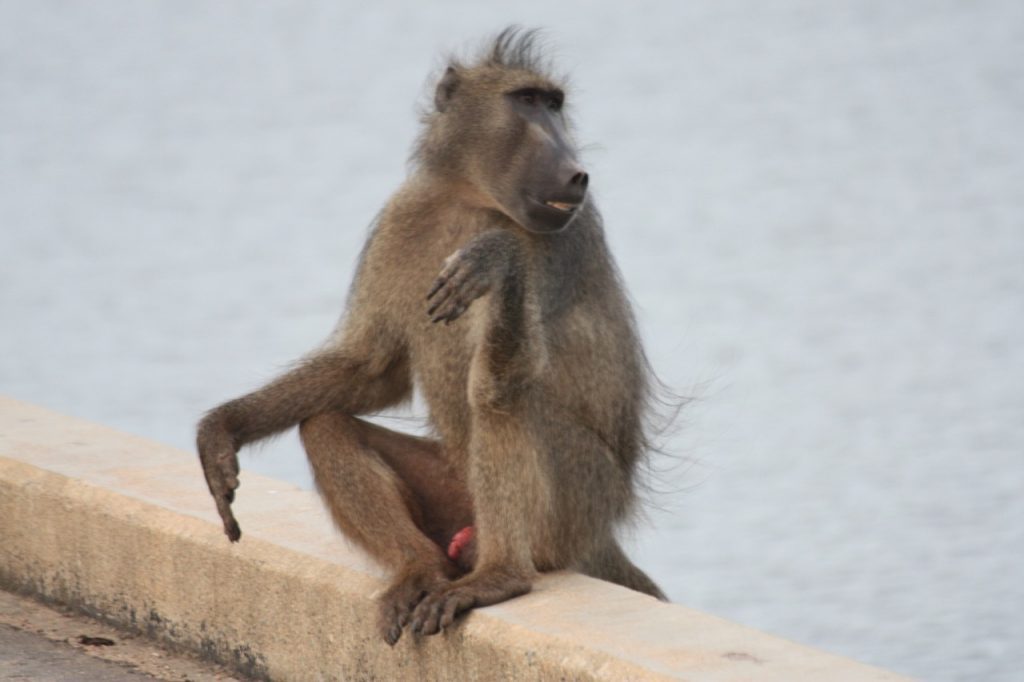
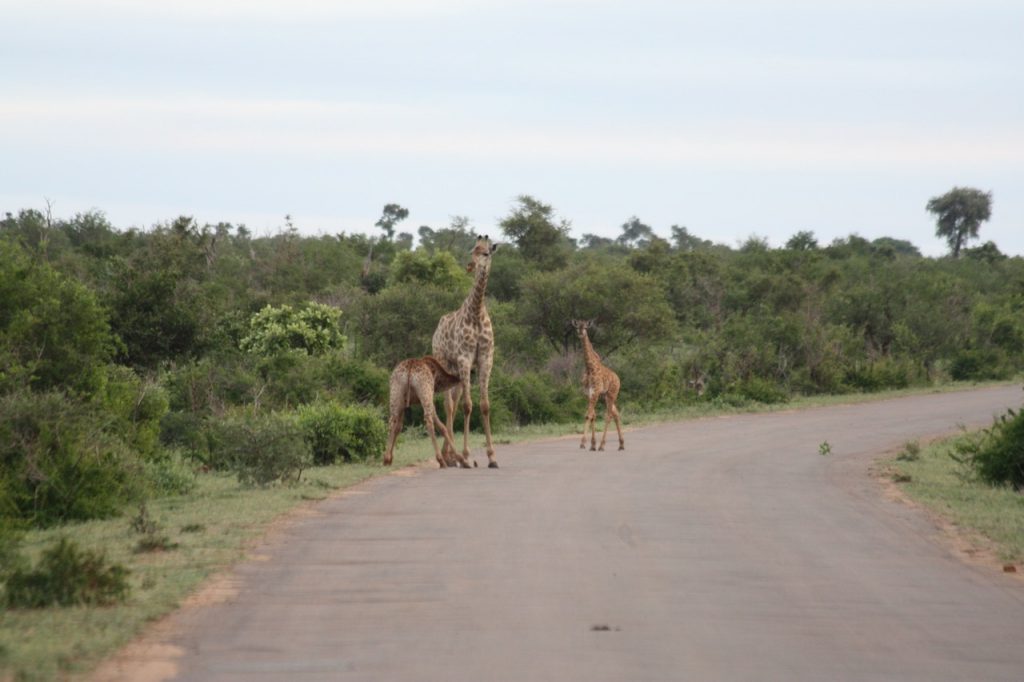
Then, would you believe it – 20mins into our drive and…Yes! Lions! What a wonderful start to the morning! In the distance, but a sighting never the less.
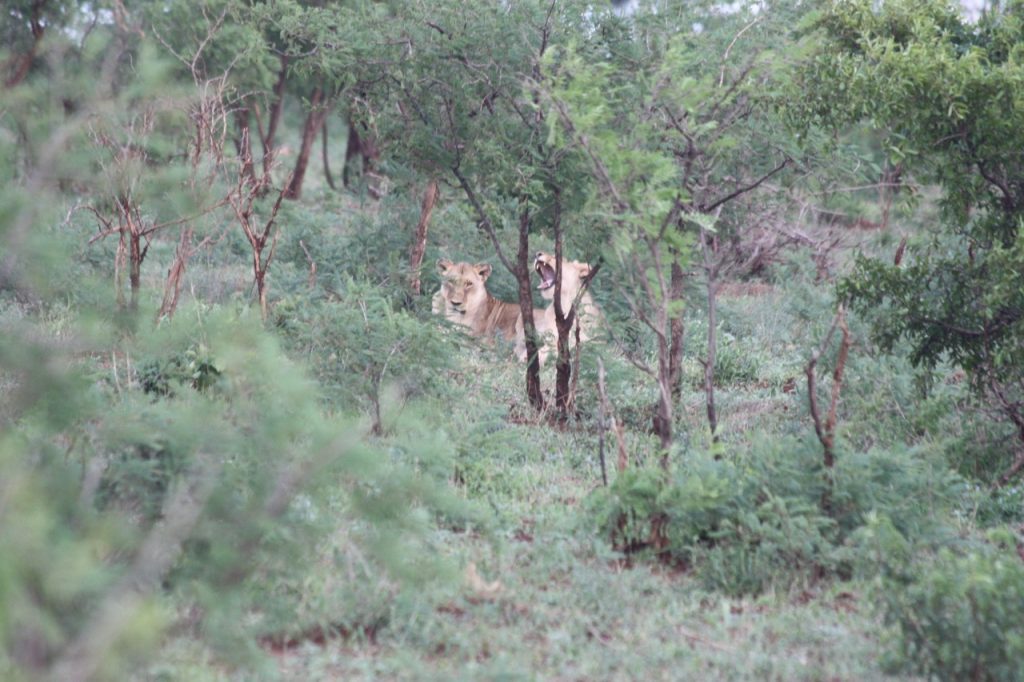
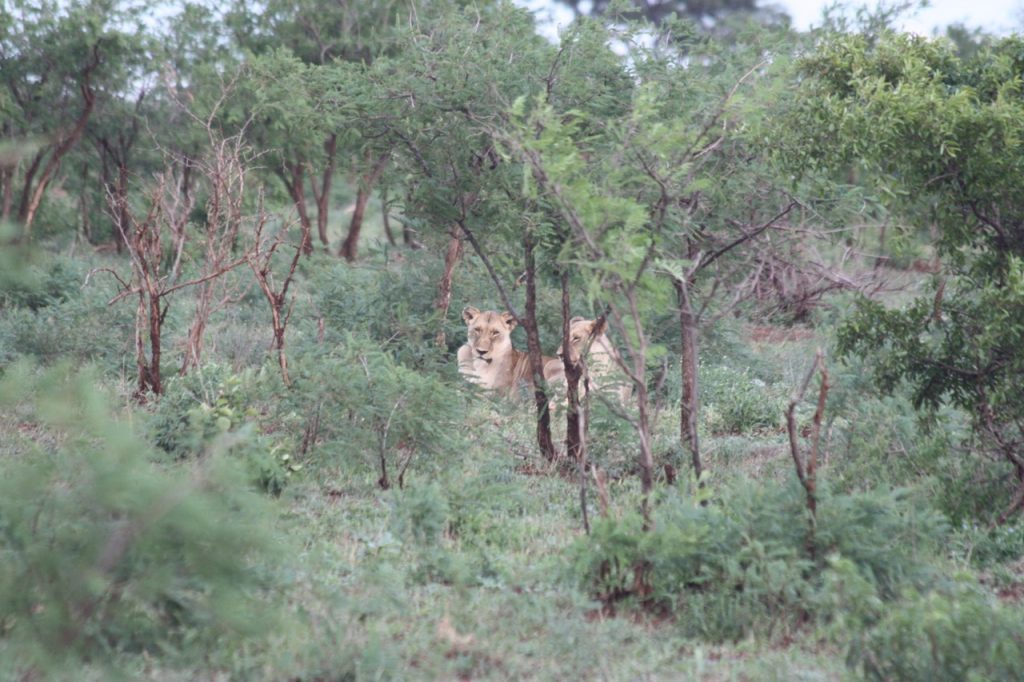
And of course, with Kruger, things can only get better! Literally a few minutes later down the dirt road and … we couldn’t believe our eyes .. Sable – never seen them this far south! When the waterholes were created, the extra water encouraged other herbivores like zebra and buffalo to come into areas that were sable and roan strongholds. These animals were then followed by lions, who found the animals to be good pickings and started eating more of them. At the same time, the zebra and buffalo could potentially have changed the types of grass growing in the sable/roan strongholds. Sable are known to be picky eaters, eating only certain grass species and even then only nibbling on selected parts of the plant. Zebra and buffalo are more like mowing machines, cutting a swathe through all types of grass. Thanks to the closing of the dams they are re-appearing further south to their original habitat. Amazing to see how quickly nature reverts back to equilibrium when we stop interfering. Jaco said that this was one of the most special sightings he has ever had and we felt privileged to be part of it.
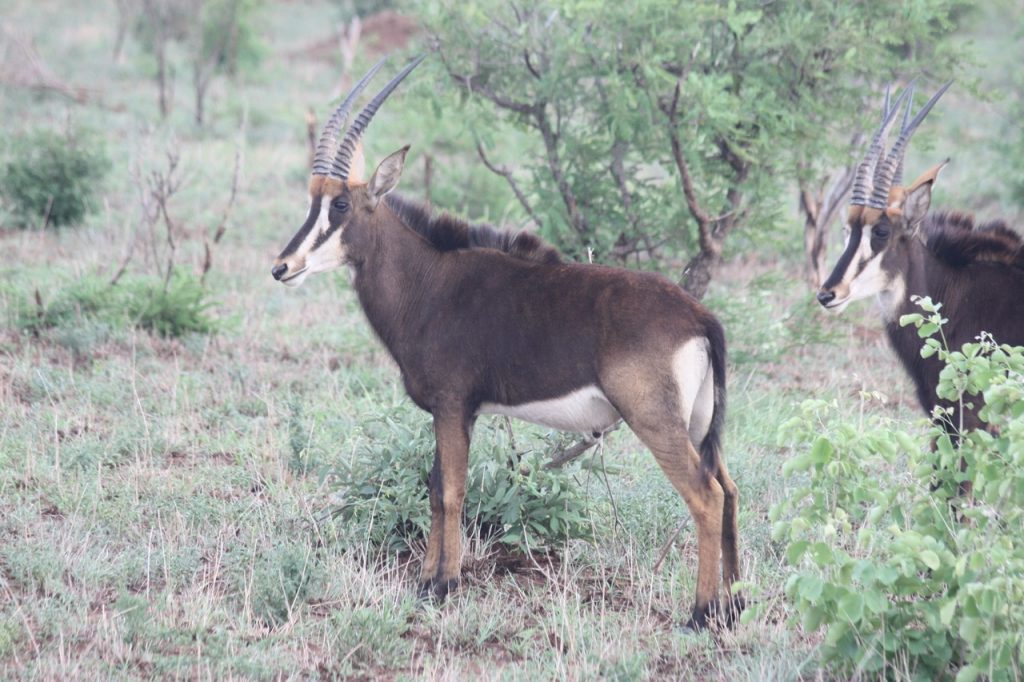
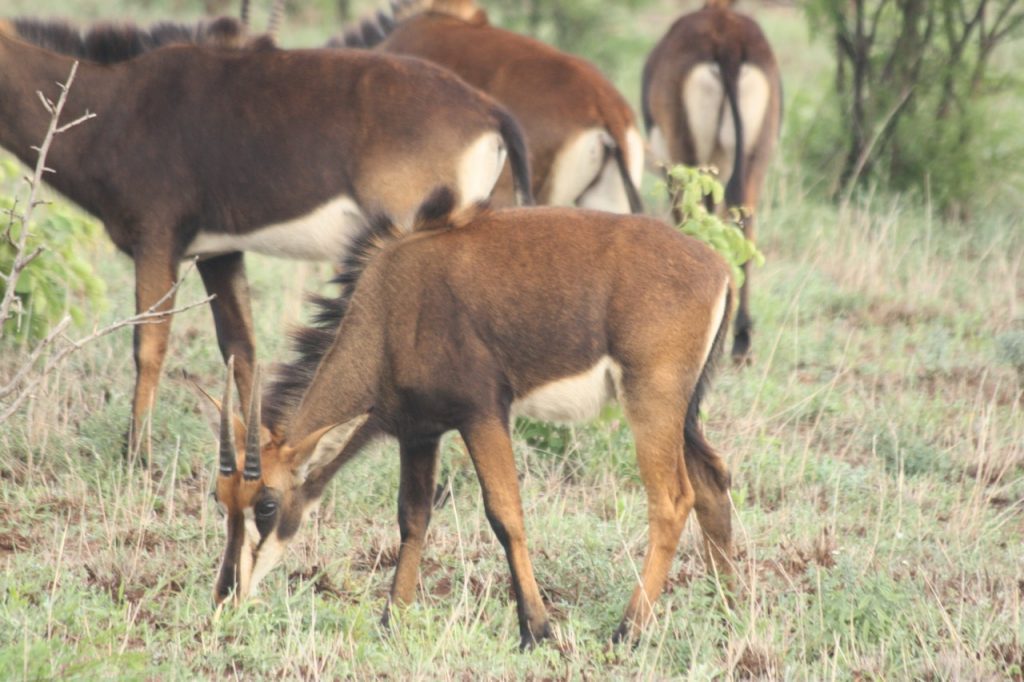
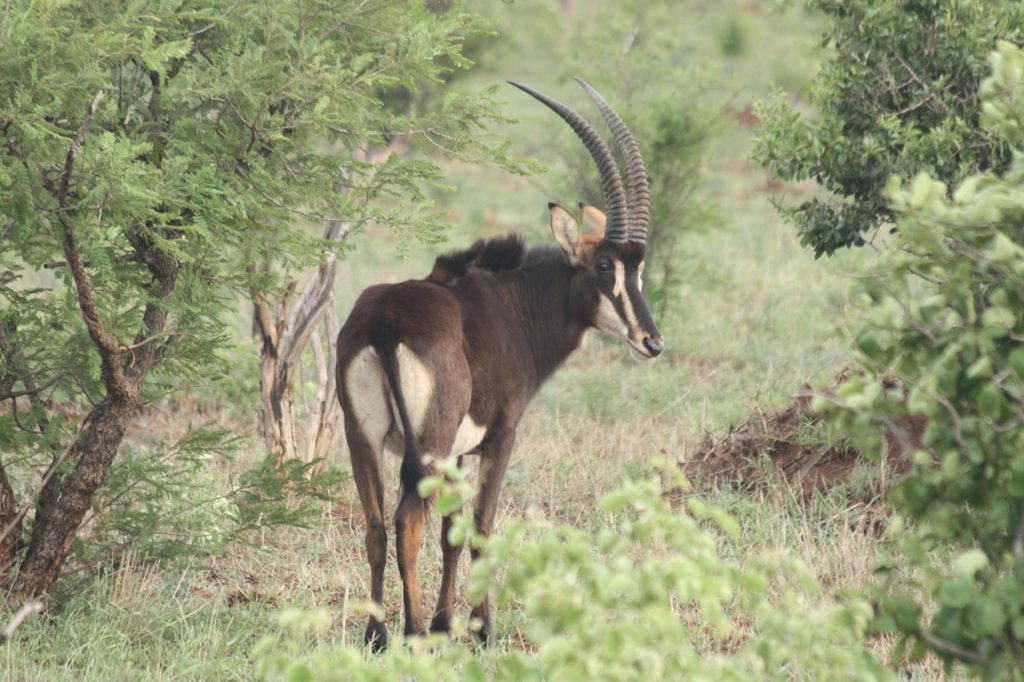
What a morning – and it has only just started! At one point during our week we had remarked on how shocked we were that we had not yet seen a single *** and shortly afterwards we spotted them somewhere in the south.
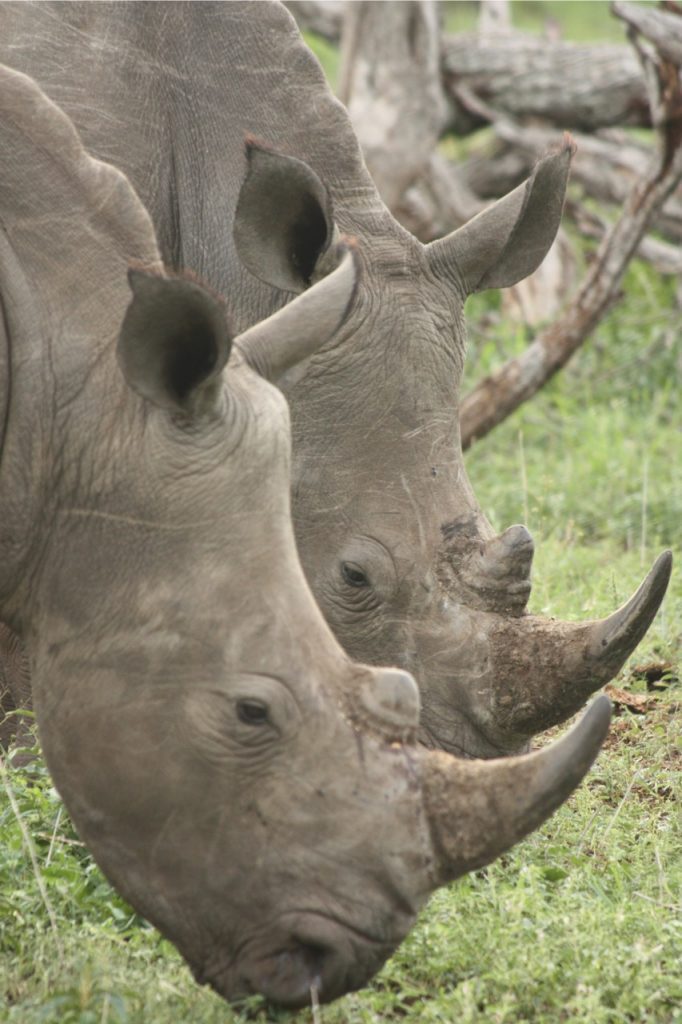
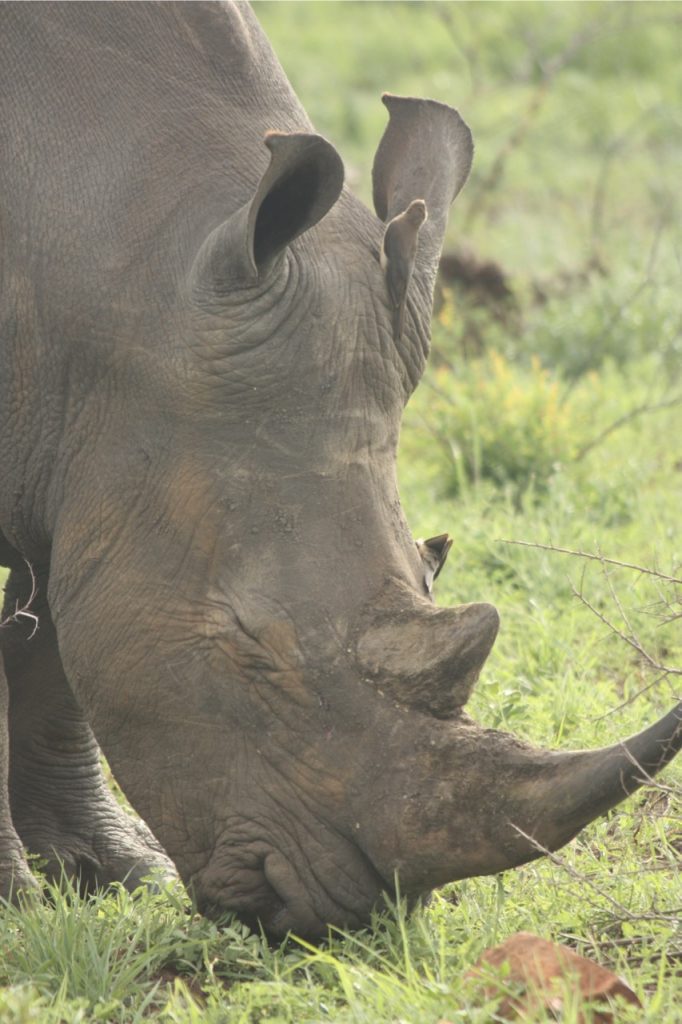
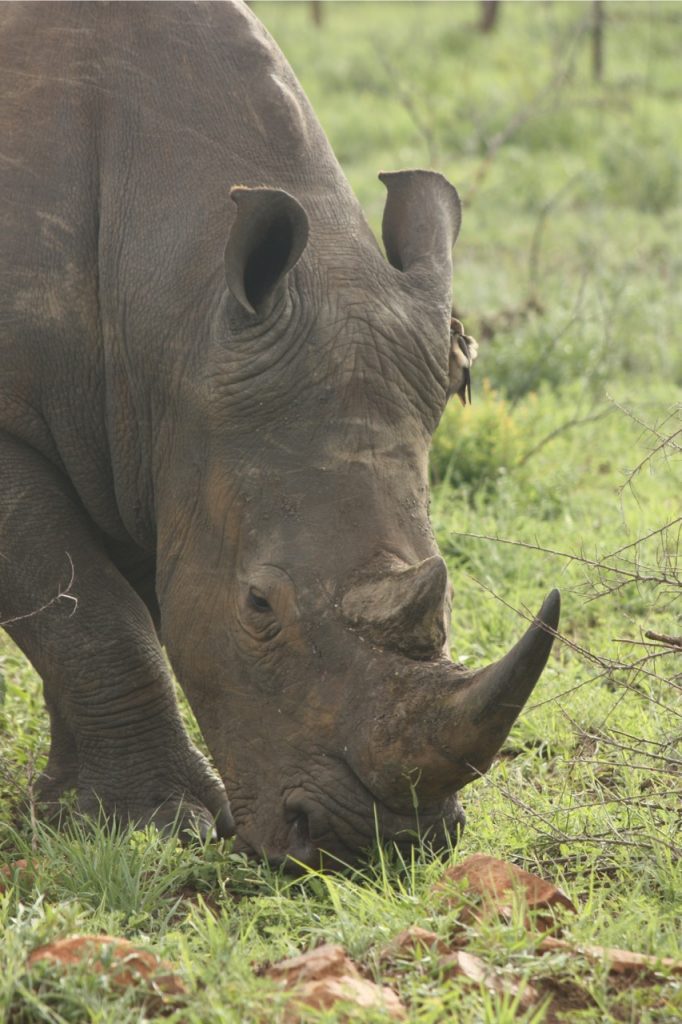
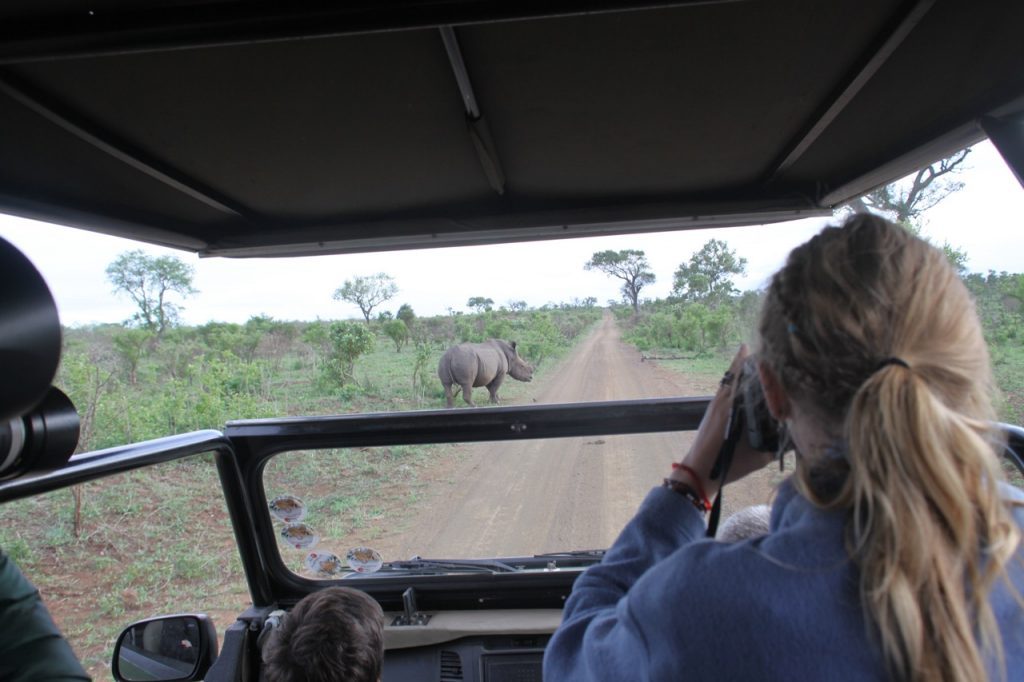
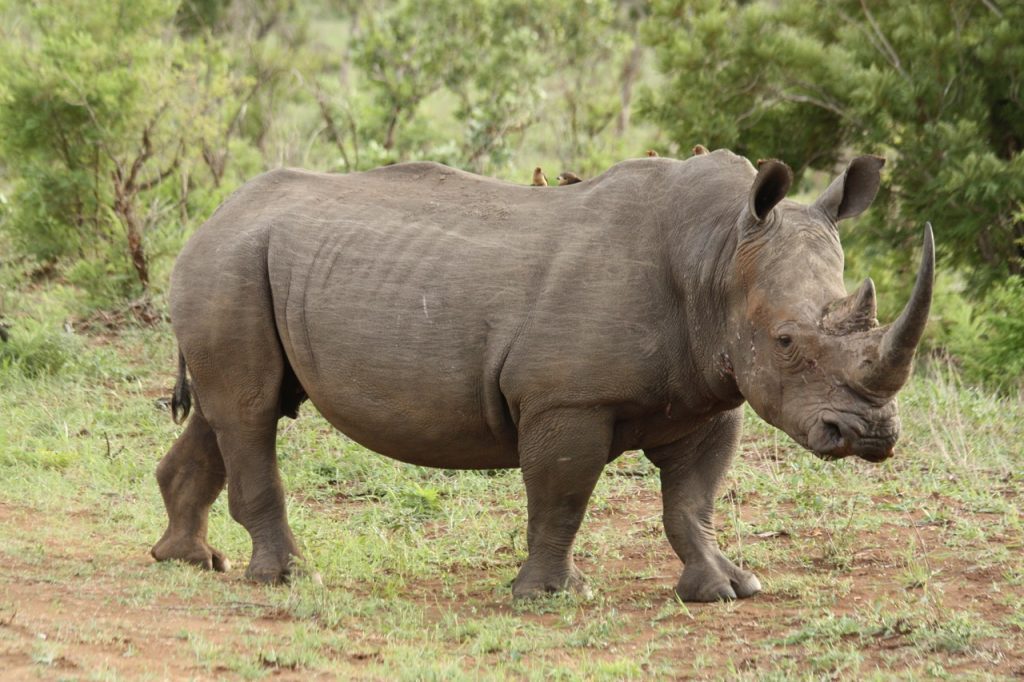
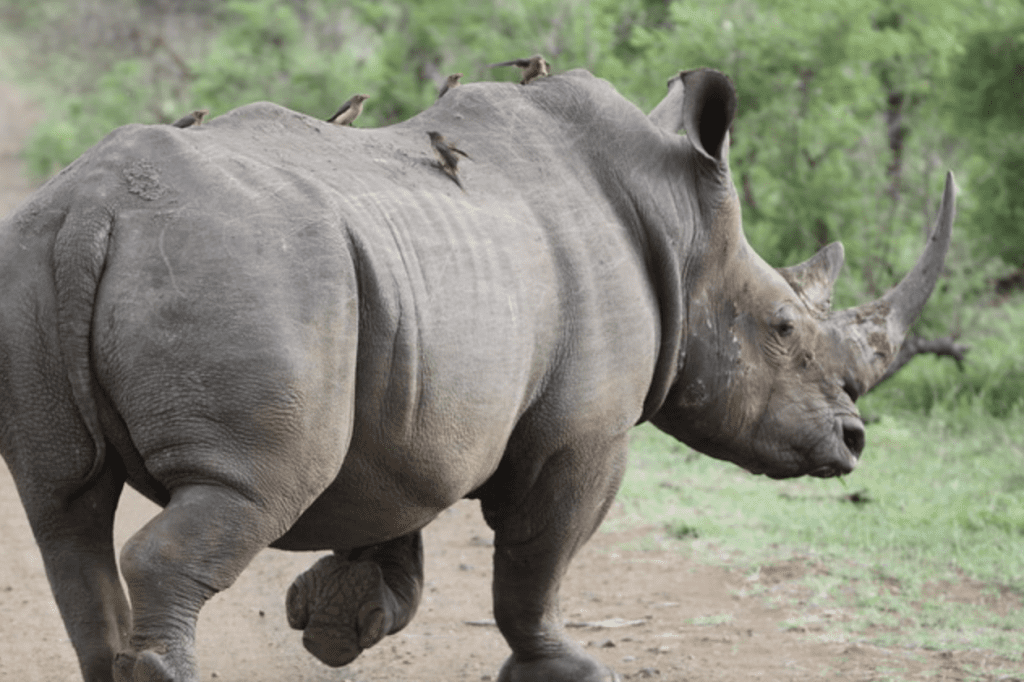
What a treat. Such amazing creatures – we must continue to support the war against poaching. Quick appearance from some ellies in the morning light.
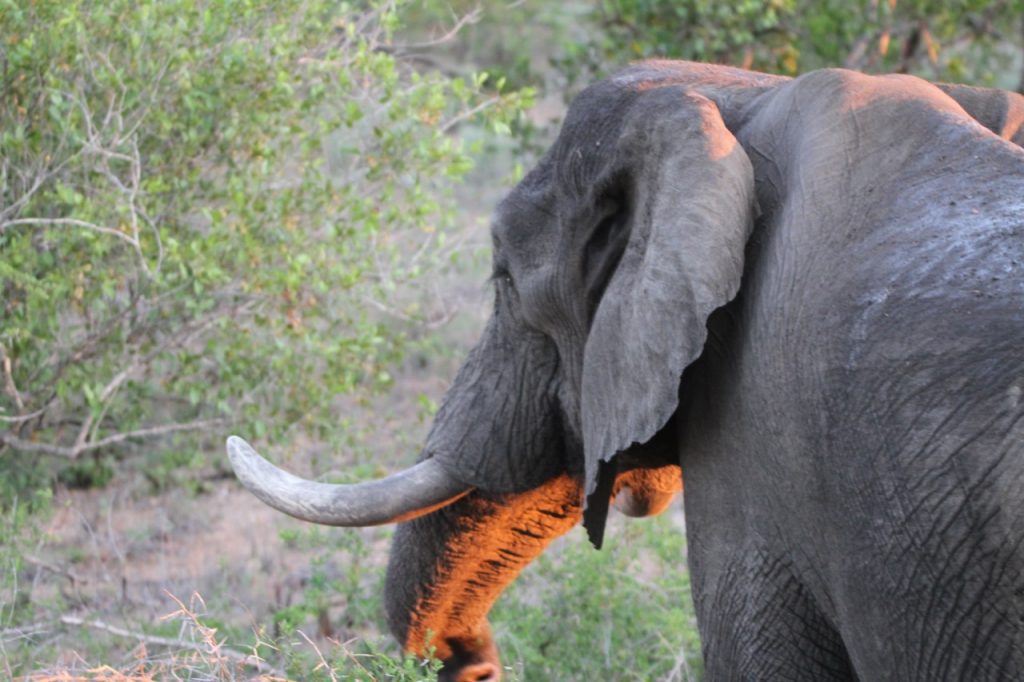
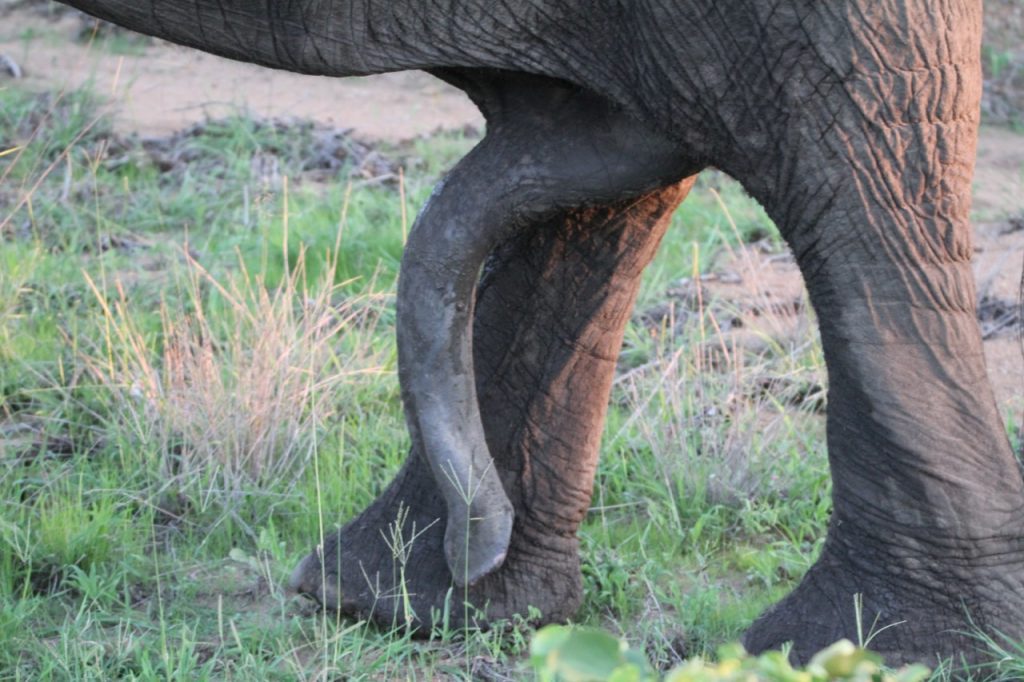
We stopped off at Mlondozi Dam and were completely shocked at how little water there was. Those poor hippos, super herds of buffalo and elephants who all rely on this as an important water source. There were several hippo carcasses bearing testimony to this drought.
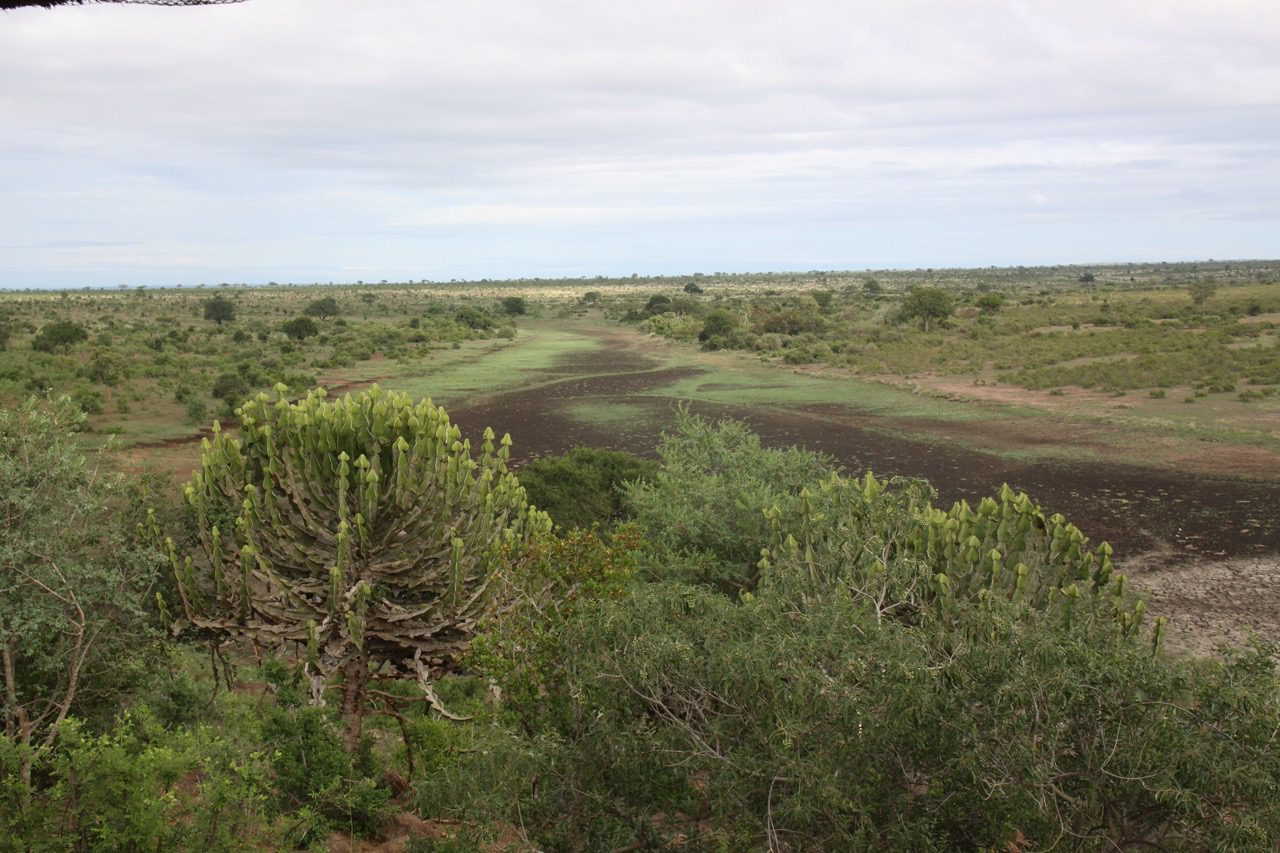
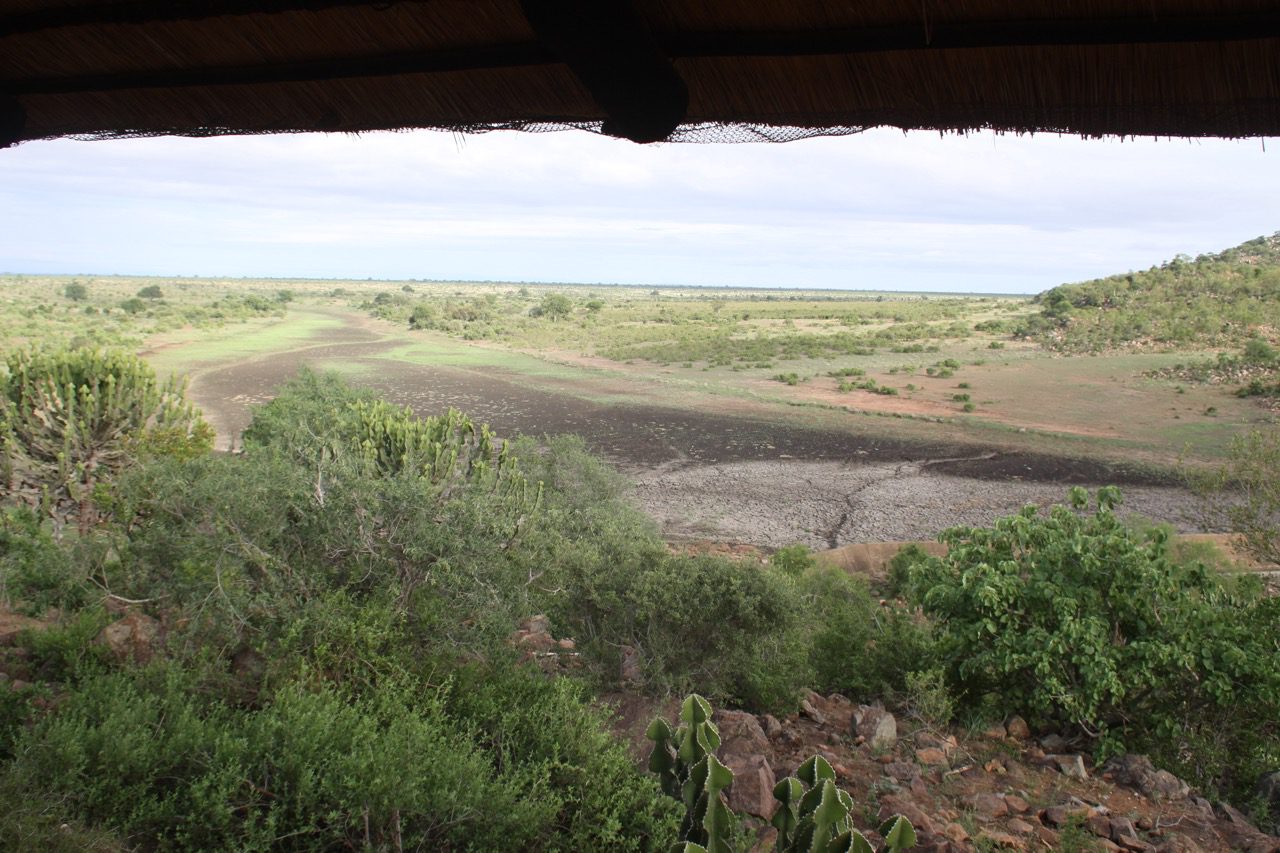
As we headed for the home straight towards Crocodile Bridge we came across these beauties with their curvaceous horns.
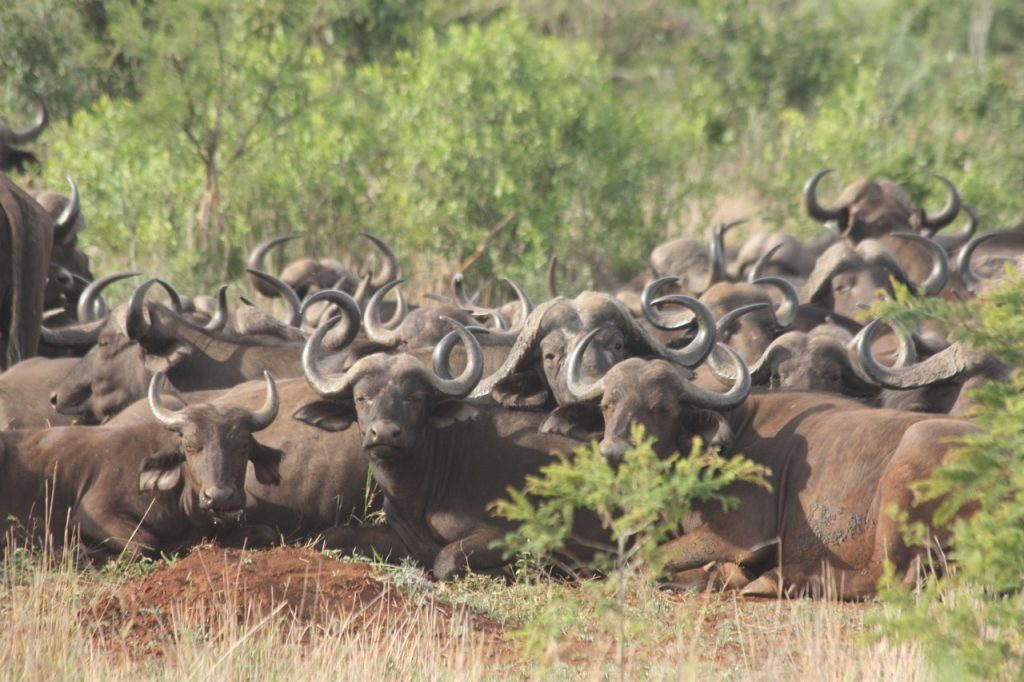
With heavy hearts we said our farewells at Croc Bridge Gate…we had enjoyed the most incredible 10 days with two of the most knowledgeable guides who were also incredibly lovely human beings with an absolute passion for what they do. Incredible senses of humour, formidable skills – we felt so fortunate to have made two new friends. We were sad but have already planned our get together dates for October 2016.
We were absolutely delighted that Jaco won Safari Guide of the Year shortly after our trip. Absolutely 100% the right choice – his knowledge, passion and commitment is inspirational. He always has a smile on his face and the bush means everything to him. Congratulations Jaco – well deserved!!
Now to end with an answer to the question posed at the very start of this TR journey:
KTP vs KNP?!
Well…that red sand has indeed bitten our toes and we have already extended our October trip for a week to include a few more days there… I am not sure that this is financially sustainable though!
Kgalagadi with its raw, red beauty…the thrill and adventure of driving on sand…the beauty of a desert storm … the fact that there were so few vehicles at sightings … the actual sightings themselves – of course Lady Luck is always involved at whichever Reserve you visit – but it is truly spectacular and feels so wild and remote. The cheetah evaded us in both KTP and KNP this year – but we are hoping for some luck in October! Definitely completely addicted and we will be regular visitors back to this wonderful place!
Kruger remains very dear to my heart. I have visited there with my Oupa and Granny on an annual basis since I was a very little girl…always staying at Pretorius Kop with them, then once I left home always staying at Berg en Dal as a young woman and over the last 27 years as a married mother we have been bringing our children since they were born and then purchasing time share at Ngwenya and then also buying a timeshare there for our son when he turned 21. We are all confirmed Kruger addicts. I love elephants so much and for that reason Kruger will remain top of my list as there is nothing better to just sit there with your engine off and watching their antics. Our best family friends have all joined us on so many memorable trips to KNP – so this is an incredibly special place filled with incredibly special memories with incredibly special people!
KNP North vs KNP South?
Again, the first 48 years of my life have been spent exploring the Southern regions of the Park – the northern most point we had visited before this trip was exiting through Orpen Gate to go on to Sabi Sands …discovering the North has been an absolute joy. So much quieter and when you do pass another vehicle it is like the old days in the South – people wave, stop, have a chat about sightings – good old comradeship. It also felt wilder – the elephants a little more feisty and even the antelope are more cautious – possibly as there are less vehicles. I must also acknowledge how very privileged we were to be visiting so many areas off the beaten track that are not generally accessible to the public and this may also enhance my awe of the North. …and not to forget those incredible boababs that make the north so special and remind you of its long history…We will definitely be heading that way again.
The South does hold a special place in my heart for all the same reasons as stated above – just our history with the place….however, it is very busy these days and this does detract from some sightings..it is so dreadful to have 10 cars at a sighting and half of them with their diesel engines running loudly and not obeying sightings etiquette … but we try and visit in quieter times and we tend to just drive on and find somewhere more peaceful if a sighting becomes too crowded / noisy – there is always another surprise around another corner!
So yes, preference is ingrained though habit I suppose but perhaps making new habits will influence new preferences?! Thank you for coming on our journey with us!

